
Blog
Pros and Cons of Renouncing U.S. Citizenship

October 26, 2024
You are a U.S. citizen, but you have a wanderlust that makes you want to explore the world beyond the American shores. You are tempted to cut the ties that bind you to the land of the free and the home of the brave. But is it worth it? What are the benefits and drawbacks of giving up your U.S. citizenship? How will it affect your life, your rights, and your obligations? These are the questions you need to ask yourself before you make such a drastic decision.
Renouncing U.S. citizenship is not a simple or easy process. It has legal, financial, and emotional implications that you need to consider carefully. To help you make an informed choice, we have compiled a list of the pros and cons of renouncing U.S. citizenship. Read on to find out more.
What does it mean to renounce citizenship?
Renouncing citizenship is a legal process where you voluntarily give up your U.S. citizenship and the rights and obligations that come with it. You are essentially renouncing your allegiance to the U.S. government and becoming a foreign national.
People may choose to renounce their citizenship for various reasons, such as tax issues, legal complexities, or personal preferences. However, renouncing citizenship is not a decision to be taken lightly. It has serious consequences and implications for your future.
For instance, you are not only giving up your U.S. citizenship, but also its rights and duties. You lose the benefits and protection of being a U.S. citizen, such as voting, holding office, or getting consular help. You may also face travel or tax issues.
Overall, once it's done, you're no longer bound by the laws and responsibilities of your former homeland. It's like officially moving on to a new chapter in life.
How do you renounce U.S. Citizenship?
Renouncing U.S. citizenship is a legal process that requires you to follow certain steps and procedures.
First, you have to be physically present in a foreign country, and you have to prove that you are not renouncing your citizenship for tax avoidance purposes.
Then, you have to contact the U.S. embassy or consulate in that country and request an appointment to renounce your citizenship.
You have to sign a Statement of Understanding, fill out Form DS-4079, and take an oath of renunciation in front of a U.S. diplomatic officer.
You are essentially terminating your relationship with the U.S. government. When the process is complete, you will receive a Certificate of Loss of Nationality.
However, renouncing your citizenship is not a quick or easy process. It may take several months or even years to finalize.
You also have to pay a renunciation fee of $2,350 to the U.S. government. Therefore, you should think carefully and consult a legal expert before you decide to renounce your citizenship.
What are the Pros of Renouncing the U.S. Citizenship?
Renouncing U.S. citizenship may have some benefits for certain people, depending on their personal, financial and other situation. Here are some of the potential benefits of renouncing U.S. citizenship.
Financial Liberation
Renouncing U.S. citizenship can save you money on taxes. The U.S. has a worldwide taxation system, so no matter where you reside you’ll have to pay income tax, even on non-U.S. income.
By disclaiming your citizenship, you can avoid this tax and keep more of your income. You also don’t have to pay taxes on your U.S. assets, like property or investments. This can be a big benefit if you earn a lot abroad.
However, financial freedom comes with responsibilities. You may have trouble accessing or managing your U.S. financial accounts and investments.
Some U.S. banks or brokers may not serve you or may ask for more requirements. You may also have to pay an exit tax or a renunciation fee to the U.S. government, depending on your income and assets.
You should talk to a tax expert before you renounce your citizenship.

Personal Autonomy and Privacy
After getting relief from tax-astrophy, you can gain more personal freedom and privacy. By giving up your U.S. citizenship, you can get free from the U.S. regulations and tax laws that may limit your choices and actions.
You can make financial decisions based on your own interests and goals, rather than tax consequences.
You can also protect your personal and financial information from the U.S. government agencies. You will no longer have to report your foreign bank accounts and assets to the U.S. authorities, such as the FBAR and FATCA.
You will also reduce the risk of being audited or investigated by the U.S. government, as a non-citizen.

Exploration Beyond Borders
The decision to renounce U.S. citizenship might come with some compelling benefits linked to worldwide exploration. First and foremost, it liberates you from the constraints of being tied to a single nation, allowing you to embrace a universal perspective.
And without allegiance to any specific country, travelers can navigate international borders with greater ease, avoiding several bureaucratic complications faced by U.S. citizens.
These benefits can lead you to have more immersive and extended stays in different countries, getting a deeper experience of cultures. Think of it as the golden ticket to your wanderlust soul.
So, if you've got a wanderlust that won't quit and dreams of living abroad, renouncing citizenship might just be your ticket to a borderless world of adventure and opportunity.
Reduced Legal Constraints
Now it comes down to unlocking the handcuffs of legal constraints and achieving greater autonomy in personal and professional lives. Renouncing citizenship is a surefire way to tone down your legal exposure to U.S. matters.
One of the basic benefits is cutting off the U.S. tax laws and reporting. Reduced legal constraints after renouncing can provide individuals with more autonomy.
It helps to structure their lives, finances, and business pursuits according to their preferences, free of the typically complex and strict legal constraints associated with U.S. citizenship.
And when it comes to reporting, renouncing means you can finally bid adieu to the never-ending paperwork and reporting requirements to U.S. legal authorities that had to be updated from time to time.

Securing Wealth and Assets
Securing your wealth and assets after renouncing U.S. citizenship is like putting them in a vault.
First off, it's all about asset confidentiality – you will have flexibility in structuring your wealth and assets in a way that shields them from legal liabilities and creditors. Your financial security gets an upgrade.
Plus, when it comes to estate planning, you've got more freedom to make choices without the heavy hand of U.S. regulations.
Renouncing can be applied to decrease or eliminate estate taxes in the United States, allowing individuals to leave most of their fortune to their successors or beneficiaries.
Expanding Personal Horizons
It also opens a door to a world of opportunities. You've got a ticket to global professional avenues without the headache of complex rules and regulations bounding you to a single nationality. It's like a green light for a career that knows no borders.
Renouncing U.S. citizenship often motivates people to explore exclusive opportunities for personal and professional development outside of their prior homeland's limits.
They can grow more inclined to form cross-cultural relationships, maybe through international business ventures, collaborations with people from various backgrounds, or involvement in international projects and causes.
So, consider professional advice to ensure you're on the right path to personal growth and success.
Cultural Immersion and Identity
Embracing cultural immersion and redefining your identity becomes a journey worth taking after renouncing U.S. citizenship.
Access to a deeper cultural involvement and understanding, it's like becoming a local in a foreign land, soaking up traditions and experiences.
As you can completely grasp the lifestyles, languages, and practices of your selected countries of residency, cultural immersion becomes more than a choice; it grows into a way of life.
People like these tend to be seen as true participants instead of as visitors, allowing for deeper and more lasting interactions with the local populations.
But, of course, it's a profound transformation that requires reflection and adaptation. So, if you're ready to dive into new cultures and explore a broader sense of self, renouncing citizenship might be your ticket to a richer, more worldly life.
What are the Cons of Renouncing the U.S. Citizenship?
Now renouncing the US citizenship can’t be all sunshine and rainbows. Let’s take a look at the downside you’ll face after renouncing.

Loss of U.S. Benefits
Renouncing U.S. citizenship will cut you off from various U.S. benefits and entitlements. It might mean waving farewell to Social Security benefits and Medicare coverage. Closing the door on some of the essential safety nets.
Plus, when it comes to government assistance, you might find yourself out of the loop for certain aid programs available exclusively to U.S. citizens. You have to make some alternate arrangements to keep up the healthcare coverage and retirement plans.
Tax Implications
When you renounce, it's not just a simple "see you later." There can be some serious tax implications.
They might want a piece of the pie as your exit tax, especially if you have substantial assets or if your average annual net income tax for the past five years is above a certain threshold. It's like a parting gift you didn't want.
The exit tax can get complex, and, in order to minimize the incidence of the exit tax, cautious tax preparation must be undertaken prior to renouncing your citizenship. This could require rearranging your assets or enlisting the assistance of a tax consultant.
Additionally, you might need to set up a tax residence in a different nation. Different nations' tax rules and regulations for residents differ. Make sure that you are aware of the tax ramifications in your new country of residency.
Impact on Family Connections
Renouncing your citizenship can also have ripple effects on family connections that are worth considering. It might strain communication with family members back in the U.S., making it more challenging to visit them - adding distance to already existing miles.
And when it comes to custody disputes, things can get even more complicated. you might find yourself in intricate legal battles if custody issues involve U.S. citizens.
So, while there are many aspects to weigh when deciding on renouncing citizenship, the impact on family ties is a significant factor to take into account.
Travel and Reentry Restrictions
If you renounce your citizenship, you’ll be considered a non-U.S. citizen and can be bound by visa restrictions while seeking to enter the United States. This can add complexity and perhaps restrict the frequency and length of visits.
Furthermore, after renouncing citizenship you might face increased scrutiny during the visa application process, and entrance into the United States is no longer guaranteed as it is for U.S. citizens.

Potential Business Opportunities
Renouncing U.S. citizenship can open doors to potential international business opportunities, but it also comes with a few setbacks. It might limit your involvement in certain U.S. business activities that are typically reserved for citizens.
Additionally, you might lose eligibility for investing in U.S. government contracts and taking part in related ventures.
However, don't let these restrictions discourage you. Renouncing citizenship can still pave the way for exciting business prospects, so it's all about weighing the pros and cons to find the right path for your entrepreneurial endeavors.
Uncertainties Amid Socio-Political Changes
Renouncing citizenship can bring uncertainties amidst socio-political changes that are important to consider.
When you renounce, you're saying goodbye to your voting rights and the ability to have a say in U.S. political decisions; stepping out of the conversation.
The global environment can evolve quickly, affecting your rights and benefits as a non-U.S. resident. Changes in immigration regulations, trade agreements, and diplomatic connections can all have an impact on the ease of travel, employment prospects, and legal rights in a new nation.
Also, the political situation in both your new residence and the United States might raise concerns about diplomatic difficulties, taxation agreements, and international legislation.
So, staying informed about potential socio-political shifts is crucial to navigating these uncertainties effectively.

Challenges of Dual Citizenship
Managing dual citizenship can be a bit of a tightrope walk when renouncing U.S. citizenship. While several nations permit dual citizenship, the United States government typically opposes it.
If you have dual citizenship, you may face complications with tax reporting, financial rules, and legal duties.
To prevent potential difficulties, you must carefully manage your dual citizenship status, especially if your new nation of citizenship imposes obligations that clash with U.S. rules.
And, of course, there's the whole identity thing to ponder. You might find yourself wrestling with questions about where you truly belong after making the choice to renounce U.S. citizenship, like a puzzle with missing pieces.
Estate and Inheritance Implications
And when it comes to estate and inheritance after saying goodbye to U.S. citizenship, there are some key points to consider.
Renouncing citizenship might mean your estate faces higher U.S. estate taxes when you pass away. A surprise bill that you didn't see coming.
Plus, you might run into some complications related to U.S. inheritance laws, potentially shaking up how your assets are divided up among your heirs.
So, while renouncing citizenship can offer various benefits, be sure to factor in these estate and inheritance implications to make informed decisions for your financial future and your loved ones.
Conclusion
So, when considering this big decision, remember that it's a deeply individual choice, and weighing these factors is crucial to making the right call for your unique circumstances and aspirations. And if you need any expert help regarding renouncing U.S. citizenship, Trip Law's got your back. We'll make sure your submission is on point, so no mess-ups or hold-ups.
Got more questions or thoughts? Drop them in the comments – we're all ears. And if you need more legal assistance down the road, don't hesitate to hit up. We're here to make your journey smoother than a fresh highway.

I have met many professionals sitting across my desk at TripLaw with a mix of pride and worry in their eyes. They finally made it, the long journey from H-1B holder to green card is almost over. Yet the moment relief sets in, another question surfaces: what happens to my spouse and children on H-4 when I become a permanent resident?
I have seen this moment unfold countless times, and it never feels routine. The joy of achieving lawful permanent residency often comes with questions about family status. It is the kind of situation that demands a legal answer and clarity before the clock runs out.
Because when your H-1B becomes a green card, your dependents' legal status changes as well. And if you are not prepared for that moment, even success can come with a risk you did not see coming.
1. The Fragile Link Between H-1B and H-4
Every immigration story begins with connection, and in this case, that connection is legal as much as it is personal. The H-4 visa lives and breathes through the H-1B holder’s status.
When your H-1B status ends, your family’s H-4 status ends with it. It sounds simple, almost mechanical, yet in my years at TripLaw I have seen how much uncertainty hides inside that single rule.
Most families imagine the green card process as a steady climb, a smooth transition from one secure footing to the next. In truth, it feels more like a bridge that begins to shift as you walk across it.
When your H-1B evolves into permanent residency, the H-4 can no longer exist in its shadow. That is when timing and preparation become everything.
I have seen families lose sleep over a few days’ gap in status, not because they did anything wrong but rather because the system moves in separate tracks for each person.
The H-1B holder reaches the finish line first, yet the family may still be waiting in the queue. Those waiting days matter. They decide whether your dependents remain in lawful status or must rely on pending green card applications to stay in the country.
It is in that window between approval and adjustment that the real anxiety sets in. And as I often tell my clients, what feels like a pause is actually the most critical step of all, the moment to secure your family’s future before the law catches up to your success.
2. When You Transition from H-1B to a Green Card Approved Before Your Dependents

Once your green card is approved, your H-1B status ends that very day. It is a moment of celebration, yet for your dependents, it creates an invisible shift that few notice until it matters. Their H-4 status, which once depended entirely on your H-1B, no longer has a legal basis to stand on.
I often tell my clients that the moment your status changes, your dependents must have a bridge of their own—most often through pending I-485 applications.
Those filings give them lawful presence and protection while their own green cards are processed. Without them, they risk falling out of status even while living under the same roof as a permanent resident.
I've seen how minor delays can turn into months of stress. Families call in panic after receiving approval notices that should have brought only joy.
The law rewards reaction; therefore, filing adjustment applications for dependents at the same time as the primary applicant can prevent that gap from ever appearing.
In many ways, this is where experience matters most, and from my experience, I would say timing is not just a legal detail; it is an act of care. Because behind every green card approval is a family trying to stay together, and the law, as I have learned over the years, respects precision far more than luck.
3. What Your Dependents Should Do Next
When a client reaches this stage, I tell them that immigration law is like a chess game played with time. Every move must protect both the next step as well as everyone standing beside you.
Your dependents have several ways to maintain lawful status while their green cards are still pending. Each path carries its own rhythm, and choosing the right one depends on how your family’s journey unfolds.
Here is how I guide my clients through that moment:
File their I-485 applications early. When possible, I submit the entire family’s adjustment of status together. It keeps everyone on the same legal footing and eliminates uncertainty about the end of H-4 status.
Apply for advance parole. This travel document lets dependents re-enter the U.S. safely while their green cards are still processing. Without it, even a short trip abroad can undo months of progress.
Secure an EAD (Employment Authorization Document). For many spouses, this step is life-changing. It allows them to work freely while waiting for their permanent residency, turning a stressful wait into a period of independence.
If they are abroad, plan for consular processing. When family members live outside the U.S., their cases move through the embassy. I coordinate these timelines carefully so no one is left stranded between approvals.
Each of these steps sounds procedural on paper, yet in practice, they shape how a family lives, works, and plans their days. Immigration law is not just about forms; it is about foresight. When done correctly, it lets a family step into permanent residency without missing a single heartbeat of stability.
And every time I watch a client walk in with a stack of approval notices, I am reminded why planning early matters. Paperwork can be replaced, peace of mind cannot.
4. What to Do If Your Dependents Are Outside the U.S.

Some of the most delicate cases I handle at TripLaw involve families separated by borders while their green cards are in process. When dependents are living abroad, their path does not move through adjustment of status, instead it moves through consular processing. It is the same goal, reached by a different road.
Consular processing begins once your own green card is approved and your family’s immigrant petitions are ready. I always tell my clients the embassy, the National Visa Center, and your family must all move in sync. Any delay in one part of that system can leave your dependents waiting months longer than expected.
This is why I prepare the paperwork early, often before the principal’s approval notice even arrives. A well-timed submission means your spouse and children can attend their visa interviews shortly after your green card is granted.
They can enter the U.S. as permanent residents instead of returning to expired H-4 status. Timing, once again, decides whether a family reunites quickly or watches from a distance while the law catches up.
What I have learned from these cases is that distance sharpens awareness. Every signature, every date, every document matters more when someone you love is waiting on the other side of the world. The law may be rigid, yet preparation creates space for grace.
5. Holding the Family Line

The move from H-1B to green card is not just a personal milestone, it reshapes your family’s legal footing. Once your status changes, your dependents’ protection must shift with it. In my years at TripLaw, I have learned that this stage rewards planning, not panic. Filing dependent applications early and coordinating consular steps in advance keeps your family steady while the law adjusts around them.
Every green card story is really a family story. The system can be slow, but preparation turns delay into security. If you are nearing approval and want to safeguard your dependents’ transition, reach out to TripLaw. My role is to make that legal bridge as steady as the home you are building together.
FAQs
Q: Does my spouse have to renew H-4 status when I change H-1B employer?
Yes, your spouse must file to extend or amend H-4 status whenever your H-1B changes employers.
Q: How long does a child of an H-1B visa holder be on an H-4 visa?
A child can stay on an H-4 visa until turning 21, after which they must change status.
Q: Can an H-4 visa holder apply for a green card?
Yes, H-4 dependents can apply as derivative beneficiaries when the H-1B holder files for a green card.
Q: Can H-4 dependents work without EAD?
No, H-4 dependents need an Employment Authorization Document (EAD) to work legally in the U.S.

The benefits of naturalized vs. born USA citizenship often stir more confusion than they should. As an immigration lawyer, I have spent years guiding clients through the process of becoming U.S. citizens, and one question surfaces again and again: Are naturalized citizens truly equal to those born in the United States?
In law, the answer seems straightforward, yet in practice, subtle distinctions can shape how citizenship feels and functions. The rights appear identical, however, the paths that lead to them tell two very different stories. And it is in those quiet differences, often overlooked, where the real meaning of citizenship begins to unfold.
1. Legal Differences Between Naturalized and U.S.-Born Citizens
The law treats both naturalized vs. born USA citizenship as equals, yet the path to citizenship and a few technical details set them apart. Understanding these distinctions helps clarify what naturalization citizenship really means.
Acquiring Citizenship
A U.S.-born citizen automatically obtains citizenship at birth, either by being born on U.S. soil or to American parents abroad. A naturalized citizen earns citizenship after completing the requirements for U.S. citizenship, including residency, language proficiency, civics testing, and an oath of allegiance.
In legal terms, citizenship by naturalization meaning refers to the voluntary process through which an immigrant becomes a U.S. citizen. This distinction is procedural rather than personal. Once the process is complete, both citizens stand on the same legal ground.
Eligibility and Requirements
Naturalization has formal requirements for United States citizenship such as continuous residence for at least five years (or three for those married to U.S. citizens), proof of good moral character, and basic English and civics knowledge.
By contrast, American citizen requirements by birth involve none of these steps. Birth on U.S. soil or to U.S. citizens automatically satisfies every legal condition. For those beginning as permanent residents, these steps form the bridge between green card vs. citizenship one being permission to stay, the other belonging for life.
Presidential Eligibility
Only those who are citizens by birth can run for President or Vice President under the U.S. Constitution’s natural-born clause. A naturalized citizen, no matter how long they have lived in the country, cannot hold these offices. very other political, civil, and professional opportunity remains fully open to naturalized citizens.
Citizenship Documents
People born in the United States prove their citizenship with a birth certificate. Naturalized citizens show a certificate of naturalization, and those who become citizens through their parents have a certificate of citizenship. All three documents hold the same legal weight, but each tells a different story of how someone belongs.
In the end, what does naturalized citizen mean simply describes a citizen who chose the United States through law and effort, rather than by birth. The process may differ, however, the destination of full and permanent U.S. citizenship remains the same.
2. Benefits of Naturalization Citizenship vs. Born U.S. Citizen

When clients ask whether a naturalized citizen is “less American,” I always start here. In the eyes of the law, citizenship is absolute. Whether your journey began in another country or in a U.S. hospital room, the rights you hold are almost entirely the same. What differs is the story behind how you earned them.
Voting
For both naturalized and U.S.-born citizens, the right to vote is identical and absolute. You can cast your ballot in every federal, state, and local election. For many naturalized citizens, voting in their first election is more than a civic act, it is a declaration of belonging. I have watched clients walk out of polling stations with tears in their eyes, holding that first “I Voted” sticker like a passport to identity.
Federal Jobs
Both naturalized and native-born citizens can hold federal employment and compete for most government positions. Only a narrow category of jobs tied to national security such as the presidency or certain intelligence roles require U.S. birth. In reality, the federal workforce does not distinguish between how one’s citizenship began, only that it is secure.
Deportation Protection
Citizenship is the ultimate legal shield, because once granted, neither naturalized nor U.S.-born citizens can be deported. The only exception arises from fraud in the naturalization process, a circumstance so rare that most attorneys never encounter it firsthand. For clients who once lived under the shadow of visa expiration or removal proceedings, this protection often marks the first time they can plan their lives without fear.
Family Sponsorship
Both naturalized and born citizens can petition for close relatives including parents, adult children, and siblings to immigrate and obtain green cards. The process follows the same legal pathway for both groups.
In practice, I have seen naturalized clients use this power to sponsor families back together after years apart. That ability, to turn separation into reunion, is often what makes citizenship feel complete.
U.S. Passport
Once naturalized, you can apply for a U.S. passport identical in rights and appearance to that of a citizen born in the country. It grants visa-free or visa-on-arrival access to more than 180 nations and the full protection of U.S. embassies worldwide. For those who once needed multiple visas just to travel for work or family emergencies, this small blue booklet can feel like the final symbol of freedom.
Federal Benefits
Both groups are eligible for federal scholarships, grants, and safety-net programs such as Social Security, Medicare, and federal student aid. The law draws no line between naturalized and native-born citizens in these areas. The same social safety structure protects both. For many immigrants, this is not simply financial support but proof that their contributions now flow both ways they give and they receive as equals.
Citizenship for Children
Naturalized citizens can pass citizenship to children born abroad, provided they meet U.S. residency requirements before the child’s birth. For U.S.-born citizens, children born within the country are automatically granted citizenship under the 14th Amendment. These rules remind us that citizenship, while deeply personal, also shapes generations to come. It defines where a family’s story will continue to unfold.
3. Common Myths About Naturalization
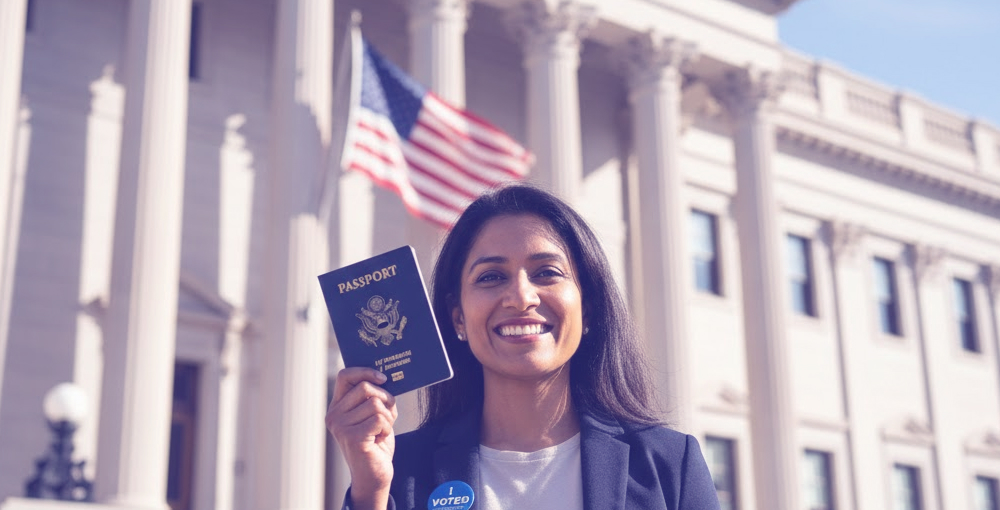
Even after becoming a U.S. citizen, many people remain uncertain or even suspicious about what naturalized citizenship truly entails. Clearing up these misconceptions helps applicants navigate the requirements for U.S. citizenship and understand their rights.
Rights and Privileges
Myth: Naturalized citizens have fewer rights than native-born citizens.
Fact: Once you become a naturalized citizen, you enjoy the same rights as U.S.-born citizens, including the ability to vote in all elections, hold federal jobs, and obtain a U.S. passport. You are equally protected under the law.
The Naturalization Process
Myth: Naturalization is automatic once you meet the requirements.
Fact: Naturalization citizenship requires a formal process, including filing an application, completing an interview, and passing English and civics tests. Most applicants pass with preparation, answering 6 out of 10 questions correctly from a pool of 100.
Myth: You only need a lawyer if denied.
Fact: Hiring an immigration lawyer helps navigate the complexities of the process, avoiding delays, ensuring accuracy, and increasing your chances of approval.
Losing Citizenship
Myth: Minor legal issues, visa overstays, or criticizing the government can lead to denaturalization.
Fact: Denaturalization is extremely rare and occurs almost exclusively if citizenship was obtained through fraud or concealment of material facts. Minor infractions or exercising free speech do not threaten your citizenship.Myth: Committing a crime after naturalization can result in deportation.
Fact: Once you are a naturalized citizen, you cannot be deported for crimes committed after becoming a U.S. citizen, though criminal prosecution still applies.
Other Misconceptions
Myth: All naturalized citizens must give up their original citizenship.
Fact: Many countries allow dual citizenship, so this depends on your country of origin.
Myth: Naturalization is only for highly educated or skilled individuals.
Fact: Naturalization focuses on residency, good moral character, and English proficiency, not just education or professional skills.
By addressing these misconceptions, you can better understand what is a naturalized citizen and how the requirements for United States citizenship work in practice.
Secure Your U.S. Citizenship

Whether through birth or naturalization, U.S. citizenship provides full rights, protections, and opportunities. Naturalized citizens enjoy nearly all the same privileges as native-born citizens, including voting in elections, applying for federal jobs, sponsoring family members, and obtaining a U.S. passport. Citizenship also opens doors to greater stability, travel freedom, and access to government benefits.
I guide clients through every step of the naturalization process, from completing paperwork to preparing for the civics and English requirements, ensuring they meet all legal obligations and confidently secure their place as full American citizens. If you are ready to take the next step, contact us today to start your path to citizenship and make the process as smooth and successful as possible.

Criminal convictions and their hidden consequences are something many immigrants do not fully grasp until it is too late. From my years practicing immigration law, I have seen clients walk into my office confident that a minor mistake years ago would never touch their status, only to discover that their past can quietly, relentlessly, put them at risk of deportation. The law does not forgive simply because time has passed, and not every misdemeanor is as minor as it seems on paper, leaving families shaken, futures uncertain, and hard-earned dreams hanging by a thread.
What often surprises people is how easily a single conviction can trigger a chain of consequences that they never saw coming, leaving families, careers, and futures hanging in the balance. And yet, there is a pattern to these risks, it can sometimes be anticipated, mitigated, or even avoided. The question is, which past convictions significantly increase the risk of deportation, and which are unlikely to trigger serious consequences?
1. Which Past Convictions Can Get You Deported?
When it comes to criminal convictions and immigration consequences, not all offenses are treated equally. The law has specific categories that automatically raise red flags, and knowing these distinctions can be the difference between staying and facing removal.
Aggravated felonies: These are the most serious offenses under immigration law, ranging from murder and rape to certain drug trafficking and theft crimes. A conviction in this category can make deportation almost automatic, leaving very little room for discretion.
I have had clients who assumed a decade-old theft would be minor, only to find it classified as aggravated because of how the sentence was structured.
Crimes involving moral turpitude (CIMT): This category is less precise yet equally impactful. It covers acts that are inherently dishonest, fraudulent, or morally wrong. Even misdemeanors can fall here, and for many clients, this is where surprises emerge. A seemingly minor fraud charge or even certain assault cases can count.
Controlled substance offenses: Immigration law treats drug-related convictions seriously, often without leniency. Even possession or distribution charges can trigger deportation risk, depending on the circumstances. I have seen cases where a first-time offense years ago created complications in green card renewals or naturalization applications.
Multiple or repeated offenses: Even if a single crime might be minor, repeated violations signal a pattern that immigration officials view as dangerous, making it harder to qualify for relief.
Later, we will explore available options and how careful planning can help, though the risks are real and the clock starts ticking the moment a conviction exists.
2. How Your Immigration Status and Conviction Timing Affect Deportation Risk

In immigration law, a single conviction can have very different consequences depending on when it occurred and the individual’s status or position within the immigration system. I have represented clients who believed that the passage of time would erase the danger. Unfortunately, the law often remembers far longer than people expect.
For those with lawful permanent residence, the green card is not the shield many think it is. A permanent resident can still be placed in removal proceedings for certain offenses, sometimes years after the conviction. I have seen clients blindsided during citizenship applications, when an old record suddenly resurfaced as grounds for deportation.
The timing of the offense also changes the playing field. A single conviction committed soon after entering the United States might weigh more heavily than one that occurred decades later, especially if there is no evidence of rehabilitation. Immigration judges are required to look at patterns, not just isolated mistakes, and the closer a crime appears to a person’s arrival, the more it can undermine their case.
For those without permanent status, the risks escalate quickly. Students, visitors, asylum seekers, and undocumented immigrants have far fewer protections, and a single conviction can close doors before they were ever fully open. What looks like a chance to rebuild can vanish instantly with the wrong entry
The intersection of time and status is where many clients misunderstand the law most deeply, and it is often here that their cases take unexpected turns. The past may feel distant to them, however, immigration law is designed to carry it forward into every application, renewal, or appeal. The result is that people rarely realize how much weight an old conviction still carries until the system reminds them.
3. Can You Avoid Removal After a Past Conviction?
When clients come to me after a conviction, their first question is almost always the same: “Is there any way out of this?” The answer depends on the offense, the timing, and the individual’s broader history. Immigration law offers forms of relief, however, not all doors remain open after certain past convictions.
Waivers of inadmissibility: For some offenses, a waiver can provide a legal pathway to remain in the United States or to secure a visa or green card. These waivers often hinge on proving hardship to a U.S. citizen or lawful permanent resident family member. In my practice, I have seen waivers granted when clients could show compelling family ties and rehabilitation.
Post-conviction relief: Sometimes, the only way forward is to return to the criminal court. If a conviction is vacated because of a legal or procedural flaw, it may no longer count against you in immigration proceedings. However, expungements for rehabilitative purposes rarely erase the immigration consequences. This is where legal strategy must be precise.
Discretionary relief from judges: In removal proceedings, immigration judges may weigh positive factors against a criminal record. Long-term residence, evidence of rehabilitation, military service, or contributions to the community can tip the balance in close cases.
Cancellation of removal: For some permanent residents and non-permanent residents, cancellation of removal is a potential defense, yet eligibility is tightly limited. Aggravated felonies often make this form of relief impossible.
Asylum or withholding of removal: In rare cases, fear of persecution in the home country may still provide a defense, although certain serious criminal convictions disqualify applicants.
In the next section, I will walk through the hidden risks and misconceptions that often blindside immigrants who think their past convictions have been safely buried in the past.
4. What Most People Get Wrong About Past Convictions and Removal

In my work, I find that the greatest dangers are not always the most obvious ones. Old convictions, minor misdemeanors, and even sealed records can still resurface in immigration proceedings. Many clients believe that if a case is behind them it is no longer relevant, yet immigration law does not always see it that way.
Plea deals can backfire because a bargain made in criminal court to avoid jail time may still count as a conviction for immigration purposes, even if the sentence was minimal. I have seen people blindsided by this when they assumed they had escaped consequences entirely.
Another misconception is that expunged or dismissed cases are automatically safe. Immigration law often treats these as valid criminal convictions unless they were overturned due to a legal defect. This means that what looks like a clean record in one system may still trigger deportation risk in another.
Lastly, many underestimate how a single misdemeanor can carry more weight than expected. What seems small in criminal court may be classified as a crime involving moral turpitude or even an aggravated felony under immigration statutes. These definitions rarely match the way state courts view the same offense.
5. The Real Impact of Deportation on Families and Communities
Behind every statute and ruling is a life that changes course. A single conviction can unravel years of stability, tearing families apart and disrupting communities that rely on those who suddenly face deportation. I have sat with clients who built careers, raised children, and contributed to their neighborhoods, only to see everything threatened because of a mistake made long ago.
The emotional toll is as heavy as the legal one. Fear of detention, separation from loved ones, and uncertainty about the future weigh on families every day while proceedings drag on. Even when relief is possible, the process is slow, expensive, and deeply stressful.
6. Getting Legal Help to Fight Deportation

For those burdened by past convictions, the path forward can feel uncertain, yet options for relief or resolution often still exist. My work has shown me that careful legal strategy can make the difference between removal and relief, between a life uprooted and a future protected.
Every case begins with understanding the conviction, the timing, and the status of the individual, then mapping those details against the narrow yet vital forms of relief the law allows. The role of an immigration lawyer is not simply to interpret statutes, however, to anticipate risks and protect opportunities that clients often cannot see on their own.
I guide people through the maze of waivers, post-conviction remedies, and discretionary defenses, while also helping them face the emotional toll that comes with the process. The law may be rigid, yet strategy and preparation create openings where none seem to exist. If you or someone you know is carrying this burden, reach out to TripLaw today to schedule a consultation and start exploring your options.

Waivers and relief from removal are what people come to me for when they face inadmissibility or a past removal order. If you are searching for answers on how to stay in the U.S., the forms you are likely hearing about are I-601, I-212, and I-601A.
In short, I-601 helps with general inadmissibility issues, I-212 gives permission to reenter after removal, and I-601A is a provisional waiver for unlawful presence before leaving the U.S.
Many people think these forms are confusing or impossible to handle. I’ll discuss exactly who qualifies for each and how to approach them and share strategies that can make a real difference in your case.
1) When You Need Waivers
When I council with clients, one of the first things I do is explain inadmissibility in simple terms. Inadmissibility means the law says you are not allowed to enter or remain in the U.S. because certain legal “bars” apply.
These bars are triggered by specific actions or circumstances. If one of them applies to you, it doesn’t mean the end of your immigration path. However, it means you might need a waiver (one of the forms we discussed) to move ahead.
Here are the common scenarios I see in my work that can make someone inadmissible:
Unlawful presence: Staying in the U.S. without legal authorization or beyond your allowed period. (If you remain without status, you may face 3-year or 10-year bars when you depart.) as per the United States Citizenship and Immigration Services.
Prior removal or deportation: If you have been ordered removed or you left under removal proceedings, that fact can make you inadmissible to come back unless you get permission.
Criminal history : Certain crimes or convictions, even ones some people think are “minor,” can trigger inadmissibility.
Fraud or misrepresentation : Knowingly lying or hiding facts to secure an immigration benefit is a serious ground of inadmissibility. Not all mistakes count, but willful misrepresentation often does.
These are just the most frequent triggers; there are other grounds (health, security, public charge, etc.). However, in my practice the four above are what I deal with most. I often see clients who are unsure which waiver applies to them.
When that happens, here’s how I walk them through it:
Find the exact ground of inadmissibility. We ask detailed questions to pinpoint why the person is inadmissible (is it unlawful presence, or a criminal record, or prior removal?).
Check eligibility by form. Once I know the objection ground, I see which waiver form (I-601, I-212, or I-601A) can legally overcome that specific ground.
Map out the strategy. Sometimes you need more than one waiver, or you need to prepare strong evidence ahead of filing.
Explain risks and consequences. I make sure clients understand the risks of misfiling, missing evidence, or underestimating how strict the standards are.
Because many people think these rules are confusing or contradictory yet want to stay in the U.S., my job is to make them clear, to find the path that fits your situation, and to prepare your case so it has the strongest chance of success.
2) Waiver for Certain Grounds of Inadmissibility (Form I-601)

When someone tells me, “I was found inadmissible,” that is often where I-601 becomes essential. This form is your tool to ask USCIS (or a consular officer) to forgive certain legal barriers so you can continue your path toward lawful status.
What I-601 Covers and Who Can Use It
You must file I-601 when your inadmissibility is due to things like a criminal record, misrepresentation, certain health issues, or past unlawful presence that triggers the 3- or 10-year bar, according to United States Citizenship and Immigration Services.
You can use this waiver whether you are inside the U.S. applying for adjustment of status or abroad after a visa denial.
Not every visa category allows a waiver of every inadmissibility ground. You must check whether your situation (visa type, reason for inadmissibility) is eligible.
In my practice, I've had cases where people assumed their ground could be waived, only to learn later that a different waiver (or no waiver) was the correct path. The first step is always matching your inadmissibility grounds to the proper waiver.
One condition I always emphasize to clients is that I-601 nearly always demands you prove extreme hardship to a “qualifying relative.” That is, typically your U.S. citizen or lawful permanent resident spouse or parent.
In my cases, I help clients build that argument with:
Medical needs or psychological conditions that cannot be addressed abroad
Significant loss of income or life opportunities
Effects on children’s well-being and education
Country conditions (e.g., violence, lack of medical care) that make relocation risky
Because “extreme hardship” is subjective, how you frame your story, the quality of supporting documents, and how you connect your situation to the legal standard make a big difference. Processing time for I-601 typically runs 12 to 18 months, though it can stretch longer depending on the USCIS service center and their workload, and also if the case is really complicated.
An approved waiver only applies to the specific grounds and events you listed in your application. If later you are found inadmissible for another reason (not covered in the waiver), you may need a new waiver.
When I prepare an I-601 for a client, I make sure to anticipate issues. Whether all relevant grounds are included, whether extreme hardship is well established, and whether we’re filing the correct edition.
Common Pitfalls I Warn Clients About:
Incomplete or weak evidence on hardship.
Leaving out the consular inadmissibility decision or record, if you’re applying after a visa denial.
Underestimating how USCIS scrutinizes criminal or misrepresentation waivers.
Not clearly tying your spouse’s or parent’s hardship to your waiver request.
Failing to check whether your visa category allows the waiver you are seeking.
3) Permission to Reapply After Removal (Form I-212)

If you have been removed, deported, or left the U.S. under an outstanding removal order, I-212 becomes your “permission to reapply.” It does not erase the removal itself; rather, it asks the Department of Homeland Security to let you try to enter again despite the past removal order.
You may wonder who needs I-212. In my practice, I often recommend I-212 in the following scenarios:
You have had a formal removal or deportation proceeding against you under INA § 212(a)(9)(A) or (C).
You departed the U.S. while a removal or deportation order was still active.
You have already served the bar period (for example, 5, 10, or 20 years depending on the case) but still need DHS consent to reapply.
You plan to apply for an immigrant visa or adjustment of status, and you must submit I-212 (often along with I-601) before a consular officer or DHS will admit you.
One thing I warn clients is do not try to reenter the U.S. without an approved I-212 when you are required to have one. According to the U.S. Citizenship and Immigration Services, that can trigger automatic bars, reinstatement of removal orders, or even criminal liability.
Here are the rules I keep top of mind when preparing an I-212:
Discretionary Relief. Approval of I-212 is discretionary. I often see clients unsure about whether they even need it. The truth is, approval is discretionary. Even if you meet the eligibility requirements, immigration officers will look at your entire history.
Whether you followed previous orders, your ties to family in the U.S., and any past issues that might affect your case. That’s why preparing the application carefully matters more than simply filling out the form.
Risk of Reentry Without Approval. Returning without DHS consent can lead to consequences. Reinstatement of your prior removal order under INA § 241(a)(5), criminal penalties under § 276, or being permanently barred under § 212(a)(9)(C).
When handling an I-212 application and building a strong I-212 case, here are the strategic actions I take that many may overlook:
Emphasize rehabilitation if you have past issues, including evidence of good conduct, community ties, or positive change.
Show your connection to U.S. family or community. I often present how your absence causes hardship.
Address risk factors head-on (e.g., criminal history or past immigration violations) with clear explanations and mitigating evidence.
Check overlap with I-601 or other forms, as sometimes multiple waivers are required.
To avoid surprises, verify your removal record, departures, and whether any other inadmissibility grounds apply.
In recent quarters, the agency has removed hundreds of thousands of noncitizens, some of whom fall under the category of high-profile removals, according to Immigration and Customs Enforcement. That means many people need I-212 to try again, even with past removal history.
4) Provisional Unlawful Presence Waiver (Form I-601A)
When clients tell me they fear years of separation from their families abroad, I guide them through Form I-601A, the provisional unlawful presence waiver. This process helps them minimize time outside the U.S. Form I-601A was designed to ease the hardship many families face when a loved one must leave the U.S. to correct their immigration status.
Normally, anyone who has stayed in the country unlawfully for more than 180 days faces a three- or ten-year ban from reentry after departure. With the I-601A, eligible applicants can apply for a waiver before leaving the U.S.
This is a decision to be made while they remain here. This process helps families stay together, reducing both the separation time and the uncertainty that often comes with immigration procedures.
Who Can Qualify For Form I-601A
I often meet clients who are unsure if they even qualify. Here’s how I help them sort it out. You may be eligible if you:
Are physically present in the U.S. at the time of filing and complete biometrics.
Are at least 17 years old.
Have an approved immigrant visa petition (I-130, I-140, or Diversity Visa) and have paid the visa processing fee.
Are inadmissible only due to unlawful presence.
Can prove that denial of your entry would cause extreme hardship to your U.S. citizen or lawful permanent resident spouse or parent.
Each case requires a detailed review. I take time to ensure clients don’t unknowingly disqualify themselves, because missing one small detail can result in a long and painful separation.
While I-601A is powerful, it is also limited. It only waives unlawful presence, not other issues such as fraud, criminal history, or health-related grounds. Even with approval, you still must leave the U.S. for your consular interview, and the waiver only takes effect once you depart. If new grounds of inadmissibility arise at that stage, this waiver won’t protect you.
5) Choosing the Right Waiver

When families come to me unsure of where to begin, I see the same mix of fear and hope. The right waiver can be the difference between staying together or facing years apart. Choosing one is the strategy, and it starts with understanding the story behind the case.
I begin by looking at the full picture of a client’s situation. Sometimes the challenge is unlawful presence; other times it’s a prior removal or a past issue that complicates eligibility.
Here’s how we guide clients through the process:
Identify the core issue. I examine every detail to pinpoint what caused inadmissibility, not just what appears on paper.
Match the form to the situation. Usually, Form I‑601A addresses unlawful presence while keeping families together. Form I‑601 handles criminal or fraud-related grounds.
Form I‑212 seeks permission to reapply after a prior removal.Plan timing carefully. Filing, interviews, and travel must fit family and work commitments to avoid unnecessary delays.
Build a strong narrative. I focus on hardship, family impact, and rehabilitation to give decision-makers a clear picture of why the waiver should be approved.
Waiting can close opportunities. Timing now can make all the difference.
Your Ally When the System Says No
If you are facing inadmissibility, prior removal, or complex immigration hurdles, the first step is knowing your options. From there, it’s a journey we take together toward a future where legal obstacles no longer define your life.
Don’t wait until it’s too late. Reach out for personalized guidance and take the first step toward securing your stay, protecting your family, and facing immigration challenges with confidence.

Notice to Appear (NTA). Three words that can overturn someone’s entire sense of stability, a phrase I have heard far too often in my years as an immigration lawyer with TripLaw. A client walks into my office holding a thin envelope, uncertain what it means or how to face it, unaware that this single document signals the beginning of removal proceedings. The Notice to Appear is basically a formal summons that can determine whether someone remains in the United States or is ordered to leave.
Many believe it is just another piece of paperwork until they learn that it marks the government’s first move in a process capable of reshaping their lives and families forever. I have seen that moment of realization in their eyes when they understand that this notice is not the end of their stay, rather the start of a legal battle for their right to remain. And what happens next, I have learned through every case, depends entirely on how one responds in the moments that follow.
1) What a Notice to Appear Really Means
An NTA is the official start of immigration court proceedings. Once issued by the Department of Homeland Security, it transitions the case into the legal system overseen by the Executive Office for Immigration Review. Every word matters because it shapes how the government perceives the individual and determines which laws it considers have been violated.
When I examine an NTA, I approach it like a detective. Each detail, from dates to codes, carries significance. Even a small inconsistency can shift the legal direction of the case.
An NTA usually includes:
Personal information, such as the individual’s name, Alien Registration Number, and country of origin.
Legal grounds for removal, referencing specific sections of the Immigration and Nationality Act.
Factual allegations, describing the government’s version of what occurred.
Details of the first hearing, including time and location before the immigration judge.
I have encountered NTAs that list incorrect entry dates or even addresses where my clients never lived. Errors like these can open the door for procedural defenses in court. The Department of Justice explains that an NTA formally begins removal proceedings once it is filed with the immigration court and properly served on the person involved (U.S. Department of Justice, Executive Office for Immigration Review, Immigration Court Practice Manual).
Understanding what the NTA contains is the first step. The next question is always “Why was it issued in the first place?”
2) Common Triggers Behind NTAs

An NTA rarely appears without a cause. It is the result of specific actions, oversights, or system triggers that alert immigration authorities. Through years of practice, I have noticed a pattern of recurring situations that frequently lead to these notices.
Visa Overstay or Violation
This is one of the most common reasons: a person enters the United States with a valid visa, overstays the authorized period, and assumes that no one will notice. That assumption is costly. U.S. Customs and Border Protection tracks entries and exits digitally, and once a stay expires, the system records the overstay. In many cases, that data later triggers a Notice to Appear.
Entry Without Inspection
Crossing the border without inspection, even if it occurred in the past, remains a matter of official record. During a background investigation, an application review, or a routine law enforcement encounter, such an entry may be discovered, potentially prompting the Department of Homeland Security to issue a Notice to Appear.”
Criminal Charges or Convictions
Some clients are surprised to learn that even state-level misdemeanors can escalate into federal immigration concerns. Certain offenses like theft, domestic violence, or drug possession are classified under immigration law as deportable. Once these convictions appear in national databases, they often prompt removal proceedings.
Denied Immigration Applications
A denied asylum claim, visa extension, or green card petition sometimes does not end quietly. When USCIS denies a case, it may forward the file to Immigration and Customs Enforcement, which can decide to initiate removal through an NTA.
Missed ICE Check-ins or Address Changes
Failing to appear for an ICE appointment or neglecting to update an address can appear as intentional avoidance. Since communication is a critical component of immigration oversight, failing to respond to a notice, even unintentionally, can trigger a case being flagged for enforcement action.
Every situation feels different, yet they all lead to the same reality, an immigration hearing. Once that happens, knowing the structure of what comes next can turn fear into focus.
3) What Happens After Receiving an NTA

Once an NTA arrives, the legal process begins whether the recipient is ready or not. This stage is structured, formal, and time-sensitive.
Here is what typically unfolds:
Confirmation of the Hearing Date
The NTA may list a date for the initial hearing, or it might arrive separately through the mail. Federal rules require at least ten days between the service of the NTA and the first hearing unless the person requests an earlier session (U.S. Department of Justice, Executive Office for Immigration Review, Chapter 4, Master Calendar Hearings).
The Master Calendar Hearing
This is the first court appearance, usually brief yet incredibly important. The judge reviews the allegations, confirms the respondent’s information, and explains rights. The attorney responds to each charge, either admitting or denying it, which shapes the rest of the case.
Establishing Case Deadlines
The court sets a schedule for submitting evidence, legal briefs, and witness lists. These deadlines are strict. The judge also sets an individual hearing date, where the full defense will be presented.
Attendance Requirements
Missing a single hearing can result in a removal order being issued automatically. The Department of Justice notes that when someone fails to appear, removal may be ordered in their absence unless there are proven extraordinary circumstances (U.S. Department of Justice, Immigration Court Practice Manual).
Ongoing Notifications
Throughout the process, the court may send updates or scheduling notices. It is vital to keep contact details current to avoid missing these communications.
Understanding this sequence gives structure to an otherwise intimidating process. Once that structure is clear, preparation becomes possible.
4) How I Advise Clients to Respond

When clients walk into my office holding an NTA, I tell them the same thing every time, how they respond determines everything that follows. The process feels overwhelming, yet with the right plan, it becomes manageable.
Review Every Detail
I encourage clients to read the NTA line by line. Spelling mistakes, incorrect entry dates, or vague legal citations can create procedural opportunities that may later affect jurisdiction.
Secure Legal Representation
Immigration law is one of the most intricate legal systems in the United States. A qualified attorney can interpret the NTA, file motions, identify eligibility for relief, and prevent costly mistakes.
Gather Supporting Documents
Evidence builds credibility. Some of the most valuable documents include:
Passports and visa records
Employment and tax documents
Proof of U.S. family ties
School or community service letters
Records showing long-term residence
Such materials help demonstrate contribution and stability, two traits judges value.
Maintain Case Awareness
The EOIR Automated Case Information System allows individuals to track hearing schedules and case updates. Checking it frequently ensures that nothing slips through unnoticed.
Explore Relief Options
Different forms of relief exist depending on background and history.
Asylum for those fleeing persecution.
Cancellation of removal for residents with long-standing family or community connections.
Adjustment of status for those with ongoing visa petitions.
Voluntary departure for those choosing to leave under less damaging terms.
According to U.S. Citizenship and Immigration Services, individuals in removal proceedings can apply for multiple relief forms if they meet the requirements (U.S. Citizenship and Immigration Services, Immigration Benefits in EOIR Proceedings).
When a client understands these steps, fear often gives way to focus. That focus builds the foundation for defense.
My Closing Advice from Trip Law to Help You Handle Immigration Challenges
Throughout my years with Trip Law, I have learned that every Notice to Appear tells two stories, the government’s version and the individual’s response. The first lists the allegations, while the second decides the outcome.
If you are holding that envelope today, it is not the end of your journey in the United States. It is the beginning of a process where clarity and timing matter more than fear. Choosing to respond rather than remain silent changes everything. We stand ready to help you make that response count. Contact us as soon as possible to discuss your case and take the next step toward stability and mental peace.

Not every deportation story unfolds the way people imagine. While some individuals stand before a judge and argue their case, others face a process that moves faster, with fewer protections and almost no courtroom appearances. This divide is captured in the question at the center of many immigration cases, Immigration Court vs. Administrative Removal, and what’s the difference?
The answer is not just about procedure; it can determine whether someone has a fighting chance or no chance at all, and that’s where the real complexity begins…
1) How Immigration Court Works in Florida
Immigration court is the formal forum where most noncitizens can present defenses and seek relief, such as asylum, cancellation of removal, or adjustment of status. Judges are employees of the Department of Justice, hearings follow courtroom rules, evidence is introduced, and respondents may be represented by private counsel at their own cost.
The process can be slow, and the path to relief often requires persistence and precise legal strategy.According to TRAC’s July 2025 report, there were 3,446,855 active cases pending before U.S. immigration courts at the end of July 2025, a figure that helps explain why many hearings take years to reach a resolution.
Miami’s docket is among the nation’s largest, with roughly 261,000 pending cases reported in Miami’s immigration court, as per AP News. This is a local concentration that shapes how quickly hearings are scheduled and which cases get priority.
Despite the delays, immigration court remains the place where most defenses are heard and relief is available, however the wait can leave families in legal limbo while their cases move through the system.
2) What Happens in Immigration Court Proceedings
For most immigrants, the journey begins at a master calendar hearing. It is brief, procedural, and sets the stage. The judge explains rights, checks whether an attorney is present, and schedules the all-important merits hearing where the real fight begins, as per Immigration Justice,.
The merits hearing is where stories are told and lives are weighed against the law. Evidence is laid out, witnesses testify, and attorneys argue for relief such as asylum or cancellation of removal. The backlog makes this wait excruciating. By July 2025, U.S. immigration courts carried million s of pending cases, leaving many people in limbo for years.
The outcomes tell their own story. In July 2025 alone, judges issued 48,711 removal orders and 6,226 voluntary departures, while only 2,842 individuals won relief, including 1,939 asylum approvals, according to the TRAC Immigration.
When the decision is unfavorable, the fight often continues. Immigrants have 30 days to appeal to the Board of Immigration Appeals, a process that rarely includes oral arguments and often stretches the case even further. For some, the journey does not end until the federal circuit court rules.
3) Administrative Removal in Florida
Administrative removal is a deportation process managed directly by Immigration and Customs Enforcement (ICE), bypassing the traditional immigration court system. This procedure is typically applied to noncitizens who have been convicted of aggravated felonies and are not lawful permanent residents.
Under Section 238(b) of the Immigration and Nationality Act, ICE has the authority to remove these individuals without a judge's involvement, expediting the deportation process. The administrative removal process is initiated when ICE issues a Notice of Intent to Issue a Final Administrative Removal Order.
The individual has a legal time frame to respond, and if no response is received, ICE can proceed with the removal. This approach is designed to reduce the time and resources spent on deportation proceedings for individuals who meet the specific criteria. One significant aspect of administrative removal is that it often occurs without the individual ever stepping into an immigration courtroom.
While the process is intended to be efficient, it underscores a broader trend in immigration enforcement where legal proceedings are increasingly handled outside the courtroom, affecting the rights and outcomes for many noncitizens.
The next section explains how these expedited removal procedures differ from traditional immigration court hearings and the implications for individuals facing deportation.
4) Differences Between Immigration Court and Administrative Removal

Immigration Court and Administrative Removal represent two very different pathways through the U.S. immigration system. These differences is critical for noncitizens, particularly in Florida, where case volumes are high and delays are common. While immigration court provides formal hearings with opportunities for relief, administrative removal is a faster process with limited rights and fewer options to challenge the decision.
(I) Rights and Protections
Immigration Court: Respondents have the right to appear before a judge, present evidence, call witnesses, and be represented by an attorney. Relief options include asylum, cancellation of removal, and adjustment of status.
Administrative Removal: Individuals are notified in writing, often never see a judge, and have limited ability to present defenses. Only very narrow exceptions apply, primarily for proving identity or challenging the underlying criminal conviction.
(II) Timelines and Speed
Immigration Court: Cases often take years to resolve, with Miami, Orlando, and Tampa courts carrying some of the largest backlogs in the nation.
Administrative Removal: Typically completed within days or weeks, with ICE issuing final removal orders quickly once eligibility is confirmed.
(III) Appeals and Challenges
Immigration Court: Decisions can be appealed to the Board of Immigration Appeals and, in some cases, federal courts, allowing multiple layers of review.
Administrative Removal: Appeals are extremely limited, often requiring immediate legal intervention to contest the order, and judicial review is rare.
(IV) What Florida Immigrants Should Expect
High backlogs in Florida mean immigration court cases can be long and unpredictable, however, they offer the strongest chance to seek relief.
Administrative removal offers no courtroom hearing and minimal legal recourse, making timely legal guidance crucial for anyone at risk.
Understanding the process early can determine whether a person has options or faces a nearly automatic removal.
After comparing these pathways, it becomes clear why the choice or the process assigned can drastically affect outcomes. The next section explores Florida’s immigration system trends, showing how volume, geography, and local enforcement shape the experience for those facing removal.
5) The Importance of Quick Action When ICE Issues a Removal Notice
Immediate legal intervention is essential upon receiving a removal notice from ICE. Delays can result in:
Limited Appeal Opportunities: In administrative removal cases, the window to contest a removal order is narrow, and missing deadlines can forfeit the right to appeal.
Increased Risk of Deportation: Without prompt legal action, individuals may be deported before they have a chance to present their case or seek relief.
Given the urgency and complexity of immigration matters, seeking experienced legal counsel promptly can significantly impact the outcome of a case. For immigrants in Florida facing the challenges of the immigration system, understanding the nuances of both immigration court proceedings and administrative removal processes is essential.
6) Florida Immigration System Trends and Realities

Florida stands at the forefront of the U.S. immigration crisis.The surge in cases is driven by a combination of factors:
Increased Enforcement: Florida averages 64 ICE arrests per day, a significant rise from 20 per day as per the WUSF.
Policy Initiatives: Operations like "Tidal Wave" and the establishment of detention facilities such as "Alligator Alcatraz" have intensified enforcement efforts according to the The Washington Post.
These developments have created a complex landscape for immigrants in Florida, where the path to relief is often obstructed by procedural hurdles and systemic delays.
7) Why Legal Representation Matters in Both Processes
In both immigration court and administrative removal proceedings, legal representation is crucial. Attorneys play a pivotal role in:
Identifying Relief Options: Legal experts can determine eligibility for various forms of relief, such as asylum or cancellation of removal, which may not be apparent to individuals without legal training.
Protecting Rights: Lawyers ensure that individuals' rights are upheld throughout the legal process, challenging unlawful detentions or improper procedures.
Managing Complex Procedures: The immigration system is intricate, and having an attorney can help individuals understand and maneuver through the complexities of their cases.
Therefore, legal representation is not merely beneficial; it is often the difference between deportation and the opportunity to remain in the country.
Read These Related Blogs to Avoid Immigration Pitfalls:
Final Takeaway for Immigrants in Florida

For anyone facing either process, working with an experienced Florida immigration attorney is not just helpful; it can be life-changing. Trip Law guides clients through every stage, from filing for relief in immigration court to challenging administrative removal orders. Our expertise ensures rights are protected, deadlines are met, and every possible option for staying in the U.S. is explored.
With our dedicated team on your side, you can navigate these complex processes with proper procedure and can expect a better outcome. Contact us for a free consultation and get justice that may not come fighting solo. The right legal guidance can mean the difference between removal and a chance to remain in the country, protecting your future and giving you clarity in an otherwise uncertain system.
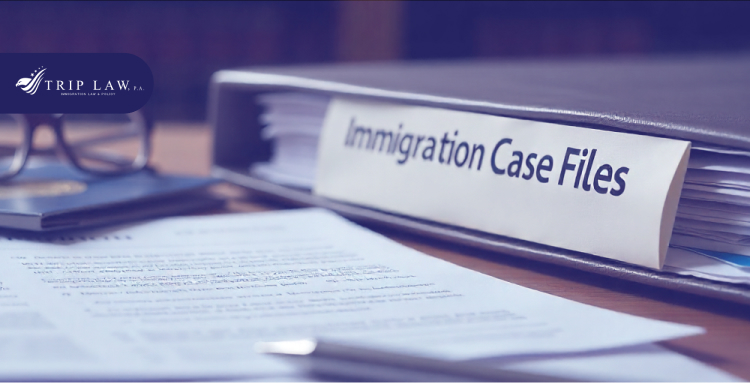
In Florida, the public charge rule is more than an abstract immigration policy. It influences daily choices, from whether families seek medical care to how they prepare for court. Though the rule is tied to admissibility, not deportability, its impact spills into deportation proceedings, shaping how evidence is framed and how judges use discretion.
Many immigrants avoid benefits that are not even counted under the current rule, leaving gaps in health, housing, and financial records. These gaps weaken defenses in removal cases and create unnecessary risks for families already under pressure. The chilling effect is legal,and deeply personal, placing lives in unstable positions.
The deeper question is how public charge rules, written in Washington, end up deciding the future of families in Florida deportation courtrooms...
1) How Public Charge Influences Deportation Proceedings
In Florida courtrooms, the public charge rule often appears in the background of deportation defense. While the law says it applies to admissibility, the influence reaches into deportation hearings through arguments about financial stability, credibility, and relief applications. Attorneys defending clients in removal cases recognize how even the suggestion of dependency changes the dynamic of a hearing.
Judges cannot order removal only because of public charge, yet the label shapes how testimony is viewed.
Prosecutors raise questions about benefit use, making it harder to separate public charge from deportation arguments.
Families in Florida often alter their daily choices long before they ever appear in court.
This overlap creates uncertainty. To understand why the rule has so much weight in proceedings, we need to look at how it is defined in immigration law.
2) What the Public Charge Rule Looks Like in Immigration Law
Public charge is one of the oldest concepts in immigration law. It was created to keep out people who might become primarily dependent on government support. The test looks forward, asking whether someone is likely to need assistance in the future.
Benefits that can count include:
Cash programs such as Supplemental Security Income (SSI) and Temporary Assistance for Needy Families (TANF).
Government-funded long-term institutional care.
Benefits that do not count include:
Medicaid for routine care.
Food support such as SNAP.
Housing benefits, unless linked to long-term care.
The Biden Administration reset the rule in 2022 to remove earlier expansions that had caused fear. The official version is narrow, yet the fear remains wide. Many immigrants in Florida avoid even safe benefits, convinced it could harm them later. That choice has direct effects on deportation hearings, where missing records and unstable living conditions weaken defense strategies.
According to the U.S. Citizenship and Immigration Services (USCIS), non-cash benefits like Medicaid or nutrition assistance do not count toward a public charge finding, even though many families still avoid them out of fear (USCIS, Public Charge Resources).
The definition is only the starting point. The next question is how this rule influences hearings once someone is already in removal proceedings.
3) The Impact of Public Charge Rules on Deportation Hearings

Public charge is not listed as a removal ground, yet the idea surfaces in deportation proceedings in ways that matter for outcomes. Government lawyers and judges bring it into the process through subtle framing.
Three recurring scenarios demand attention:
Bond hearings: Government attorneys argue that benefit use shows financial weakness, which influences whether someone is released during proceedings.
Discretionary relief: Judges review overall history, and perceived reliance on benefits often weighs against applicants seeking cancellation of removal or adjustment.
Credibility: Questions about past benefit use are used to challenge testimony on employment or financial independence.
Each of these scenarios increases the burden on defense attorneys. Even when the law draws limits, courtroom practice often stretches them. That is why clear knowledge of federal guidance and case law is essential in every deportation defense strategy.
4) Federal Guidance and Case Law Affecting Deportation Defense
The reach of public charge has been narrowed by policy guidance and court rulings. Attorneys in Florida must be aware of these boundaries to block improper use of benefit history in deportation cases.
USCIS policy manual: States that non-cash benefits such as Medicaid and food support do not trigger public charge findings.
Court rulings: Multiple cases have restricted government attempts to broaden the definition. Judges have insisted on focusing on cash-based support and institutional care.
DHS rules: Current guidance emphasizes predicting future dependency, not punishing past benefit use.
According to the Department of Homeland Security, the modern rule is designed to focus narrowly on future likelihood of dependence, not to penalize families for using basic health or nutrition programs (DHS, Public Charge Final Rule Fact Sheet).
In theory, these safeguards protect immigrants from misuse of the rule. In practice, deportation hearings often test the limits, with prosecutors introducing arguments that stretch outside the rule’s intent. Florida, with its strict enforcement environment, makes these tensions even more visible.
5) Florida Context of Public Charge and Deportation Proceedings
Florida has become one of the most aggressive states for immigration enforcement. New laws increase employment verification requirements and encourage local agencies to work closely with federal authorities. For immigrants already anxious about public charge, this creates an environment of constant pressure.
On the ground, this plays out in clear ways:
Benefit avoidance: Families refuse programs they are entitled to, afraid it will harm them in court.
Police referrals: Routine traffic stops or minor interactions often lead to immigration checks.
Community strain: People withdraw from public services and support systems, weakening their ability to show stability in court.
In this state context, public charge becomes a fear that shapes lives, creating weaker defenses when deportation cases begin. These consequences are not abstract. They reach directly into the daily lives of clients facing removal.
6) How Public Charge Rules Affect Clients in Removal Cases

For many families, avoiding benefits comes with painful costs. By refusing services, they leave gaps that follow them into deportation proceedings. Judges and government attorneys then use those gaps to argue instability.
Examples include:
Health risks: Skipping medical care leads to emergencies that strain families.
Housing problems: Constant moves or unstable addresses make court filings appear unreliable.
Financial gaps: Without records of lawful support, families look weaker in the eyes of the court.
We often see clients arrive at hearings with incomplete evidence because they feared using even safe programs. That fear makes our work harder, yet it also opens opportunities to build creative defenses. By addressing the gaps directly, we turn potential weaknesses into points of resilience.
The next step is understanding which defense strategies actually work when public charge issues are raised in deportation proceedings.
7) Defense Strategies for Public Charge Issues in Deportation Proceedings
Defending against public charge concerns requires preparation and precision. We focus on building a record that highlights independence while cutting off arguments about dependency.
Our strategies include:
Affidavits: Sworn statements from family, employers, or community members showing consistent support without government reliance.
Expert declarations: Medical or vocational experts who can confirm ability to work and maintain stability.
Evidence control: Filing motions to exclude irrelevant benefit records the government may attempt to introduce.
Humanitarian framing: Showing that community ties, health needs, and family responsibilities outweigh any suggestion of dependency.
The Department of Justice has also reminded immigration judges that discretion must be exercised with full awareness of humanitarian factors, including family unity and community ties, not just financial evidence (DOJ, Executive Office for Immigration Review).
These steps allow us to shift the courtroom narrative. Rather than letting public charge arguments dominate, we reframe the story to highlight resilience. Once that groundwork is in place, we bring it into our broader approach as Trip Law.
How Trip Law Helps Clients Facing Public Charge Issues in Deportation Proceedings

We understand how public charge concerns surface in deportation defense, especially in Florida’s strict environment. We build strategies that protect our clients, not only by applying the law but by addressing the fear that shapes their daily choices.
Here is how we support families:
Evidence building: We collect affidavits, financial records, and testimony that prove stability and independence.
Courtroom strategy: We anticipate public charge arguments before they appear and respond with strong counterpoints.
Client education: We explain which benefits do not trigger the rule, preventing unnecessary fear.
Community connections: We draw on local networks to show that clients have support outside government programs.
We believe deportation defense should not be decided by misunderstanding or fear. Public charge concerns are significant in the courtroom, yet with the right preparation, they can be managed. If you are facing removal in Florida and worry about how public charge rules could affect your case, contact us to discuss your options and get support throughout the deportation process.

Florida has become one of the busiest battlegrounds for immigration cases in the United States. Asylum seekers here face crushing backlogs, shifting rules, and a system where the wrong move can cost everything.
Some find hope through asylum, others fall back on withholding of removal, and a few turn to the Convention Against Torture for their only chance at protection. Each path carries its own rules, benefits, and restrictions. The challenge is not just filing a case, it is choosing the right defensive strategy before the court makes a decision that could change your life forever.
So which path actually offers the best chance for immigrants fighting removal in Florida?
1) How Asylum Works for People in Florida
Asylum is the most sought-after form of protection in U.S. immigration law, and in Florida it is also the most contested. Applicants must show a real fear of persecution based on race, religion, nationality, political opinion, or membership in a particular social group. The standard is broad, yet the margin for error is small. Judges across Florida review these claims with close attention, and approval rates vary from one courtroom to another.
The benefits make asylum attractive:
Permanent pathway to security: A person who wins asylum can apply for permanent residency after one year, which eventually leads to citizenship. This makes it the only option among the three protections that offers a full future in the United States.
Family unity through petitions: Spouses and unmarried children under 21 can be added to an application, allowing families to remain together rather than facing separation through deportation.
Legal work authorization: Applicants can apply for employment authorization while their cases are pending, which is often the only way they can earn a living during years of waiting.
Freedom to travel later: Once permanent residency is achieved, asylees may apply for travel documents, making it possible to leave the U.S. and return legally.
For more details about asylum eligibility and process, see the official USCIS Asylum page.
The challenge most often seen in Florida is the one-year deadline. Those who wait longer than 12 months from their arrival usually lose access to asylum unless they qualify for rare exceptions. Missing that deadline often shifts the case toward less flexible protections. For many immigrants, withholding of removal becomes the next possible step.
2) What Withholding of Removal Really Means

When asylum is off the table, withholding of removal sometimes serves as a fallback. Florida courts process many of these cases, especially when applicants arrived years earlier or have issues that disqualify them from asylum.
The burden of proof is higher than asylum. Applicants must demonstrate that persecution is more likely than not if they are returned to their country of origin. This requires precise evidence, strong testimony, and often expert reports.
The benefits are limited compared with asylum:
No permanent status or citizenship: Withholding does not provide a green card or the chance to naturalize, which means the individual remains in a temporary limbo for as long as the order is in place.
Individual coverage only: Spouses and children cannot be attached to a withholding order. Each family member must file their own case, which creates the risk that some may succeed while others fail.
Narrow application of protection: The order prevents removal only to the country where persecution is expected. It does not block the government from sending the individual to a different country if one agrees to accept them.
Still, withholding offers something that cannot be dismissed, protection from being sent back to a country where life may be at risk. It allows people to remain in the United States even if they will never hold permanent residency. For some in Florida, this protection is the only viable outcome. When even this higher threshold cannot be met, there is one final option left.
3) How CAT Protection Actually Plays Out
Protection under the Convention Against Torture, known as CAT, applies when removal would lead to torture sanctioned by, or carried out with the awareness of, a government. It is considered a last safeguard in Florida’s immigration courts.
Applicants must prove that torture is more likely than not. This is not limited to general violence or hardship, it requires evidence of severe, intentional harm with the involvement of officials. The proof standard is narrow, and judges often expect detailed country reports, expert witnesses, and corroborating statements.
Distinct features of CAT in Florida:
Indefinite protection from deportation: Once granted, CAT does not have an expiration date. The order continues as long as the risk of torture remains, making it the most durable safeguard against removal, even though it is not a permanent status.
No advancement in immigration status: CAT recipients cannot adjust to lawful permanent residency or citizenship. Their protection is limited to being allowed to remain in the United States without deportation.
Restrictions on international movement: Unlike asylees who can eventually travel, CAT recipients are not allowed to leave and re-enter the country. Their status binds them to the United States without any legal means of departure or return.
Heavy reliance on external evidence: Florida courts require strong documentation such as State Department reports, NGO findings, and expert testimony, since judges rarely grant CAT without corroborated proof of systemic torture.
For an official explanation of how asylum, withholding of removal, and CAT protection are considered during the application process, see USCIS Obtaining Asylum in the United States.
CAT offers survival rather than stability. For Florida residents who have exhausted other protections, it may be the only shield against removal. Comparing asylum, withholding, and CAT side by side shows how differently each one shapes daily life.
4) Differences Between Asylum, Withholding, and CAT

Asylum, withholding, and CAT are often mentioned together, yet they create completely different outcomes for immigrants in Florida. Understanding their contrasts is essential for anyone building a defense.
Level of proof
Asylum: Requires showing a well-founded fear of persecution, which can be proven with a reasonable possibility of harm. This makes it the most flexible standard of the three.
Withholding: Requires demonstrating that persecution is more likely than not, meaning a greater than 50 percent chance of harm. This is significantly harder to establish than asylum.
CAT: Requires proof of torture with government involvement, which is an even narrower focus and often the hardest standard to meet.
Benefits
Asylum: Offers a full range of benefits, including permanent residency, a path to citizenship, the ability to reunite with family, and eventual travel freedom.
Withholding: Allows an individual to remain in the United States and gain employment authorization, yet provides no permanent immigration status and excludes family members from coverage.
CAT: Provides indefinite safety from torture, along with work authorization, yet does not allow family reunification or lawful permanent residency.
Daily life
Asylum: Enables long-term stability, access to benefits, and opportunities for family members to secure legal status.
Withholding: Limits individuals to a suspended state, where they can work and stay in the country but never move beyond that fragile status.
CAT: Ensures basic protection from deportation, yet forces people to remain in the United States indefinitely with no opportunity for lawful status or international travel.
This comparison shows how a missed deadline or disqualifying factor can reshape the entire future of a Florida resident. For some, asylum is within reach. For others, barriers force them into narrower defenses.
5) What Can Stop You From Getting Relief in Florida
Eligibility rules often decide the direction of a case before a judge even looks at the evidence. Florida’s courts apply these rules consistently, and failing to meet them redirects many cases away from asylum.
Common obstacles include:
Serious criminal history: Convictions for aggravated felonies, drug trafficking, or violent crimes usually block both asylum and withholding. In such situations, CAT may remain the only option for avoiding removal.
Missed filing deadlines: Waiting longer than twelve months to apply for asylum closes the door for most people. Exceptions exist for extraordinary changes in personal circumstances, yet these are granted rarely in Florida.
Prior deportation or removal orders: A person who has been previously removed and re-enters the United States without permission faces additional hurdles. In many cases, this disqualifies them from asylum and withholding.
Fraud or misrepresentation: Submitting false information or inconsistent testimony can damage credibility permanently. Judges in Florida view credibility as one of the most important factors when deciding any form of protection.
Florida’s immigrant communities often have large numbers of long-term residents who did not apply for asylum on time or who have records that complicate their eligibility. By the time these individuals appear in court, the choices are already limited. When options shrink, the focus shifts to strategy.
6) How Attorneys Decide Which Strategy to Use

Selecting the right defense is shaped by law, timing, and evidence. For immigrants in Florida, where immigration courts carry some of the heaviest dockets in the country, strategy is the difference between a workable outcome and permanent uncertainty.
Approaches often involve:
Pursuing asylum where possible: When deadlines are met and eligibility is clear, attorneys push asylum cases forward aggressively, since it is the only option that brings lasting status, citizenship, and protection for families.
Building withholding arguments as backup: Even while seeking asylum, lawyers often prepare evidence for withholding at the same time. This ensures that if asylum is denied, protection is not lost entirely.
Developing CAT claims for extreme cases: Clients with serious criminal convictions or those facing torture often rely on CAT. Attorneys must document patterns of abuse and official complicity to convince judges in Florida to grant protection.
Presenting extensive country condition evidence: Judges expect detailed reports from agencies, NGOs, and independent experts. Lawyers who provide comprehensive evidence often strengthen both asylum and CAT claims.
Balancing long-term goals with immediate safety: Some clients prioritize remaining in the U.S. under any circumstances, while others focus on gaining permanent residency. Attorneys must weigh both perspectives when deciding the strongest defense.
Florida’s political climate, combined with its volume of immigration cases, means every choice carries lasting consequences. Applicants who aim only for survival may settle for withholding or CAT, while those who meet asylum requirements fight harder for a permanent solution.
How Trip Law Guides People Through the Florida System
Facing the choice between asylum, withholding, and CAT protection in Florida is not just a legal step, it affects safety, family, and long-term stability. Trip Law helps clients understand their options, prepares evidence, coordinates expert testimony, and ensures all deadlines are met. The team explains every stage in clear language so clients can make informed decisions without uncertainty.
Whether pursuing asylum, filing for withholding, or applying for CAT protection, Trip Law crafts strategies that work within Florida’s courts, presenting each case with precision and care. If you are dealing with removal proceedings or unsure which path applies, schedule a consultation today to explore your options and act before it is too late.

Many immigrants in the United States struggle to determine whether they should stay or leave. When the government initiates proceedings, two distinct paths often emerge, voluntary departure or forced removal. At first glance, the choice may seem simple, leave on your own terms or be removed by authorities. In reality, each path carries weighty consequences that can affect both the individual and their family, future work opportunities, and even the possibility of returning to the country one day.
The decision is fraught with legal rules, timelines, and risks that are frequently misunderstood. What may seem like the safer option can sometimes close more doors than it opens, and that is where the real dilemma begins.
1. Understanding Voluntary Departure vs. Forced Removal
I. Voluntary Departure
Voluntary departure is a discretionary option in U.S. immigration law that allows a non-citizen to leave the country on their own terms, rather than facing a formal removal (deportation) order, which carries more severe negative consequences.
Under immigration law, it is often granted by an immigration judge or the Department of Homeland Security when a person meets specific requirements, such as good moral character and a lack of certain criminal convictions.
Individuals who agree to voluntary departure typically avoid the 10-year re-entry ban imposed by a removal order and may be able to return to the United States later, usually through family sponsorship or other legal means.
However, they must pay for their own transportation, meet strict departure deadlines, and may be required to post a bond, which is returned upon successful departure.
Maximum time limits for voluntary departure
Pre-conclusion of proceedings: If a person requests and is granted VD before or during preliminary immigration proceedings, they may be given up to 120 days to leave the United States.
Individuals must request it before or at their first master calendar hearing. The requirements are less restrictive and often include admitting removability.
Conclusion of proceedings: If VD is granted by an immigration judge at the final removal hearing, the maximum time to depart is limited to 60 days.
A person must meet more stringent requirements, including demonstrating good moral character for at least five years and proving they have the financial ability to depart at their own expense. A bond is also typically required.
Forced Removal
Forced removal (more commonly known as deportation) is the involuntary relocation of individuals or entire groups from their homes, communities, and ancestral lands due to various pressures such as government policies, conflict, and natural disasters.
Unlike voluntary migration, it is a non-consensual process that frequently results in significant trauma, cultural loss, and long-term socioeconomic consequences for affected populations.
Grounds for removal are outlined in U.S. immigration law and can range from overstaying a visa to committing specific crimes. The process typically unfolds through immigration court hearings, with opportunities for appeal, though once a removal order is finalized, enforcement can be swift and uncompromising.
Maximum time limits for forced removal
Within the 90-day removal period: After a final order of removal is issued by an immigration judge or the Board of Immigration Appeals, the Department of Homeland Security has 90 days to enforce it.
During this time, detention is generally mandatory while DHS arranges travel. The countdown may pause if the person has a pending appeal before the BIA or a federal court.
After the 90-day removal period: Detention can extend beyond 90 days in limited circumstances. Under the Supreme Court’s decision in Zadvydas v. Davis, the government cannot detain someone indefinitely without prospects for removal.
However, custody may continue if deportation is reasonably foreseeable or if the person is deemed a public safety or flight risk.
2. Pros and Cons of Voluntary Removal Immigration

Voluntary departure allows eligible individuals to avoid a formal removal order and potential long-term re-entry bans by leaving the U.S. at their own expense within a specified time.
The key benefits include a cleaner immigration record, control over exit, and potentially easier future legal entry, while cons involve significant self-funded travel costs, strict deadlines, and waiving the right to appeal. Eligibility is limited, and failure to depart by the deadline results in penalties, including a 10-year bar from re-entry.
Pros of Voluntary Departure
Avoids a Formal Removal Order: Choosing voluntary departure prevents a permanent record of deportation, which is a major advantage for future immigration options.
Preserves Future Re-entry Options: It can make it easier to obtain a visa or waiver in the future, as there is no automatic 10-year ban that follows a formal removal order.
Control Over Exit: You leave the country on your own terms and schedule, rather than facing the uncertainty and potential stigma of being forcibly deported by immigration officers.
Less Severe Re-entry Consequences: Fewer barriers to returning to the U.S. are faced compared to a deportation, although not all future re-entry is guaranteed.
Less Impact on Other Relief: May preserve eligibility for other immigration relief in the future that a removal order would negate.
Cons of Voluntary Departure
Financial Cost: You must pay for your own travel expenses, such as airfare, which can be a significant cost.
Strict Deadlines and Penalties: Failing to leave by the designated date results in an automatic removal order and a 10-year ban on re-entry.
Waiver of Rights: By agreeing to voluntary departure, you often waive your right to appeal the immigration judge's decision.
Limited Eligibility: Not everyone is eligible for voluntary departure; there are specific requirements, and it's not available to individuals with certain criminal convictions or prior removal orders.
Loss of Eligibility for Future Relief: The act of departing voluntarily can terminate your ability to pursue certain forms of relief in the future.
3. Advantages and Disadvantages of Deportation
Forced removal or deportation, remains one of the most debated issues in U.S. immigration policy. Its effects extend beyond the individual facing removal, shaping families, communities, and even the national economy.
Advocates see it as a necessary tool for upholding the law and safeguarding borders, while critics emphasize the humanitarian costs and social disruption it causes.
Cons of Forced Removal
Economic disruption: Large-scale deportations shrink the labor force, reduce GDP, and raise costs in sectors like agriculture, construction, and hospitality. The government also faces steep enforcement and detention expenses, while losing billions in tax revenue contributed by immigrant workers.
Community harm: Deportations destabilize households, often separating U.S.-born children from parents and plunging families into poverty. Housing markets and local economies suffer when communities are uprooted.
Erosion of trust: Aggressive enforcement fosters fear, discouraging immigrants from reporting crimes or seeking healthcare, which undermines public safety and public health.
Human rights concerns: Rapid removals may bypass due process or return people to dangerous conditions, raising ethical questions. Critics often connect these practices to historic injustices that prioritized exclusion over human dignity.
Pros of Forced Removal
Upholding the law: Supporters argue that deportation enforces immigration rules fairly, ensuring that those who entered illegally are not rewarded while lawful immigrants face long, costly processes.
Public safety: Deportation is frequently used to remove noncitizens with criminal records, including gang affiliations, in the name of protecting communities.
Deterrence and resource allocation: Some view deportation as a deterrent to irregular migration and a way to reduce strain on schools, hospitals, and social services.
Border control: Beyond economics, forced removal is framed as essential to protecting national sovereignty and securing the border.
4. Legal Implications and Long-Term Consequences

Deportation creates a formal immigration record and potentially long-term (10 years or lifetime) bans on re-entry to the United States, whereas voluntary departure allows for a departure without a formal removal order, resulting in shorter or no re-entry bars if the individual leaves on time.
Deportation also increases the risk of detention and carries a higher stigma, whereas voluntary departure, if done correctly, can preserve opportunities for future immigration benefits.
Deportation (Forced Removal)
The legal process involves a court-ordered removal from the United States.
The record leaves a permanent removal order on an immigration file.
Reentry bans usually mean a 10-year bar and sometimes even a lifetime bar on reentry.
Immigration benefits are heavily restricted, making future petitions for visas, green cards, or other relief very difficult.
Detention often occurs in an immigration facility while removal arrangements are finalized.
Waivers such as Form I-212 may be available in limited cases, yet approval is difficult once a removal order exists.
Unauthorized reentry after deportation carries severe penalties, including possible prison sentences of up to seven years.
Voluntary Departure
The legal process offers an alternative to removal, allowing a person to leave at their own expense.
The record does not carry a formal removal order.
Reentry bans are generally avoided if departure occurs within the required timeframe.
Immigration benefits are better preserved, leaving room for future family or employment petitions.
Timing is strict and missing the deadline can convert voluntary departure into a removal order.
Penalties for noncompliance include heavy fines, a 10-year relief bar, and loss of eligibility for certain benefits.
Voluntary departure allows a person to leave on their own terms, avoiding harsh penalties and leaving some options open for the future. Deportation, on the other hand, is government-enforced, carries lengthy reentry bans, and leaves a permanent mark that complicates nearly all future immigration opportunities.
One path limits possibilities while preserving dignity, whereas the other creates long-term barriers that can define the rest of a person's immigration journey. Understanding these outcomes is only the first step, a knowledgeable attorney like Triplaw can help you determine which option best protects your future.
Secure Your Future Despite Immigration Challenges

Dealing with the complexities of US immigration law necessitates more than just knowledge of the rules, it necessitates strategic thinking. Triplaw offers skilled representation in removal proceedings, ensuring that all legal options are explored.
We help clients make the difficult decision of whether to seek voluntary departure or contest removal, weighing immediate relief against long-term consequences. Our strategy focuses on protecting your future immigration opportunities by carefully crafting strategies that maintain eligibility for visas, green cards, and other relief while minimizing risks.
Therefore, contact Triplaw today to secure expert guidance and take the next step toward a controlled, informed resolution of your immigration situation.

Each year, thousands of immigration appeals are filed, and this year is no exception. According to the United States Citizenship and Immigration Services’s Annual Statistical Report, USCIS received and completed more Form I-290B notices of appeal or motion than in any of the previous five fiscal years. This represents a 31 percent increase in filings and a 37 percent spike in completions compared to 2022.
In Florida the stakes are especially high, where families and workers confront denials that can feel final. The difference between staying and having to start over often depends on taking the right action at the right time. However, what if there is a precise, manageable path forward, and knowing it could change everything…?
1) Identify Where the Decision Came From
The first step is understanding who made the unfavorable ruling. Because that determines exactly where your appeal must go and how the process unfolds in Florida.
(I) Administrative Appeal to the AAO
If USCIS rejected your petition, whether it was a visa, green card, naturalization, or another benefit, you typically appeal to the Administrative Appeals Office (AAO). You file the Form I-290B, Notice of Appeal or Motion, usually within 30 days of the denial (or 33 days if it was mailed).
Sending that form triggers an initial field review by the office that denied your case. That office can choose to reverse the decision; otherwise, it forwards your appeal to the AAO for full review. This situation requires submitting a brief explaining errors in law or fact, along with supporting evidence. The AAO typically completes its review within about six months.
(II) Court Appeal to the BIA
If your case was heard by an immigration judge in removal proceedings—like asylum, cancellation of removal, or adjustment of status—the appeal goes to the Board of Immigration Appeals (BIA), part of the Department of Justice’s Executive Office for Immigration Review.
You must file Form EOIR-26, Notice of Appeal, within 30 calendar days of the judge’s decision, whether delivered in person or mailed, as per the U.S. Department of Justice. In many courtrooms, the judge will even ask you to “reserve” or “waive” the right to appeal right after the decision, so pay close attention
Once you file, the BIA reviews your appeal on paper and may issue a final decision, remand the case back to the immigration judge, or refer it to the Attorney General. A federal court is the only path beyond that.
2) Act Fast on Deadlines

In immigration appeals, time is the foundation of your entire case. Whether your denial came from USCIS or an immigration judge, the filing window is almost always 30 calendar days to file Form I-290B from the date of the decision, and if USCIS mailed the notice, you may receive three extra days according to USCIS.
The government counts every calendar day, including weekends and holidays, shifting only if the last day falls on a weekend or official holiday. Missing that cutoff usually shuts the door completely, with only rare exceptions allowed under extraordinary circumstances.
This is why acting quickly is not just smart; it is essential. For families and individuals, the moment a denial arrives is the moment to begin preparing an appeal, because once the deadline passes, the opportunity to fight for your case is gone. Our priority is making sure you don't lose your chance simply because of timing.
3) Use the Right Appeal Form
Carefully review the instructions for each form and ensure that you're submitting the correct documentation and payment.
For Appealing USCIS Decisions
Form I-290B: Use this form to appeal decisions made by USCIS, including those from the Administrative Appeals Office (AAO).
Filing Fee: The fee varies depending on the type of benefit request. For example, if you're appealing a denial related to Form I-485 (Adjustment of Status), the fee may be waived. However, for other types of requests, the fee is typically required. Read on to know how long you can stay after the 485 is denied.
For appealing Immigration Court Decisions
Form EOIR-26: Use this form of USCIS to appeal decisions made by an immigration judge to the Board of Immigration Appeals (BIA).
Fee Waiver: If you can demonstrate financial hardship, you may request a fee waiver by submitting Form EOIR-26A, Fee Waiver Request, along with your appeal.
Incorrectly filing your appeal, whether by using the wrong form or failing to pay the required fee, can result in:
Delays: Processing times can be extended, affecting your case's outcome.
Dismissal: Your appeal may be rejected outright, requiring you to start the process over.
Additional Costs: You may incur extra fees to correct mistakes or refile your appeal.
To avoid these issues, or if you're uncertain about which form to use or need assistance with the appeal process, it's advisable to consult with an immigration attorney or accredited representative who can guide you through the process and help you make informed decisions.
4) Support Your Case with Legal Arguments

Appeals succeed when they pinpoint specific legal or factual errors in the original decision. A well-prepared brief that clearly identifies these errors can significantly improve your chances of success. For example, the Administrative Appeals Office (AAO) encourages appellants to provide detailed arguments and evidence to support their case.
We specialize in crafting compelling briefs that highlight the strengths of your case and address any weaknesses. Our team works diligently to ensure that your appeal is as robust as possible, increasing the likelihood of a favorable outcome.
5) Be familiar with the review timeline
The appeal process can vary in length depending on the type of appeal and the specific circumstances of your case. For appeals to the AAO, the review is typically completed within 180 days from the time, according to the USCIS, it receives a complete case file after the initial field review.
However, some cases may take longer due to factors beyond the AAO's control, such as the need for additional documentation or a more complex review.
If your case involves the Board of Immigration Appeals (BIA), the timeline can be longer. BIA appeals often take several months to over a year to process, depending on the complexity of the case and the current workload of the BIA.
Knowing these timelines is essential for setting realistic expectations. While some cases may be expedited, it's important to be prepared for the possibility of a longer wait. At Trip Law, our teams keep you informed throughout the process, providing updates and guidance to help you navigate the appeal effectively.
6) Take It Further if Needed
If the Board of Immigration Appeals (BIA) denies your case, the next step is filing a petition for review with the U.S. Court of Appeals for the Eleventh Circuit, which has jurisdiction over Florida. This stage is a chance to restate yourcase. It is a highly technical legal review where the court examines whether the BIA made an error in applying the law.
According to the Eleventh Circuit’s rules, a petition must generally be filed within 30 days of the BIA’s decision, and missing this deadline means losing the right to further review.
This process is complex and requires precise legal arguments, strict adherence to procedural rules, and in-depth knowledge of federal immigration law. Attempting it without skilled counsel can result in dismissal before your case is ever heard.
We stand beside you through this difficult stage. We are here making sure your petition is filed with care and your arguments are presented clearly. So that it becomes a way of giving you the strongest chance to move forward with hope. With us you can avoid any legal pitfalls, as we help you to know the ways to protect your rights in the US.
Turning Uncertainty Into a Clear Road Ahead

When a denial arrives, it can feel like the ground has shifted beneath you. Fear, confusion, and the weight of what is at stake can make every decision feel impossible. The moment you reach out, and we act as your legal counsel and continuously work for restoring stability and hope:
We protect your time by keeping every deadline on track, so you never lose your chance to be heard.
Our team shoulders the paperwork with care, transforming confusing forms and filings into an orderly path forward.
We craft powerful legal arguments that cut through the noise and focus on the facts and rights that matter most.
We walk beside you throughout the process, answering questions with patience and easing the fear that often comes with silence or uncertainty.
We fight for your future with determination, because we know behind every case is a family, a dream, and a life that deserves to continue in Florida.
With us at your side, the process is no longer a maze you face alone. It becomes a journey guided by people who understand what is at stake and are committed to helping you reclaim your sense of security. Reach out today by calling (863) 599‑6735 or emailing info@trip‑law.com. We are here to listen, guide, and fight alongside you.

Immigration detention in Florida affects thousands in Miami, Broward, and even rural counties. Families are separated, jobs are put on hold, and uncertainty takes over. Many assume detention lasts until a court date, however there are legal avenues that can lead to release, and most people do not know how to handle them.
As of June 2025, ICE held roughly 59,000 people in detention nationwide, with nearly half having no criminal convictions. That’s almost 30,000 people in legal limbo simply because the system moves slowly (CBS News).
So, let’s discuss what happens in the first critical hours, how judges decide who goes free, and the options that can actually get someone out of detention.
1) The First 48 Hours Are Not TV Drama
When someone is taken into ICE custody in Florida, the first 2 days are critical. It is not like a courtroom drama you’ve seen on TV, where everything is neatly explained and resolved. Reality is fast, confusing, and full of procedural rules that most people don’t know.
Understanding what happens during this window can make the difference between remaining in detention for weeks or being on the path to release.
Immediately after detention, individuals are typically processed at a local facility or ICE’s holding center. This involves:
Personal information intake including biographical details, fingerprints, and photographs.
Health and safety screenings to check for medical issues or urgent care needs.
Notification of rights, which in theory includes the right to speak with an attorney, though many detainees are not aware of it.
It’s easy to assume that detention automatically means you cannot communicate with the outside world; however, detainees have legal rights from the moment they are taken into custody. These include:
The right to contact a lawyer and family members.
The right to be informed of why they are detained and what options are available.
Access to basic necessities and medical care, though conditions can vary across facilities.
Calling a lawyer immediately is not optional in Florida’s high-volume detention system. Attorneys can:
File for bond hearings or alternatives to detention as soon as possible.
Help prepare documentation that proves community ties, which will matter in upcoming court proceedings.
Explain the implications of local immigration courts, giving families a practical roadmap rather than relying on generic online advice.
Knowing these first steps sets the stage for understanding the options that can actually secure release. In the next part, we will talk about the legal avenues available, from bond hearings to supervised release, and how families can leverage them to bring loved ones home.
2) The Legal Escape Routes You Might Not Know

Being detained by ICE in Florida does not mean someone is stuck forever. There are legal pathways that can help get someone out, if you know where to look and how to act quickly.
Bond Hearings and Your First Shot at Freedom
When ICE detains someone, they may qualify for a bond hearing. This is a chance to request release while waiting for court proceedings. Eligibility depends on factors like criminal history, flight risk, and community ties.
Bond amounts in Florida often range from $1,500 to over $25,000 depending on circumstances. A study by the Transactional Records Access Clearinghouse found that about 40% of immigrants granted bonds are released within a week of the hearing, which shows how important preparation is (TRAC Immigration).
Presenting documentation and evidence in advance can make a critical difference in these hearings.
Parole for Special Cases
Parole allows certain individuals to be released from detention before their immigration proceedings are completed. Parole may be granted in exceptional circumstances, such as individuals with serious medical needs or compelling humanitarian reasons. Each request is carefully considered by ICE officials, and legal advice can help determine whether someone qualifies.
Alternatives to Detention in Florida
Alternatives to Detention programs monitor individuals outside of jail while ensuring compliance with immigration requirements. Some common methods include
GPS ankle monitors that track location
The SmartLINK app for check-ins and updates
Periodic in-person appointments with ICE officers
These programs are designed to allow freedom while maintaining oversight, offering options beyond traditional detention.
3) When Judges Say Yes, When They Say No
Getting a favorable decision from a Florida immigration judge is not random. Judges consider a mix of personal and legal factors to determine whether someone should remain in detention or be released. Understanding what influences their decisions can give families a real advantage.
Major Factors Judges Look At
Immigration judges typically evaluate several elements before ruling on release:
Community ties including family relationships, local involvement, and length of residence in the U.S.
Flight risk such as prior failures to appear in court or attempts to evade authorities
Criminal history with attention to convictions that might indicate a danger to the community
Elements That Can Tilt the Scales
Certain factors can improve the chances of release, especially when presented clearly and supported with documentation:
Having U.S. family members who can provide housing or financial support
Evidence of steady employment or business ties that show stability
Pending applications for immigration relief, which indicate an ongoing legal process
Common Difficulties That You Should Avoid
Even strong cases can be weakened by small mistakes. Families often hurt their own chances by:
Providing incomplete or inconsistent documentation
Missing deadlines for hearings or submissions
Relying solely on verbal assurances without written evidence
Knowing what judges pay attention to helps families focus their preparation where it counts. Once this groundwork is laid, the next step is understanding the financial side of release, including bond amounts, payment methods, and avoiding common pitfalls.
4) The Dollars Behind Your Freedom

Understanding the financial aspects of securing a loved one's release from immigration detention in Florida is crucial. Here's what you need to know:
How Much Bond Actually Costs in Florida
The cost of an immigration bond in Florida typically ranges from $1,500 to $10,000. The exact amount depends on factors such as criminal history, flight risk, and community ties. It's important to note that bond amounts are determined on a case-by-case basis by Immigration and Customs Enforcement (ICE) or an immigration judge.
Bond Companies, Scams, and How to Avoid Losing Money
While bond companies can assist in securing a loved one's release, it's essential to be cautious of scams. Some individuals pose as bond agents or immigration consultants without proper credentials. To protect yourself:
Verify the legitimacy of the bond company or consultant.
Be wary of upfront fees or promises of guaranteed outcomes.
Seek recommendations from trusted sources or legal professionals.
5) What Families Can Do From the Outside
Families play a pivotal role in supporting loved ones detained in Florida's immigration facilities. Here's how you can assist:
Gathering Documents That Prove Community Ties
Providing evidence of community ties can strengthen a detainee's case for release. This includes:
Letters from employers or community leaders.
Proof of residence, such as utility bills or lease agreements.
Documentation of family relationships, like birth certificates or marriage licenses.
Showing Financial Stability to Support a Bond Request
Demonstrating financial stability reassures authorities that the detainee has the means to comply with release conditions. Consider:
Providing recent pay stubs or tax returns.
Showing bank statements or proof of assets.
Offering affidavits from individuals willing to act as financial sponsors.
Working with Immigration Attorneys Versus Handling It Independently
While it's possible to handle the immigration system without legal representation, having an experienced immigration attorney can significantly improve the chances of a favorable outcome. Attorneys can:
Guide you through the complex legal processes.
Represent you in hearings and filings.
Advocate on your behalf to ensure your rights are protected.
Equipped with this knowledge, families can take proactive steps to assist their loved ones.
Explore our other posts where complex rules turn into clear next steps:
Business and Investor Visa - Eligibility, Differences & The Right Path for Your Global Ambitions
TPS to Green Card (Best Choices for TPS Holders to Get Permanent Residency)
6) Why Local Knowledge Beats Generic Advice

Dealing with Florida’s immigration system can feel like learning a new language, and generic online guides rarely capture the full picture. Each court and ICE office has its own way of operating, and knowing the local distinctions can make a real difference in outcomes.
Florida Immigration Courts Have Their Own Quirks
Judges in Miami may expect more documentation of family and community ties, while Orlando judges often focus on prior compliance with court proceedings.
Tampa courts have their own procedures for scheduling hearings and reviewing bond applications, which families outside the area might not anticipate.
Filing preferences, deadlines, and even courtroom etiquette can differ by location, and understanding these subtle differences helps avoid delays.
Judges and ICE Offices Vary Widely in Decisions
Bond decisions are not uniform; some judges and ICE officers are stricter while others are more flexible.
Local policies influence how quickly hearings are scheduled and what documentation is considered persuasive.
Knowing these patterns ahead of time allows families to customize their approach and maximize the chance of release.
Need someone who knows how to get your loved one out of detention in Florida? Trip Law is here to help you
Trip Law understands how stressful and confusing this process can be, and we are ready to guide you through the system.
Whether your loved one is in Miami, Tampa, Orlando, Lakeland or even detained out of state in places like Wisconsin, we can help you handle the system and explore the options that could lead to release.
We take the time to explain your options clearly and answer your questions, so you always know what’s happening. Contact us today and let’s start figuring out the best path forward together.

For many people, the concept of dual citizenship starts with a basic question of belonging. Perhaps you've looked through old family photos and wondered what life was like in the country your grandparents left behind. Or maybe you've dreamed of studying in Paris, retiring in Lisbon, or starting a business in Toronto without the constraints of a tourist visa.
Some people's dreams are more practical, such as studying abroad without restrictions, gaining access to new careers, or obtaining health care and security in another country. Others see it as a way to honor one's roots and pass down cultural traditions. Dual citizenship provides independence, mobility, and identity all at once. However, the process is rarely straightforward, and one critical detail determines whether you truly qualify.
1) Understanding Dual Citizenship
Dual citizenship, also known as dual nationality, is when an individual is legally recognized as a citizen by two different countries at the same time. This means a person can enjoy the rights of both nations, including passport usage, voting, healthcare access, and property ownership, while also carrying the duties tied to each legal allegiance.
According to the Global Governance Programme’s 2024 report, about half of the world’s countries fully accept dual citizenship, while another third impose limits depending on whether citizenship is acquired by birth or naturalization.
A century ago, over 90 percent of countries once restricted it entirely. This evolving trend underscores how the same status can mean very different things depending on where you apply, and hints at the complex paths individuals must navigate.
In the United States, dual citizenship is generally accepted. There is no federal law that requires someone to renounce their previous nationality when becoming a U.S. citizen, and U.S. nationals may become citizens of another country without jeopardizing their American citizenship. The Supreme Court has also confirmed that a person may hold rights and responsibilities in two countries at the same time.
U.S. dual nationals owe allegiance to both countries and must follow their laws, and they are required to use a U.S. passport when entering or leaving the United States. Other countries have more restrictive policies, for example China and India do not permit dual citizenship, and obtaining another nationality can result in automatic loss of the original one.
In the next section, we will examine the most common pathways used to qualify for dual citizenship, including birthright, ancestry, marriage, and naturalization, and explain how a single document or family connection can shape the entire process.
2) Five Common Ways to Qualification
Dual citizenship can be attained through several well-established routes, each with its own requirements and nuances. Understanding these pathways helps prospective citizens evaluate their eligibility and plan strategically.
A. Birthright Citizenship (Jus Soli & Jus Sanguinis)
Citizenship can be acquired at birth through two primary principles:

Jus Soli: This principle grants citizenship to individuals born within a country's territory, regardless of their parents' nationality. In the United States, the Fourteenth Amendment enshrines this right, ensuring that anyone born on U.S. soil automatically acquires citizenship .
Jus Sanguinis: Under this principle, citizenship is conferred based on the nationality or ethnicity of one or both parents. In the U.S., children born abroad to U.S. citizen parents may acquire citizenship if certain conditions are met, such as the parents meeting specific residency requirements .
These principles can lead to dual citizenship if the individual qualifies under both their country of birth and their parents' nationality.
B. Descent or Ancestry-Based Citizenship
Many countries offer citizenship based on descent, allowing individuals to claim nationality through their ancestors. For instance:
Ireland: Individuals with an Irish grandparent may be eligible for Irish citizenship, provided they register their birth in the Foreign Births Register .
Poland: Descendants of Polish citizens may claim citizenship, even if they were born outside Poland, by proving their Polish ancestry .
Italy: Italian citizenship can be passed down without generational limits, allowing descendants of Italian citizens to claim nationality, though recent legal changes have clarified and sometimes restricted eligibility criteria .
These pathways often require documentation proving lineage and may involve a formal application process.
C. Naturalization
It is the process by which a foreign national becomes a citizen of a country. In the United States, the general requirements for naturalization include:
Residency: Typically, an individual must have been a lawful permanent resident (LPR) for at least five years. However, spouses of U.S. citizens may apply after three years of LPR status if they have been living in marital union with their U.S. citizen spouse during that time .
Physical Presence: Applicants must have been physically present in the U.S. for at least half of the required residency period.
Good Moral Character: Applicants must demonstrate good moral character during the statutory period.
English and Civics Knowledge: Applicants must pass an English language test and a civics test, unless they qualify for an exemption.
Oath of Allegiance: Applicants must take an Oath of Allegiance to the United States.
These requirements ensure that applicants have integrated into U.S. society and are committed to their new nationality.
D. Marriage to a Citizen
Marriage to a citizen can expedite the naturalization process. In the United States, spouses of U.S. citizens may apply for naturalization after three years of lawful permanent residency, provided they have been living in marital union with their U.S. citizen spouse during that time. This provision recognizes the unique circumstances of married couples and aims to facilitate their integration into U.S. society.
E. Investment or Other Special Programs
Certain countries offer citizenship through investment or special programs. These programs typically require significant financial investment and may include:
Investment Citizenship: Countries like Malta offer citizenship to individuals who make substantial investments in the country, such as real estate purchases or business investments .
Special Programs: Some countries have programs for descendants of specific groups, such as Holocaust survivors, allowing them to claim citizenship based on their heritage.
These programs provide alternative routes to citizenship, often appealing to individuals seeking greater mobility or access to specific benefits.
Each of these pathways presents unique opportunities and challenges. Knowing the eligibility requirements, documentation, and legal nuances can make the difference between a smooth process and unexpected obstacles. The next section will explore the practical considerations and legal implications of holding dual citizenship, helping you understand both the benefits and responsibilities it entails.
3) Advantages of Dual Citizenship
Dual citizenship provides far more than a legal designation; it opens doors to freedom, opportunity, and security. Holders of dual nationality can leverage rights in two countries, allowing them to live, work, study, and travel with unmatched flexibility. Key advantages include:

Visa-Free Travel: Access to over 150 countries without a visa, streamlining global mobility and international opportunities.
Business Opportunities: Ability to invest, operate businesses, and access markets in both countries, including programs like Grenada’s citizenship-by-investment that qualifies for a U.S. E-2 investor visa.
Educational Access: Eligibility for local tuition rates, scholarships, and admission to international institutions that might otherwise be restricted.
Family Reunification: Easier to sponsor relatives or ensure family mobility across borders.
Emergency Flexibility: Alternative residence options during political, economic, or social crises, providing safety and stability .
Property and Social Services: Rights to own property, access healthcare, and benefit from social programs in both countries.
Dual citizenship is more than a status; it is a gateway to a life enriched with freedom, opportunities, and security. In the next section, we will examine the obligations and potential pitfalls to ensure that individuals can navigate dual nationality responsibly.
4) Obligations and Potential Pitfalls
While dual citizenship offers expanded rights and opportunities, it also entails specific obligations and potential challenges that individuals must navigate carefully.
A. Legal and Administrative Complexity
Dual citizens are subject to the laws and regulations of both countries, which can sometimes conflict. For instance, individuals may be required to file taxes in both nations, potentially leading to double taxation. The United States, for example, mandates that its citizens report worldwide income, regardless of their residence, under the Foreign Account Tax Compliance Act (FATCA).
Moreover, administrative duties such as military service obligations, voting requirements, and legal responsibilities can vary between countries and may pose challenges for dual nationals.
B. Loss of Citizenship
While the United States generally permits dual citizenship, prospective citizens must understand that other countries may not. Some nations, including China, India, and Japan, strictly prohibit dual nationality, meaning acquiring a new citizenship could result in the automatic loss of the original one.
In contrast, U.S. law does not require citizens to renounce previous nationalities when naturalizing in another country, though voluntary renunciation is possible. Nonetheless, U.S. citizens should remain aware that certain actions, such as swearing allegiance to another nation with intent to relinquish U.S. citizenship, can trigger loss of American nationality.
C. Changing Legal Landscapes
Dual citizenship laws are evolving globally, and U.S. citizens must monitor developments abroad that could affect their status. For instance, Germany recently simplified naturalization, reducing residency requirements from 8 years to 5 years, or 3 years for individuals demonstrating strong integration credentials, encouraging skilled workers to acquire dual nationality. Conversely, Italy has tightened ancestry-based citizenship rules, now limiting eligibility to children and grandchildren, effective March 2025.
Within the United States, policy remains relatively stable, but tax obligations under the Foreign Account Tax Compliance Act (FATCA) and other reporting requirements for citizens living abroad continue to expand, underscoring the need for careful compliance. Staying informed about these shifts ensures that U.S. dual citizens can fully enjoy the benefits of dual nationality without legal or financial pitfalls.
Closure: Making Dual Citizenship Work for You

Dual citizenship opens doors to global mobility, professional opportunities, and a richer connection to your heritage, yet it carries responsibilities that demand careful attention. Navigating legal requirements, tax obligations, and evolving policies can be complex, and missing a detail may have long-term consequences.
Trip Law can help clients assess eligibility, manage documentation, and understand the obligations of holding dual nationality, ensuring that your journey toward dual citizenship is both secure and smooth. Whether you are pursuing citizenship through ancestry, naturalization, or marriage, professional support can make all the difference. Contact us today to schedule a consultation and take the first step toward unlocking the full potential of dual citizenship.

Welcome to an exploration of crimmigration–a confusing concept for people who want to make a fresh start in the US. But why is it confusing for them?
Imagine, you came here lawfully from another country to lead a better life. You have got a job, and have admitted your children to a school. Everything in your life is going okay. One day while driving your car, you mistakenly broke a traffic law. You never knew that violating a minor traffic law would be a nightmare for you until you got a deportation notice.
So, today we are going to discuss why crimmigration matters and how you can reduce the complexity of crimmigration law from your community.
What is crimmigration law?
Crimmigration is basically a concept that overlaps immigration law and the defense against criminal offenses. Having a criminal record can make your stay difficult in the US. Plus it might affect your chances of getting permanent residency and citizenship also. If you are a foreign immigrant, who is not allowed to stay here anymore due to any criminal offenses, you can follow some strategies to defend against the deportation order. But you can not bypass the punishment of doing unlawful activities. That means, you will receive punishment the entire time of your staying in the US, in spite of defending against the removal proceedings.
What happens to the US citizens convicted of a crime?
Before the nineteen eighties, foreign people who came to the US were treated the same as US citizen individuals if they committed any unlawful activities. Both of them were punished equally. But after nineteen-eighties, when an American breaks the law, they get penalties like paying fines, receiving imprisonment for a certain time, probation, or other punishment.
How are non-citizens affected when they are guilty of a crime?
If a foreign citizen is convicted of any unethical activities, they also get such punishment that the Americans are given for their mistakes. At the same time, they lose the permission to stay here permanently, regardless of whether they have lawful status or not. However, the penalties they may face depend on the severity of the offenses. Committing a crime, whether it is a small or big offense, can also affect the immigration status of non-citizen people.
How does a criminal conviction affect someone's immigration status?

Traditionally cases of both criminal and immigration related issues were managed individually. At that time, the defense attorneys, and state or local prosecutors handled the criminal cases. On the flip side, the immigration court systems handled the immigration cases. But in their presence, both cases are being managed simultaneously. And any problems with criminal cases can also affect immigration cases and vice versa.
But how is their immigration status affected?
People may enter here legally with a temporary visa or an immigrant visa from other countries. If they are in the process of applying for a green card or adjusting their status to get permanent residency, the application may not be approved due to being convicted of a crime. Besides that, if someone leaves the country voluntarily due to prevent deportation, and wants to come back again with a new visa, they may also face problems due to their previous criminal records.
Shocking reality: Life has many ways to surprise us. Apart from the other factors, Racial crimmigration may also be the reason for being deported from the country. Some people think they are being treated unfairly due to their race. Individuals like Hispanics, blacks, and Asians were at great risk. However, in current times, the incidence of racial crimmigration has markedly decreased.
What criminal offenses cause deportation?
If you want to stay in the US permanently, you must follow two basic rules and regulations. The first one is that you should be the reason for danger to the entire population. The second one is that you must have good moral characteristics that can prevent you from doing any unethical activities. However, some uncertain situations may occur that may lead to deportation or removal proceedings. So, which activities are mainly responsible for receiving a deportation order from the US government?
Sexual abuse
Killing someone
Spouse and child abuse
Hitting someone badly
Snatching things from someone without permission
Human trafficking or forcefully compel someone to work that he/she does not want to do.
Terrorism
Kidnapping someone
Similarly, if they are found guilty of some minor offense such as being drunk in a public place, stealing, or consuming drugs, they will face removal proceedings. If you are a victim of human trafficking or some other criminal offenses, you can apply for a U visa or T visa based on your eligibility.
What consequences does an individual face if found guilty or deported?
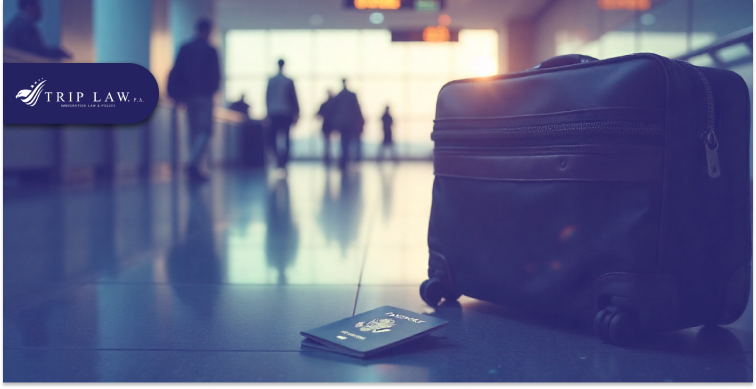
The consequences of conviction or deportation depend on the severity of the crime a person has committed.
When an individual is found guilty of doing any small or big crime, the penalty is deportation, they lose their family and employment opportunities in the US. And they do not get permission to come here again.
They do not get support from their friends and known individuals. Moreover, they can not rebuild their lives in the US due to experiencing social stigma.
Those who came here with refugee status or asylum-seekers may be disqualified from such protective status.
They can not travel freely outside the US without any restrictions.
They lose certain government rights and privileges.
Renewing the visa to extend its validity becomes difficult for them.
How to reduce the impact of crimmigration?

Arranging different training programs for people who were in prison and those coming back into the community. This would be a beneficial way to educate people on various visa issues.
Offering education can play an important role in reducing the impact of crimmigration.
Some states arrange English learning programs in the prison for foreign immigrants. Learning English can help them to understand the complexities of visas and stay in the US avoiding the legal penalties.
Creating a good relationship with family members living in the US and with local institutions like schools is very important for foreign immigrants. This will improve poor neighborhoods and reduce violence in the society. It can also help the immigrants to arrange work opportunities by supporting people.
If people from another country face trouble with the crimmigration law, they must consult with a well-known immigration attorney to fight on behalf of them.
Just remember: The immigration attorney should have in-depth knowledge about both the criminal law and the immigration law. Plus how they are connected to each other and affect the immigration status of the foreign people.
Final thoughts,
When any foreign individual is convicted of any offense they may not be allowed to stay here anymore. If they prevent these removal proceedings, their past criminal records may create a huge suffering in their lives in the future. So, understanding this crimmigration concept helps them make better decisions while facing any issue with their immigration status.
Considering your problems, we have tried to make you understand about the crimmigration law properly in our discussion today. If you think this information can save you from future immigration complexities, leave a comment below. And share this post to your community
for spreading awareness about crimmigration law.

Hearing the term “deportation” what the first thing came to your mind? You may be thinking that the particular person who got the deportation order surely came here illegally, right? However, getting a deportation order does not always indicate illegal entry. There are some other reasons too.
Every year many people who come from different countries get deportation notices due to problems with their immigration status. If you get this notice, you are not allowed to live here anymore. In such situations, what can some people who are facing difficulties moving back to their home country do?
Well…if you are one of them, struggling with immigration issues, let me just save you from a whole lot of trouble.
When does someone get a deportation order?
People may get deportation orders from the US government due to the following reasons:
Entering here without proper documents.
Committing any kind of criminal offenses which represent their bad ethical characteristics.
Violating the conditions of a temporary visitor visa by staying in the USA after the visa has expired.
Working without permission.
If the asylum application is denied you don't have other options to seek protection from the government.
Breaking employment conditions while working in the US.
What is deportation defense?
Deportation defense is the process of preventing deportation to ensure legal status in the US. After getting a deportation order, you can follow some strategies to defend the removal proceedings so that you don't have to leave the US. You can also follow some preventative approaches that may help you not get a deportation notice if you entered here without proper inspection or violated the immigration law.
How many stages of deportation proceedings are there?

There are two different stages to deal with the deportation proceedings. The first one is the removal phase, and the next one is the relief or relaxation phase. These two phases determine your stay in the US based on the legality of your immigration status.
What happens during the removal and relief stage of deportation proceedings?
According to immigration law, if you come here without permission or lose your legal status, you have to leave the country. So, when you experience such incidents, you have to consult with an immigration attorney who can help you defend against the removal proceedings. In the removal or elimination stage, the US government tries to prove that you have violated the immigration law and are staying here illegally. If the government can successfully prove that you are breaking the rules, you have to find some legal options to stay in the country. And, this is the relief or relaxation stage of deportation proceedings.
Reasons that make the non-residents to leave the country
If you came to the US for a short trip and if you stay here longer without extending your visa validity, you have to leave the country. Besides that, if you enter here without proper inspection, you are not allowed to live and work here. When the Department of Homeland Security (DHS) of the US finds someone in such situations, they put them on deportation proceedings.
However, you can request the government to cancel the elimination phase if you are staying here for more than ten years. Plus you must have a US citizen or green card holder family member present in the US who can sponsor you for immigrant visas.
Common reasons for asking the residents to leave
If you are already a permanent resident in the US or in the process of getting a permanent residency, you may also get a deportation notice if you break any immigration conditions. However, if you have not committed any serious crimes during your permanent residency period and the DHS proves that you have done something unethical, then you can ask for special permission to stay here by canceling the deportation order.
Just remember: To cancel the removal or elimination step, you have to be legally present in the US for more than seven years.
So, what are the reasons for receiving a deportation notice despite having a lawful status?
Committing any unlawful activities.
Providing any false information to get permanent residency.
Not filling out the documents needed to get the green card.
Hiding any negative things about yourself while applying for a green card.
What can you do if you are in deportation proceedings?

People who are in removal proceedings have opportunities to adjust their status by managing a sponsor. This way they can bypass the deportation order.
If you are a foreign undocumented individual, you must fix your legal status by following some strategies.
Adjusting the visa status to any immigrant visa category if you have any family members to sponsor you.
Applying for any job-based green card program based on your qualifications. If you had a green card before, you can ask for it again showing the proper documents. But if you already get deported while having a green card and can not enter the US, you can ask for a special waiver to enter here again.
Asking for protection from the government by seeking asylum or TPS if you have proper evidence to receive such status.
People who are already protected by the DACA program can renew it to fix their legal status. This special program can relieve the foreign individual temporarily from removal proceedings.
When should someone apply for Asylum, CAT, and TPS in the US?
If you don't feel safe in your home country, you can ask for asylum within a year of your arrival in the US. If you can not apply for asylum within this period, you can apply for withholding of removal. Similarly, you can ask for Temporary Protected Status or TPS if you think you don't feel safe in your home country.
Besides that, you can apply for the Convention Against Torture or CAT program if you have a fear of getting tortured after moving to your home country,
What is the last option for people facing deportation?

If you don't have any opportunity to adjust your visa status to defend your deportation order, you can use one last option to protect your residency. People who are in deportation or removal proceedings can leave the country voluntarily to avoid government-imposed penalties or other complications. To use the voluntary departure proceeding, you can leave the country willingly within sixty days. If you leave the US this way, it will not be considered as deportation. If someone does not want to leave the country voluntarily, the government will remove them forcefully.
To sum up
Most temporary and permanent visa holders in the USA do not know the strategies they can use to prevent deportation proceedings. In our short conversation, we have tried to show the pathways they can follow when there is a probability of receiving a deportation notice from the government.
If you don't have enough ideas about deportation defense, you can have it from this mini discussion. Additionally, you have to consult with a reputed immigration attorney, who can help you fight against the removal process and win legal residency in the US. If you have any confusion about the strategies of deportation defense, you can comment below and share this discussion with anyone seeking guidance about this issue.

Are you interested in coming here to do business or investment?
In the case of both business and investment, you have to give some money in hopes of getting more money in the future. Although both of these target the same thing, there is a big difference that makes the business visa separate from an investor visa.
People from various countries come here with a business or investor visa. But the most interesting fact is that many of them can not understand the actual purpose of such visas. And they can not decide which visa program would be suitable for them. As a consequence, they face serious problems while gathering the required documents for the particular visa program.
If you are one of them, don't worry anymore. I am here to solve your problem about choosing the right visa program and fulfilling your dream.
What is the basic difference between business and investment?
Investment is basically investing a certain amount of money in a project and getting a profit when the project successfully starts working. You don't have to participate actively while working as an investor. You are just playing a passive role here by providing a certain portion of the money to someone else. If the project goes well, you will make a profit.
On the flip side, if you actively participate in a project to get more money by dealing with consumers and selling the products, this is considered business. Here you are participating in business activities and working hard to get a good profit.
What visa options are available for people who want to participate in business activities in the US?

If you want to participate in business-related activities in the US, you can come here with a B-1 visa. This is a temporary visa, specially designed for people who want to make a business deal or participate in business conferences or training programs in the USA. The B-1 visa does not provide someone to conduct a business or earn a profit, it just provides the opportunity to perform business-related work.
To become eligible for this visa, you must have enough money to start your business and handle your daily expenses after coming here. The validity of this visa is up to 1 year. If you want to extend your stay, you have to renew your visa by filling out a form I-539 before your visa status expires. You also have to fill out form I-94 to keep the validity of your immigration status, which indicates that you are legally permitted to enter here.
How are investor visas separate from business visas?
In the case of coming with an investor visa, you can start a new business or invest in a running business in the USA. There are several types of investor visas available here, which are completely different from the business visa. You can choose any of the investor visas based on your preference and eligibility criteria. The duration of an investor visa is relatively longer than that of a business visa. For instance, if you come with an E-2 investor visa, you can stay here for up to two years, which is not possible with a business visa.
Just remember: To conduct business through the investor visa program, you must come from countries that are allowed to do business in the US. So, you can see the checklist of treaty countries before applying for any investor visas.
Can you work in the US with a business visa?
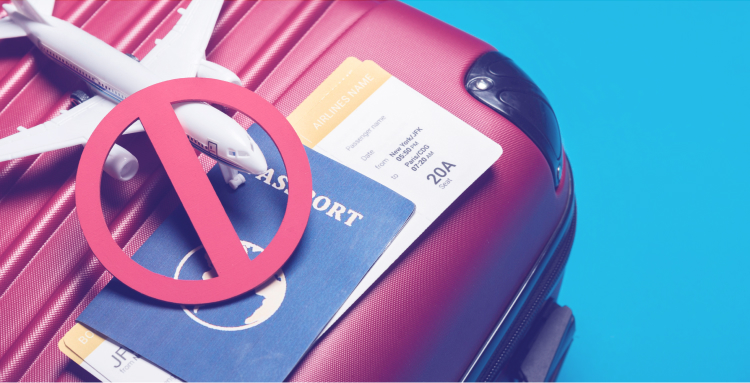
The straight answer to this question is “No”. You can do business-related activities with this visa. But you can not work under any organization if you hold a B-1 visa status. As you are coming here for a short-term stay, you have to leave the US after completing your business deal or conference.
However, if you have to work in a company while holding a B-1 status, you can adjust your status to other visa categories like an H-1B visa or O-1 visa. But you have to meet the required qualifications compatible with such temporary work visas. The H-1B visa is applicable to foreign people who have theoretical and practical proficiency in any specific area with great work experience. Similarly, if you have any exceptional knowledge in some particular subjects with great national or international achievement, you can apply for an O-1 visa. These visa programs can provide you with work authorization in the US.
Which visa would be suitable for you?
If you don't have enough money to invest, you can not apply for any investor visas. This type of visa needs to have enough money to conduct business. And you must show some evidence proving that you have a great desire to invest money and help grow the economy. Moreover, you must apply from a treaty country having permission to conduct business in the USA. If you match such qualifying criteria, you can choose the investor visa program to earn a good percentage of profit along with the return on investment.
On the other hand, those who need to come here for the purpose of making a business deal or other business-related issues for a short time can apply for a B-1 visa. You don't need to show evidence of investment to conduct a business. Because you don't have permission to do business with the B-1 visa. And this is exactly where most foreign people go wrong. They think this visa is applicable for starting a business. But that's not the point. To start a business, you can apply for investor visas showing the necessary documents.
When is a B-1 visa preferred over an investor visa to start a business?
You already know that the processing time for an investor visa is longer than a business visa. But if you need urgent travel to make a business deal with a US company, you can choose the B-1 visa. After coming here with a B-1 visa, you can adjust your status to any category of investor visa based on your budget and eligibility.
Which visa program provides the easiest way to permanent residency?

As for a B-1 visa, you can not stay more than six months to a year at a time. On the other hand, investor visas will provide the opportunity to stay up to two years and if you need to stay longer, you can extend your visa. If you want to get permanent residency, you can adjust your status to any of the permanent residency programs. As the investor visas provide you with a long-term stay in the US, in the meantime you can easily adjust your status to such immigrant visa categories according to your qualification. If you have US citizen or green card holder family members in the USA, you can take a petition from them to get permanent residency. If you do not have a family member to sponsor you for an immigrant visa, you can look for any work-based green card opportunities, where a US employer can sponsor you for an immigrant visa according to your educational qualification and relevant work experience.
To conclude,
Although the main goal of doing business and investment is almost the same, the purpose of getting a business visa and an investor visa is completely different. In our short discussion, we have tried to explain the requirements of the business and investor visas briefly.
If you think our conversation will help you to make the right decision to choose the perfect visa for your needs, please leave a comment. And share this information with others who are struggling to know which visa program is suitable for them.

Let's be honest, investing money can be scary. Will it pay off? How much is too much? It's like planting a seed - you gotta wait for the good stuff to grow.
Especially with this E-2 visa thing, there's no magic number for investment. No wonder everyone's freaking out! You don't want to dump all your cash in and end up broke, right?
Look, investing is a gamble for sure. There are no guarantees of success. But hey, that's why I'm here! I've been down this road before, and I'm gonna share what I know about E-2 visa investments. So, buckle up and let's clear up this confusion!
What exactly is an E-2 visa?
E-2 visa is one of the categories of the US investor visa program. It is a temporary visa applicable to foreigners willing to do business in the US. They can start a new business here or buy one that is already running. The validity of this visa is up to five years, but you can stay here legally as long as you continue the business by renewing your visa status.
How does an E-2 visa benefit people?
E-2 visa is beneficial for people living outside the US who want to live and work here with legal authorization. If you are coming here to open your E-2 company, you can bring your spouse and children as dependents. After coming here, your spouse can do a job and your children under twenty-one years old can study without any restriction.
Other nonimmigrant visas do not provide any option for the spouses to work here. However, if your child is over the age of twenty-one, they can apply for an F-1 student visa to continue their education.
What are the primary requirements to get an E-2 visa?
Since an E-2 visa is specially designed for foreign investors, you have to invest certain amounts of money to get this visa. So, what are the basic requirements for an E-2 visa?
If you are interested in getting the E-2 visa, first you should check whether your country is on the treaty country list where the United States wants to make business relationships.
You have to make sure that you will go back to your home country when your visa status expires.
After entering the US, the investor should perform the business-related activities actively, like purchasing the equipment and necessary stuff.
The amount of investment is not fixed, you have to invest a significant amount that would be enough to support your business without any risk.
You have to show that your business is real and you have earned the investment capital in an ethical and lawful way.
If you want to get a partnership from an existing business, you have to own fifty percent of the entire business.
You have to show a standard business plan and your ability to hire enough workers to establish the business.
As investing money in a business and getting enough profit is an uncertain issue, you might not get back the invested money in the event of business loss. So, while investing money for an E-2 visa, you have to ensure that you will not ask for the money in return in such a situation.
How can you determine the substantial investment for an E-2 visa?

There is no minimum fixed amount to invest for an E-2 visa, but you can determine the substantial amount with the help of a proportionality test. The regulatory body will conduct a proportionality test based on how much money you are investing in the business and the total business value. This test is important to understand whether your investment is big enough or not.
But why do you need to understand the extent of your business to make an investment?
In a true sense, the size or proportion of your business can ultimately determine the amount of your investment. Your investment must be big enough compared to the total value of the business.
Suppose, you are going to purchase a proportion of a running business, and the company is small, medium, or big-sized. In such cases, you have to invest a large amount of money to make your investment work well. Similarly, if you are going to start a new and fresh business, you have to spend a huge amount to establish your business.
So, how can you prove that your investment is substantial enough to start a business?
To prove that you have put in a good amount of money to run the business successfully, you have to show some documents to the immigration office. These documents also ensure that you won't take or ask for the invested money back.
Your overall financial records and how much you have used for the investment
If you purchase any portion of your property or other stuff, you have to show them
Bank statement showing the records of payments
Receipt showing cancellation of money order
Letter of agreement that proves your interest in this business
You have to show other documents indicating that you have safely deposited the money until the agreement continues to run.
If you purchased something to use for the business, show the document.
In the case of collecting loans from the bank, you need to show papers for it.
As you are investing a lot of money in your E-2 company, will you get some money from the total investment to bear your visa costs?
In response to your question, I can assure you that, yes, you can use a certain amount of the total invested money to manage your visa processing fee. Suppose, before applying for the visa, you had invested $150,000 USD. Then, your E-2 company will use some of the money from the total investment for your visa-related expenses.
What minimum investment amount do immigration experts recommend for this visa?

Investing more money can increase the chances of E-2 visa approval. However, according to the suggestion of immigration experts, you should invest at least $100,000 USD or more. Although this invested amount may vary from company to company, $100,000 USD is considered a substantial amount.
If you don't have this much money, still you will be qualified for an E-2 visa. You need to have an active plan before making the investment.
First, determine which type of business you are going to start. Is it a tech startup or a manufacturing firm?
In the case of a tech startup, you can invest less money compared to the manufacturing industry.
You will be overwhelmed to know that, after investing only $70,000 in an IT company, most people get their E-2 visa. And, it's true. You just need to prove that this small amount of money can cover all the expenses of your business.
How can you manage the money needed for a low-cost and high-cost business?

Most investors want to spend money on an existing business, as it is already developed. So, if they invest here, there will be no possibility of risk in business. This is a high-cost business because you have to invest a huge amount in it. And, this amount is equivalent to the purchasing cost of the business. But how can you manage a lot of money for such an expensive business? You can borrow a certain portion of the money and pay the additional amount to get your visa.
If the business cost is more than a million, you can pay half of the total amount. The rest you can borrow from a bank or other financial organization. But for a low-cost or smaller business, the investment amount should be greater than the borrowing amount. If the required investment amount is one million USD,. You can pay only $30,000 USD and borrow the larger portion. Even you are not allowed to pay the half portion in such a small business. So, you have to pay the larger portion to get an E-2 visa in the case of a low-cost business.
In short
The money you will get as a profit from your E-2 business will be necessary enough to help the US economy, not only your family and your own expenses. So, the invested amount should be large enough to get the expected profit in return.
If you have enough money to start and maintain a business, you might be eligible for an E-2 visa. You just need to do a proper calculation with the logical justification that this investment would be sufficient to grow your business. But how can you determine that your invested money is enough to get E-2 visa approval? This is what we have tried to explain in our short discussion.
Besides, we have given a special tip for people who have budget issues but want to set up their business in the US. If this discussion helps you figure out the investment side of the E-2 visa, leave a comment below! And if you know someone who's scratching their head about how much to invest, share this conversation with them.

Nowadays, Lots of folks are looking for ways to make money on their own terms, without the stress of a boss or the fear of getting fired. So they're saving up to invest in something that will bring in cash, even while they sleep - sweet passive income!
If that sounds good to you, and you're thinking about the US of A, then here's some good news. The US offers investor visas to folks from other countries who are willing to invest their money and help the economy grow. Of course, there's always a catch, right? You gotta jump through some hoops to qualify for this visa.
So, what exactly do you need to do to snag this investor visa and unlock a world of opportunity in the US? Don't worry, I'll break down the eligibility requirements in plain English and show you how they can change your life for the better.
What types of investor visas are available in the US?
There are two types of investor visas available for people who want to come here to do different types of business.
E-2 visa: This visa is applicable to people who want to do business in the USA. The duration of this visa depends on how many days you can continue business in the USA. If your eligibility matches the visa requirement, you can come here bringing your spouse and children along with you. After coming here with an E2 visa, you can also hire experienced employees from your own country with an E2 visa to work in your E2 company.
EB-5 visa: It is one of the most popular visa opportunities available for foreign investors, where you don't need to have any specific experience in business or proficiency in a language. That means, the requirements of this visa category are minimal, but the benefits are maximum. To get an EB-5 visa, you can invest in different types of businesses like hotels, restaurants, housing and real estate, community facilities, retail enterprises, and technological sectors.
Remember: You should invest your money in a company that started its journey after 1990.
What are the requirements to get an investor visa?
Before applying for any categories of investor visas, you must check your eligibility. Every visa category has some specific requirements. When you think you can fulfill the complete requirements for any of these, you can apply for the particular visa category.
E-2 visa eligibility:
To become eligible for an E-2 visa, first, check the list of treaty countries to find whether your home country is on the list or not. If you find the name of your home country here, you can apply for the visa.
You have to invest some money, but the amount is not fixed. You can invest as much money as would be necessary to start a business.
You need to own at least half of the company to qualify for this visa.
You should introduce a structured and professional business plan to earn a good profit for the E-2 company.
Show your willingness to work hard for the success of your company.
Present your experience if you have done any business in the past.
Show your special skills that are required for making a big decision.
EB-5 visa eligibility:
People from any country can apply for this visa if they have sufficient money for investment.
You must invest between five hundred thousand and one million US dollars in the newly arranged business and create ten jobs for people living in the US.
How can you apply for an investor visa?

The application for an investor visa is not similar to other non-immigrant or immigrant visas. But why? You have to show some additional documents to apply for an investor visa, and those documents play an important role in the case of your visa approval.
Application process for E-2 visa:
First, set up your company and create a bank account, which is important for your visa application.
Once your company is ready, you have to keep the investment money in the bank account.
Then, start spending the money to establish your business. You can purchase necessary equipment, machines, and other stuff that is necessary for your business with that money. This will indicate that you are committed to your work.
Now, you can apply for the E-2 visa. If you are already in the US legally, you have to adjust your status by filling out form I-129. This paper shows that you have invested a certain amount to start your business in the US.
If you are applying from your home country, you have to go to the nearby consular office or US embassy and show evidence of your investment for an E-2 visa by paying a fee. If you want to apply individually from outside the US, you have to specifically fill out the E visa portion of form DS-160 with all the necessary papers to prove your investment.
Application process for EB-5 visa:
Before applying for an EB-5 visa, you have to complete form I-526 showing proof of capital investment.
When USCIS approves your immigrant petition, you can fill out Form DS-260 if you are applying from your home country. If you are adjusting your status to an EB-5 visa while staying in the US, you can skip this step.
Can low-income individuals qualify for the investor visa?
If you don't have enough funds, you can't qualify for the investor visas. But you have an opportunity to come here with the first category of investment visa, which is designed for treaty traders. E-1 visa is applicable for people who do not have enough money to invest, but after coming here, they can start a solo business in the future.
E-1 visa: This is a visa to conduct trading relationships between two countries. You don't need to invest money in it. People belonging to such countries that have some important business agreements with the US can apply for the E-1 category of investor visa. The agreement between these two countries might involve offering services, selling stuff, and sharing technology with the general population in your country.
If you want to bring your spouse and children under twenty-one years old, you can also apply for an E1 visa. The business industry must have a branch in your home country. That means, you can ask for an E-1 visa if you work for any organization that owns the US industry to which you are applying. The validity of this visa depends on the duration of the business agreement between the US and your home country.
Eligibility criteria for an E-1 visa:
Exactly like the E-2 visa requirement, you have to check the treaty country list. If you find the name of your country eligible for an E-1 visa, it means the US government wants to make a business relationship with the people of your country.
The trading industry where you are going to work in the US must own at least half of the trading industry in your home country to conduct business with a partnership. That means employees of the treaty company can apply for this visa.
Ensure that buying and selling services are done at least fifty percent more in your country than in other treaty countries.
You should have specialized knowledge and skills to prove that you can handle the business as an important worker in this organization.
Can you work in the US with an investor visa?

Yes, you can work in the US with any category of investor visa. But there are some rules applicable for your family members to get work authorization here.
In the case of both E-1 and E-2 visas, if you come with your spouse and children who are less than twenty-one years old, only your spouse can work here, but children are not allowed to work.
With an E-1 visa, you will get legal work authorization for up to five years. You can use your skills in another treaty trader company, or you can run your own business here.
If you come here with an EB-5 visa, you can work here legally. Your spouse and children can also get work authorization.
Is there any opportunity to get permanent residency through investor visas?

If you want to get permanent residency through the investor visa program, you can apply for the EB-5 category of investment visa. Later, you will get citizenship. If you are not qualified for the EB-5 visa, you can choose from other categories of investor visas. However, other investor visas will not give you any opportunity to get permanent residency directly. You have to adjust your status to other immigrant visa programs to get a green card here.
Since the EB-5 visa is an immigrant visa, it will provide you with permanent residency, and it is only applicable to people who have made a certain amount of investment to start a business in the US. Initially, the EB-5 investors will get temporary residency status upon application, which is required to check the investment situation. In this period, you should properly maintain your business and introduce jobs for the employees.
If you are already physically present in the US and applied for an EB-5 visa, you have to fill out form I-485 to get permanent residency through an EB-5 visa. Then, you will get two years of temporary green card.
If you can not arrange ten jobs for the employee, you have to assure them with evidence that you are in the process of introducing jobs very soon. Then, you can apply for permanent residency status by filling out form I-829 ninety days before your temporary status expires. It is required to remove the condition from your temporary green card.
To sum up,
Investor visas are one of the most popular visa programs in the US for foreigners who have a keen interest in doing business in a trustworthy environment. To become eligible for investor visas, they need to follow some factors, like investing a substantial amount to establish the business and their willingness to contribute to the economy. There are some other criteria that you have to fulfill, which can increase the chances of your visa being approved.
So, if you're itching to start your own business in the US, this investor visa program might be your ticket. Got questions? Fire away in the comments below! We'll do our best to help you navigate this whole visa thing. And if you know someone who's interested in this, share this discussion with them! The more we share the knowledge, the better.

The world is a vast place, and with all the news flying around these days, it's easy to get confused about the terms "refugee" and "asylum seeker." These words pop up all the time, especially when discussing global conflicts and the movement of people seeking safety. But what exactly do they mean? Are they the same thing?
Nope, there's a key difference! Understanding the distinction can help us have more informed conversations and offer relevant support to those in need. So, whether you're curious about current events or have encountered refugees and asylum seekers in your community, I am here to shed some light on them. We'll break down the difference between these terms in a clear and simple way, making you a refugee-and-asylum-seeker pro in no time.
What do refugees and asylums exactly mean? Are both the same thing?
Refugee and asylum is a very confusing term to most people around the world. The reasons for seeking protection under refugee and asylum programs are quite similar, but both are not the same thing. Then what is the basic difference between them?
Well, let me clarify…Refugees are basically considered people who do not feel safe in their own country because of war, crime, violence, and other dangerous issues. When their home country can not give them enough protection and legal rights to stay safely, they leave their country as refugees and go to another country. They experience severe threats or are forced to leave the country. Some of them want to shift to another country voluntarily for fear of an upcoming alarming condition.
The situation of those people is so vulnerable that they try to cross the national border to seek protection and safety from nearby countries. According to the program of US refugee admission, the United States gives protection to those helpless people and brings them here as refugees.
On the flip side, asylum is another program of protecting people who are already staying in the US temporarily but do not want to leave due to the fear of persecution in their home country. Any political, social, or racial issues stop them from going back to their country. Suppose, you came here with a temporary visa.
Before expiring your temporary status, you heard that serious political violence or civil war had started in your home country. Because of this sudden uncertain condition, you do not feel safe to go back there. In such a situation, you can ask for protection from the US government through asylum.
In which situation can you ask for refugee or asylum?
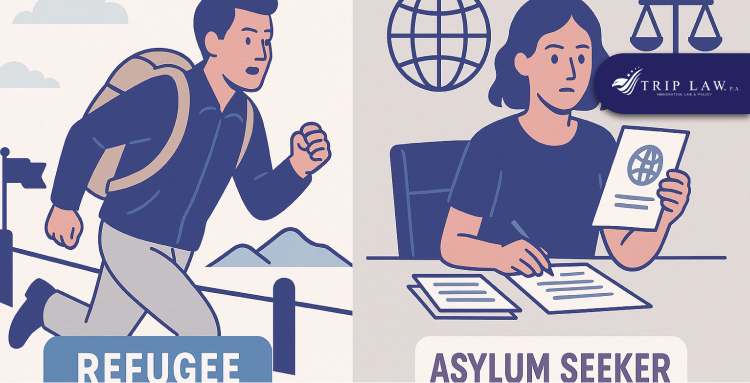
If you suffer from serious danger in your country, you can ask for refugee status. On the other hand, an asylum seeker can show other problems to seek protection from the government. Suppose, you are dealing with immigration issues and facing deportation, you can ask for asylum. To get asylum, you have to show a specific reason that you are in danger, not just because you are feeling insecure in your country.
How are refugees and asylum seekers different from each other?
Refugees and asylum seekers are different from each other in various ways.
What are the similarities between a refugee and an asylum?
As I already said, most people can not differentiate between refugees and asylum status, because these two have some similarities.
A refugee and an asylum holder, both of them do not get protection in their own country.
Both of them get almost similar rights and facilities from the US government. They can move freely without any risk. They also get healthcare benefits, education, and employment opportunities.
Refugees and asylum holders can ask permission from the government to allow them to bring their immediate family members to the US.
The citizenship pathways for both are also similar. They can apply for citizenship 4 years after their green card is approved.
Can refugees and asylum seekers work legally in the US?

Refugees can get permission to work legally immediately after arriving here. Whereas, asylum seekers get legal work authorization when their asylum application is approved. When your asylum is pending for a long time, you can also get permission to work. If you do not get any decision about your asylum application for more than 150 days, you can apply for legal work authorization by filling out a form I-765.
How does the application process for seeking asylum differ from obtaining refugee status?
Although there are some similarities between a refugee and an asylum status, the application process for both is not similar. So, you have to follow a different pathway while applying for refugee or asylum status.
The application process for refugee status:
First, you have to contact the UN refugee agency called the United Nations High Commissioner for Refugees (UNHCR), which is a global organization, to register yourself as a refugee. It might be difficult for you to search for this agency in your home country. If you are currently living in a refugee camp, you will find the volunteers of UNHCR, who will help you with this purpose.
Now, you have to gather all the required documents to prove your danger or insecurity living in this country, and you want to resettle in another country that will give you protection. If you don't have your passport, you can show your birth certificate, ID card, or other papers to prove your eligibility for refugee status.
In this step, UNHCR will refer you to any country for resettlement, including the United States. You are not allowed to say which country you want to move to. However, you can say which particular countries you don't want to go to. If UNHCR sends your case to the US, you can start applying for refugee status there.
When UNHCR sends your case to the US, you have to attend an appointment with the Refugee Support Center (RSC). They will help you to prepare for attending the interview with the USCIS refugee officer, who is the representative of the US government. This refugee officer will decide whether you are allowed to come to the US or not.
So, the volunteers of RSC will ask you some questions to understand why you are willing to move to the US. You have to answer all the questions correctly. Do not give any false information. They can also help to fill out the required forms to make you ready for the interview with the refugee officer.
After completing all the processing of your documents, the RSC will set up your interview with the US refugee officer. You may wait some more time to attend the interview, as the refugee officer will visit your home country to interview all the refugees.
They will make the decision based on international rules, not only US law. So, the duration of your interview might be longer. During the interview, the refugee officer will ask you everything about the reason for seeking this refugee status. You have to say everything in detail.
When USRAP approves your request to live in the US as a refugee, the RSC will help you and your family to conduct your health condition check-up. This is needed to avoid contaminated disorders that can spread from person to person. If the report of your medical checkups is okay, the RSC will arrange your travel to the US.
After entering here for the first time, the Refugee Resettlement Agency (RRA) will pick you up from the airport, and they will support you by bearing your financial expenses for the first few months.
The application process for asylum:

After coming to the US with a non-immigrant visa, some people seek asylum if they feel scared to go back to their own country due to various acceptable reasons. If you are in such a situation, you can apply for asylum within one year of your arrival in the US. So, you have to follow some steps to apply for asylum.
First, determine your eligibility and whether you are qualified to take asylum or not. If you are really in danger of returning, then you can apply for asylum, showing the actual reason with proper documents.
Then, you can apply for asylum by filling out form I-589. If your family members are here, you can also apply for them at the same time.
If your family members are not with you in the US, then you can sponsor them to bring them here after completing two years with asylum status. So, you have to fill out a form I-730 to request that the government allow your family members to join you here.
To sum up,
In the US, refugees and asylum seekers both want protection from the government, but a refugee enters here with a protected and granted asylum status. On the flip side, asylum seekers get this granted status after passing a certain period in the US showing the specific problem that stops them from returning to their country.
Apart from the difference in their legal status, there are some more differences between a refugee and an asylum seeker that most of you don't know. So, today I have tried to explain the overall differences between the two popular groups who want safety from the government of another country to live a peaceful life.
If you find our small and informative discussion useful, please leave a comment to inspire us more. And, remember to share this discussion with others who are concerned about understanding the basic differences between a refugee and asylum status.

The truth is, the world can be a scary place. Sometimes, bad things happen to good people, and getting caught up in human trafficking can feel like falling into a nightmare. If you've been through something like that, or maybe you know someone who has, you're probably wondering what options are out there.
The truth is, there is hope. The T visa program exists to help people who've been victims of human trafficking. It's not a magic solution, but it can offer some much-needed safety and a chance to rebuild your life. Here we'll break down everything you need to know about the T visa, from who qualifies to what kind of help it provides. We'll also share resources that can offer support on your journey to healing.
How does the T Visa work?
The T visa is a special type of non-immigrant visa that allows the victims of human trafficking to stay here for a certain period of time. People who suffered a lot and were abused by someone else can ask for protection through this visa. However, the conditions for getting this visa are not similar to those for TPS or asylum. There is something different, which you can understand from the eligibility criteria for this T Visa.
This visa can give you protection for up to four years. After that, you have to renew the visa or adjust your status to other immigrant visas after three years. While holding this T status, you will get certain government benefits like medical facilities, employment opportunities, and educational opportunities to lead a safe and secure life in the US.
Who is eligible for this visa?

Although you are a victim of human trafficking, you have to show some evidence to the immigration agency to become eligible for this T visa.
If you are a victim of human trafficking or have suffered badly due to this issue,.
If you have cooperated with the law enforcement team to investigate human trafficking cases,. That means you have to help the police to find criminal offenses and stop human trafficking.
You can not leave this country due to being abused continuously, and you don't have any way to escape.
If you were less than eighteen years old during the incident and unable to help law enforcement handle the case due to suffering from trauma, you are still qualified for this visa.
You are in such a situation that if you go back to your home country, you will have serious problems.
How can you understand if you are a victim of human trafficking?
If someone tricks you into doing any unethical activities and makes fake promises of giving you work opportunities to lead a better life, you have to be conscious of your safety and rights. They might force you to work hard without any leave or payment or do sex without your will.
At the same time, they may torture you mentally and physically doing such unethical things despite you are unwilling to do that. If you experience such incidents, there is no doubt that you are a victim of human trafficking. If you go through this, you will get a T visa to stay here with so many federal benefits and help the law enforcement team detect those traffickers.
What can you do in such situations?
If you think you are a victim of human trafficking, you can contact the police anytime when you feel safe. You can also communicate with the local government NGOs, they can assist you in overcoming such incidents. Besides that, you can contact the agent of the U.S. Homeland Security Investigation to explain your problems. The victim support specialists in your area can also help you by giving you important advice about this matter.
How can you apply for this?
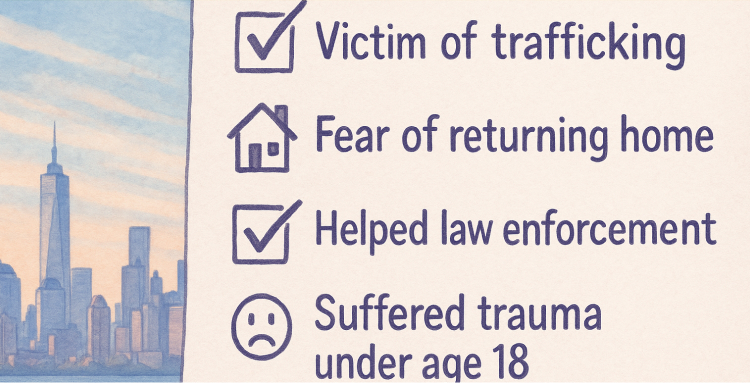
You have to follow certain steps to apply for a T non-immigrant visa:
First, you have to fill out form I-914 to apply for this visa, showing your personal experience of trafficking.
If you helped law enforcement detect the traffickers, you have to ask the police to fill out form I-914, Supplement B.
You have to show documents like statements from the police, articles from newspapers regarding this incident, court papers, and other related documents.
If you were unable to help the police investigate your case, you can show other evidence to prove your eligibility.
If the immigration officers think you are completely qualified for this visa, they will notify you later after checking your documents and application.
You don't need to pay any application fee but you only need to pay to get work authorization by filling out form I-765 and travel permit by filling out the form I-131. After completing three years with this visa, if you get any opportunity to adjust your status, you have to fill out form I-485, and you must pay for it.
The validity of a T visa is up to four years. Before your visa status expires, you can renew or extend the validity of your status by filling out form I-539.
Can your family members also get protection under this visa?
Your family members can also get protection under this visa. But there are some conditions:
If your family members are also in danger along with you, then some of them will get the T visa. As you are the victim, you are qualified for the first category of T visa. And this T-1 visa is only given to people who are physically present here. But if your family members are not staying with you in the US, they can apply for the other categories of T visas from your home country. So, your parents, brothers, or sisters who are below eighteen and your children with any marital status can also apply for this visa.
If you want to bring your family members here with T visas, you have to fill out Form I-914, Supplement A, seeking permission from the US government.
If your family is not in danger, then your age will define the eligibility of your family members. If you have proper documents and permission to get protection under this visa but can not enter here due to some other reason, you have to fill out form I-192 with a fee. Since the main victim is applying for this visa from here, filing this form is not applicable to them.
If you are below twenty-one years old, then you can apply for your parents, spouse, brothers, or sisters who are not married and are below eighteen years old. You can also apply for children who are not married and below twenty-one years old.
On the flip side, if you are above twenty-one years old, then you can only apply for your spouse and children who are unmarried and below twenty-one years old.
Can you apply for this visa if you are currently staying in the US without any legal status?

If you are in the process of deportation because of not having legal status, you can apply for a T visa. But you must show proper evidence to seek protection under this visa.
Can you work here while waiting for your T Visa processing?
T visa application processing time may take more than a year. In this waiting period, you can not get permission to work here. If you badly need a job for your survival, you can apply for a U Visa, which is also applicable to the victims of certain criminal offenses. As your case is almost similar to the U visa, you can apply for this. And while waiting for this U visa to be approved, you can work legally here.
In conclusion,
Nobody deserves to be abused or forced to do things against their will. Human trafficking is a terrible problem happening way too often, and many people suffer in silence.
The good news is, there's help available in the US for victims of human trafficking. It's called a T visa, and it can offer some safety and a chance to rebuild your life.
If you think a T visa might be an option for you, let us know in the comments below! Also sharing this information with others in your community who might need it could be a big help.

Living with family in the US is a dream for many people. That's why there's a program called family sponsorship that helps people immigrate to the US to be with close relatives who are already US citizens or green card holders. Each year, thousands of people use this program to be reunited with family.
Even if you're already in the US with a temporary visa, you might be eligible for family sponsorship. This program can lead to getting a green card, which allows you to permanently live and work in the US. And after a few years, you might even be able to apply for US citizenship.
If this sounds like what you're interested in, I can help you understand the process of family sponsorship in the US. It can seem complicated, but we can break it down together.
What is family sponsorship and who can apply for it?
Family sponsorship is the process of taking on the entire financial responsibility of family members or relatives to support them in coming to the US. Individuals who are living here as permanent residents or green card holders can sponsor their family members to bring them here. So, the applicant can apply for any temporary or permanent visa through the family sponsorship program.
Those who are already living in the US with any temporary visa, asylum, or Temporary Protected Status (TPS) can also get family sponsorship to adjust their visa status here. This way, they can obtain permanent residency in the US.
How can you apply for family sponsorship?
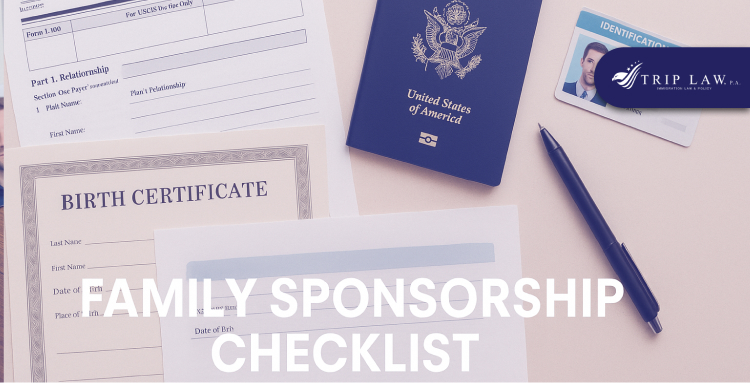
If you want to come here through a family sponsorship program, you should consider the following things:
First, check your eligibility and whether you are suitable for any categories of family-based visas or not.
If you are qualified for any family sponsorship program, check the requirements of the particular categories of visa and gather all necessary documents.
Now, it's time to get sponsorship. One of your family members or relatives has to fill out a form I-130 to ask permission from the government to bring you here. Your sponsor needs to write a sponsorship letter to the consular office to ensure the US government that he/she is going to bear all your expenses during your entire visit to this country.
If the immigration office approves the sponsorship letter and other forms, you can apply for the particular visa with the required documents. And you have to provide filing fees for all the documents.
What eligibility is necessary to get family sponsorship?
You will be eligible for family sponsorship if you have a family relationship with the individual who will sponsor you for the visa. So, what eligibility should you fulfill to apply for any family-based visas?
Entering here legally with any temporary visa with proper inspection or, if paroled, (Getting released from prison before completing the expiration date on the agreement to maintain ethical principles in the future).
Maintaining a good relationship with the relative who has filed the petition for you.
If you are staying lawfully in the US, you are eligible to adjust your status through family sponsorship. On the other hand, if you want to get family sponsorship from your home country, you are eligible for an immigrant visa.
Having marriage documents if your spouse sponsors you for the visa.
What categories of family sponsorship opportunities are available?
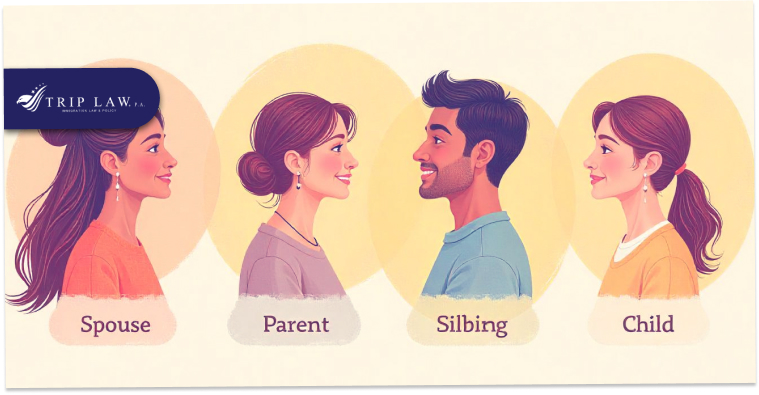
Different categories of family sponsorship opportunities are available for both immediate and close relatives of the permanent resident individual who has the power to sponsor them. Mainly, 2 different types of family sponsorship opportunities are available. These are applicable to the close and distant relatives of the sponsor.
Close relatives or immediate family members are the parents, spouse, and children of the sponsor. After getting sponsorship, these immediate relatives can apply for a family visa.
Other family members who are considered distant relatives can also apply for family-based visas based on their preferences.
Unmarried children of the US citizen sponsor who are above twenty-one years of age are the first preference and they can apply for an F1 family visa.
Spouses and unmarried children of a green card holder sponsor, who are less than twenty-one years old can apply for a F2A visa. But unmarried children of the green card holder who are more than twenty-one years old can apply for an F2B visa.They are considered as the second preference for family sponsorship programs.
Married sons and daughters of US citizens are the third preference and can apply for an F3 visa.
If the US citizen sponsor is more than twenty-one years old, their brothers and sisters can apply for an F4 visa.
What documents are required to get family sponsorship?
If you want to get family sponsorship for any immigrant visas, you have to show the following documents to the US government.
If your spouse is sponsoring you, then you have to gather things like your photos with the spouse, your birth certificate, a valid passport, and authentic documents as proof of your marriage. If your spouse or you change your name after marriage, you have to show it with proper evidence. If you were married previously, show the documents that prove your previous marriage has ended.
If your daughter or son is sponsoring you, you have to show the papers proving your relationship with the sponsor and your photos, birth certificate, and other documents required by the embassy or consular office. You have to follow the same thing in the case of sponsoring your siblings or parents as well.
If you are adjusting your status through family sponsorship from asylum status, you must show your police clearance certificate and other related documents. It proves that you are strictly following the immigration rules here and not involved in any unethical activities.
How can you get family sponsorship living in the US?

If you are already living in the US with a temporary status, you have to adjust your status through family sponsorship.
When the US government approves your relative’s sponsorship for your adjustment of status you have to fill out a form I-485 attaching some documents. At the same time, you have to fill out a form I-693 to show that you are not affected by any medical issues.
After that, the immigration office will notify you to attend a biometric appointment to give your fingerprint and take photographs.
Then you have to attend an interview where the immigration officers will check your documents and ask you some questions to verify that you have given the genuine information in the documents.
If your interview is good, your immigration status will be adjusted successfully.
What are the ways for family sponsorship from outside the US?
Those who are not physically present here can apply for family sponsorship through the consular processing. In this method, you have to attend the visa interview in the consular office or US embassy in your own country.
Your sponsor needs to fill out form I-864 to prove that he/she is financially stable enough to bear all your expenses after bringing you to the US.
When your sponsorship is approved, you have to fill out form DS-260 to apply for any immigrant visas that you are eligible for. You have to submit your medical records while applying.
As you are applying for family-based visas from your home country you must submit a police clearance certificate. This document proves that you were not previously involved in any criminal offenses in your country.
Then you have to complete your biometric appointment and visa interview. According to your documents and interview, you will get your desired immigrant visa.
In conclusion,
Family sponsorship is one of the most popular immigration programs in the US. Even if you have any adopted children or step-siblings as your sponsors, you can apply for a family visa. After getting a family sponsorship in the US, you will get so many benefits from the government that can secure your future.
In our whole discussion, we have tried to show some clear pathways to get family sponsorship from already staying here and from your home country. If you find our conversation useful, please leave a comment to let us know because we get inspiration from it. And, don't forget to share this discussion with others who are seeking guidance on how to get family sponsorship in the USA.

Want to bring your family to join you here? But struggling with writing a perfect sponsorship letter with the right words?
Many people don't understand what information to include in a sponsorship letter while writing it for a family visa. They mistakenly include irrelevant information in it. A poorly written sponsorship letter is mainly responsible for visa application rejection because it can not fulfil the requirements of the immigration authorities. As a consequence, the candidate can not apply for a visa.
Last year I wrote a sponsorship letter to bring one of my family members to join me here. Then he could apply for a family-based immigrant program successfully and now he is here with me.
So, I am going to guide you on how to write a sponsorship letter from my own experience. To make things easier for you, I will provide you with a sample sponsorship letter in the last part of our discussion. It may benefit you to sponsor someone for a family visa.
What is a sponsorship letter? Why is it important?

A sponsorship letter is a written statement or document that is needed to sponsor someone to bring in this country by taking responsibility for the applicant's entire expenses. This is applicable for both non-immigrant or temporary and immigrant visas.
This letter contains some information that proves your relationship with the visa applicant and your financial stability that is necessary to bear someone's expenses.
From the perspective of the visa applicant, this letter is basically required to show that you have enough money for the trip. And you don't need to take any kind of financial help from the consulate or embassy. It also proves that you have a good reason to travel and someone has to support you by providing your living costs and daily expenses.
What information should be included in a sponsorship letter?
You must include some specific information to write a sponsorship letter for your family members.
Include your personal details so that the consulate or embassy can contact you when needed. So, you have to mention your name, residential address, contact number, and email address.
Then, add the applicant's information to whom you are going to sponsor by mentioning their full name and passport information. You should also include the nature of your relationship with the applicant. Plus mention that you are going to sponsor the applicant for a family visa. If you sponsor for some other visa category, you should mention this in your letter.
Now include what the applicant will do after coming here and in which places they will visit. Then mention how much money you are going to give as a sponsor to bear the applicant’s expenses.
After that, you have to include some additional documents as proof of your financial support to the applicant. Lastly, give your signature with a date which helps strengthen your sponsorship letter.
What supporting documents should you attach with the sponsorship letter?
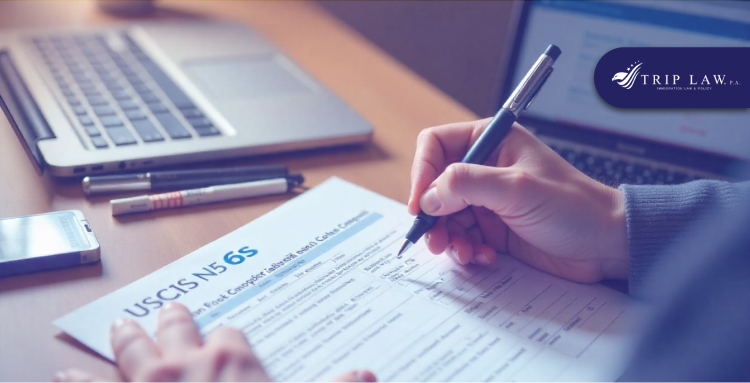
You have to attach some supporting documents that are needed to prove that you are financially stable to bear the expenses of the applicant. The embassy or consulate will mention which documents you need to include along with the sponsorship letter.
These involve your bank statement record, work confirmation letters, business records and other paperwork like vehicle license/registration to ensure your financial condition. If you are a US employer and write this letter for sponsoring any undocumented immigrants, you should attach some additional documents along with the regular paperwork.
What is the benefit of a well-written sponsorship letter for a successful visa application?
A well-written sponsorship letter can help you in many ways by increasing the authenticity of the visa application. It indicates the sponsor is real and will take care of the applicant visiting here properly by providing necessary financial support. When reviewing the entire sponsorship letter if the immigration officers do not find any mistakes, they approve it. Sometimes, visa applications are rejected due to false sponsorship letters. If you can write this letter perfectly with genuine information, it may also increase the chance of the applicant's visa approval.
Is it necessary to notarize the sponsorship letter?
Almost every immigration office asks to provide a notarized copy of the sponsorship letter. It indicates the official verification of this letter and proves that it is genuine. That means, if you are sponsoring your son or daughter by showing the required bank statement, you are genuinely taking the entire responsibility for them during their entire stay here.
Do you need to follow any specific format for writing a sponsorship letter?
The visa application center will provide you with the specific criteria and format to write your sponsorship letter. However, you must follow certain things to make this letter standard and acceptable, avoiding common mistakes.
Try to write your letter in a simple way and avoid too many words, because it may make your writing monotonous to the Immigration officers.
Write this letter in simple formal English by providing the general information, but do not make it too formal. Using native language is not allowed.
While writing, state whether you are a US citizen or green card holder.
Write a typed sponsorship letter. Do not provide a handwritten letter.
Write the full name of the applicant and yourself. Do not write the nickname or local name to this letter.
As you are writing this sponsorship letter for a family visa, clearly mention the purpose of this letter in a precise way.
Do not provide any false or incomplete information.
Before submitting the letter review it properly to check whether you have made any grammatical or spelling mistakes or not.
Provide a sample sponsorship letter for a family visa

Since you are writing this letter to the US government as a request for permission to bring your family members or relatives here, you need to write it carefully. Plus you have to avoid some of the most common mistakes that people make while writing this letter. So, we are writing a sponsorship letter for you, which will definitely help you to write this for a family visa. And you can easily bypass the common errors, which will increase the acceptance of your letter to the immigration office.
To Wrap Up,
While writing a sponsorship letter you must remember some important things like knowing the requirements of the consulate or embassy where the applicant is applying for this family visa. Each and every consular office has its own specific requirements. It's important to write a sponsorship letter that can completely fulfill the requirements of that particular consular office.
As most of you don't understand which additional documents need to be included along with the sponsorship letter and how to write it perfectly, we have discussed each and every section of a sponsorship letter in detail. Still, if you have any queries about writing this special letter, you can comment. Our expert guidance is always available for you. Don't forget to share our discussion with others who are concerned about writing a perfect sponsorship letter for any of their relatives who are looking for a family visa.
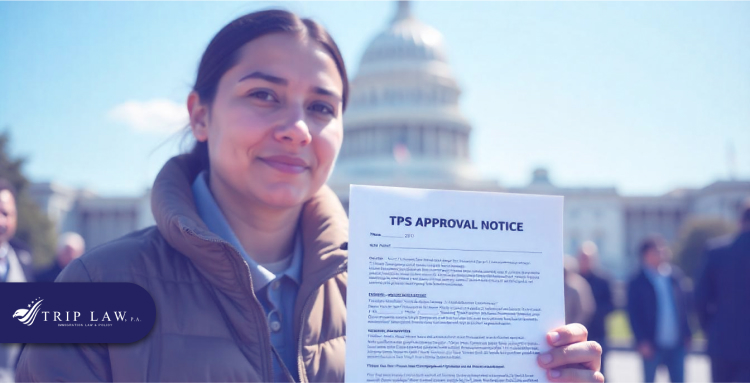
Are you dreaming of becoming a permanent resident in the US? Wondering how TPS can lead to a green card?
One of my close friends had come here for business purposes with a non-immigrant visa. After his arrival in the US, the political situation of his country was getting really bad. A civil war started between two different groups. At this moment, he was feeling scared to move back there. But the situation in his country was getting worse day by day. When his visa status was about to expire, he decided to stay here until the situation came to normal. Then he applied for TPS or Temporary Protected Status.
Although this TPS status gives him protection from deportation, every year he gets worried about whether it will be renewed or not. On top of that, he was emotionally attached to the US because of staying here so long. And, started looking for opportunities that could help him to get permanent residency from TPS. Then, after completing various steps with a mixed experience he got a US green card last year.
In that case, how smooth or rigid was his journey from TPS to green card? Eagerly waiting to know that, right? As he is very close to me, I know how he could manage everything and make his dream come true. So, now I am going to share his journey of paperwork and patience with you all.
What is TPS and how does it benefit people?
Temporary Protected Status (TPS) is a special permission that allows non-immigrant visa holders to stay in the US for a certain period of time. If they do not consider themselves safe to move back to their home country due to a sudden political turmoil, back-to-back earthquake, war, disaster, or other temporary issues, they get permission to stay here. Plus, they can extend their stay until the situation in their home country does not get normal.
Your Immigration status will not change at that moment. You will only get relief from being deported. That's it. To get this special benefit you have to show some evidence that can prove your problems clearly. But before thinking about TPS you must check whether your country is qualified for this special benefit or not. According to the rule of 2023, around 16 countries of the world qualify for TPS. You can check this from the official website of the U.S. Department of Homeland Security.
However, you will get some additional benefits at the entire time of your stay in the US as a TPS beneficiary. What are those?
Well…If you are staying here with TPS you will get employment authorization and some other benefits. Plus you can switch to other non-immigrant visas according to your qualifications and experience.
Can you directly apply for a green card as a TPS holder?

If you are staying here with TPS, you can not directly apply for a green card. However, there are some other opportunities available for you to get permanent residency.
What options are available for a TPS holder to obtain permanent residency?
As a TPS beneficiary, you can apply for a marriage-based or family-based green card. To apply for this, your US citizen relative or any US employer needs to sponsor you. And, you have to become qualified for any of these based on the eligibility criteria of that particular immigration program.
Who qualifies for a green card holding a TPS status?
As I already mentioned the pathways that are available for you to get permanent residency from TPS, you have to understand in which category of green card opportunity you are qualified for.
Having any US citizen or green card holder family member in the US: If you have any relatives or family members in the US, they can sponsor you based on their relationship preference with you.
Employment opportunity: Those who don't qualify for family-based green card programs, can apply for employment-based green card programs if they have the particular qualifications or experience that the US employer is looking for.
Getting married to a US citizen or green card holder: If you get married to a US citizen or green card holder while holding your TPS status, your spouse can sponsor you for a green card.
Can you travel as a TPS holder while applying for a green card?
Yes, you will get a travel authorization and you can freely travel to any country without any restriction. However, you will not get the same rights as a green card holder or a US citizen. You just need to follow the proper steps to get this special travel permit. So, you have to fill out a form I-131 to request the advance parole document showing the reason for your travel. This document is basically required to secure your trip.
If you are on a TPS status and leave the US without this advance parole document,
the regulatory body will close the case of your green card application.
How can TPS holders adjust their status to permanent residency?
The TPS holders are not considered as other immigrant visa holders who can follow some specific steps to apply for a green card. So, the paperwork and application process of a TPS holder will not be exactly similar to other candidates. They have to follow some steps to adjust their status to get permanent residency.
Understanding the transition steps

If you are a TPS holder you have to adjust your temporary status to a lawful permanent residency (LPR). So, fulfilling all the requirements of LPR can help you to become a green card holder.
If you leave the US and come back with advance parole, you can adjust or change your visa status after coming back here. They can do this through marriage, a job, or getting sponsorship from their family members.
You can apply for any of the non-immigrant visa categories before your TPS status expires. There are several non-immigrant or temporary visa programs available, and you can choose any of them based on your requirements.
Adjustment of status for a TPS holder
If you are a TPS holder seeking a green card, you have to be qualified for any immigrant category to adjust your status. If you have advance parole (lawful re-entry permit in the US), you can travel outside the US. And after coming back here, you can apply for a green card. So, what can you do to adjust your status?
Your family member or a US employer needs to fill out a form I-130 or form I-140 on your behalf to apply for an immigrant petition visa.
After that, you have to wait for a certain period to get the visa approval. Then, you can fill out a form I-485 showing all the required documents to adjust your status. Since you are a TPS holder, you have to show the document that proves that you're staying here with special permission.
Then, the regulatory body will call you to attend a biometric appointment and an interview. You have to ensure that you are not involved in any criminal offenses during the entire time of your stay in the US. If your interview is good and you can answer their questions correctly based on your documents you can get your immigrant visa later.
What can TPS holders do if they are not eligible for a green card?
TPS holders who are not eligible for a green card can not adjust their visa status. But why do they not qualify for it? There are some specific reasons that stop them from applying for a green card. So, before proceeding to the application process you must verify those factors properly.
Can TPS holders who entered without proper documents adjust their status?
In 2021, the Supreme Court declared that TPS holders who came here without permission or without proper documents can not adjust their status while staying here. They have to go back to their home country and then apply with a family petition or other categories of immigrant visa, which can make them qualify for a green card directly.
But before moving to the home country to apply for any immigrant visas, they must collect their advance parole document. Otherwise, they can not adjust their status.
Can they apply for asylum simultaneously with TPS?
Yes, if you don't have other options to get permanent residency and you don't have proper documents, you can apply for asylum. But you should have trustworthy and strong evidence that can prove you are truly in a critical situation and can not move back to your own country. If your asylum application gets approved, you can adjust your status one year later to get permanent residency.
Moreover, you can switch to some specific employment-based green card option, if your asylum application is delayed to approve. However, you must have the required qualifications to be eligible for those work-based opportunities.
Just remember: You are allowed to seek asylum until you are not in removal proceedings.
What happens if your TPS expires while you are waiting for a green card?

This is one of the most common questions of TPS holders seeking permanent residency here. Sometimes, green card approval might not happen within the expected time. Although it's rare, this kind of situation may happen due to various reasons. Then, what kind of inconvenience you might experience?
Impact on work authorization and green card application
After reviewing the country condition of a TPS holder, the decision maker of the TPS can extend their TPS validity for up to six, twelve, or eighteen months. And, then you will get 60 days more before getting the deportation order. After expiring the TPS status you will lose your work permit. And, it will also affect your green card application, your case will be stopped there. Further processing of your green card case will not be continued.
What can you do to avoid such incidents?
In such situations, you can apply for TPS re-registration by filling out a form I-821 to extend the validity of your TPS status. At the same time, you have to renew your work authorization. It can help you to continue your work until your TPS status expires. In the meantime, you can complete all the processing of your green card application.
To sum up,
Those who live in the US with TPS and want to get permanent residency need to follow several steps carefully to maintain their TPS status. Because if they stay here without permission, they can not get a green card in the future.
So, in my short convo, I have tried to explain how a TPS holder can get a green card in the US and what factors they should keep in mind before a green card application. Besides that, I have mentioned what other options are available for you if you do not qualify for a green card. I hope this discussion can help you to overcome the challenges and enjoy a great life in the land of opportunity.
If you find our discussion useful, let us know by leaving a comment. And, share this information with others seeking guidance on transitioning from TPS to a green card.
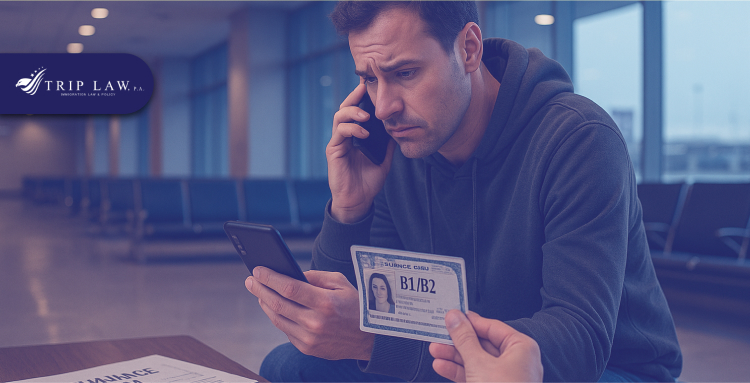
Are you a B1 or B2 visa holder seeking legal pathways to stay in the United States? Can asylum be an option for you? It's a common query of many folks who come here with a temporary visa.
Suppose, you are walking in the park on a sunny day. Suddenly it starts raining heavily. What can you do in such a situation? Won't you seek shelter under a tree to save you from this unexpected rain? Exactly the same thing happens when you need legal protection from the government while holding a temporary visa status.
A few years ago, one of my buddies came to the US with a B1 visa. After coming here, he faced some unforeseen circumstances in his home country and worried about going back there. Then, he decided to stay here with asylum status to get legal protection from the government. But asylum is only applicable to some special populations who are in serious danger in their own country.
So, what do you think? Is it possible to apply for asylum from a temporary visa status like B1 or B2? And, what conditions make them qualify for asylum? Also, are there any alternative pathways available, if you are not eligible for asylum as a B1/B2 visa holder? Let's solve all your queries from the experience of my buddy's case…
Can B1/B2 Visa Holders Apply for Asylum?

Yes, with important considerations. Both B1 and B2 are nonimmigrant or temporary visas where B1 visa is applicable for people who come here for business purposes. On the other hand, people come here for a short trip with a B2 visa. Or they may come with a combination of these two visas. If they want to get asylum from a B1/B2 visa, they should fulfill certain requirements.
Eligibility Criteria
The eligibility criteria for asylum are quite different for B1/B2 visa holders as they come here for a limited period. So, you need to fulfill the requirements according to the type of your visa category.
Physical presence: Both B1 and B2 visas remain valid for ten years. But you can not stay in the US continuously for the entire ten years. You can stay up to six months each time you visit here. But if you apply for asylum, you have to ensure your physical presence within the entire time of asylum processing.
Time limit: To apply for asylum you have to apply within a year after entering the US. As you can stay up to six months here with these B1/B2 visas, you have to apply for asylum before your visa status expires. That means you can apply within six months or as soon as possible to meet legal requirements.
Removal proceedings: It may take some time to approve your asylum application. If your B1/B2 visa status expires after applying for asylum you can live here and apply for work authorization also. But if your asylum application is rejected during your non-immigrant visa expiration period, removal proceedings will start.
Important Points to Consider
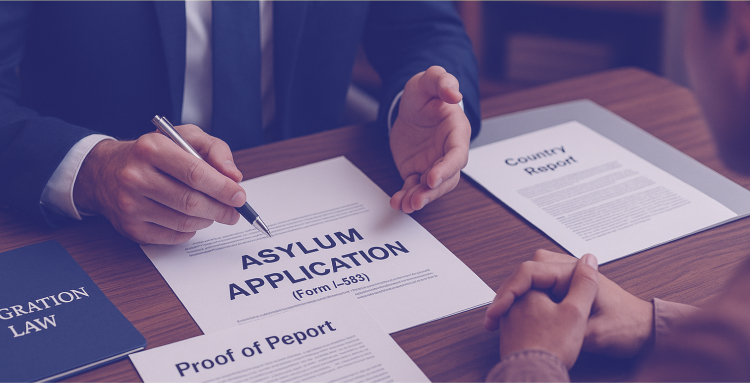
If you are about to apply for asylum, you have to consider some important factors before starting the application process.
Misrepresentation: Applying for asylum with false intentions can have negative consequences. You have to show the reasons for seeking asylum like what is making you worried about going back to your home country. Is it for any political or personal reasons? Clearly identify the reason and represent it to the regulatory body with some documents.
Legal counsel: Immigration law changes frequently. So, emphasize the importance of consulting an immigration attorney for individual guidance. He can guide you to navigate challenges in the complex asylum process by preparing your case strongly.
Alternatives to asylum
If your situation is not suitable to pursue asylum, you can go for other potential immigration options according to your requirements. If you don't understand which alternative option would be the perfect choice based on your situation, you can consult with an immigration attorney.
Withholding of Removal and CAT Protection: If you want protection through asylum, but if it's rejected, you will get two more opportunities to seek protection. They are withholding removal and conversion against torture (CAT). You can apply for the three at the same time or individually. However, unlike asylum, you can't apply these for your family members at once. Separate applications are allowed in such situations.
Although, both the withholding of removal and CAT protection provide fewer benefits compared to asylum, still you will get protection from deportation or removal. And, you will get work opportunities with these two protections, but you won't get a green card.
Special Immigrant Juvenile Status (SIJS): If you are under 21 and abused by your parents you can ask for protection in the court under this SIJS visa. As a consequence, you will get permanent residency here.
Temporary Protected Status (TPS): TPS may also give you protection from removal but not an opportunity for a green card or permanent residency here. But you will get a work permit and travel authorization as well.
Violence Against Women Act (VAWA): If women with any nonimmigrant status become victims of domestic violence and get abused physically or mentally, they can seek protection from the US government under this VAWA act. If they are in removal proceedings, they ask for permanent residency through Asylum and VAWA on their own without receiving sponsorship from any US citizen or green card holder.
U Visa and T Visa: If you are a victim of any serious criminal offenses or human trafficking(you were forcefully involved in any unlawful activities without your consent) and you assist the police in investigating the crime, you can apply for a U visa or T visa. Then, you will become protected from deportation and bring your family members to live here. After completing three years with any of these visas, you can apply for permanent residency.
Cancellation of Removal: This option is applicable for people who have been living in the US without proper documents for over ten years, they can request the court to stop their deportation. But you have to fulfill a condition to get this opportunity. You must have your family members like your parents, children, or spouse in the US and if your deportation may cause significant hardship to them, you can ask for cancellation of your deportation.
Cuban Adjustment Act (CAA): If you are from Cuba, and living continuously for a year in the US, you can apply for permanent residency under this act. But if you are not from Cuba, you will be also eligible for this opportunity, if you are a spouse or child of an immigrant from Cuba. In the case of children, their age should be under twenty-one.
Family Petitions: If you have US citizen or green card holder family members in the US, they can sponsor you for different categories of family-based immigrant programs.
Asylum Application Process
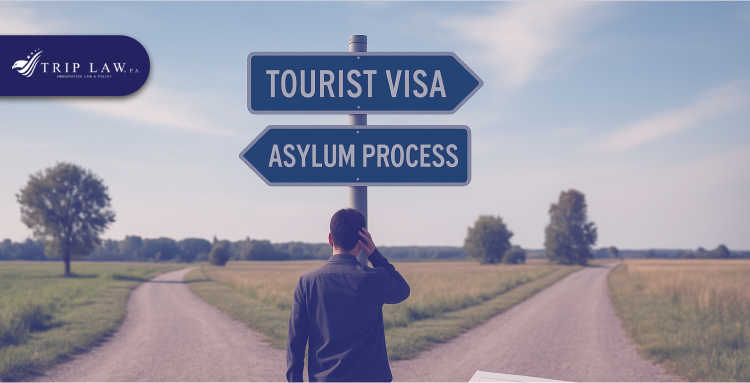
To navigate the asylum application process you have to follow certain steps properly. These steps involve understanding the legal procedures, gathering required documents, and attending the interview with good preparation.
Initial steps: First, you have to gather necessary documents like your identity and evidence showing the exact reason for seeking asylum. You have to strengthen your case by representing the current situation of your home country and why you are feeling scared to go back there. So, you may need to show other documents depending on your situation.
Filing the application: Then, you have to fill out a form I-589 with all the supporting documents.
Attending a biometric appointment: After filing the application, the regulatory authority will inform you to attend a biometric appointment, where they will collect your photograph, fingerprint, and signature for verification purposes.
Interview with USCIS asylum officer: You have to be well prepared to attend this interview. Because if you give any false or wrong information that is not compatible with your case, you might be rejected. During the interview session, you have to bring copies of all the documents along with you.
Possible outcomes:
In most cases, you will receive the outcome of your asylum application within 180 days after submitting the form. According to your case, the USCIS may approve or reject your application. Or they may refer your application with all documents to the immigration court. Then the immigration court will handle your case. If the immigration court denied your application you have a chance to appeal. Seeking legal advice is crucial to overcome the complexities of immigration laws. Trip-Law can solve all your asylum-related queries and provide legal guidance to enhance your chances of obtaining asylum.
In conclusion,
B1 or B2 visa holders who come here for business or tourism purposes are not usually allowed to get asylum. Because asylum is only applicable to people who have a well-founded fear in their home country.
However, if you feel this kind of fear after coming here with a B1 or B2 visa, you can apply for asylum. But it's crucial to show trustworthy evidence for switching from this temporary status to asylum.
If you find our discussion useful, leave a comment to let us know. And, share this info with anyone seeking guidance about asylum applications holding B1/B2 status.
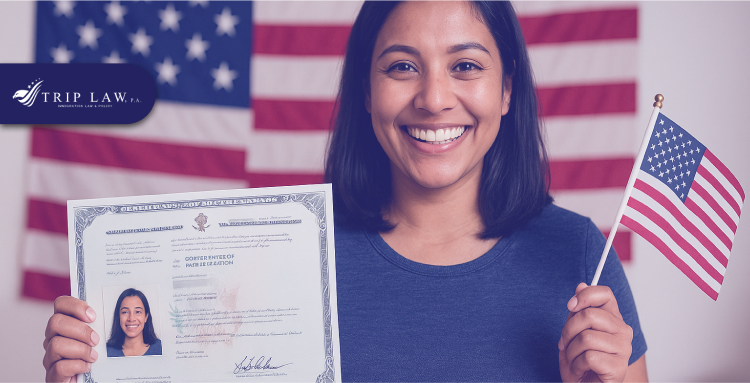
Planning to explore the world after getting US citizenship? Is your Naturalization certificate enough to make a safe trip? Hold on for a moment! Most newly naturalized US citizens are concerned about this issue. You can not make a safe and secure trip abroad without your passport.
After coming here with an immigrant visa, one of my buddies got the approval of naturalization and became a citizen. Then, he planned for an international adventure with his wife. After that, he was about to apply for his US passport but faced a lot of hassle as they had booked their air ticket two months earlier to save some money. Then, he discussed his urgency with me and I guided him with some options to collect his passport in a quick way without making any mistakes.
After that, he was able to apply for the passport accurately and got it before their flight. If you are wondering how you can apply for your passport being a newbie here, you are in the right place. Today I will guide you through the simple steps of applying for your passport after naturalization. So, get ready to explore the world with your brand-new passport…
Why is having a US passport important for a citizen?
Having a US passport provides a lot of benefits for the US citizens. It confirms your identity that you are a US citizen and ensures your protection from the US government.
Travel freak people can fully enjoy the benefits of this passport because they get the opportunity to travel to more than 188 destinations around the world without any visa. If you are one of them, a big congratulations to you! You can receive any kind of assistance from the local agencies in your traveling areas. And, you can access all government services and benefits.
By 2023, people with a US passport could travel to 173 locations around the world without a visa. But according to the rules of 2024, you can travel to 15 more places. So, we can expect that this number will continue to rise in the future and it will be really great for you.
How can you apply for a passport?
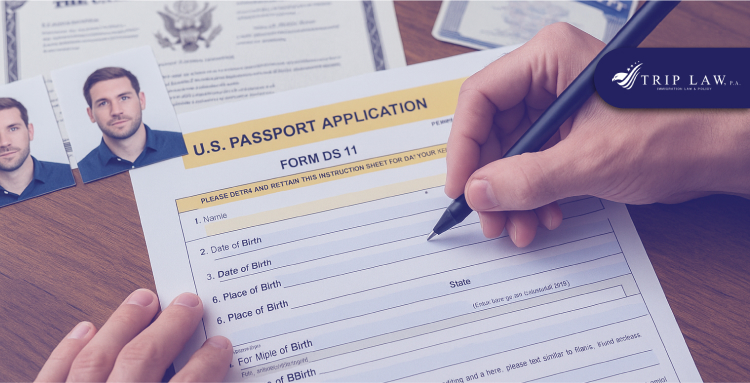
You have to follow certain steps to apply for your passport.
First, fill out form DS-11 to apply for your US passport.
At this step, you have to prove that you are a citizen of the United States. If you recently became a citizen of this country, you can use your naturalization certificate as proof of obtaining citizenship here.
If you are unable to show this certificate, there are some other documents that you can use to prove your citizenship like verified copies of your naturalization certificate or some primary and secondary documents. I am going to discuss these documents in the next section of this conversation.
You need to show a valid ID for this application. Valid ID indicates any kind of reliable official document that expresses your identification, such as your driving license or other foreign passport. Attach a photocopy of the front side of your ID card. If the back side of the ID card contains any written information, make a photocopy of this portion also.
You have to include two photos of your passport which must be taken within the last six months. Make sure you do not use any photo modifying filter in it. The photo background should be plain white or off-white. Don't forget to remove your glasses before taking the snap, otherwise you might be disqualified.
Now, you have to submit all the documents with your photo to apply for your passport. And, pay the required fee for the application. You can apply through mail or in person. As a newly naturalized US citizen, you can submit your application to your nearby post office or other government offices where passport approval facilities are available.
How can you provide evidence of your citizenship if you can not show your naturalization certificate?
To get your US passport you have to prove your citizenship by showing the original evidence of naturalization. You can replace your naturalization certificate if you lost it. But it will take some time. In such situations, you can provide some other documents that may prove your eligibility to get a US passport.
If you don't have the original copy of your naturalization certificate, you can provide the photocopy of it. If both sides of this certificate contain any written information, make a photocopy of them also. Or you can submit a certified or notarized copy of the certificate, which may also work in some cases.
Exclusive advice: You are not allowed to show any digital proof of soft copy such as submitting evidence through your mobile or other digital devices. You are only permitted to submit the photocopies if you don't have your original evidence.
If you don't have a photocopy of your naturalization certificate, you can submit some primary documents like your valid US passport even if it's not renewed. And your birth certificate. Since the newly naturalized citizen can not show their expired US passport, they have to submit their birth certificate or other valid certificates that prove their identity.
If needed, the passport agency may ask for some secondary documents, such as a birth certificate that is issued after 1 year of your birthday, called a delayed birth certificate.
What are the common mistakes people make during passport application, and how can you avoid them?
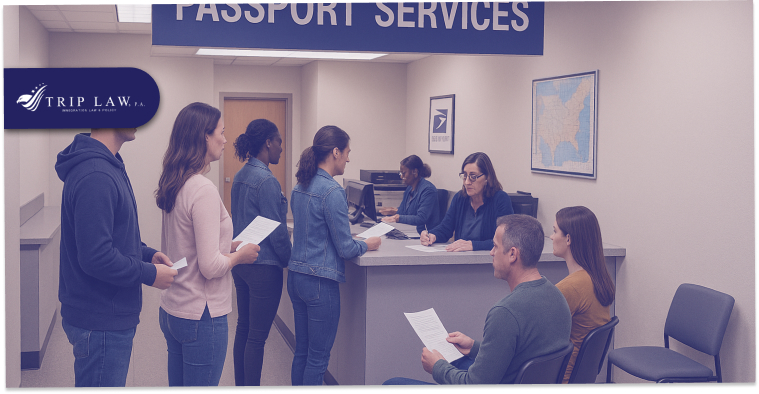
During applying for a passport, people make some common mistakes. You should avoid the mistakes and double-check your application before submitting it. So, what are the mistakes most people make during application?
Leaving the form incomplete: Complete the form with the correct information and accurate social security number.
Insufficient documents: You should submit all the documents that are asked to be given.
Not following photo specifications: Follow the instructions regarding photo dimensions and quality; otherwise, the regulatory authority will not accept your document.
Signing the form without instruction: If you are applying for the first time or applying with your child under sixteen years old, don't sign the form right away. Wait for their instructions about signing the form.
Not paying separate fees for both passport book and passport card: If you apply for both a passport book and a passport card together, you have to pay a separate fee for each. Some folks accidentally pay only for one, even when they're applying for both.
Not repaying child support debt before applying: If you have taken more than 2,500 dollars as a child support benefit, you have to repay it before applying for a passport.
Not protectively submitting the documents: In the case of an in-person application, you should accumulate all the necessary documents and application forms together and cover them by using a protective envelope. If you submit the documents in a disorderly manner, any necessary paper may be missing.
Recommended:
Dismissed Misdemeanour: Does it affect citizenship application?
What is the fastest way to get your passport?
If you need your passport quickly, four separate services are available. You can avail any of them based on your urgency. If you are a new citizen, you can go through the application process. But if you already have your passport, which has expired, you can renew it within a particular time.
If you have been planning to travel anywhere from the next 8 weeks to later, you can simply apply for the routine service to your nearby offices that provide passport acceptance facilities. This service takes six to eight weeks to process.
You can choose the expedited service if you are planning a trip within the next 8 weeks. In such situations, your application processing will be faster, within two to three weeks. And, it will take two weeks more to reach you after being printed.
If you need to travel within 2 to 3 weeks and don't have your passport, there are 2 different options available for you. If you have applied for your passport before and now you need it urgently, you can call the official contact number of the government passport center. Then, make an appointment with them five days before your trip.
On the flip side, if you have not applied yet for the passport, you can make an online appointment with the passport agency within 2 weeks before your travel date. You may get your passport within your desired period if you can successfully manage the appointment with the agency.
If you need your passport quickly, within 3 days, due to any serious illness or family member’s death, you can apply for an urgent passport according to the "death emergency” service. So, you have to show proper evidence, like a death certificate or other trustworthy documents that prove your travel urgency. Then, make an appointment within three working days before your trip. In such emergency situations, you have to call a different number of passport centers, which is only applicable to people who are in extreme urgency.
How can you protect your new passport?
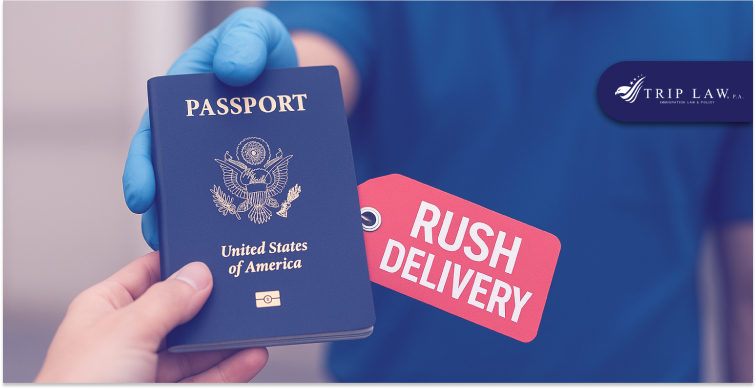
Store your new passport in a secure place. Use a passport cover to enhance the protection of your passport. Keep a photocopy of your passport in a separate place. Take a picture or scan it and save it on your electronic devices, because if you lose your passport while traveling you don't face any issues. Report immediately if you lose it to the nearby police station or embassy. If you go to another country for traveling, make sure to register your passport with the US embassy of that country, this will help to keep your passport safe. Plus they will inform you about any updates about travel rules, safety, or other necessary stuff.
In Conclusion,
Applying for a passport after your naturalization is not so difficult—just follow some simple steps carefully. Still, people make some common mistakes when it comes to applying for a passport.
In our short conversation, we tried to figure out how to apply for a passport in a simple way. We have also discussed the quickest routes to get it in emergencies. According to our comprehensive research, we found that many people make some errors when applying. So, we talked about those mistakes and how to fix them.
Hope you will find our discussion informative and interesting. If you have any queries about passport application, just ask in the comments. We will do our best to help. And, share this discussion with anyone who needs guidance on getting a passport after becoming a citizen.
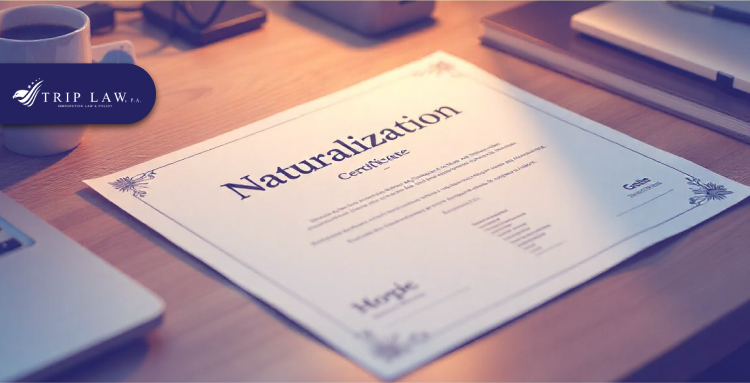
Lost your naturalization certificate? And, wondering how to get a replacement for it? A few years ago, during my vacation, I was planning a short trip to my home country. That's why I needed my US passport which I still didn’t receive after obtaining citizenship. But to apply for the passport I have to submit my naturalization certificate, as proof that I have acquired citizenship in this country legally. But I couldn't find my certificate anywhere.
I became so worried at that time and thought "Can't I enjoy my vacation with my whole family this time?"Then, I discussed this matter with one of my partners in crime working as an immigration attorney here. He suggested that I should apply to replace my naturalization certificate. According to his guidance, I applied for it and got my brand new naturalization certificate which is very special to me.
Today, we are talking about why exactly you need to replace your naturalization certificate and how you can replace it in the correct way. So, if you need a new naturalization certificate, don’t worry-it’s not too difficult. All you need to do is follow some steps and provide the appropriate documents depending on the purpose of replacing or changing your naturalization certificate.
Why replace your naturalization certificate?
Replacing the naturalization certificate is necessary if your certificate is lost, stolen, or damaged if your name has been changed after being married, or if you have mistakenly given any wrong information about your personal details. Besides that, when issuing the certificate, the United States Citizenship and Immigration Services (USCIS) made mistakes on it. In such situations, you can apply for a new naturalization certificate replacing the old one.
How can you apply for this?
If you want to get a new or revised certificate of naturalization, you have to fill out a form N-565 with your signature and pay the necessary fee. In this form, you have to mention your personal information and the particular reason for your application. Additionally, you have to submit some papers along with the form to prove that you have legally obtained US citizenship.
You can mail to the official email address of USCiS to request for a new naturalization certificate. Or you can make an online application for it. In the case of an online application, you have to create an account. When USCIS accepts your account, you will get updates about your certificate processing.
Then, you have to attend a biometric appointment by providing your fingerprint and photographs. After completing the required proceedings you will get your replacement naturalization certificate.
Who should not apply for a replacement naturalization certificate?
Us green card holders, going to apply for naturalization, can not request for replacing the naturalization certificate because they have not received their actual certificate yet. Similarly, those who got US citizenship by birth can not apply for replacement until they receive their citizenship certificate.
What supporting documents are needed for a replacement naturalization certificate?

You have to submit certain documents depending on the mistake of your original naturalization certificate.
Copy of your original naturalization certificate that needs to be corrected.
Proof of your original date of birth/ gender/marital status change, if necessary.
To prove your current marital status, show the evidence of a court order or your marriage or divorce certificate.
In the case of changing your name or date of birth, submit a copy of your original birth certificate.
If your first or last name got changed due to marriage, show the evidence showing your present name on the certificate.
Two copies of passport-sized photographs.
What is a certified true copy of a naturalization certificate, and when it's necessary?
A few moments back, I said that you need to show your original naturalization certificate as proof in case of correcting the errors. But if you have already lost your original certificate, how can you prove that you are a US citizen? Here, a certified true copy plays its role. So, if your naturalization certificate is lost, stolen, or damaged and you want to get a new one, you need to submit a certified true copy of your naturalization certificate. It's basically a copy of your original certificate, and USCIS will verify it before collecting your application for a new certificate.
How can you collect your certified true copy of a naturalization certificate?
To collect your certified true copy, you have to go through a process called authentication by the US Department of State. So, you have to attend an appointment with USCIS officers, take a photocopy of your naturalization certificate, an original copy if available, and your passport or driving license as proof of your identity. You can show your diving license here if you didn't get your passport yet. Then, the regulatory authority will verify your documents and provide you with a certified true copy of your naturalization certificate.
Which additional documents should you include if USCIS made any mistakes on your naturalization certificate?
If USCIS made any typing or printing mistake while issuing your certificate you can provide some documents to correct those mistakes And, you don't have to provide any application fee for it. Provide your original naturalization certificate with the specific typographical error and the evidence of correct information so that they can easily make the necessary correction on your certificate.
If your name is wrongly spelled, you can show them a copy of your birth certificate, and they will fix it without charging you.
What evidence is required to replace a lost naturalization certificate?

During applying for a replacement naturalization certificate, you must show the evidence that your certificate is truly missing or destroyed and explain how you lost it. To prove this, you must submit a police report from your nearby police station. If you do not collect a police report, submit a written statement saying you lost your naturalization certificate and you are telling the truth.
How can you fix errors on your naturalization certificate due to personal fault?
If there is a mistake on your naturalization certificate that is not the USCIS or the government’s fault like any changes in your personal information by yourself. In such situations, you have to apply to replace your naturalization certificate.
Note: You can not change your date of birth on your naturalization certificate if you provided it incorrectly while applying for naturalization by filling out the N-400 from.
How can you minimize the processing time for naturalization replacement?
The processing time for naturalization replacement usually takes less than a year. But sometimes it might be faster. To speed up the processing time, you must fill out the application form accurately and provide all the required documents. If you need emergency replacement, you can write a special application to the USCIS explaining the actual reason why you need this urgently. They will provide your certificate faster considering your situation.
Recommended:
Steps to change the immigration status of someone without proper documents.
To conclude,
Our life constantly goes through many changes. As a result, our personal life also changes a lot. Because of such uncertain issues, we need to bring some changes to our naturalization certificate also. And we do that for various reasons.
Today we have tried to explain such reasons that push us to modify or replace our naturalization certificate. Additionally, we have explained the application process for replacing this certificate in a simple way.
If you find our conversation useful, please let us know by commenting. Don't forget to share this discussion with anyone who lost their naturalization certificate and requires any modifications to it.
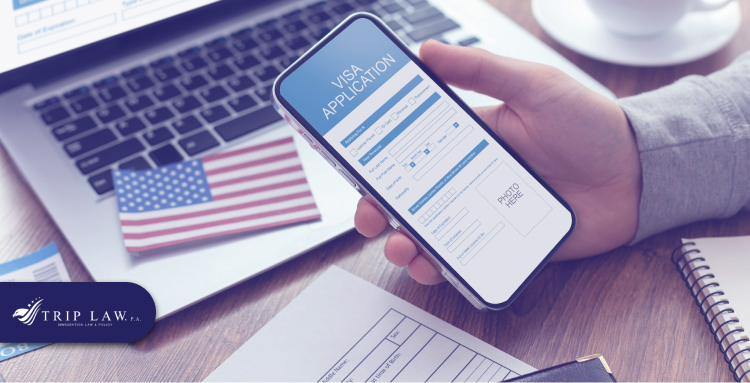
Excited about visiting the magical land of the USA. But how do you get a nonimmigrant visa for it? This is a common question for most people in different countries who want to have a short trip here due to various intentions.
A few months ago, my uncle wanted to visit the USA for business purposes. To make this happen he had to apply for a non-immigrant visa. But when applying for this visa, he made a serious mistake. He could not submit all the required documents during his visa application. Plus he was unable to show sufficient funding for the business project, which he is planning to do here. As a consequence, his visa application was rejected.
You can apply for various categories of nonimmigrant visas and have to submit the documents that are specifically needed for that particular visa category. You must have a good understanding of the requirements for these visas and the application process.
So, pay attention to our conversation, where we are going to discuss a more successful non-immigrant visa application experience, avoiding the common mistakes that most people make.
How do non-immigrant visas differ from immigrant visas?
Non-immigrant visas are given to people from different countries who want to come and stay in the US temporarily for different purposes. They do not come to stay here permanently and have to leave the US after their visa expires.
They come here for various purposes like tourism, business, study, temporary work, or for treatment. Non-immigrant visa holders get the opportunity of permanent residency by adjusting their visa status by applying for lawful permanent meeting some criteria.
On the other hand, people who enter here with immigrant visas have a purpose to live anywhere in the US permanently. Also, they get working opportunities with various government facilities as well. After coming here with an immigrant visa, they get permanent residency and citizenship in a faster way.
What are the most popular nonimmigrant visas in the USA?
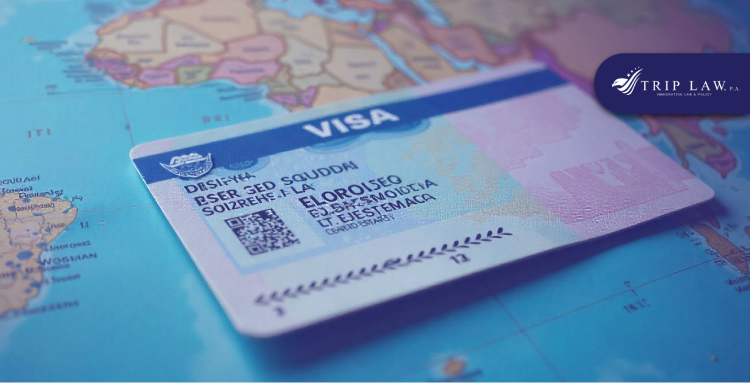
Before deciding on a short visit to the USA, you must understand the reason why you are about to come here. There are different kinds of non-immigrant visas and they are given based on your specific purpose.
Tourist or Business visa
These types of visas are for people who come here temporarily for business purposes (B-1 visa) or for tourism (B-2 visa). B-2 is also for activities such as medical treatment or visiting friends. Some employees and crew members may get B-1 visas as well.
Student visa
Many students from different countries come to the US for study purposes. To study here, you must be accepted by a school first. If you are eligible, the authority of the school will provide you with the documents for your student visa application. Both F-1 and M-1 visas are applicable for students.
If you are interested in academic studies at any approved college or university, you can go for an F-1 visa. This category of visa is also for students who want to get admitted to a public school in the US.
On the other hand, an M1 visa is for students who are not interested in any academic study, such as doing occupation or employment-based study or training at any US institution.
Work visa
Those who have a special work visa such as H1, L1, O, P, and Q, their family members get a dependent visa to come here. The rules and regulations may vary according to the visa type. For example, if you enter here with an L visa, you can bring your family members with you. In that case, your spouse will get the opportunity to work.
But if you come with an H visa, your spouse can not get permission to work. Those who have exceptional ability in any subject, come with an O visa. People interested in cultural activities, athletes, and artists get the opportunity to come here with a P visa. Similarly, A visas allow people to come here for cultural exchange programs.
Journalist and media visa
Journalists who are involved in news-related activities and want to do the same work in the US, come with I visas.
Ship crew or transit visa
Crew members who work on ships or international airlines can come here with type-D visas, which are also called crew visas.
On the other hand, if you are about to enter another country through passing the US, you need a transit visa, which ensures a certain time for transit here. But if you want to stop during transit for a certain period to meet someone, you need a B-2 visa.
Exception: Individuals who are on a visa waiver program, don't need a transit visa. I will discuss this program in the next part of this conversation. So, keep reading.
Exchange visitor visa
People from other countries, who are involved in science, arts, or other programs and work as teachers, trainers, or students in that particular subject, can exchange their work in the US.
They come here with J visas and can bring their dependents with them. To come here to those programs, they need sponsorship from the organizers of that program in the US. If the government sponsors the candidates for this program, they don't need to pay other fees as well.
Domestic employee visa
If you want to come here on a contractual basis to do any domestic work such as cooking, or taking care of babies or elderly people, you might be able to get a B-1 visa. If your employer is a government official appointed to manage sensitive situations or handle people, you need an A-3 or G-5 visa.
Religious worker visa
If you want to work and play religious activities temporarily, you can come with an R visa. To qualify for this visa, you need a minimum of two years of experience to work in a non-profit religious group in your home country.
How can you apply for different non-immigrant visas?
You have to follow some steps to apply for a nonimmigrant visa. But before that, choose the visa category that would be most appropriate for you.
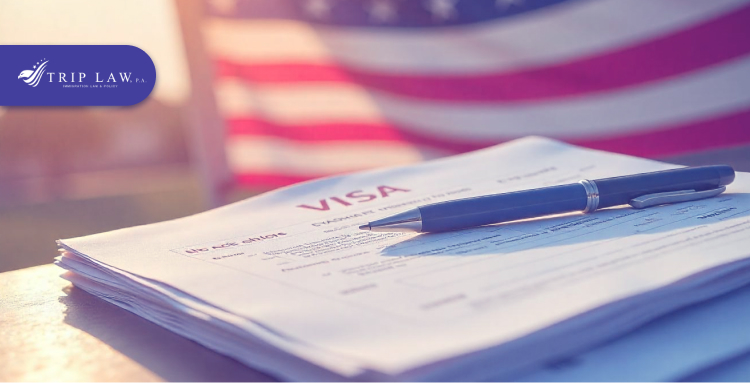
First, fill out a form DS-160 online to apply for any non-immigrant visa program. Provide all the necessary information correctly and submit the form.
After submission, print the confirmation page and the receipt of fee payment to pay the processing fee. These papers are also required for your interview.
If you are between fourteen to seventy-nine years old, you can sit for the interview in your nearby Immigration office or embassy.
During the interview, the regulatory body will check your eligibility to confirm that you are qualified for this particular non-immigrant visa program. So, you should take all the necessary documents along with you during the interview session.
The papers that you need to show must be relevant to the type of visa and your eligibility for this particular visa as well. Different kinds of non-immigrant visas need to meet different eligibility criteria. For example: If you want to come here for tourism (B-2 visa) you have to show fewer documents than other visa categories like investor visa (E-2 visa), where you want to do business here.
The consular officer will take the decision after the interview. If they need more information to decide whether to approve or reject your application, they will ask you for some other documents to submit.
This is the general formula to apply for any non-immigrant visa. As there are different kinds of non-immigrant visa categories available for different purposes, there might be some differences in the steps of their application. But you don't need to worry at all, as there is Trip-Law to handle your situation.
What can you do if you need to extend your temporary visa status?
Suppose, you came to the US for treatment purposes, but you need to stay here a little longer to complete the course of treatment. How can you extend your visa in that case?
You have to fill out form I-539 by asking for permission to stay some more time in the US and mention the actual reason for the visa extension.
Don't forget to extend your visa status before its validity expires.
When non-immigrant visa extensions are not permissible?
If you come here with a visa waiver program, you don't need to extend the visa. This program allows travelers from different countries to come here without any visa for up to ninety days. Similarly, people who come here with crew member visas can not extend their visas. Because their normal duties are completed within twenty-nine days here. So, they don't need to stay more than this specific period.
More for you:
Turning from illegal to legal: Embrace your chance for residency
Frequently Asked Questions

How long does it usually take to process a non-immigrant visa application?
You have to wait for at least 180 days after your interview and document submission. If you need an emergency visit, you can request the regulatory body to process your visa faster by mentioning the reasons.
Is it allowed to apply for a non-immigrant visa if you have a history of US visa rejection?
You can apply several times after getting rejected. It basically depends on the reasons for your rejection. So you have to update your information by learning the reasons for rejection. If your visa application was denied due to providing false information in the previous application, you might be permanently disqualified for the visa.
Do you need to fulfill specific sponsorship requirements for a non-immigrant visa?
Most non-immigrant visas in the US do not require sponsorship. However, some visa categories like H-1B, L-1, and O-1 need sponsorship from the US government or non-governmental organizations.
Is it compulsory to undergo a medical examination to apply for a non-immigrant visa?
It depends on the type of non-immigrant visa you are coming to the US on. Most non-immigrant visas do not require any medical examination report to show. If you visit frequently for tourism or business purposes you don't need a medical report. But if you are going with a K-1 visa you must submit your medical test report. A k-1 visa is applicable for individuals who come here to marry a US citizen within ninety days of their arrival.
Ultimately,
Applying for a non-immigrant visa in the USA is not as complex as you are thinking. It's all about having a sound knowledge of the visa category based on your particular purpose and the necessary information that you have to provide.
If you do not know which non-immigrant visa category you are qualified for, you can not submit the relevant documents for this visa program accurately.
Hope our little conversation will help you find a solution to all your confusion regarding the application for a non-immigrant visa. If you find this discussion useful, leave a comment and share it with others who are seeking guidance to apply for a non-immigrant visa program according to their needs.

Thinking about making the U.S. your permanent home? Wondering about the legal ways to immigrate here? Well, some folks consider taking the illegal route without proper papers, thinking they can sort things out later. But they don't realize the headache that comes with entering illegally.
I know a guy who tried crossing the border without permission and ended up getting busted. He had to pay a fine and spent time in jail. If you enter without permission and get a deportation order, you can't just come back. Life gets pretty tough in many ways.
Sure, the idea of moving to the U.S. is exciting, but it can be a real challenge if you don't understand the legal steps. So, what are the legit ways to immigrate, and how can you navigate the complex immigration laws hassle-free?
What are the options for immigrating to the US legally?
There are a lot of immigrant visa categories available for you. You can choose any of them according to your preference to avail the opportunity to stay in the US permanently. On the other hand, those who come with a non-immigrant visa for a certain period can also apply for permanent residency after coming to the US. However, they need to adjust their visa status before applying for a green card through various pathways. So, what are the routes of legally immigrating to the US?
Family Sponsorship
Those who have the opportunity to get a family-based green card can apply for different immigrant visas. But before applying, the US citizen family members have to sponsor you for the immigrant visa.
They can do this by sending a request to the immigration authority of United States Citizenship and Immigration Services (USCIS).
Which immigrant visas are open to family members of US citizens?
Visa based on immediate relatives: You can apply for IR-1, IR-2, or IR-5 immigrant visa if you have a US citizen relative. Here, an IR-1 visa is applicable for the spouse of that US citizen. Similarly, IR-2 is for children under 21 and who are not married. Lastly, IR-5 is designed for parents who have a US-citizen son or daughter.
Visa based on family preference: First, second,third, and fourth preferences of family visas are applicable for the relatives of US citizens. These visa categories are designed based on the closeness of the relationship with the citizen.
Sons and daughters of a US citizen can apply for an F-1 visa, they are considered as the first preference here.
F-2A and F-2B visas are the second preference of family based green card programs where F-2A visa is applicable for the relatives of green card holders. However, the F-2B visa is for the adult child of US citizens who is over 21 years old.
Children of US citizens who are married, plus their spouse and kids can apply for an F-3 visa.
Brothers and sisters of US citizens with their family members can come to the US by applying for an F-4 visa.
Sponsorship through work visa
Individuals from different countries come to the US through various work visas. Those who have special skills in a particular area can apply for sponsorship from US employers through various employment-related green card programs.
Both immigrant and non-immigrant visas are available for people who want to work in US organizations. If they think you can make a significant contribution to the particular US company, they will also want to have you for their business development. As a consequence, they will sponsor you for a green card. And you will get permanent residency here.
You can apply for company sponsorship from your own country through an immigrant visa if you have special skills. If you come with a non-immigrant visa, you can also apply for this work-related green card.
Winning lottery
Every year the US government arranges a Diversity Visa (DV) program. They provide a huge number of immigrant visas to the people of different countries through lottery. You can participate in this program and win an immigrant visa lottery if your luck favors you. You have to follow the provided instructions for the DV program from their official website.
Just remember: You can not register for this program more than once. That means, per person, a single entry is allowed. If you register more than once from a single ID, they will detect it through technology and you will be disqualified.
Long time residency
Those who entered here before the first January of 1972 with or without government permission, and stayed here consistently without leaving, can receive a green card.
What are some other Immigration opportunities available for you?

Special immigrants: Employees of international organizations, media, and religious personnel are considered as special immigrants, they obtain green cards due to their contribution to the US government.
Human trafficking victims: If people of T non-immigrant visa holders help the US police to investigate human trafficking cases (Forcing someone to do unlawful activities), obtain a green card.
Victims of criminal offenses: When people with a U-1 non-immigrant visa, suffer a serious crime and help the police to investigate those offenses, get permanent residency easily.
How does the humanitarian green card help people seeking legal immigration to the US?
Asylees and refugees get humanitarian support from the US government. So, they can apply for green cards and adjust their visa status.
Asylees: After coming to the US temporarily, those who seek protection from any kind of violence in their own country if they return, can apply for asylum here. After completing 1 year with asylum status they get the legal right to apply for permanent residency.
Refugees: People who do not feel safe in their own country come here as refugees. Just like the asylees, they can adjust their status to obtain permanent residency after completing 1 year with a refugee status.
How can you apply for various immigration processes?

If you want to legally immigrate to the US, you must go through several steps from visa application to green card approval.
First, you have to determine your eligibility for visa application. There are different kinds of immigrant and non-immigrant visa categories available. You can choose any of them based on your qualifications.
If you have opportunities to get a green card through family or employer sponsorship, you have to apply for a related immigrant visa. But before that, the sponsoring US citizen family member has to file a petition or request to the government to bring you here. So, they need to fill out a form I-13O. Once the request is accepted, then you can apply for an immigrant visa to move here. If you are already in the US with a non-immigrant visa, you can apply for adjustment of status.
Similarly, in the case of a work-related green card, your employer needs to fill out a form I-140. This is necessary to get permission from the US government to bring you here so that you can work for their organization.
If you are inside the US, fill out a form I-485 to apply for a green card or adjustment of status. But if you are coming with an immigrant visa from your own country, fill out a form DS-260.
If you are getting a green card from your family or US employer, you must fill out form I-864. It needs the sponsor’s signature, who is taking your financial responsibility.
If you are applying from your home country your nearby embassy officers will process your application. On the other hand, if you are applying from the US, USCIS officials will process your application. Once the processing is completed, they will invite you for a biometric appointment.
During the consular interview, the officials will take your biometrics and
you have to submit the report of your medical examination.
If your medical report and other documents are okay, you have to attend the final interview at the consular office.
After the interview, if everything is right, your application will be approved. If you have attended the interview from your home country, you will get a US immigrant visa in your passport. But if your interview takes place in the US, you will get a green card or permanent residency.
To Sum Up,
Folks looking to move to the US have a shot at getting permanent residency and eventually citizenship through legal channels. Now, those on non-immigrant visas can chill here for a bit but need to head back home after a while.
If you're dreaming of putting down roots here for good, it's smarter to roll in with an immigrant visa. Sure, non-immigrant visa holders can snag permanent residency too, but there's some extra hoops to jump through for that green card. Today, we're laying out the options that could set you on the path to legally immigrate and settle down here for the long haul.
If our discussion helps you figure out the immigration route that fits your situation, drop a comment. And share this convo with others who are all about coming here the right way and getting some expert advice.

Venturing into green card consular processing? But really worried about the hurdles that you are going to face, right?
Well…then I would like to share my green card consular processing journey with you. This process is meant to grant permanent residency in the US.
The challenge started when the consulate asked for some extra documents that I hadn't gathered before. Then I took some time to collect those papers and submitted them all. The next puzzling phase of my journey was attending the consulate interview, creating a hurdle in the already complex process. The consular officer investigated every detail of my case by asking so many questions one by one.
After a week of anticipation, I got the most awaited moment of my life….the mail of green card approval! So, how can you prepare yourself for this journey, and bypass the common mistakes smoothly that most applicants make? Well…then get ready to experience the green card consular adventure with me!
Green Card consular processing, why is it necessary?
Consular processing is the final step of getting a green card. Those who are trying to live permanently in the land of opportunity apply for permanent residency via consular processing. But this process is only applicable to candidates who are about to come here as an immigrant.
So, foreign nationals trying for immigrant visas from different countries, need to go through consular processing. In the last step of their visa processing, they have to attend an interview at the nearby US Embassy or consulate office. It's not applicable to those who are already living in the US and looking for permanent residency.
How does consular processing differ from other methods of obtaining a green card?
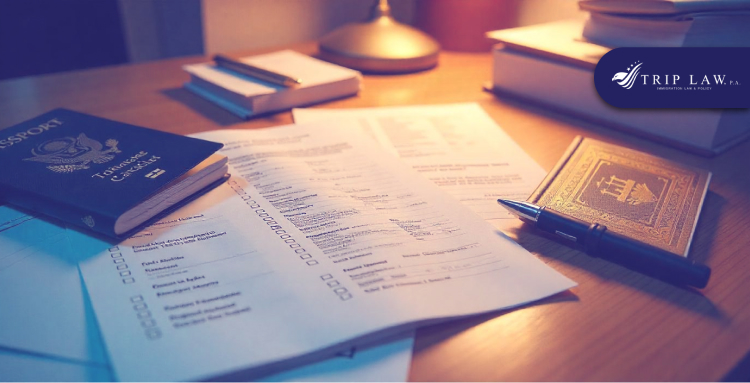
Do you get what “other methods of obtaining a green card” mean in this context? Another method is basically “adjustment of status” (AOS)- which is only for those who are already staying here with other non-immigrant visa categories (different status), and now looking for a green card to stay here permanently. So, what are the basic differences between these two processes?
People who come here with a temporary visa, need to adjust their visa status through AOS after completing certain procedures, then they get permanent residency. On the flip side, those who are coming with a permanent visa can directly apply for a green card through consular processing.
You can't travel from your home country until your consular processing is completed. But if you are going through AOS, you can travel and return to the US if you receive travel authorization from the immigration authority. So, you must fill out a form I-131 to get your travel document.
What are the key steps of consular processing?
The consular processing of green cards involves some steps. So, what are those steps and how long does the entire process typically take?
First, understand the reason why you want to move here. Is it for family, work, or some other purpose like traveling or business?
Now, you have to file a petition based on the reason for your arrival in the US. In the case of family-based sponsorship, fill out a form I-130. If it's an employment-based sponsorship, fill out form I-140.
Then USCIS (United States Citizenship and Immigration Services) will review your application and inform the petitioner (your family members or employer) about their decision. If they approve your application, the process moves to the National Visa Center (NVC). Now you have to fill out a form DS-260 to apply for an immigrant visa based on your petition.
NVC handles the documents after USCIS approval. They will inform you about your petition, the expected time for visa availability, the required fees, and documents.
If the USCIS already approves your application and informs you of the approval notice, then you can fill out a form I-824 if needed. But when do you need to fill out this form? If you lost your application approval notice and want to get a new copy, then you can use this form. Similarly, if you want to know any updates about your visa, filling out this form would be beneficial.
Once a visa number is available, your case will be transferred to your nearby consular office. They will give you an appointment letter to attend an interview.
Before the interview, you have to undergo a medical exam and provide biometrics. Then, the embassy officer will check your documents and ask you some questions.
According to your eligibility and authenticity of the documents they will decide whether to give you the immigrant visa or not.
In the case of any changes in your personal information like your marital status or address, you will have to notify the NVC through mail. Otherwise, it will affect your visa availability. So, you can communicate with NVC by filling out a form DS-261.
If the consular officers approve your documents and are satisfied with your answers, you will get an immigrant visa. However, you are not allowed to open your visa packet before arriving in the US. Once you arrive at the US port, you have to give this packet to the Customs And Border Protection Officer. They will check if everything is okay. Then you are allowed to work and live here permanently. After three months of your arrival, USCIS will mail you attaching your green card.
Are there specific requirements for the green card consular processing?

As green card consular processing is applicable for immigrant visa applicants, you have to determine your eligibility for the particular immigrant visa.
Eligibility criteria for consular processing:
Having US citizen or green card holder family members who are going to sponsor you for a family-based green card program. These immigrant visas are given based on family preferences such as F1,F2A, F2B, F3, F4 or some other visas.
Managing a US employer as a sponsor through your skills and experience in a particular subject. They can come here through EB-2 or EB-3 visas.
Those who have a US citizen spouse can apply for a marriage-based green card. Candidates who are eligible for a CR-1 visa (Provide a conditional green card which is valid for two years) and then an IR-1 visa (non-conditional or permanent green card, valid for ten years) can apply for these spouse visas.
Documents needed:
When USCIS accepts the green card application, they send an I-797 notice to the applicant for an immigrant visa in response to the I-130 and I-140 petition. You can use this approval notice for further processing.
Application form of consular processing.
Evidence of your last residence until you turned sixteen.
If you were involved in military service, you have to show your certificate.
Your valid and updated passport, and birth certificate.
You have to submit your marriage certificate if you are married.
Medical exam report, vaccination record.
Information about employment from the last ten years (Reference letter from your previous working organization, if you are coming through employer sponsorship).
Police clearance certificate from your home country to show that you weren't involved in any fraudulent activities in the past.
What challenges might people face in the case of consular processing?
If you are not eligible for the particular immigrant visa that you are applying for, or if the consular officer finds any false information in your documents, they may reject your application. Your visa processing may be delayed if the documents you provided are incomplete or inaccurate.
In the case of consular processing, if your application is rejected, you can not appeal to the court.
If you get a green card through marriage, it might be temporary for two years (CR-1 visa). If you are still married after two years you need to apply for a permanent green card (IR-1 visa) ninety days before your anniversary. If you can not do so, your green card will be ended and you will go through removal proceedings.
Special tip for successful consular processing
Ensure all the required documents are accurate and submitted on time. You should take a good preparation before facing the interview by knowing the details about your visa and petitioner. Try to provide truthful and concise answers with confidence. Do not provide any wrong information if you are confused about the answer.
When is consular processing better than adjustment of status?

You already know that, if you want a green card in the US after your immigration petition is approved, you have two choices: adjustment of status or consular processing. Both of them are applicable for different purposes. But in which situations, you should go for consular processing rather than adjustment of status?
The time required for green card consular processing and AOS varies depending on the type of sponsor. If the sponsor is a US citizen, processing will be faster. But if the sponsor is a green card holder it might take some more time. However, compared to consular processing, AOS takes more time for green card approval.
In the case of a family-based visa, the time for consular processing takes approximately five months to a year. Again, for work-based visas, the processing period takes four to six months. On the other hand, you have to wait almost two years to obtain a green card through AOS.
In the case of AOS, you have to adjust your visa status 180 days before your employment period expires. This is applicable to people who come here with a temporary work visa. Similarly, if you become illegal or convicted of any criminal activities, you are not allowed to apply for AOS. But through consular processing, you can have a fresh start securely, as you are coming with a permanent visa.
Consular processing helps you get a work permit directly. So, you don't have to apply for an individual work permit opportunity after coming here.
It is an affordable and time-consuming option to get a green card because you don't need to travel to the US to apply for your green card.
Wrapping up,
The journey of green card consular processing was really so challenging for me and I could successfully overcome the obstacles. In our short discussion, I have tried to share the application process, eligibility, and documents that you need to show during the interview so that you can easily handle any unforeseen situation with confidence in the entire process.
If you find our conversation useful in successfully dealing with your consular processing case, leave a comment to let us know. And share this information with others seeking guidance about consular processing to obtain their most awaited green card.

Do asylees have to go through getting green cards to become US citizens, or is there a quicker way? This is a common question for many asylees aiming for citizenship in a shorter time. A buddy of mine came to the US because he was afraid for his safety back home. Some folks in his country were trying to harm him.
So, he came here seeking safety and help from the US government, facing troubles in his homeland. Within a year, he applied for asylum, and it got approved in just six months.
Next up, he has to apply for a green card. After being a green card holder for 5 years, he can become a citizen. Seems like a long process, right? But my friend doesn't want to wait that long. He's looking for a way that takes less time than the usual routine.
So, is it possible to apply for citizenship without going through the green card process? Or is there some other way?
Is it possible for asylees to apply for citizenship without a green card?
Before that, I want to ask you a question. Do you know what exactly a green card is? Well…having a green card allows people to live in the US permanently. Before providing citizenship the regulatory authority wants to observe you for a certain period. Because, if they find any kind of problems in your moral character, they will reject your citizenship application immediately.
Apart from that, asylees will get some facilities from the government in this transition period. So, just like other non-immigrants, the asylees have to apply for a green card before getting citizenship. But there are some more options available for you.
How does a green card help asylees?
You can apply for a green card after one year from the day your asylum is granted. Your spouse and kids can also apply for a green card if they were included in your asylum approval. When you are waiting for a decision on your asylum application, you can still try to get a green card if your family or a US employer sponsors you. It can provide an added benefit by securing your visa status, especially in the case of asylees. But how?
If you are an asylum seeker or asylum holder, it's quite risky to stay here without adjusting your visa status via green card application. Within these five years of the transition period, anything may happen. Your situation might be different or things may change in your home country, then you can not stay in the US anymore. You have to leave this country. To avoid such incidents, you can apply for a green card and secure your residency here.
Navigating the green card process (A simple guide for asylees)
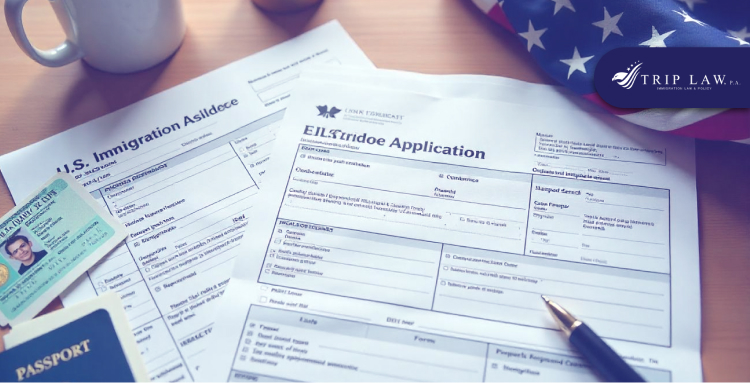
Getting a green card can help you with a lot of benefits. The most important advantage could be getting legal protection from deportation. As an asylum seeker, leaving the US could be really scary for you. So, here is a simple guide for you to get a green card via some easy steps. Let's explore them!
Adjustment of status: After completing one year with asylum status you have to fill out form I-485 to register for permanent residency.
Report of medical exam and vaccination record: Fill out form I-693 to submit the reports of health examination and vaccination status.
Application fee payment: Provide both the application fee and fingerprint fee. In the case of applying with family, you don't need to pay a fingerprint fee for kids who are less than fourteen years old.
Copy of travel record: Fill out form I-94 to let the regulatory body know when you arrive or leave the country.
Asylum approval notice: Since your asylum is granted, you must submit a copy of your asylum grant. When it's not possible, you can submit a copy of the court order about your asylum approval.
Background information: Asylees of age 14 to 79 need to fill out form G-325A by providing their personal details. Also, attach two passport-size photographs with the documents.
Translated version of another document into English: You must attach a document in your home country language, which is translated into English by an expert.
Applying with family: You can fill out a separate form I-485 for you, your spouse, and children who have already been granted asylum and are now seeking permanent residency. Then combine all the documents and submit them together.
Exploring citizenship options for asylees (Beyond green card)
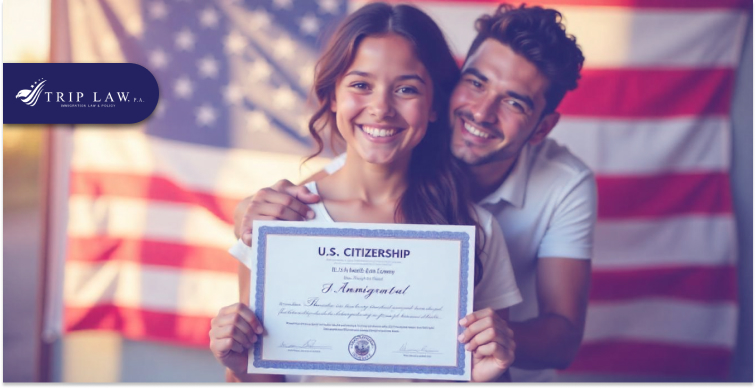
You already know that it's really crucial to receive a lawful permanent residency to ease your journey of getting citizenship. But if you want to avoid the green card proceedings due to not becoming eligible for it, you can go for another approach.
Understanding citizenship requirements
If you are an asylee seeking citizenship, must fulfill all the criteria before applying for it, like meeting good moral character and other naturalization requirements. To apply for citizenship you must maintain five years of lawful permanent residency.
Exceptions for asylees in the naturalization process (Updated Rules)
Since you are about to get citizenship as a foreign individual, you have to go through the naturalization process. So, what would be the naturalization steps for asylees?
Maintaining Asylee status: You have to maintain asylee status for at least one year.
Completing residency requirement: Complete five years of residency status.
Ensuring physical presence: Maintain physical presence for at least two and a half years with minimal foreign travel.
Strong ethical behavior: Keep doing good things throughout your residency time here, like helping the people in a particular area or doing activities that make you look like a strong candidate for citizenship.
Level of English proficiency: As a part of your application, they will check how proficiently you can read, write, and speak in English.
Passing a civics test: In this test, they will examine how much you know about the historical background of the US government.
Applying for naturalization: You need to complete form N-400 if you are eligible for all the requirements of citizenship.
Paying fee: This step is for paying the required application fee.
Attending a biometric appointment: You have to attend a biometric appointment where they will take your photo and fingerprints to verify your background and confirm your identity.
Sitting for an interview: In this step, the citizenship authority will review your documents and assess your knowledge by taking the civics test.
Taking the oath of allegiance: You have to make promises that you will be a loyal and dutiful citizen in the US after getting your naturalization approval.
Good news for asylees: According to the new residency rule of 2023, asylum seekers who can not speak English properly or don't understand it, can bring someone during the interview who can help them by translating the English language into their native language.
Marrying a US citizen
If you get married to a US citizen, you don't need to maintain five years of residency status. After completing three years as a permanent resident, you can apply for citizenship. This is applicable for asylees as well. So, when you complete one year of asylum, you have to wait only two more years for citizenship application. This may ease your way of getting citizenship.
What happens when asylum seekers skip green card applications for citizenship?
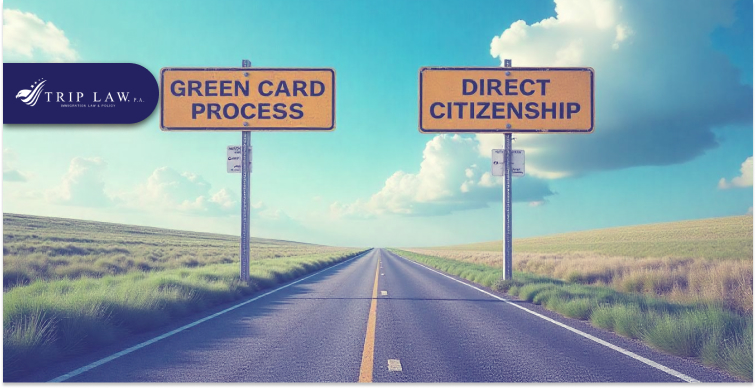
If you skip the usual green card processing, you may face some difficulties. So, what might be the consequences? You should know about all of them before making the decision.
Potential obstacles in the absence of a green card
Before getting a green card, you might experience some challenges. You can handle them by following some useful tips. We will share those tricks with you. But first, understand the limitations.
Employment restriction: As an asylee after getting your employment authorization document, you can easily work here legally. However, if you lose your job anyhow before getting a green card, there would be a minimal job opportunity for you. You can not easily get a good job. But if you are here with a work visa, this will not cause any problems.
Travel limitation: If you receive a green card from asylum status, you can easily travel to your home country. But, if you do not get a card, traveling outside could affect your eligibility for citizenship. If you stay more than six months abroad, you can not come back here again. As a consequence, you have to pay a fine, which could be more than the cost of your citizenship application. So, consulting with a reputable immigration expert could be effective in navigating this situation.
Is there any faster way for an Asylee to get citizenship?
Most asylum seekers get demotivated thinking they have to go a long way to get citizenship here. But many of you don't know about how to reduce the timing of this statutory period and obtain citizenship faster.
Rollback concept: Best approach for asylees to get citizenship sooner
According to this strategy, the citizenship authority will count your first year after getting asylum approval as a permanent residency period along with the additional four years. So, what is the benefit? The time you spent here as an asylee has become counted in such a way that you are already a permanent resident.
As a result, you don't have to wait so long. Otherwise, you would have to wait a total of five years after getting your green card to become a citizen.
Special tip: You already know that you can speed up the naturalization proceedings by following the rollback concept. However, you can start applying 90 days before your 5 years of residency period ends. If you follow this trick, the processing will be more rapid.
Choosing the quick and trouble free journey to citizenship (Concluding thoughts)
Obtaining a green card is the prior condition of getting citizenship. However, you can skip this step in some specific cases, depending on your situation and preference. Rules might change for asylees any time.
According to our perspective, we will suggest both approaches whatever matches with your current condition. But following a rollback strategy for asylees to get citizenship would be the most rapid and trouble free pathway.
So, today we have tried to explain the benefits and drawbacks of both routes. Plus, the shorter ways of getting citizenship for asylees here. If you think, we could make a little contribution to solve your citizenship issues, please comment to let us know. Share this discussion with anyone looking for a short cut pathway to achieve citizenship from asylum status.

Did you know that there were about 10.5 million unauthorized immigrants living in the United States in 2021? And in 2022 that number was increased to 11.35 million. That was quite a lot! Those people think once they enter the US illegally, they will continue to have a better life. NO! It’s not true. Rather their life can be much more difficult than they can imagine. Even worse, if they get caught it can lead them to deportation. In the end it can cause monetary issues, separation from loved ones and other immigration problems.
So, how can an unauthorized immigrant become legal? It’s so easy. Get a long-term legal status. It can be through marriage, family sponsorship, employment and some few ways. All of them can help you get a green card, permanent residency, and at some points, American Citizenship,like dreams come true but in a legal way! But will everyone qualify for these paths, or what other ways to be legal except marriage and family?
What Is “Illegal Immigrant”
Illegal immigrants are those who enter into the US. without any legal immigrant status. They are often called undocumented or unauthorized aliens, migrants. I'm pretty sure most of you are familiar with the term “EWI” or “Entered Without Inspection”.
Basically it means when you come to america without inspection or with an expired valid nonimmigrant visa like student or tourist visa. It’s more like you just escape from interaction with a U.S. border agent!
However, “EWI” is a very serious offense. Because it can cause you removal, imprisonment, and ineligibility to get a visa or adjusting status in future. While the DACA program protects around 650 thousand childhood entrants, it is still not a legal immigration status. It’s more like a temporary answer for limited advantage. So, they also need a valid path to become legal.
Who Are Considered As Illegal Immigrant
To be specific-
Person who crosses a border without being inspected by an immigration or border patrol officer.
If somehow crossed legally through a valid visa but stayed over with an expired one.
Violating the terms and conditions of the visa like working as an unauthorized employee, changing employees with authorization or getting married.
Having an entry through the DACA immigration policy.
Can An Illegal Immigrant Become Legal Resident In U.S.

It’s true that our ‘Dreams Come True’ country’s rules and restrictions are quite strict and well-maintained. It can be a little hard for some people, but it is for everyone’s safety as well as country’s. So, can illegal aliens become legal in america? Yes they can.
But U.S. immigration, whether temporary or permanent, is largely restricted for work based, daily based, and humanitarian protection based legal options. Mainly they are controlled strictly with eligibility limits.
As a result, the majority of illegal immigrants lack the essential family or employment links. And most of them become unable to get refugee or asylum status. So one thing’s clear - no matter how long you have stayed in the U.S., you have no chance to gain legal status, especially for illegal immigrants.
Even if you pay taxes, work hard, but still don't meet the eligibility, then no you can’t be a legal one, nor a citizen, unless congress offers you a new road to legal status.
Many of you may ask that, as an illegal immigrant, can you become legal after staying 10 years in the country. Well , if the above issues are applicable to you, then no you cannot be a legal resident or citizen.
One thing you should know is that, as a undocumented immigrant, you came to the US without legal permission, cannot get green cards and ‘adjusting status’ while you are here.
You have to leave the country and apply for a visa first. But this can be quite risky. If you stayed in the US illegally for more than six months, you cannot come back for three or ten years, depending on how long you overstayed.
There are some exceptions, but they are hard to get. So, even if you have a chance to get a visa, you may lose your family in the US for a long time. But if you ask me that can you apply for citizenship, then well, you have to wait until the current legal immigration backlogs are addressed before applying for lawful permanent status.
How Can An Illegal Immigrant Gain Legal Residency : 7 Ways!

As I said, the obvious goal to become legal,especially for illegal immigrants, is to choose a long-term lawful immigration status while fulfilling all the requirements. Because, these ways are not just ordinary ways for legitimate status. They can lead you to holding a green card (permanent resident) to direct U.S. citizenship.
So, the following 7 ways allow you to apply for a Green Card application and receive lawful permanent residence status.
Green Card via Marriage or LPR
Getting married to a U.S. citizen or LPR is the one of the fastest and common ways for illegal migrants to become legal. You have heard of visas called IR-1 and CR-1. Both visas provide similar privileges but the difference is time.
IR and CR applicable for immediate relatives. An immediate relative is a foreign spouse of a US citizen. What I mean by time difference is that IR is a permanent green card, whose validation limit is up to 10 years. But CR is a conditional green card and valid till 2 years. Getting a green card for an immediate relative of a US citizen may be a very simple process. In fact, a lawyer may not be required at all. You need to follow certain conditions. Otherwise, the procedure becomes more complex. However, there are generally possible ways to achieve legal status.
Family Sponsored Green Card
Not only foreign spouses, in the category of IR or immediate relative, parents and unmarried children (under age of 21) are also included. Foreign children are categorized under IR2 visa and foreign parents are IR5.
If the immediate relatives entered the United States lawfully, he or she can change status to permanent resident. Another word, an illegal undocumented immediate relative may apply for a green card from within the United States in most cases. You see, how a lawful entry is must and essential. After entering the U.S., an illegal immigrant or relative must have the valid document, and face immigration officer so that he/she can confirm that person’s entry. So, if someone stays in the U.S. longer than their visa allows and then marries a U.S. citizen, they can usually get a green card without leaving the country. It does not matter how long they overstayed their visa; they can still try to get a green card.
Citizens of the United States can request their spouses, parents, children, and siblings. But on the other hand, green card holders can only apply for their wives and children. U.S. citizens can bring their spouses, parents, and young children to the U.S. without any limit. But there is a limit for other relatives.
The U.S. relatives need to prove that they can support their foreign relatives. The foreign relatives need to follow some rules to get the visa. Illegal immigrants need a U.S. relative who can help them and follow the rules to get a family-based visa.
Asylum Status
In the previous year 2023, there were 60,014 refugees taken in the U.S. refugees or asylum seekers are those who experienced persecution in their own country, or have that fear of getting persecuted if they returned to their home country.

This persecution or torment is not just done by one or two people. It must be done by a high authority like the government, or a group that couldn't be controlled by that country’s government.
According to US immigration law definition, persecution is categorized in 5 classifications, like ethnicity or race, religion, nationality, involvement in social group, or political opinion.
To get asylum status, you need to do 4 things:
Be in the United States (legally or illegally);
Show that you were harmed or threatened in your home country, or that you have a good reason to fear harm or threat if you go back;
Prove that the harm or threat is because of one of the five reasons listed above; and
Not having any involvement in anything that would make you ineligible for asylum.
So, if you have already hired an immigration lawyer, he/she must file Form I-589 ( Application for Asylum and for Withholding of Removal) for you to start the case. Your lawyer also must gather all the possible evidence that can help support your case. You will also have an interview to check if your case is valid. That is why you should work with a renowned organization (non-profit or legal firm) that has years of experience in handling asylum cases.
Do you know the best part? Refugees whose asylum status has already been granted, can apply for a green card after just 1 year. So it can also be considered as an easy way to get permanent residency. Even asylee’s spouse and children can also apply for a green card if they came to the US as asylum seekers.
PR Through LIFE Act Protection
Another way you can become legal residents from illegal aliens is through Life Act Protection. This is a law that helps some unauthorized immigrants who have good education and skills to get a green card through a U.S. employer.

The employer may need to take some steps before asking for your employment visa. But as an employee, you may also need to go back to their home country to finish the process. Because you came or stayed in the U.S. illegally. The LIFE Act lets you stay in the U.S. and get a green card if you or your parents had a visa petition filed for you by April 30, 2001.
For example, if your father had a visa petition filed by his U.S. citizen brother by that date, then you can use the LIFE Act to get a green card. Easy to Go!
U Visa for Victims of Crime
U visa - for those people who are not citizens and who were hurt or threatened by some crimes inside the United State. This U visa was introduced in 2000 to help victims work with the police and the court without being afraid of being deported. Obtaining a U visa not only gave legal status, but also work permission, and sometimes a way to get a green card or PR status.
There are four eligibility criteria to get a U visa, they are-
You must prove that you are a victim of criminal activity and have severe physical and mental assault because of that crime.
You have information or evidence relating to that criminal activity.
The crime should be qualifying criminal activities (that violated U.S. laws).
You have to help or be ready to help the police and the court with the crime.
For a U visa, you need to fill up form I-918(Petition for U Nonimmigrant Status). But along with this form you need another form just to clarify the statement that you are being helpful, from security agencies. Sometimes, other people like a judge or a child protection worker can give the statement.
If you want to include your eligible family members in your request for temporary immigration benefits, You can use Supplement A (Petition for Eligible Family Members of a U-1 Recipient).
PR Through Registry
Registry is a part of our immigration law that lets some illegal migrants who have lived in the U.S. for a long time, to become legal residents (LPRs).

To qualify for registry, you need to:
Have came to the U.S. before January 1, 1972.
Have stayed in the U.S. without leaving since then.
Have good moral character.
Eligible for citizenship or naturalization.
Under Immigration and Nationality Act (INA), you are not eligible for removal or deportable, inadmissible or a criminal, procurer, immoral person, rebellious, drug offender, or noncitizen smuggler.
You need to fill out a Form I-485 (Application to Register Permanent Residence or Adjust Status) to apply for a green card through the registry. Along with this form, you need to gather some proof of when you came, how long you stayed, and how good you are.
Green Card Through Non-LPR Cancellation or Removal
This is a last option for some illegal immigrants who have been in the U.S. for a long time and are facing deportation. You may be able to get legal status and a green card through Non-LPR Cancellation or Removal.
So, what’s the requirements to qualify this one? Here what you need to have:
You have stayed in the U.S. without leaving for at least 10 years.
You need to show that your U.S. citizen or permanent resident spouse, child, or parent would suffer a lot if you are deported.
You must be a good person or have good moral character for the past 10 years.
You have not committed any serious crimes or law violations.
Although you cannot apply for this benefit by yourself. If and only if you are in immigration court, then you can only use it. The requirements above are just minimum and must. Furthermore, there is also a limit of 4,000 green cards given every year under this law. That means many people who meet the requirements but still unluckily do not get the cancellation of removal.
Therefore, you need to get help from an immigration lawyer who knows how to fight deportation and prove your hardship.
How Can An Attorney From TripLaw Help You Gain Legal Status?
In the Land of Dream, America, all immigrants whether legal or illegal, have the right to a decent life. It doesn’t mean if you came to the US illegally will revoke your immigrant privileges. If you are an unauthorized or illegal immigrant or worker seeking a better life in the United States, you can contact TripLaw‘s experienced attorneys. We have years of expertise, trustworthy and helped many poor immigrants who seek legal residency.
We not only helped numerous immigrants, but also their families and children to get legal status. TripLaw attorneys can assist you in obtaining citizenship so that you can live comfortably in the U. S. following your immigration.
So, what exactly are you waiting for? Call TripLaw at (863) -599-6735 today for immigration options!

If you are an illegal immigrant hoping to legally work and get permanent residency in the US, you will typically need a US company to sponsor you. But think about this. If a company hires someone who isn’t allowed to work here, it could affect their reputation and they might face consequences.
The government doesn't usually permit a company to sponsor someone who isn’t legally allowed to live in the US. Many people from other countries deal with this situation, trying to get sponsorship but facing hurdles because of their immigration status. Companies have their own rules about hiring undocumented immigrants too.
In simple terms, if you are illegally in the country, companies can't usually sponsor you. However, there are some exceptions for certain illegal immigrants when it comes to sponsorship. Let’s find out about them…
Who is considered an illegal immigrant in the USA?
Illegal immigrants are individuals without legal and correct visas or documents. They become unlawful due to various reasons. So, what factors make someone illegal in the US?
Unauthorized entry: Individuals entered the US without any legal written permission.
Visa violations: Indicates unlawful presence or overstaying in the US with expired visa status.
Criminal convictions: Those who are considered to be under punishment due to any criminal record.
Denied asylum seekers: Asylum seekers whose asylum application is rejected.
Deportation order: When the court orders the non-citizen individuals to leave the country due to breaking any immigration law.
TPS expiry: TPS or Temporary Protected Status is given to people who come to the US for a certain period. When this TPS expires, they can not reside here legally.
What will be the consequence of that company if they hire an illegal immigrant?
Hiring an illegal immigrant is a very sensitive and challenging issue. When employers knowingly hire an illegal immigrant, they experience certain legal consequences.
Fines or legal actions
During the audit, the government agency will take legal action and give penalties to the suspected individuals. At the same time, they will charge a certain amount of money from the organization as a fine.
Damage to reputation
When the company hires unauthorized immigrants, the general public and other organizations treat them negatively. They think the company is encouraging unlawful activities and not following the legal ethics in their business. As a result, the customers and suppliers can not trust them. It affects the reputation of that company. And it becomes harder for them to continue their business in the long run.
Available pathways for undocumented residents seeking solutions

Transitioning from an illegal to a legal status might be a tricky process… But there are a few ways for you. If the employer supports your application you can get legal status by exploring some options.
Adjusting visa status
If you enter the country lawfully, you can adjust your visa status even after the visa validity expires.
But if you entered here unlawfully, then what can you do?
One option for adjusting the legal status would be returning to the home country and coming back with a non-immigrant visa. But it could be a tough and risky way. You can try this if you don't have other options rather than getting deported.
Work permit opportunities
There are limited work permit opportunities for illegal immigrants. If you meet any of these work visa criteria, you should take this opportunity.
U Visa: Are you going through a tough time because of domestic abuse? If you are a victim of any kind of domestic violence and become undocumented for that, what can you do next? You can apply for a U Visa, which applies only to people who are considered victims of any criminal activity. To apply for this visa, fill out a form I-918 and Supplement B. Then, get a signature on these forms from someone important in law enforcement.
Remember: You should have strong evidence of being physically or mentally abused due to domestic violence. Visit the official site of the US Citizenship and Immigration Department to see the list of crimes that break US Law.
Exclusive advice: A very flexible approach for illegal immigrants was a DACA visa. Young individuals who entered the US earlier and got DACA had protection from deportation and the opportunity to work. However, according to the rule of 2023, you can't apply for a new DACA visa. But if you applied for this before the newly declared rule, you are allowed to renew it after it expires.
Employing a person without legal immigration status (Company proceedings)
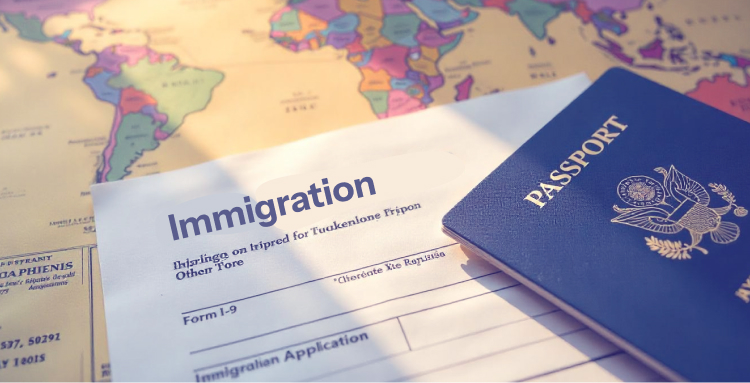
When a company sponsors an illegal immigrant, it becomes accountable to the government for such recruitment. Hence, they try to maintain certain guidelines and proceedings to avoid any uncertain consequences.
Completing form I-9
Before hiring an employee, the hiring manager asks the candidates to fill up this form I-9. In this form, the candidates need to mention their eligibility for the particular position and legal rights to work in the US. If the employee does not fill up this form or provide any kinds of wrong information, the government agency may give penalties to both the candidates and the hiring manager during verification. After adjusting visa status, if the illegal immigrant fills out this form with all the correct information, there might be a chance of getting the sponsorship.
Taking exploitation and vulnerability into consideration (Creates a Toxic Working Environment)
Sometimes employers hire individuals with illegal immigration status to use them by taking advantage of their vulnerable condition. They hire candidates with minimum salary and low facilities compared to other employees with legal visa status.
Providing Employment-based Visas: Best Way to Provide Sponsorship
Another approach to sponsoring illegal foreign nationals is by providing any permanent or temporary work authorization through some employment-based visa category. Skilled workers can apply for H-1B visas. Those who have extraordinary abilities are eligible for an O-1 visa. On the other hand, the L1 visa is designed for individuals who lose their visa status while employed in a company. They are later reassigned to a different branch or subsidiary within the same company with this visa status.
Arranging sponsorship programme (Supporting Legal Recruitment of Foreign Employees)

Certain sponsorship support is also available along with employment-based visa programs. You can avail of any options that match your eligibility and preferences.
Visa programs for agricultural and non-agricultural work
There are some additional visa categories available where you will get sponsorship from a company if they have a shortage of labor. Both H-2A and H-2B visas fall under this category. Plus these visas are valid for 3 years. You have to apply for a labor certification before applying for these visa categories
H-2A Visa: If you are interested in agricultural work you can apply for this program. After getting the labor certificate you have to fill out form I-129, which is applicable for unauthorized workers.
H-2B Visa: This visa category is suitable for those non-immigrant workers who are not interested in field-related or agriculture-oriented activities. After receiving a labor certification, follow the same procedure as the H-2A visa by completing form I-129.
Work-study exchange program
One more opportunity for non-immigrant workers! This visa program is designed for people who want to exchange and share their skills and knowledge with the people of any particular institution.
J-1 visa program:
The first category of J visa would be the perfect choice for those who want to be involved in professional work in the future. If you are interested in research work, training, internship, or any kind of cultural activities you can apply for the J-1 visa program.
Application Process:
First, you have to manage a sponsoring organization that will give sponsorship after evaluating your skills and experience. They will help you regarding further proceedings of your J-1 visa application.
When the designated organization approves your sponsorship application into this program, you have to fill out a form DS-2019.This form indicates the evidence of your eligibility for this exchange program.
The third action is to make the payment. Your sponsor might pay the required fee for this exchange program. Additionally, you must pay an extra 160 dollars as a non-immigrant candidate. If the sponsoring organization is a government agency, you don't have to pay this additional fee.
Now, you have to face an interview with the consular officer at the US embassy. During the interview, you have to submit all the required documents that they ask you to bring. Plus they will ask you some questions regarding your plans and sponsorship. You just need to answer them confidently.
Click to know more:
Applying for H-1B visa before graduation: Is it possible?
In a nutshell,
Sponsoring someone who is not allowed to live in the US is usually against the law. Most companies refuse to sponsor candidates who are undocumented due to different reasons. Some companies can sponsor undocumented immigrants legally by following the ethical rules. Running a business ethically can create a positive and peaceful workplace.
In our short discussion, we have tried to explain how certain companies can help you by providing sponsorship.If you found it helpful, please leave a comment and share it with those who want company sponsorship without proper documents.

The air crackles with a nervous excitement. You clutch your coffee mug, its warmth barely reaching the fluttering butterflies in your stomach. The question, bold and raw, hangs in the quiet space between you and your reflection: "Can I become a citizen, even without him?"
It's a question whispered in the dead of night, frantically Googled in stolen moments, and cautiously broached with trusted confidantes. The dream of belonging, of claiming your rightful place in the vibrant mosaic of a new land, feels oh so close, yet a nagging uncertainty lingers. Does your marital status become an invisible wall, casting a long shadow on your path to citizenship?
Whether your marriage is a cherished memory tucked away in a velvet box, or a chapter closed with a sigh of relief, today we're talking about how being married or single can affect getting citizenship. We'll navigate the legal stuff, sort through the eligibility requirements, and make sure you know that your solo journey is just as deserving of being called a citizen..
Why do people apply for naturalization?
Those who come to the US from other countries need to apply for naturalization for the purpose of getting citizenship. This naturalization process is not applicable to those who obtain citizenship by birth in the US.
Eligibility requirements for the spouse of a US citizen
You have to meet certain conditions to be eligible for naturalization.
You have to maintain a marital union with your spouse in the entire waiting period before applying for naturalization.
Your age must be at least eighteen years old or more.
You have to understand the English language properly with reading, writing, and speaking. Plus knowing US governmental history is a prerequisite for the application.
Maintaining a good ethical character before applying until getting naturalisation is important such as paying taxes and doing voluntary activities or community service. Besides, following the rules and regulations of the country is also necessary.
You have to live in the same area or state for at least three months before submitting your application.
After fulfilling all the criteria, you can fill out a form N-400 with all the required documents to apply for naturalization.
What are the waiting periods for the naturalization of green card-holder spouses?
The general waiting period for naturalization after receiving a green card is 5 years, which is applicable for all kinds of sponsorship programs such as work-based green cards, family-based green cards, or some other visa categories. If you get a green card through your spouse, you have to wait up to 3 years to apply for naturalization. Plus you must maintain at least eighteen months of physical presence here.
You can apply 90 days before completion of these 3 years if you want early processing. After waiting for a certain period, you will get your most awaited citizenship here if you can successfully complete all the necessary procedures.
More for you:
Can you still get a green card after giving up US citizenship?
How does being separated after marriage affect citizenship eligibility?

When a couple decides to live separately from each other after marriage, it may affect getting citizenship in various ways. First, you have to understand what exactly the form of your separation is, is it a formal separation or informal? If you are not living together after getting approval from the court, you can consider it as a formal or legal separation. However, living separately while working on legal proceedings is indicated as informal separation.
How does legal separation from a US citizen spouse impact the naturalization process?
If you are legally separated from your husband, you have to follow the 5 years rule to apply for citizenship. This rule is also applicable for those who are living in the same house but in a separate way according to the court order. Legal separation means not involving in a marital union but not being divorced yet.
What is the impact of an informal separation on naturalisation eligibility?
There might be some situations when a married couple decides themselves to remain separated but not going through any legal action or going for divorce. People sometimes take this decision to support their children.In that case, you can apply for naturalisation based on the three years rule. However, in such situations, Immigration officers may investigate your marital events considering each case separately. If they find any problems in your marriage they will deny your citizenship.
How can you prove your marriage was genuine after a divorce with a conditional green card?
In the case of a spouse visa, a foreign individual comes here with a 2-year conditional green card. Depending on the marital situation you may get the permanent green card removing the condition.If you already have a permanent green card you can renew it, regardless of your marital situation. To renew your green card you have to fill out form I-90.
However, in the case of a conditional green card, you must show some documents to prove your marriage was genuine by providing documents that prove that you lived together before getting divorced, marriage certificate, and a written statement showing the reason for your divorce.
Is it possible to remove conditions if you are separated but not divorced?
Yes, it's possible but you have to submit a special document for that. In this document you have to prove that, you are facing really tough situation like taking care of your children as a single mother. You can apply for a permanent green card if the Immigration officers allow you considering your situation.
Does getting divorced make it harder to become a citizen?

Well, do legal separation and divorce mean the same thing?....No, both are different. Divorce is the formal ending of marriage but in a legal way. Getting divorced does not necessarily make it harder to become a citizen, rather it may complicate your citizenship application process in a different way.
What can you do if you divorce during the application process for citizenship?
As you got permanent residency due to marriage, you have the legal right to apply for naturalization 3 years later. However, if the processing of your divorce is ongoing during the time when you are applying for naturalization also. Now, what will be the consequences? Well… in that case, the Immigration officers will deny your naturalization application. Since you are trying to get citizenship hiding about your divorce, they will consider it as a bad moral character. So, you will be rejected.
What will happen if you get divorced before receiving citizenship approval?
You have to withdraw your naturalization application immediately because now you are not eligible to get citizenship after three years of permanent residency. You have to reapply for naturalisation completing a total of five years of residency.
In what situations can you apply for citizenship without your husband?
Sometimes people want to get citizenship by themselves without involving their spouses. This might be because of your marital situation or some other reasons. Knowing about these situations is important if you are going through the process of citizenship on your own.
Being a member of the US armed forces
If you are working for any kind of military service in the US, you will get an alternative eligibility to apply for naturalization. But you have to wait two years more to be eligible for this application. That means, if you are not eligible for the three years rule anymore, this five years rule would be available for you.
Victims of domestic violence

If your US citizen or green card holder husband treats you badly like torturing you mentally and physically, you can receive a special waiver to remove the condition of your green card by filling out a form I-751.
Or you can fill out a form I-360 within two years for the same purpose. Then, you can apply for naturalization after completing your residency period.
Involuntary separation under certain circumstances
Involuntary separation means a couple is continuing their marital relationship but can not live together in the same house always due to work-related travel, staying in the nursing home for sickness, working in the military or other reasons. In those situations, you can apply for naturalization after 3 years.
Just remember: You have to notify this to the Immigration officer earlier, otherwise they may reject your eligibility for citizenship application due to unethical behavior or bad moral character issue.
Widow or widower of a US citizen
If your husband dies during your conditional residency period, you can fill out a form I-360 to become a permanent resident. But if your husband passes away during your lawful permanent residency period, you can apply for naturalization after completing 5 years of residency status.
To Sum Up,
In a true sense, applying for citizenship through marriage generally requires the support of your husband if you are a woman. There might be any kind of unforeseen situation in your married life like facing divorce, separation, or the unfortunate death of your husband.
In these situations, your eligibility for citizenship may change. In our short conversation, we tried to figure out the possible changes of eligibility criteria for citizenship application if your husband is not living with you or he is not alive anymore.
However, it's crucial to consult with an immigration attorney to help navigate through the challenges that you will be facing in any of these marital situations.
If your current situation regarding citizenship matches our topic of discussion or need more suggestions from our experts, leave a comment. And share this information to those who are really concerned about getting citizenship without their husband.

Under United States Citizenship and Immigration Services (USCIS), each field office receives about 977,273 Form N-400 applications per year on average, or about 2,677 per day. That’s a lot of applications! Some of these applicants are spouses of U.S. citizens, and some of them have to reapply after being rejected.
Those are the most common scenarios in the citizenship process. However, there is one case that can be a matter of concern while applying for citizenship: Criminal record with court dismissal.
It’s true that USCIS allows citizenship applications with criminal conviction. But if the case is ultimately dismissed, it can ruin applicants chances of getting citizenship. Even worse, you could be deported from the U.S.
So, if you’re in this type of situation, like having any type of criminal record, whether it’s small or big, and you weren't even convicted but had a dismissed case - can you apply for citizenship with a dismissed misdemeanor? Keep reading to find out whether you can and you’re on the right path for naturalization.
What Does ‘Dismissed Misdemeanor’ Mean
A "dismissed misdemeanor" means a minor criminal offense that has been officially removed from the judicial system before a trial or a plea, or you can say without a finding of guilt.
It’s more like you're unfortunately accused of the crime, but that hasn't been convicted and does not have a criminal record for that charge. Sounds kinda unfair, right? But it happened for various reasons, including:
Lack of Evidence: Prosecutors may not have enough evidence to move forward with the case.
Procedural Errors: Mistakes made during the arrest, investigation, or court proceedings can lead to a dismissal.
Diversion Programs: Completing a court-approved diversion program, such as community service or counseling, can result in a dismissal.
Negotiated Settlements: Sometimes, the defense and prosecution may reach an agreement, which could involve dropping or dismissing certain charges.
Remember, a dismissed misdemeanor is not the same as being acquitted (judge or jury found defendant innocent). It’s like a case ended without a verdict. So, what does having a dismissed misdemeanor mean for you?
It's generally better than a conviction: While a dismissed misdemeanor will still show up on your background check, it won't have the same negative impact as a conviction.
It may not automatically disqualify you from certain things: Depending on the specific circumstances, a dismissed misdemeanor may not prevent you from getting a job, renting an apartment, or obtaining certain licenses.
Why Showing Good Moral Character Is A Must To Get U.S. Citizenship

The concept of "good moral character" looms large for anyone who is striving for U.S. citizenship. This requirement is not just a simple bureaucratic hurdle; it holds deep meaning and serves several crucial purposes:
Respecting the values of democracy
Ensuring public safety and security
Fostering social cohesion and trust
Building a just and inclusive nation
Promoting individual accountability and growth
Showing good moral character is a must. Because it is one of the legal requirements for naturalization. No country's government will want those who are disobedient to law, unproductive and irresponsible people to become citizens. Neither U.S. government.
You have to meet the standards of average citizens of the community where they live. To prove good moral character, one thing you have to keep in mind is not to commit any serious crimes or offenses. Especially in the past five years (or three years for spouses of U.S. citizens) before applying for citizenship.
Even if you renounce your U.S. citizenship, you can still reapply for it later. However, some cases, such as having a criminal record, can affect your citizenship process, making application approval difficult.
How Can A Criminal Case Impact Citizenship Process
A dismissed criminal case doesn't automatically disqualify you from U.S. citizenship, but it doesn't mean having a criminal record has no impact on your application. It is important to understand the potential obstacle.
Crimes That Can Bar You Permanently!
There are some offenses that can lead to a bar immediately and cancel your citizenship. And if you commit any serious crime, USCIS won’t and can not approve your application, even if you have done your interview. As I said, good moral character is a must and legal requirement to get citizenship. And a valid criminal record or aggravated felony can restrict you permanently from becoming a lawful U.S. citizen. So, which crime can ban you permanently? For instance,
Drug trafficking
Arson
Assault
Child abuse or pornography
Domestic violence
Murder
Any kind of bribery or witness bribery, forgery
Property crimes
Money laundering
Rape or aggravated sexual abuse
Robbery or Ransome
Treason
Attempt or conspiracy to commit another aggravated felony
Entering U.S. illegally
Juridical obstruction
Two deportable crimes at any time
Illicit trafficking in a controlled substance
Illicit trafficking in firearms or destructive devices and more.
Some crimes that can result in imprisonment for more than 1 year can also lead to a permanent bar from USCIS. Such as any other violent crime, document or passport fraud, or gambling.
These crimes may be sometimes classified as misdemeanors rather than felonies. However, USCIS can still deny you citizenship even if you were charged with a misdemeanor instead of an aggravated felony.
Crimes That Can Bar You Temporarily!

Certain crimes can commonly result in a temporary bar. Though these offenses can hamper your citizenship process, don't worry, it will last a few years or months. After they expire you can apply again.
According to USCIS this type of bar is called “conditional bars”. If you do something bad while you are trying to become a citizen, USCIS can stop you for a while. This can happen even if you are about to take the Oath of Allegiance.
Some crimes are like-
Crimes that show bad morals
Being guilty of two or more crimes with a total jail time of five or more years
Being in prison for any reason for more than half a year
Breaking the law on drugs in a minor way*
Lying to get immigration help
Selling or buying sex (or anything related)
Not taking care of your family
Cheating on your spouse
So, how long do you have to wait for it? Well, usually you have to wait for five years from when you committed the crime to try to become a citizen, or maybe three years in some cases.
Is there Any Exception That Can Help Cover Your Case?
Having a criminal record, even if your case was dismissed, can make it hard for you to become a U.S. citizen. But there’s one possible way out: the Purely Political Offense Exception. It sounds good, but it’s not for everyone.
This exception only works for convictions that come from:
Fake charges: Lies to stop you from speaking up or to go after certain groups.
Unfair treatment: Being picked on because of your race, religion, or political views.
For example: you joined a peaceful protest against a bad government and they said you were “disturbing the peace.” This might count as a purely political offense.
But the exception won’t work if:
You hurt someone or did something violent.
Your conviction was for a normal crime (stealing, hitting, etc.) that had nothing to do with politics.
It’s all up to you to prove it. Show strong evidence that you were convicted only because of politics. Also, you didn’t do any other crimes that could stop you from being eligible. However, this exception is very tricky. The purely political offense exception is a slim chance, not a sure thing. Get professional help to see your options and deal with this difficult legal issue with confidence.
Can You Apply For Citizenship With a Dismissed Misdemeanor Case?
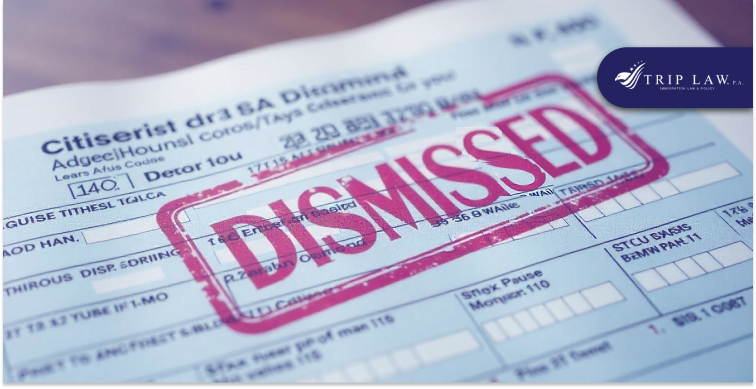
Usually, a dismissed criminal case will not make you deportable or show that your client doesn’t have good moral character, which you need to become a citizen. If you have one, you may still be able to apply for citizenship, but you have to be careful and follow some procedures.
All Citizenship Applicants Disclose Their Criminal/Arrest Record
When you apply for citizenship, you have to fill out form N-400. On this form, you have to tell the truth about your criminal history, even if your case was dismissed. You have to tell them about any arrests, charges, convictions, or sentences that you have ever had, or didn’t commit but were accused of. If you lie or hide anything, you could be denied citizenship or even deported.
Know The Court Proceeding Well
Before applying again, you need to know enough information regarding the court procedures to guarantee that the case will be declared dismissed for immigration reasons. Sometimes, a dismissed case is not really dismissed for immigration purposes. This can happen if you admitted to doing something wrong, or if you agreed to do something in exchange for the dismissal. For example, if you pleaded guilty to a lesser charge, or if you paid a fine, or if you did community service, or if you completed a program. These things could count as a conviction or an admission of guilt, which could affect your immigration status.
Participating In A Diversion Program
It’s a way to avoid a trial and a conviction by doing something else, like counseling, education, or treatment. If you successfully finish the program, the court will dismiss your case. You know what, a diversion program can help you avoid a criminal record. But you still have to disclose your arrest and participation in the program to immigration. You also have to make sure that the program does not involve any admission of guilt or any violation of the law.
Confessing Guilt and Negotiating A Settlement

Sometimes, the court will offer you a deal to end your case without a trial. This could involve pleading guilty to a lesser charge, paying a fine, or doing something else. Negotiating a settlement can also help you avoid a trial and a conviction. But don’t forget you still have to disclose your plea and settlement to immigration.
You also have to be careful that your plea or settlement does not count as an admission of a crime that could affect your immigration status.
Some Special Consideration For Certain Case
Some cases need more attention because they could cause more problems for your immigration status, such as:
If you were first charged with selling marijuana or another drug;
If you have many dismissed charges for marijuana or other drugs;
or, if the case involves a claim that you broke an order of protection.
Although the majority of grounds for removal necessitate a conviction, not all of them do. Individuals can be removed if the government has "reason to believe" they are a drug trafficker, a "drug abuser or addict" under the law, or a court determines they breached an order of protection.
If one of these three reasons was used to dismiss your case, you may need to conduct extra research into your client's risk. I will recommend consulting with an experienced attorney, like TripLaw.
What Documents Are Needed To Submit Regarding The Dismissed Case?

Usually the best approach to demonstrate that a case was dropped is a court paper or a letter stating that the prosecutor did not wish to charge against you. These documents clearly indicate what transpired after you were detained.
Police reports and other documents in the file will state things that are not proven and do not reflect what occurred in court.
If your lawyer provides the court paper and they continue to inquire about your arrest, consult with IDP about how to respond in order to protect your right to have the court judgment honored by federal authorities.
Other documents you can get ready if needed:
A copy of the arrest report or citation that shows the date and the charges against you.
A copy of the court docket or record that shows the date and the outcome of your case, such as dismissal, acquittal, or nolle prosequi (no prosecution).
A copy of the order or certificate of dismissal that shows the reason for the dismissal, such as lack of evidence, insufficient probable cause, or completion of a diversion program.
A copy of the plea agreement or settlement, if any, that shows the terms and conditions of your case resolution, such as pleading guilty to a lesser charge, paying a fine, or doing community service.
A copy of the certificate of completion or discharge, if any, that shows that you successfully finished a program, such as counseling, education, or treatment.
You may need to get these documents from the police department, the prosecutor’s office, or the court where your case was handled. You may also need to pay a fee to get these documents.
Contact TripLaw Today!
It is crucial that you consult with an immigration attorney before you apply for U.S. citizenship, whether you have been convicted of a crime or accused for an offense that you didn't found guilty, Figuring out how, when, and even if you should apply for naturalization can be tricky. Getting the opinion of an experienced attorney may improve your chances for success.
Contact us today at 863-599-6735 or email at info@trip-law.com if you need help with finding US Citizenship with criminal records or any other solutions to your immigration problems.

Have you ever dreamed of becoming a US citizen, only to have your hopes dashed by a rejection letter from USCIS? If so, you are not alone. Every year, thousands of applicants face the same fate, and many of them give up on their American dream.
Did you even know that over the last few months, almost 9.5% of all applications have been denied following the naturalization process? Some of them denied wrongfully and some of them had valid reasons.
However, there’s still one question remaining for those whose citizenship is being denied - can they reapply again to regain their rights in the U.S.?
Of course it’s possible to reclaim citizenship through reapplying N-400. Being denied by USCIS is not the end of your journey to US citizenship. You can still fight for your rights and reapply again. In fact, many people have successfully done so. Today I will share with you the steps you need to take. But first, what is the reason for denying your citizenship?
5 Most Common Reason For Denial Of Citizenship
Although there are several reasons why USCIS may decline naturalization applications, the most common one is because the applicant does not match all of the requirements. Some of the causes for rejection are as follows:
Failing the English or Civics Tests
One of the most important requirements for naturalization is to show your English proficiency, and show you have knowledge about US history and government. For that, you have to give two tests. In the first one, you will be tested on how you speak, write and read english. Then, the civics test will be taken. But this one is quite difficult compared to the first one.
In the civics test, 10 questions will be asked out of 100 possible ones. But to pass this test, you have to answer at least 6 questions correctly. Good news is, if you fail either of them, you will be given a second chance to retake it within 90 days. But unfortunately, if you fail again, your application will be denied. So what do you have to do to avoid failing? First of all, you need to study the materials provided by USCIS, practice your English skills, and take online quizzes or mock tests. Additionally, if you have any disabilities, are over 50 years old and have lived in the US for at least 20 years, or are over 55 years old and have lived in the US for at least 15 years, you can request accommodations or exemptions.
Not Meeting Continuous Residence and Physical Presence Requirements

Another reason is not maintaining continuous residency and physical presence in the US for a certain period of time. To fulfill the requirements for the citizenship process, you need at least a five year record of permanent residency and also have been physically present in the US for at least half of that time.
So what do you have to do to avoid violating residency requirements?
Keep track of your travel history.
Avoid trips longer than six months.
Apply for a re-entry permit if you have to leave the US for more than a year.
Apart from those, keep evidence of your ties to the US, such as tax returns, bank statements, employment records, and family relationships.
Divorcing before Completing Three Years of Residency by Marriage
Once you obtained your permanent residency through marriage to a US citizen, you’re one step ahead to apply for naturalization. But it has to be after three years of residency, instead of five.
But if you divorce or separate before completing three years of residency, you’re going to lose your chance to get citizenship. Even you have to wait until you meet the five-year requirement.
So what do you have to do to avoid being denied for this reason? Nothing much, just make sure that your marriage is bona fide and stable. Wait, it’s not end here. You have to gather enough evidence to prove it. One piece of advice for you, consult an immigration attorney to solve any marital problems or divorce issues, as this may affect immigration status and options.
Failing to Pay Child Support (If Applicable)
If you have children from a previous or current relationship, you need to prove that you are fulfilling their financial needs. But if you’re failing to support your child, it will be considered as lacking good moral character. It can cause your denial of citizenship. So what do you have to do to avoid this? First thing you can do is pay your child support on time and in full. Along with it, keep records of your payments.
Even better if you notify USCIS of any changes in your child support order or agreement. Cooperate with any enforcement actions if needed.
Failing In Demonstrate Good Moral Character

Lack of good moral character is one of the most common reasons for denial. And many applicants lose their chances to get citizenship because of failing to show good moral character.
To demonstrate good moral character, you have to prove your honesty, integrity, and respect for the law and the rights of others. And to cross examine that USCIS will look at your behavior and conduct during the statutory period. It is usually five years before your application, but may be longer or shorter depending on your situation.
They will also check if you have any criminal history, tax issues, false statements, or other factors that may affect your moral character. So what do you have to do? Avoid any activities or actions that may reflect poorly on your moral character. For instance, committing any type of crime, lying, cheating, evading taxes, or violating immigration laws.
But if you commit any of these for a certain reason, you need to disclose relevant information to USCIS. Also provide explanations or mitigating circumstances if applicable. If you have any doubts or concerns about morality, then it’s better to seek legal advice.
What Happens If Your Citizenship Is Denied
A common question most of you have is what consequences you will face after getting denegated as a citizen. But will this cause your deportation? Of course not.
Because if the reasons are failing in civics test or english test or proving continual residency in the US before application, you are then simply returned to being a permanent resident.
Even if the denial is due to involvement in misdemeanors such as DUIs or getting divorced, and other legal matters, for as long as the legal issue is not grounds for deportation, then you will retain your green card.
Even if the refusal is because of involvement in offenses like DUIs or getting divorced, as long as the legal situation is not grounds for deportation, the applicant will keep his or her green card. But if you have committed fraud in order to get a green card or are not qualified to have permanent resident status in the first place, then automatically USCIS will begin your deportation or removal proceedings.
Step You Can Take After Hearing Denial Decision

Don’t lose your hope if USCIS denies your naturalization application. Getting rejected doesn’t mean you have to give up on your American dream. Because you still have some options to correct the denial or to challenge the government agency. Not believing? Here are 5 options and what each entails.
A. Reviewing Denial Notice and Seeking Legal Counsel
The first thing you need to do is review your denial notice, carefully and understand why they take such a big step against you. In the notice, you will be informed of the specific reasons for denial, as well as, inform you of your rights and options to appeal or reapply.
Whenever you attempt to naturalize again, keep this notice as a record and evidence for your case. But if you do not understand your denial notice or what to do next, then I will say, seeking legal counsel is a must. Sharing your issue and taking advice from an experienced immigration attorney can ease your next step. He/She will evaluate your case, advise you on the best course of action, and represent you in any legal proceedings. Also, help you gather additional evidence, prepare your arguments, and file the necessary forms and fees.
B. Filing N-336 to Request a hearing
Now it’s time to take action. File Form N-336 (Request for a Hearing on a Decision in Naturalization Proceedings). Through this form you can request a hearing, before an immigration officer who was not involved in the original decision.
To file N-336, you have to do this within 30 days of receiving the denial notice. This file will cost you $700. But if you cannot afford the fee then you can request a fee waiver.
At the hearing, you can present your case, explain why you disagree with the denial, and provide any new or additional evidence. Immigration officer will review the whole case. And within 120 days they will issue a written decision. And the best part? If they grant your application, then you will be directly scheduled for the oath ceremony. But unfortunately if they deny, you can still appeal to the federal court.
C. Filing a Motion to Reopen or Reconsider

Another option you can take is to file a motion to reopen or reconsider your case. This one can help you to request to reopen your case, based on new facts or evidence that you couldn’t or were not available at the time of the decision.
This case is basically based on an error of law or fact in the decision. File this application within 30 days of receiving the denial notice. And for this case, pay a fee of $145.
You can file either motion through online form I-290B, or you can give a written letter to USCIS. In the letter, explain the reasons for your motion, and provide any supporting documents or evidence.
USCIS will review that, and will provide a written decision within 90 days. If they grant your file, you will be scheduled for a new interview or test. But if not then appeal to the federal court.
D. Filing a Lawsuit in Federal Court or an Appeal with the Federal District Court
As I mentioned, you can still appeal to the federal court. This file is available if you have exhausted all the administrative remedies above.
File this form with the clerk of the US district court that has jurisdiction over your place of residence. During filing this, you have to serve a copy of the form to the US attorney and the USCIS district director. To check overall fees check this website to find out U.S. Court of Federal Claims Fee Schedule
E. Filing a New Application
And here we are. The last option you have after being denied is to file a new N-400. This option is only available if you have no grounds to appeal. Or challenge the denial decision, otherwise if you prefer to start over rather than pursue a legal action.
But in that, you have to wait again until you meet the eligibility criteria. Most importantly you have to fix your previous issues that caused your citizenship denial.
This time you have to additionally disclose that you have been denied before. Also explain the reasons for the denial. Some of you may ask - how long after citizenship denial can you apply? Well as soon as possible. Like a month after receiving the denial notice from USCIS.
Reapplying For Citizenship: Second Chance To Reclaim Your Right!

So, you have a second chance now! Let's reclaim your right to become a US citizen again. Before that you need to do some things. Here’s what-
Identify the Grounds for the Denial
Well, first thing first, identify the grounds for the denial of your previous application. Check this information in the denial notice that USCIS sent you. Everything is explained, the reason they reject you as a U.S. citizen, and understand the grounds for the denial.
Determine If You Can Overcome the Grounds
After that, determine if you can overcome the grounds for the denial of your previous application. Assess your situation and see if you can fix the problems that caused your final. For instance,
If you fail the English or civics tests, you can study harder and practice more.
If you did not meet the continuous residence and physical presence requirements, you can wait until you do.
If you divorced before completing three years of residency by marriage, you can reapply after five years of residency.
If you failed to pay child support, you can pay your arrears and comply with your obligations.
If you failed to demonstrate good moral character, you can avoid any criminal or immoral conduct and show evidence of rehabilitation.
Prepare a new Form N-400
What next? Definitely prepare a new Form N-400. Fill out the form with your personal and biographical information. Answer the questions about your eligibility and background.
Furthermore, disclose your previous denial experience and explain the reasons. Provide new or updated information or evidence if there are any. It may affect your eligibility.
You have to sign and date the form, and attach the required documents and photos. After that, pay a fee of $725, or request a fee waiver if you cannot afford it.
Check Waiting Periods and Restrictions
Complete application,is that done? No. Check the waiting periods and restrictions that apply to your case. It normally depends on the grounds for the denial of your previous application. For that, you may have to wait for a certain period of time before you can reapply.
Next come to the restrictions. Some grounds for denial may prevent you from reapplying at all, or even limit your chances of approval. In particular, if you lied or concealed material facts on your application, consequences could be heavy for you. Like you can be permanently barred from naturalization.
Again, if you have a serious criminal record, such as an aggravated felony, then you will become totally ineligible for naturalization.
Finally, if you have multiple or recent convictions, then dear, it will be quite difficult to prove your good moral character. So be careful as becoming an American citizen comes with a lot of rights and benefits as well as responsibilities and obligations.
Documenting Remedial Actions
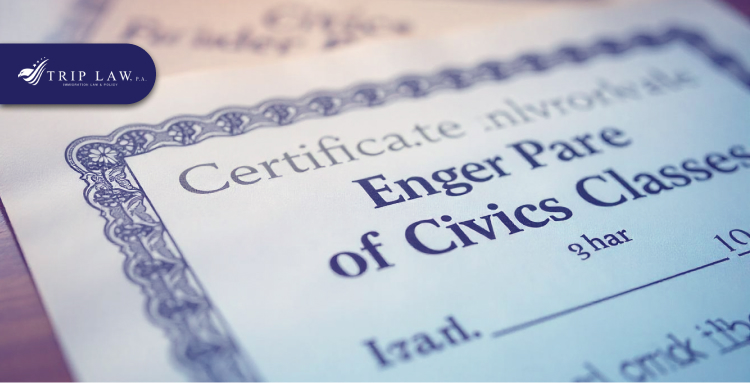
This one is for when you fail to demonstrate good moral character. In this process, you have to show USCIS that you have addressed the cause of denial, and you are now eligible and qualified for citizenship.
You have to provide evidence of your remedial actions, such as:
Certificates or transcripts of your English or civics classes or tests
Travel records or receipts of your trips outside the US
Divorce decree or proof of your current marital status
Child support payments or court orders
Tax returns or proof of payment of your taxes
Community service or volunteer work
Letters of recommendation or character references
Demonstrating Rehabilitation
This one is also applicable for those who lack good moral character. In this process, prove yourself as honest, integrity, respectful to the law and rights. You have to provide evidence of your rehabilitation, such as:
Court records or certificates of completion of your probation, parole, or sentence
Counseling or treatment records or certificates of completion of your programs
Drug or alcohol tests or certificates of completion of your tests
Letters of apology or explanation of your conduct
Letters of support or testimony from your family, friends, employers, or community members
TripLaw: Professional Assistance For Legal Advice and Representation
Are you looking for a reliable and affordable legal service provider? Do you need help not only with your denial of citizenship but also other immigration, family, business, or criminal law issues?
If so, Trip Law can be your best guide. We are a leading immigration law platform that connects you with qualified and experienced lawyers who can assist you with your legal needs.
Whether you need a consultation, a document review, a contract drafting, or a court representation, TripLaw can help you from starting to end, throughout your case.
At Trip Law, we are willing to help you. Contact us (info@trip-law.com). Our team of lawyers will take care of your case and throughout your process.
Request a consultation here or call us, (863)-599-6735.

Ever wondered how a person's moral character can impact their chances of obtaining citizenship?
Imagine, you are a hard-working immigrant in the US. And you have contributed a lot to your community for years. Plus, you don't have any records of involvement in criminal activities here. Then, years later when you were about to get legal status through citizenship, the US government agency denied your application.
You became shocked thinking why they rejected your application due to moral character issues, as you never did any serious criminal activities here! After that, you find out that a few years ago you provided some false information to get certain immigration benefits. Providing such false information is a serious disqualifying factor and they consider it a bad moral character. But you didn't know it would cause problems, because it's not a serious crime.
So, good moral character- what does it truly mean? And how can it influence getting citizenship approval?
What exactly is a moral Character?
Moral characters are the personality and beliefs of individuals that distinguish one from others. Doing unethical or bad activities is considered as bad moral character. But people with good moral character support and encourage things that are beneficial for society.
What is the importance of good moral character in citizenship application?
People from other countries need to apply for naturalization to become citizens in the US by filling out a form N-400. After applying for citizenship, the government agency USCIS will review your immigration background and personal details thoroughly.
It reflects a person's respect for societal norms and engagement in honesty, punctuality, and support of ethical principles. Immigration authorities seek citizens with strong moral character because they can bring a positive contribution to the social, cultural, and economic aspects of the country.
Which factors are considered to understand moral character?
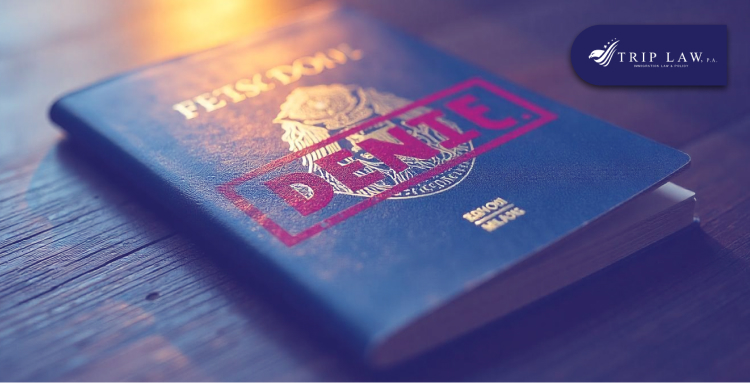
Criminal activities do not only mean bad moral character. Some non-criminal factors are also considered as bad moral character. So, when evaluating moral characters, the regulatory body reviews some documents of those candidates based on certain factors.
Immigration Violations
People violate Immigration laws in different ways. Some of them enter here unlawfully, which means they cross the border without proper checking. On the other hand, some H1B or tourist visa holders stay here illegally after their visa expires. This way people from other countries break the rule, and these are considered Immigration violations.
Criminal record
If the immigrants are involved in any kind of criminal activity or have a previous record of doing this type of incident, they have problems in their moral character. As a consequence, they may lose their legal status.
Fraud or misrepresentation
Some people provide wrong information on the forms about their address or their situation to receive extra support from the government. Similarly, most individuals do fake marriages to get US citizenship early. All of them represent themselves wrongly, so they are considered fraud.
Non-criminal factors
Some factors do not reflect crime. But they negatively express your moral character. Parents who have limited access to their children due to not getting child custody from the court are responsible for paying a certain amount as child support each month. If they do not pay this, it indicates a bad moral character. Similarly, not paying taxes is also a bad behavior.
What is the statutory period? How does it influence getting citizenship?
You have to maintain a positive record of your moral character in a certain period before applying for citizenship. After coming to the US legally, after getting green card or lawful permanent residency, you have to wait five years to get citizenship, this is your statutory period. People who come here by marrying a US citizen, have to wait 3 years to get citizenship. These three years are their statutory period. This waiting period is the most important time to show that you have a good and acceptable moral character.
When reviewing your documents the regulatory authority will observe what you have done in this statutory period. If they find any criminal or noncriminal records that are against the naturalization law, they will reject your citizenship application.
Regulatory restrictions that stop someone from becoming a citizen

If you want to get US citizenship, you must follow some rules and regulations according to the naturalization law. You have to stay within these rules by avoiding actions that go against them. Certain restrictions are lifelong, while others are temporary. So, what types of unethical activities are included in these categories?
Permanent bars (For Serious Crimes)
The barriers that do not allow someone from becoming a citizen and permanently stop them from returning here without trustworthy verification, are considered permanent bars. If you are found guilty of murder or any serious crimes (convicted of an aggravated felony) you will not get permission to become a US citizen. Rather you have to go through the removal proceedings or imprisonment for a specific period.
Conditional bars (For Recent Mistakes)
Barriers that make getting citizenship difficult, but not impossible are considered as conditional bars. For example: If someone is convicted for two or more crimes and received five years of imprisonment, they will face conditional bars.
In simple terms, these offenses can stop you from becoming a citizen for a certain period, but not forever. If the citizenship authorities suspect that you have committed any crime but you are not officially found guilty, they may postpone your citizenship approval for a limited period.
Remember Even if any offenses do not fall under these two categories, it will still impact your ability to express good moral character. So, always try to keep yourself away from any unethical activities.
Aspects reflecting your good moral characters
How can you say that someone has a good moral character? You have to closely monitor some considerations of their daily life activities. Similarly, the governing authority may also verify your punctuality and performance from your usual work documents to assess your moral character.
Work history and tax payment records
During the investigation, if they find that you have a good reputation in your workplace, it reflects your moral character positively. Besides, your on-time and regular tax payment record also indicates positive things.
Academic attendance records
If you are a student here, your class attendance report will reflect your dedication and sincerity in your academic responsibilities.
Involvement in voluntary work
Doing a lot of voluntary work indicates you have a great passion to work for the well-being of others. It also reflects your interest in community service.
What are the next steps if your citizenship is denied due to moral character issues?

If your citizenship is rejected due to moral character concerns-don't worry! We are here to guide you with the next steps. You just need to follow the instructions carefully.
Breaking boundaries: Navigating the conditional bars
If your citizenship is denied due to conditional or temporary bars, you have to wait five years to reapply. In the meantime, you have to engage in doing good and appreciable work.
Taking oath: Showing affidavit of good character
You should prepare a document showing your good activities with the help of an immigration attorney. This will work as a reference of your good moral character. Everything about your good qualities will be included in this document, such as your voluntary work, the good things you did for your community, and other positive activities.
Bonus Tip: When reapplying for citizenship, if they ask about your police certificate, you have to submit it. If you are rejected due to any criminal activities, they may ask you about this document. The possibility is high! As it may take some time to get this certification from your country's police station (if you are deported), it will be wise to collect this document earlier before reapplying for citizenship.
What can you do if your citizenship is rejected for permanent bars?
It might seem like obtaining US citizenship is no longer possible at this moment because you will be deported from here permanently. You will not get so many opportunities to come back. But there are some ways that you can try. So, stay calm, there's no need to worry!
Appealing against a permanent bar
After going back to your country you have to wait up to ten years. You can't apply for a re-entry permit before completing these ten years. Then you can apply to come back here.
Just keep in mind that if you want to return, you must get permission from the US government. So, you have to fill out a form I-212 to apply for permission to come back. During application, you have to show some documents that explain the reasons for your deportation and evidence of your good moral character. So, you must provide some papers and certificates about your personal details, current situation, and family history.
How can you prove that you are a good fit to return here?
You can prove this by showing things like having your family in the US, having difficulty or risk staying outside, or some similar reasons that may prove that you are in big trouble. Providing a recommendation letter from your employer or community leader can also help.
More for you:
How can military spouses get citizenship faster?
To Sum Up,
If you want to become a US citizen, you must show the regulatory authority that you have been a person with good moral character for the entire time before applying for citizenship. When evaluating your application and other records, if they find something suspicious or any official evidence of your criminal activity, they might reject your application.
So, having a good moral character is very important for every immigrant. Today we have tried to explain the role of good moral character that is responsible for denying citizenship. We have also discussed here the things that will benefit you after this rejection.
If your citizenship application is denied due to such issues, let us know by commenting. And don't forget to share our discussion with those who are not getting citizenship due to moral character issues.

Have you been granted asylum in the United States? Phew! Finally finding sanctuary from persecution and hardship. But, I know, the true joy is still incomplete without your loved ones. Knowing that they remain separated by borders and uncertainties.
Here's where hope blooms: There's something called "Derivative Asylee Adjustment of Status" that can help bring your family to the U.S. It's a way for eligible family members of people who got asylum here to become permanent residents too. This means you can start a new life together.
Yet, to start this journey requires careful preparation. Therefore, I'll be your compass today, showing you the eligibility criteria, necessary documents, and key steps involved in securing your Green Card as a derivative asylee.
What Is A Derivative Asylee?
Ever heard of a "derivative asylee?" Don't worry, it's not as complex as it sounds! Essentially, it means you can secure permanent residency in the United States based on your relationship with someone who's been granted asylum here or you can say Principal Asylee. Pretty cool, right?
Moreover, A principal asylee is a person who was granted asylum in the United States based on their own fear of persecution in their home country.
Who Is Eligible To Be A Derivative Asylee?
So, who can be a derivative asylee? Let's break it down:
Spouses and children of a principal asylee:
This is the most common scenario. If your spouse or parent has been granted asylum and you're their spouse or unmarried child under 21, you might be eligible for derivative asylee status.
As an Asylee Yourself:
If you've applied for and received asylum in the U.S., you're considered both a principal asylee and a derivative asylee, opening doors for your close family members.
Meeting the age and marital requirements:
Keep in mind that children must be unmarried at the time of application and under 21 years old. In certain circumstances, the concept of children includes stepchildren and adoptive children in addition to biological children.
But what if children are married and at the same time under 21?
According to the USCIS policy manual, a child who is married either at the time of filing or at the time of adjudication of the adjustment of status application is no longer considered a child of the principal and is no longer eligible to adjust status as a derivative asylee.
Therefore, being married and under 21 would disqualify a child from being a derivative asylee.
How Do You Apply For Adjustment of Status

Now that you understand the eligibility criteria, it’s time for you to know how you can apply and complete the process properly.
In particular, meeting certain criteria, such as having a valid visa, being physically present in the U.S., and having an approved immigrant petition or a visa available for your category.
Filing Forms
Form I-485, Application to Register Permanent Residence or Adjust Status: This is the main application form, outlining your request for permanent residency.
You need to fill out the form with your personal information, immigration history, and eligibility category. You also need to pay the filing fee and the biometric services fee.
Form I-765, Application for Employment Authorization (optional):
While not mandatory, this form allows you to apply for a work permit while your adjustment of status application is pending.
You can file this form together with Form I-485 or separately after you receive a receipt notice for Form I-485. You need to pay a separate filing fee for this form.
Form I-131, Application for Travel Document (optional):
This form is crucial if you need to travel outside the U.S. during the application process. This allows you to travel outside the U.S. and return without abandoning your application.
You can file this form together with Form I-485 or separately after you receive a receipt notice for Form I-485. You do not need to pay a separate filing fee for this form if you file it with Form I-485.
Supporting Documents
Gathering evidence to support your eligibility is crucial. This includes:
Two passport-style photos (must be taken within the last 30 days of filing ).
A copy of your passport or other government-issued photo identification.
A copy of your birth certificate or other proof of your date and place of birth.
A copy of your visa and I-94 arrival/departure record.
A copy of your approved immigrant petition or proof of visa availability (if applicable).
A copy of your marriage certificate or other proof of your relationship with your sponsor (if applicable).
A copy of your sponsor’s green card or U.S. citizenship certificate (if applicable).
A copy of your medical examination report (Form I-693) completed by a designated civil surgeon.
A copy of your police clearance certificates from all the countries where you have lived for more than six months since you were 16 years old.
Any other documents that may be required for your specific category or situation, such as proof of employment, education, assets, etc.
Biometrics Appointment

After you file your forms and documents, you will receive a notice from USCIS to attend a biometrics appointment at a local Application Support Center (ASC).
At this appointment, you will have your fingerprints, photograph, and signature taken. This is to verify your identity and conduct background and security checks.
Interview (may or may not be required)
Depending on your category and situation, you may or may not be required to attend an interview with a USCIS officer at a local field office. In general, all applicants must attend an interview (under INA 245), if not USCIS considers that an interview is redundant. If you are required to attend an interview, you will receive a notice from USCIS with the date, time, and location of your interview.
You should bring your original documents, any updated information, and any additional evidence that may support your application.
Decision and Processing Time
After your interview (if required), you will receive a decision from USCIS on your adjustment of status application. The decision may be:
Approved: You will receive a welcome notice and a green card in the mail within a few weeks.
Denied: You will receive a notice of denial explaining the reasons for the denial and your options to appeal or file a motion to reopen or reconsider. You may also be placed in removal proceedings if you do not have a valid visa or other lawful status.
Request for Evidence (RFE): You will receive a notice of RFE asking you to submit additional documents or information to support your application. You must respond to the RFE within the specified time frame or your application may be denied.
Notice of Intent to Deny (NOID): This indicates USCIS intends to deny your application based on available evidence.
However, this isn't the final verdict. You will have an opportunity to submit a rebuttal with additional evidence or arguments to overcome the grounds for denial. If you do not respond to the NOID or fail to overcome the grounds for denial, your application will be denied.
What Can Prevent You From Getting a Green Card As an Asylee Or a Derivative Asylee?
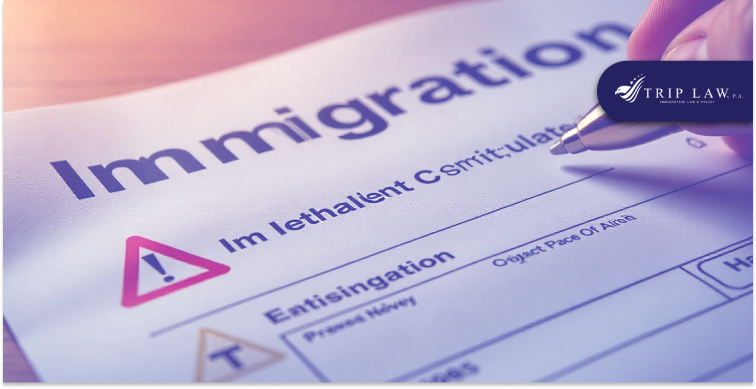
While the path to permanent residency as an asylee or derivative asylee offers hope and opportunity, there are certain roadblocks you might encounter. These are known as "grounds of inadmissibility," which can prevent you from obtaining a Green Card.
Let's break down the types of inadmissibility and how they might impact your application:
Grounds of Inadmissibility that do not apply to asylees adjusting status
Fortunately, some inadmissibility grounds don't apply to asylees seeking adjustment of status. These include:
Public charge - INA 212 (a) (4): You do not have to prove that you will not become a burden on the U.S. government or rely on public benefits.
Unlawful presence - INA 212 (a) (7) (A): You do not have to present a valid immigrant visa or other documents to enter or adjust status in the United States.
Labor certification - INA 212 (a) (5): You do not have to show that your employment will not adversely affect the U.S. workers or that you have the necessary skills or qualifications for your job.
Grounds of Inadmissibility that apply to asylees adjusting status
While some grounds are exempt, others can still pose a challenge for asylees and derivative asylees. These include:
Criminal activity - (INA 212 (a) (2)): Certain crimes, including drug trafficking or violent offenses, can make you inadmissible.
Security concerns - (INA 212 (a) (3)): If you are deemed a threat to national security, your application may be denied.
Fraud - (INA 212 (a) (6)): Any misrepresentation or false information in your application can lead to inadmissibility.
Ineligibility for Citizenship - (INA 212 (a) (8)): You may be inadmissible if you served in a foreign military against the U.S. or renounced your U.S. citizenship for tax purposes.
Previously Removed - (INA 212 (a) (9)): If you were previously deported, excluded, or removed from the U.S., or if you reentered without permission.
Other Grounds - (INA 212 (a) (10)): You may be inadmissible for reasons like practicing polygamy, being a guardian to a helpless person, international child abduction, unlawful voting, or renouncing citizenship for tax evasion.
How Can You Apply for a Waiver of Inadmissibility?

Don't lose hope if you encounter inadmissibility grounds. In many cases, you may be eligible to apply for a waiver. This allows USCIS to forgive certain inadmissibilities based on humanitarian factors, family unity, or public interest.
I-602 - Available waiver for certain Inadmissibility Grounds
As an asylee or a derivative asylee, you can apply for a waiver of inadmissibility by filing Form I-602, Application by Refugee for Waiver of Grounds of Excludability.
You can file this form together with your Form I-485, or separately after you receive a notice of inadmissibility from USCIS. You do not have to pay a filing fee for this form. You must explain why you are inadmissible, why you deserve a waiver, and provide any supporting evidence, such as affidavits, medical records, police reports, court documents, etc.
USCIS will review your Form I-602 and decide whether to grant or deny your waiver request.
The decision will depend on the nature and severity of your inadmissibility grounds, the risk of harm to you or your family if you are not granted a green card, and any other factors that may weigh in your favor or against you.
How Long Does It Take For a Derivative Asylee To Become a Permanent Resident
The journey from derivative asylee to permanent resident involves anticipation, preparation, and navigating the intricacies of immigration law.
A crucial element of this journey is the timeline – understanding the timeframe it might take to finally receive your Green Card.
What Factors Affect it?
Several factors contribute to the overall processing time for derivative asylee adjustment of status applications:
Filing Dates and Requirements
Meeting all the eligibility criteria and submitting complete and accurate documentation. Incomplete applications or missing information can lead to delays and requests for evidence, extending the processing time.
Availability of interview slots. If an interview is required as part of your application, securing an available interview slot can impact the overall timeline.
Processing Times by USCIS
USCIS publishes estimated processing times for different immigration benefits, including adjustment of status applications. These estimates are based on historical data and can vary depending on your location and individual circumstances.
That also has a connection with the current workload of USCIS. During periods of high processing volume, applications may take longer to be reviewed and adjudicated.
Employment and Travel During Processing
Employment Authorization Document (EAD): While not mandatory, obtaining an EAD allows you to work legally in the U.S. while your adjustment of status application is pending. This can affect your financial stability and overall well-being while waiting for your Green Card.
Advance Parole Document (AP): Similarly, the AP document allows you to travel outside the U.S. and return without jeopardizing your application. However, certain travel restrictions may apply depending on your specific situation.
Enclosure
Navigating the path to permanent residency as a derivative asylee can be a bit difficult for many of you. But you don't have to walk this road alone. At Tri-Law Immigration, we can provide comprehensive legal assistance to guide you through each step of the process.
So, don't wait any longer. Take the first step towards your permanent residency and contact Tri-Law Immigration today!

The heart knows no borders, yet the legal system often imposes them. Just like when you have been granted asylum in the United States, but your spouse remains adrift. Would you be able to bring your spouse to the country and live together? The answer is yes, but only under certain conditions.
Derivative asylum for your spouse - offers a path to safety and reunion, a chance to rebuild your lives on solid ground. Let us begin your journey towards a life free from fear, where love can bridge the chasm of borders.
What's Derivative Asylum and How Can It Help Spouses?
Derivative asylum offers a pathway to bring your spouse to the United States and live together legally. It is a form of humanitarian protection. Derivative asylum granting your spouse the same rights and protections you enjoy under your asylum status.
And how can it help your spouse? Well, it can allow your spouse to live and work in the United States, access education and healthcare, travel freely, and apply for green cards and more.
How Can a Spouse Qualify for Derivative Asylum?
Reuniting with your spouse through derivative asylum is a dream within reach, but it requires adherence to specific criteria.
The Relationship Requirement (Spouse Of An Asylee)
To qualify for derivative asylum, you must be the legal spouse of a person who has been granted asylum in the United States. This means that you must have a valid marriage certificate that is recognized by both your home country and the United States. You cannot apply for derivative asylum as a common-law spouse, a fiancé, or a domestic partner.
Timing Requirements

Another requirement is that your marriage must have existed before your spouse applied for asylum. This means that you must have been married to your spouse at the time he or she filed the asylum application. Or at least before the asylum officer or the immigration judge made a decision on the application.
If you married your spouse after he or she was granted asylum, you are not eligible for derivative asylum. However, you may still be able to apply for a family-based immigrant visa or a humanitarian waiver in some cases.
Physical Presence
The third requirement is that you must be physically present in the United States when your spouse files the petition for you. You cannot apply for derivative asylum from outside the United States, even if you are in a refugee camp or a third country.
However, there are some exceptions, such as for spouses who are victims of human trafficking or have compelling humanitarian reasons for delayed entry.
Exceptions and Potential Complications
There are some exceptions and potential complications that may affect your eligibility for derivative asylum. For example, if you are a spouse of a refugee, rather than an asylee, you may have a different process and timeline for applying for derivative refugee status.
If you are a spouse of a principal asylee who has already adjusted to permanent resident status, you may have to file a separate adjustment application instead of a derivative asylum petition. If you have committed any serious crimes, violated any immigration laws, or pose a threat to national security, you may be barred from derivative asylum.Consulting with an experienced immigration attorney is vital to navigate these complexities and maximize your chances of success.
How Do You Apply for Derivative Asylum as a Spouse?
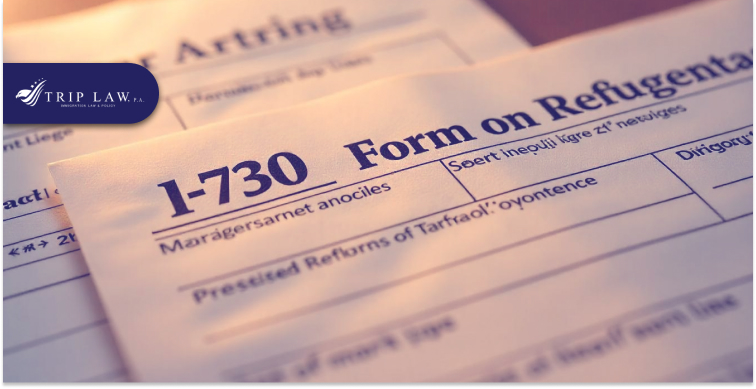
Let’s see the steps required for applying derivative asylum as a spouse:
Filing Form I-730
The first step to apply for derivative asylum as a spouse is to file Form I-730, Refugee/Asylee Relative Petition. This form must be filed by your spouse who has been granted asylum in the United States within two years of receiving asylum status, or request an extension for humanitarian reasons.
Gathering Supporting Documentation
The second step is to gather supporting documentation that proves your eligibility for derivative asylum. This may include evidence of your identity, such as your marriage certificate, joint tax returns, and photos together.
Additionally, proof of your spouse's physical presence in the United States is crucial.
Submitting Biometrics
The third step is to submit biometrics, which are your fingerprints and photographs, to USCIS. You will receive a notice from USCIS with the date, time, and location of your biometrics appointment.
You must attend this appointment and follow the instructions given by the USCIS officer. You may also need to pay a fee for this service.
Attending an Interview (If Required)
The fourth step is to attend an interview with a USCIS officer, if required. Not all applicants for derivative asylum are required to attend an interview, but you should be prepared for one in case you are selected.
You will receive a notice from USCIS with the date, time, and location of your interview. You should bring your original documents, a copy of your Form I-730, and an interpreter if you do not speak English.
The USCIS officer will ask you questions about your application, your relationship with your spouse, and your situation in your home country.
Receiving a Decision
The final step is to receive a decision from USCIS. You will receive a written notice from USCIS with the outcome of your application.
If your application is approved, you will receive derivative asylum status and a refugee travel document, which allows you to travel outside the United States. You will also be eligible to apply for a work authorization, and a green card after one year of being granted derivative asylum. If your application is denied, you may be able to appeal the decision or seek other immigration relief.
How Long Does It Usually Take to Process a Derivative Asylum Application?

The processing time for a derivative asylum application as a spouse depends on several factors, such as whether the application is affirmative or defensive, the complexity of the case, and the backlog of the USCIS or the immigration court.
Generally, an affirmative application (filed by an asylee for their spouse who is not in removal proceedings) is faster than a defensive application (filed by a spouse who is already in removal proceedings).
According to the USCIS website, the current average processing time for Form I-730, Refugee/Asylee Relative Petition, is about 29 months. However, this may vary depending on the individual circumstances of each case. If the application is not approved within 180 days of filing, the spouse may be eligible for work authorization.
If the application is denied or referred to an immigration judge, the processing time may be extended for several months or years. Therefore, it is advisable to consult with an immigration attorney before applying for derivative asylum as a spouse.
What Can Speed Up or Slow Down the Processing Time?
The path to derivative asylum for your spouse can be lengthy, and the wait for a decision can feel agonizing. The processing times vary depending on several factors, such as the type of application, the complexity of the case, and the workload of the USCIS or the immigration court.
Some of the factors that can speed up or slow down the processing time are:
The type of application: Affirmative applications (filed by asylees for their spouses who are not in removal proceedings) are usually faster than defensive applications (filed by spouses who are already in removal proceedings).
The complexity of the case: Cases that involve multiple dependents, changes in marital status, criminal history, or national security issues may require more scrutiny and documentation, which can delay the processing time.
The workload of the USCIS or the immigration court: The USCIS and the immigration court have limited resources and staff to handle the large number of asylum applications.
The processing time may vary depending on the availability of officers, judges, interpreters, and biometrics services. The USCIS has established new internal cycle time goals to reduce the backlog and expedite the processing of certain forms, such as Form I-7303.
However, these goals may not be met due to unforeseen circumstances, such as the COVID-19 pandemic, natural disasters, or policy changes. So, you should be more careful while applying. Also, keep some specific factors in mind that can really lead to delays for additional processing and requests for clarification.
Incomplete or inaccurate application.
Delay in filing after your asylum approval or admission as a refugee.
Having criminal records, past immigration violations, or humanitarian factors.
Missing or inadequate supporting documentation.
What Are the Benefits of Derivative Asylum for Spouses?

Derivative asylum for spouses is more than just a legal status; it's a lifeline that offers numerous benefits, paving the way for a brighter future together.
Reunification and Family Unity:
The most significant benefit is the opportunity to reunite with your spouse and rebuild your family life in the United States. You no longer have to endure the agony of separation or the fear of being torn apart by borders. Derivative asylum allows you to live and work together, fostering a sense of stability and security in your relationship.
Legal Status and Protection:
Derivative asylum grants your spouse legal status in the United States, protecting them from deportation and providing them access to essential services and resources. These include:
Work authorization: This allows your spouse to legally earn a living and contribute financially to your household.
Social Security benefits: Your spouse may be eligible for Social Security benefits, providing additional financial security and peace of mind.
Travel and re-entry: Derivative asylum allows your spouse to travel outside the United States and return freely, ensuring you can maintain close connections with family and friends abroad.
Education and Healthcare:
Derivative asylum ensures your spouse has access to quality education and healthcare systems, just like you. This opens doors to better professional opportunities and ensures their well-being.
Pathway to Green Card and Citizenship:
With derivative asylum, your spouse can apply for a green card after one year. Once granted, they can then apply for citizenship, paving the way for full integration into American society and enjoying all the rights and privileges of citizenship.
Unlocking Potential and Building a Future:
Derivative asylum removes the limitations imposed by fear and uncertainty. Your spouse can now pursue their dreams, participate in the workforce, and contribute to their community. This empowers them to build a fulfilling life and contribute positively to society.
FAQs
What happens if my marriage ends after my spouse is granted asylum?
If your marriage ends after your spouse is granted asylum, you may lose your eligibility for derivative asylum status. Moreover, if you divorce your spouse after he or she is granted asylum, you are no longer considered a spouse for the purpose of derivative asylum.
Can I travel outside the US while my application is pending?
Generally, it is not recommended to travel outside the United States while your derivative asylum application is pending. Doing so could be considered abandonment of your application and lead to its denial.
What happens if my application is denied?
Usually, when an immigration judge rejects your asylum request during removal proceedings, you can ask the Board of Immigration Appeals to review the decision. However, if CIS turns down your asylum application, you normally have no right to appeal.
Enclosure
The path to derivative asylum for spouses, while complex, can be a beacon of hope in the face of fear and separation. It offers a chance to reunite with your loved one, build a life together on American soil, and secure a future free from uncertainty. Remember, you are not alone in this journey.Triple Law is committed to supporting individuals and families seeking asylum and navigating the complexities of immigration law.
Contact us today at ( +1 863-599-6735) Or info@trip-law.com for legal counsel and let us help you reunite with your loved ones.

As a spouse of an U.S. citizen, obviously you want to become a citizen of this great country, and enjoy all the rights and privileges that come with it. But you also don’t want to wait too long to make it happen.
You might have heard that you need to be a permanent resident for five years before you can apply for citizenship. Too long! Who wants to wait forever? But there’s a shortcut for U.S. Citizens' spouses. That’s right, applying for citizenship after just three years of marriage!
But what if you want to apply for citizenship before 3 years of marriage? Is this even possible? Well, it depends on whether you applied for a green card or already have one. If both of them are not applicable then , No, you can't apply for citizenship before 3 year marriage. So, what do you need to do? Read on to find out more!
Why Marriage Duration Is Important In Citizenship Applications
If you are married to a U.S. citizen, you have a big advantage when it comes to applying for citizenship. But there is a catch. You have to prove that your marriage is real, and that you have been living with your spouse for the entire ‘three years’.
But why is this ‘three year marriage’ duration so important?
The main reason is that USCIS wants to prevent fraud and abuse of the immigration laws. They want to make sure that you are not marrying a U.S. citizen just to get a green card and citizenship, and then divorcing them as soon as you get what you want.
Not only that, USCIS also wants to make sure that you are not separated from your spouse, but still pretending to be married.
Can You Apply For Citizenship Before 3 Years Of Marriage
As I said earlier, if you don’t have a green card or applied for it, then dear, unfortunately you cannot apply for U.S. citizenship before you complete your happy 3 years anniversary.
But is there any way you can become a citizen before three years of Marriage? Yeah, there are some exceptions but it has some rules and requirements, and cannot be applicable for everyone.
A. If you have a green card for at least 3 years before you apply

Let’s say you have come to the U.S. through a K-1(fiancé) visa. After that, you are going to apply for a green card. And as we know that to get approval for this green card application, it can take 7 to 9 months.
So, getting or issued a green card you can easily apply for citizenship. But you have to get married within 90 days after arrival through k visa, you know that right?
Most of you have this common concern - how soon can you apply for citizenship after getting a green card through marriage? Or when the ideal time starts for applying? Well, first of all, the ideal time is 90 days before 3 years from the time your green card is issued.
So, what you have to do is look at the green card issue date, then add 3 years then subtract that 90 days. Voila! That is the exact and ideal time for you to apply for citizenship.
B. If you’re living in a bona fide marriage for 3 years, before and during processing
Aside from that, there is another way. You have to be living in a bona fide marriage with your U.S. citizen spouse for the entire three years before and during your application.
This means that your marriage is genuine, and not entered into for immigration purposes. It also means that you have to live with your spouse in the same household, and not be separated or divorced.
Anyway, for that you have to provide a lot of evidence to prove your marriage is bona fide, and we’ll talk about that later, in the requirements section.
C. If You meet all the other eligibility requirements for naturalization (Three-Year Marriage Requirement)
The last but not the least is that you have to meet all the other eligibility requirements for naturalization, such as:
Continuous Residence: Continuously residing for at least three years before and during your application - without any long trips or breaks outside the country.
Physical Presence: Physically present in the U.S. for at least 18 months out of the three years before and during your application - without any long absences or trips outside the country.
Good Moral Character: Showing a good moral character. Also have not committed any crimes or violated any laws that would make you ineligible for citizenship.
English and Civics Knowledge: Demonstrating the eligibility to read, write, speak, and understand basic English, as well as have knowledge of U.S. history and government. For that you have to give a small test during the interview.
Attachment to the U.S. Constitution: Show loyalty to the principles and ideals of the U.S. Constitution. Also willing to support and defend the U.S. and its laws.
All of the above are Must-Requirements for marriage-based citizenship. However, general citizenship requirements that apply to all applicants. And that is being (at least) 18 years old when submitting Form N-400 (Application for Naturalization).
Citizenship Application Timeline: What Is The Process
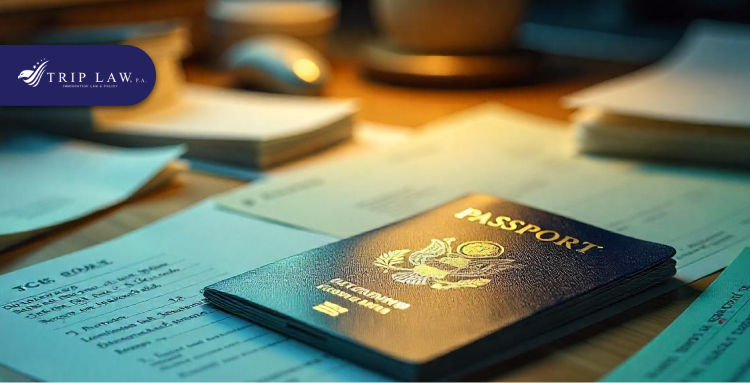
Citizenship process involves several steps, from filing your application to taking the oath of allegiance. Let’s have a look at those steps-
A. Step-By-Step Guide On The Citizenship Application Process
Here are the main steps of the citizenship application process, and what you need to do for each one:
Step 1: Checking Eligibility For Naturalization
Before you apply for citizenship, you have to make sure that you meet the eligibility requirements, such as age, residency, status, character, and knowledge.
Step 2: Complete and Submit Form N-400
This is the official application form for naturalization, which you have to fill out and send to USCIS with the required fee, two passport-style photos, and supporting documents. For this you can file for through online (USCIS website), or take some assistance from experienced immigration lawyers.
Step 3: Having Your Biometrics Appointment
This is where you will provide your fingerprints, photograph, and signature for verification and background check. USCIS will schedule this appointment for you about one month after they receive your application, and send you a notice with the date, time, and location.
Step 4: Gathering All Documents
After that, you need to collect all the documents that you need to bring to your naturalization interview. For instance, your green card, passport, tax returns, marriage certificate, divorce decrees, and any other relevant documents. You should also review your Form N-400 and study for the English and civics tests.
Step 5: Attend Your Naturalization Interview
And then, time for proving your worth to become a citizen of the U.S. During the interview, you will meet with a USCIS officer, who will ask you questions about your application and background, as well as test your English and civics knowledge.
USCIS will schedule this interview for you about four months after your biometrics appointment, and send you a notice with the date, time, and location.
Step 6: Wait For a Decision From USCIS
After completing the interview session, you will wait for USCIS to approve or deny your application, based on the results, or verifying your documents and background. For this one, you will need to wait at least three to four months, so that USCIS can notify you of their decision by mail.
Step 7: Attend Oath Ceremony and Receive Naturalization Certificate
This is the final step of the naturalization process. Here you will take the oath of allegiance to the United States and become a U.S. citizen. But to perform this, you don’t have to wait that long. Within 2 months after your application is approved, USCIS will send you a notice with the date, time, and location.
How Much Do You Have to Pay to File Form N-400?

The fee for filing Form N-400 is $725. But this cost includes $640 for the application fee and $85 for the biometrics fee. You have to pay this fee when you submit your application to USCIS, either by check, money order, or credit card. You can also request a fee waiver or a reduced fee if you meet certain income or financial hardship criteria.
How Much Time Does It Take to Process Form N-400?
Every application processing time differs depending on your location and the workload of USCIS. Same goes for Naturalization (N-400).
In a nutshell, the total processing time that is required for completing the application process, takes about 7 months to 10 months, or more than that (up to 15 months).
But if we count from the date you file your application to the date you take the oath of citizenship, then it will take you at least 18 to 2 years.
However, this is only an estimate, and your actual processing time may be longer or shorter. You can check the current processing times for your local USCIS office on their website. You can also check the status of your application online or by phone.
Is There Any Alternative Paths To Citizenship
Most people who want to become U.S. citizens have to go through the naturalization process. However, there are some alternative paths to it. These include:
1. 5-Year Permanent Resident
Do you know this is the most common path to citizenship? It applies to most permanent residents who are not married to U.S. citizens. You can apply for naturalization after being a permanent resident for at least five years, and meeting all the other general requirements.
2. At Least 1 Year Served In U.S. Military
Well, well, this is a special path to citizenship. Specifically for veterans and members of the U.S. armed forces, who have served honorably during peacetime or wartime.
You can apply for naturalization after being a permanent resident for at least one year, or even without being a permanent resident if you served during a designated period of hostility.
You also have to meet some other requirements that I've already mentioned in three-year marriage requirements.
FAQs
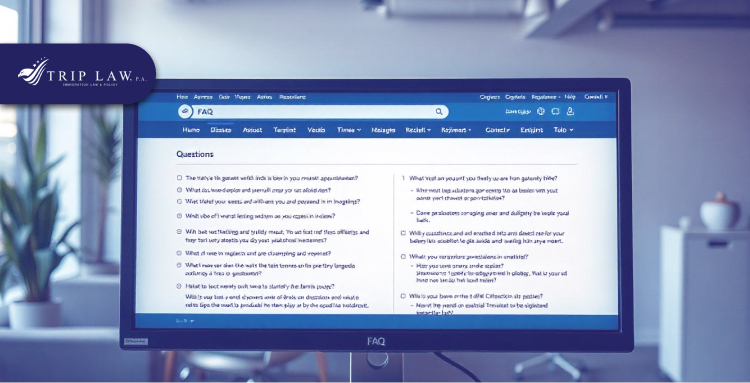
1. Is it possible to become a citizen before the statutory 3 years with a conditional green card?
No, you cannot apply for citizenship before the three-year requirement unless your conditions have been removed beforehand. You can apply after five years (for all conditional PR).
2. Can You Still Apply for Citizenship If You and Your Citizen Spouse Separated but Still Legally Married?
No. In this case the three year rule may not be applicable. You must live together before and during the process.
3. What to do when you continuously break residency?
If you continuously break the residency, like when you leave the country, a new timeframe will start from the day you reenter the US. In that time "4-Year-1-Day Rule" will be applicable. After staying four years and a day, you can apply for citizenship.
4. Can I start the citizenship process with USCIS 6 months before I complete 5 years as LPR?
Yes, you can. If you are eligible for naturalization based on being a permanent resident for at least 5 years, you can start the process with USCIS 6 months before 5 years.
Let Trip Law Help You With The Process Of Getting U.S. Citizenship
Becoming a U.S. citizen is a life-changing decision. It can open up many opportunities and benefits for you and your family. But the naturalization process can be complex and challenging, especially if you have any issues or complications with your immigration history, status, or documents.
That’s why you need Trip Law, a trusted and experienced immigration law firm to help you with the A to Z process of getting U.S. citizenship.
If you are ready to start your journey to U.S. citizenship, don’t hesitate to contact Trip Law today. You can call us at (+1 863-599-6735), email us at (Info@trip-law.com), or visit their website at www.trip-law.com to schedule a consultation.
Trip Law will be happy to answer your questions, assess your case, and help you with the process of getting U.S. citizenship. Don’t wait, contact Trip Law today and make your American dream come true!

So, you know how the US is like this big land of opportunity, right? Loads of folks from other countries really want to move there, aiming for that dream of settling down for good. Thing is, with all the visa options around, many tend to lean towards seeking asylum, especially if they're facing rough times back in their home countries. It's like a legal shield they're after, a way to live in the US with all the government support.
Now, when their asylum application gets the green light within a certain time frame, it's a whole different ball game. They get all these perks from the US, including job opportunities. Even when their asylum case is still up in the air, they can try for work authorization, following some rules, of course. But here's the kicker: if their asylum bid gets turned down, they're out of luck with the work permit.
That's when lots of these asylum seekers start thinking about packing their bags and leaving the US. But here's the thing: there are other options out there for them. Losing out on one chance in life doesn't mean it's game over. There are plenty more opportunities waiting if you're willing to look for them. Today, let's dive into what happens when your asylum request gets denied, how you can still get work authorization, the whole deal with removal proceedings, appealing the decision, and some strategies that might just help turn things around in your favor.
Getting Permission to Work:
Generally, asylum seekers are legally authorized to do any work if their asylum is approved. However, they are still allowed to work if they fulfill certain conditions before getting asylum approval.
When You're Allowed to Work
An asylum seeker becomes eligible to work in the United States by obtaining an Employment Authorization Document (EAD). This authorization is instrumental in securing legal employment while the asylum application is under review.
The Conditions You Need to Meet
1. The asylum application must have been filed with U.S. Citizenship and Immigration Services (USCIS). You have to submit your asylum application with all the relevant documents to this agency.
2. The applicant should maintain pending asylum status for a minimum of 180 days from the asylum application filing date. You have to wait up to 180 days from the day of submitting your asylum application. You might get your asylum decision within this time period. If the asylum office does not notify you of anything within 180 days, you can apply for an EAD or Employment Authorization Document. This article on Pending Asylum to Employment-Based Green Card may help you to know more about pending asylum.
3. No conviction of an aggravated felony should be on record. That means, if you are not proven guilty of any criminal records you are allowed to work in the US until your original visa status is not expired.
Denied Asylum and Your Job Rights:
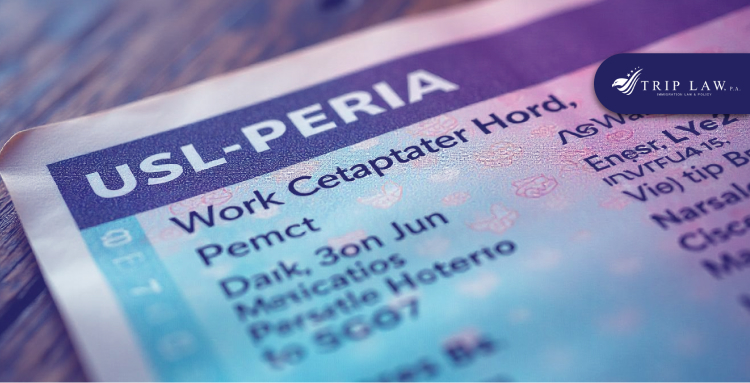
When asylum is rejected, it can make a huge difference to the normal life of an asylum seeker. It also affects their rights to work. Apart from that, they will be deprived of some government and other non-governmental facilities.
What Happens If Your Asylum Plea Gets Rejected
When your asylum plea gets rejected within 150 days of your application, you can not apply for work authorization. However, if you already manage your EAD according to other work visa categories, you will lose the permission to renew your current employment authorization. Your EAD will be canceled after its expiration. So, you have to appeal and apply again for asylum.
How It Affects Your Right to Work
When the asylum seekers apply for affirmative asylum they will not be in removal proceedings. But for those who apply for asylum defensively, the US government will remove them when their asylum is rejected.
If your asylum is denied, the removal proceedings will start instantly. At this time you can apply for withholding of removal. That means your removal order is postponed. If the immigration officer thinks you are eligible for withholding of the removal process, then you are not permitted to leave the USA as long as the removal proceedings are completed.
In this situation, you are allowed to work in the USA until your existing EAD has not expired. But you can not bring your family members here. Plus you are not allowed to apply for citizenship. Although you will get other facilities that an asylum holder gets, you can not apply for any refugee travel document.
Asylum seekers who are strongly bound to leave their own country(for any kind of fear or other serious political, social, or religious issues) apply for this withholding of removal during their asylum application. However, it's not a good decision because you are going to lose a lot of opportunities to secure a single opportunity.
I think you can try this option in case your asylum is rejected and you have to work for your survival. So, you can go for it immediately. Plus keep preparing strong documents for the process of appeal, in this period.
When the Rules Don't Apply:

When an asylum application is rejected, asylum seekers are not allowed to work according to some rules and regulations. However, they can work in full swing in some exceptional cases.
Special Cases Where You Might Keep Working
Marriage to a US citizen: When your removal process begins after being denied asylum, you can continue to work if you are married to a US citizen. In that case, your spouse has to fill out form I-130, which is a petition for alien relatives. Your spouse can sponsor your green card by submitting this form. So, you can easily work in the United States without any restrictions.
Having another form of visa: If you already have another form of visa status you are allowed to work in the USA. Most asylum seekers apply for Employment-Based Green Cards if their asylum is pending. They can adjust their visa status to a new one as a support or security. Because, if their asylum is rejected they
Suppose, you have changed your visa status to a work visa during the adjustment period, then you have permission to apply for an EAD or Employment Authorization Document.
On the other hand, if your original visa status was H1B or L1 that means you have come here with work sponsorship from a US employer you can also get work authorization. In that case, you can continue your work after asylum rejection as well.
Life After Losing Your Work Permit:
Life After Losing Your Work Permit:
Losing your work permit in the United States can turn your life upside down. It means dealing with a tough time when your asylum request is rejected.
What It Means for Your Everyday Life
During this period, life gets really hard. You're allowed to stay for only 90 more days in the US after losing your work permit. If you stay longer without a legal request or appeal, there could be consequences.
Challenges You Might Face
Psychological problems: Since an asylum seeker does not feel safe to return to his home country, even after being removed from the USA, he suffers from serious psychological problems.
Economic hardship: Asylum seekers experience a huge financial crisis because of losing their work authorization. They can not fulfill their everyday needs due to the lack of money.
Physical and health-related difficulties: Apart from having a financial crisis you may face issues with health insurance, social rights, and transportation. Since you don't have your work permit, you can not provide any taxes for health insurance and social rights. So, you will be deprived of these facilities.
What You Can Do Next:
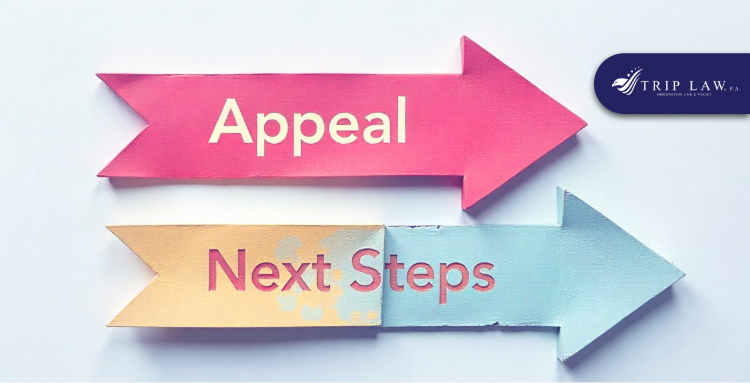
Always remember one thing, the more problems in life, the more solutions you will get. So, you have to overcome some steps to achieve the right to work, in these complicated situations.
Steps to Take If You Lose Your Right to Work
If you lose your right to work due to asylum rejection, you have to appeal immediately. Additionally, you have to request the asylum officer to review your asylum application again. Before going to the appealing process you can apply for withholding of removal. Then, the particular court will decide whether you are eligible for asylum or not based on your documents. Now, you can start appealing by following some important steps.
Preparing documents for appeal: First of all, you have to prepare your documents for appeal carefully. In this document, you should mention your requirements for taking asylum. You have to show evidence that you will be in danger if you return back to your home country.
Submitting the documents to the asylum office: Your asylum might be rejected by the immigration court or federal court. However, you can submit your documents for appeal to your nearby asylum office.
Referring your case to the Immigration Court: If the immigration court denies your asylum application you can appeal to the BIA or Board of Immigration Appeals within 30 days. Otherwise, the immigration court will go to the removal proceedings. After reviewing your documents, if the BIA thinks the immigration court made any mistakes, they return your appeal documents to the immigration court again.
Appealing to the Federal Court: If the BIA denies your application, you can appeal to the federal court within the next 30 days. Just like the previous step, a federal court may return your documents to the BIA, if they find any mistakes.
Appealing to the Supreme Court: Based on the decision of the federal court, you can appeal to the highest court of US immigration. If the Supreme Court rejects your case you have no option left without leaving the US. If any of the courts accept your appeal you can apply for the work authorization again.
Finding Help and Support
Since applying for appeal is a very sensitive case for asylum-denied individuals, it's highly recommended to get help and support from a professional in every step. They can play a great role in presenting your documents in such a way that your evidence of seeking asylum will become stronger than before. Plus they will guide you to answer any questions of the immigration office in a proper way. Ultimately they will help their heart and soul to win the case of your asylum.
Where to Find More Help:
You can follow some more resources to find more help and support. You can utilize these resources to make your journey towards your dreams more effortless.
Places You Can Turn to for More Info and Assistance
You can visit the local asylum office or immigration office to get the necessary information about the appeal process. Some other government agencies are available to assist you online. So, you can take any kind of assistance from them. You can visit the official sites of U.S Citizenship and Immigration Services, United States Courts of Appeals, U.S Department of Justice. and Immigration Help.
Helpful Resources You Can Use
You already have understood the importance of an immigration attorney to guide you in winning the case. Along with the government and non-governmental sites, you can visit Trip-Law. This first-rate immigration attorney can help to resolve any of your immigration-related issues efficiently.
Summing up,
Securing permanent residency and work authorization from asylum rejection is a challenging journey for every asylum seeker. Today we explored a complete picture of experiences the asylum seekers undergo when their asylum is denied. Also, the steps they can take to deal with these challenges smoothly. Hopefully, now you can understand the options that asylum seekers can follow to work in the US when their asylum gets rejected. If you have any queries you can comment. And share our discussion with anyone seeking expert guidance about asylum-denied work authorization.

The U.S. Citizenship and Immigration Services (USCIS) interview is one of the most important steps in your immigration journey. It is your chance to prove that you are eligible and qualified for the immigration benefit you are seeking, such as a green card or citizenship. However, if English is not your native language, you may face some challenges in communicating with the USCIS officer and understanding the questions. That’s why you may need a translator to help you out. But how do you request an interpreter for your USCIS interview? Keep reading to find out how.
Types of USCIS Interviews & When You need an Interpreter
The U.S. Citizenship and Immigration Services (USCIS) conducts a variety of interviews to assess eligibility for immigration benefits. Some of the most common types of USCIS interviews include:
Adjustment of Status (Form I-485) Interview
This is for applicants who are already in the U.S. and want to become permanent residents (green card holders). The interview is conducted by a USCIS officer at a local field office. The officer will ask questions about the applicant’s identity, background, eligibility, and relationship with the petitioner (the U.S. citizen or permanent resident who sponsored the applicant).
Naturalization Interview (Form N-400)
This is for applicants who want to become U.S. citizens. The interview is conducted by a USCIS officer at a local field office. The officer will ask questions about the applicant’s identity, background, eligibility, and attachment to the U.S. The officer will also administer the naturalization test, which consists of an English test and a civics test.
Asylum Interview (Form I-589)
This is for applicants who are in the U.S. and want to seek protection from persecution or harm in their home country. The interview is conducted by an asylum officer at an asylum office. The officer will ask questions about the applicant’s identity, background, eligibility, and fear of persecution or harm.
There are two types of asylum interviews: credible fear and reasonable fear
Credible Fear Interview (Form I-589)
An interpreter is required for a Credible Fear Interview (Form I-589) if you are not fluent in English. This interview is conducted to determine if an asylum applicant has a credible fear of persecution or torture in their home country.
Reasonable Fear Interview (Form I-589)
An interpreter is required for a Reasonable Fear Interview (Form I-589) if you are not fluent in English. This interview is conducted for certain categories of asylum seekers who may have a reasonable fear of persecution or torture in their home country.
Family-Sponsored Petition Interview

An interpreter is typically required for a family-sponsored petition interview if you are not fluent in English. This includes interviews for:
Fiance(e) Visa (K-1) Interview
An interpreter is typically required for a Fiance(e) Visa (K-1) Interview if the applicant is not fluent in English. This interview is conducted to determine eligibility for a K-1 visa, which allows a fiancé(e) of a U.S. citizen to enter the U.S. and marry within 90 days.
Widow(er)(s) of U.S. Citizens Interview (Form I-360)
An interpreter is typically required for a Widow(er)(s) of the U.S. Citizens Interview (Form I-360) if the petitioner is not fluent in English. This interview is conducted to determine eligibility for an immigrant visa for the spouse of a U.S. citizen who died within two years of their marriage.
Violence Against Women Act (VAWA) Interview (Form I-360)
An interpreter is typically required for a Violence Against Women Act (VAWA) Interview (Form I-360) if the petitioner is not fluent in English. This interview is conducted to determine eligibility for an immigrant visa for spouses or children of U.S. citizens or permanent residents who have suffered abuse from their family members.
When You Need an Interpreter
An interpreter is a person who helps you communicate with the USCIS officer by translating what you and the officer say or write during the interview. He/she is typically required for any USCIS interview if you are not fluent in English.
However, there may be some exceptions to this rule. For example, if you are applying for a fiancé(e) visa (K-1), you may not need an interpreter if your fiancé(e) is a fluent English speaker and can act as your interpreter.
In addition to not being fluent in English, there are other reasons why you may need an interpreter for your USCIS interview. These reasons include:
Having a hearing impairment
Having a speech impairment
Having a mental health condition that makes it difficult for you to communicate effectively
Being unfamiliar with the American legal system
How to Ask for an Interpreter

Securing an interpreter for your USCIS interview is crucial for ensuring effective communication and a fair evaluation of your case. Here's a step-by-step guide on how to effectively request an interpreter:
Step 1: Ask Early
It's essential to notify USCIS as soon as possible that you require an interpreter. This allows them ample time to find and schedule a qualified interpreter for your interview. Procrastination may result in limited interpreter availability or potential delays in your interview process.
Step 2: Find the Right Person
The choice of interpreter plays a significant role in ensuring a smooth and successful interview. Ideally, the interpreter should possess the following qualifications:
Fluency in both English and your native language
Strong communication skills, including the ability to convey complex legal concepts clearly
Impartiality and objectivity, ensuring accurate and unbiased translations
Understanding of immigration terminology and procedures
Consider seeking recommendations from friends, family, or community organizations that have experience with immigration matters. You can also check online resources and interpreter directories to find qualified individuals.
Step 3: Make Sure They Know About Immigration Stuff
While language proficiency is essential, an interpreter with a background in immigration law and procedures is highly desirable. This expertise ensures that they can accurately interpret legal jargon, understand the nuances of immigration applications, and effectively communicate the interview process to you.
Step 4: Share Important Papers
Provide your interpreter with copies of any relevant documents, including your application forms, supporting documents, and any pre-interview materials provided by USCIS. For example:
Form G-1256 (Declaration for Interpreted USCIS Interview)
Birth certificate
Marriage certificate
Passport
Medical examination reports
Police clearance certificates
Affidavits
This will allow them to familiarize themselves with your case and prepare adequately for the interview.
Step 5: Be Ready to Pay
Interpreters typically charge for their services. The average cost for an interpreter is around $20 per hour or more, depending on language and individuals. While some organizations may provide free or low-cost interpretation services, it's important to inquire about the fee structure beforehand to avoid any surprises. Factor in the cost of interpretation services when budgeting for your immigration process.
Additional Tips For You
Communicate Clearly: Clearly articulate your needs and expectations to your interpreter to ensure they understand their role and responsibilities.
Provide Feedback: Feel free to provide feedback to your interpreter if you have any concerns about their performance. Open communication will help ensure a positive and productive working relationship.
Practice Together: If possible, schedule a practice session with your interpreter to familiarize yourself with the interview format and enhance your comfort level.
By following these guidelines and carefully selecting a qualified interpreter, you can ensure that your voice is heard and your case is presented effectively.
Where to Find an Interpreter

If you need an interpreter for your USCIS interview, you may have a hard time finding one that meets the requirements and qualifications. However, there are some resources that can help you find a professional and reliable interpreter.
Here are some of them:
Resource 1: The National Association of Judiciary Interpreters and Translators (NAJIT)
NAJIT is a professional organization for interpreters and translators who work in the legal system, including USCIS interviews. You can search their online directory to find a qualified interpreter in your area. NAJIT also offers a variety of resources for finding interpreters, including a guide to hiring and working with interpreters.
Resource 2: The American Translators Association (ATA)
ATA is a professional organization for translators and interpreters in all fields, including immigration. You can search their online directory to find a qualified interpreter in your area. ATA also offers a variety of resources for finding interpreters, including a guide to hiring and working with interpreters.
Resource 3: Your Local Community Groups
Many local community groups have connections to interpreters who can help with USCIS interviews. You can contact your local community center, library, or religious organization to ask for recommendations. You can also check online directories of local community groups.
In addition to these resources, you can also ask your friends, family, and other contacts for recommendations. If you know someone who has used an interpreter for a USCIS interview, they may be able to recommend someone you can trust.
Conclusion
Requesting an interpreter for your USCIS interview is a crucial step in your immigration case. However, you must also follow the rules and regulations for using an interpreter and choose your interpreter wisely. You must inform USCIS of your need for an interpreter early and provide the details of your interpreter.
If you need more help or guidance related immigration, you can contact Trip Law, a professional and experienced immigration law firm. Trip Law can assist you with your overall application process, preparing you for your interview.

EB-1 and EB-2 visas are employment-based immigrant visas designed for foreign people, who want to live permanently in the USA. Asylum applicants with pending asylum status can apply for the EB-1 or EB-2 category of the green card if they fulfill some specific criteria.
These visas can affect the pending asylum application in various ways. So, today we are going to discuss the conditions of applying for EB-1 or EB-2 in the perspective of pending asylum status. Let's dive in!
Am I Eligible for EB-1 or EB-2 While Waiting for Asylum Status?
Yes, you can apply for EB-1 or EB-2 while waiting for asylum status. Just remember: your waiting period must exceed 180 days from the day of filing the application. If you don't get any invitation for an asylum interview in that period, you can apply for an employment-based green card. It's crucial to fulfill certain special conditions to be eligible for EB-1 or EB-2.
Do I Need a Job Offer for EB-1 or EB-2 Application?
EB-1 is the first preference category of employment-based green card and EB-2 is the second preference. Similarly, both EB-1 and EB-2 have 2 different subcategories.
Since EB-1 focuses on expertise in any field, a specific subcategory of EB-1 does not look for any job offer or labor certification to prove your work experience. You just need to show your achievements as proof of your knowledge or contribution in a particular subject.
In the first subcategory of EB-1 (which is EB-1a), no job offer is required. However, the second and third subcategory of EB-1(EB-1b and EB-1c) requires job offers or sponsorship from US employers. However, EB-1c does not require any labor certification.
Similarly, in some specific criteria, the EB-2 category does not require any job offer. In EB-2, some candidates having exceptional ability can apply for the National Interest Waiver (Committed for social work) and do not need a job offer. Doctors, nurses, or other professionals who want to work for the well-being of general people might be eligible for a National Interest Waiver (NIW).
However, those who have only an advanced degree with work experience need a job offer and labor certification for an EB-2 application.
What Qualifications Do I Need to Meet for EB-1 or EB-2?

Two distinct types of qualifications are required to be eligible for EB-1 and EB-2 green cards.
EB-1:
Individuals can apply for the EB-1 category if they have extraordinary ability (EB-1a subcategory) or contribution to the field of teaching and research (EB-1b subcategory). However, executives and managers of any multinational company are qualified for the EB-1c subcategory.
Applicants must have an extraordinary ability or expertise in any field to be eligible for EB-1a. That means those who have any nationally or internationally recognized award or achievement are considered as extraordinary abilities.
For EB-1b subcategory, applicants must have experience in teaching or conducting research in a particular academic or other institution.
EB-2:
Candidates with advanced degree or exceptional ability can apply for the EB-2 category. As an advanced degree holder, you just have to show your academic qualifications and work experience to the immigration office. Individuals having a minimum bachelor degree from the US or its similar academic qualification from abroad can apply for it.
Besides, they should have a minimum of 5 years of work experience in the same sector. On the other hand, candidates for exceptional ability should have a great knowledge in any subjects like science, arts, education , athletics or business.
How Do I Navigate the EB-1 or EB-2 Application Journey While Waiting for Asylum?

You have to follow proper steps or procedures for navigating the EB-1 or EB-2 application journey in your asylum pending situation.
What Steps Should I Take to Apply for EB-1 or EB-2 While My Asylum Application is Pending?
You can follow 5 steps to apply for EB-1 or EB-2.
Labor certification: First of all, you must check the eligibility criteria for EB-1 or EB-2. Choose any category based on your qualification. If you need a job offer or sponsorship from a US employer you have to fill out form ETA-9089.
Immigrant petition: When the department of labor approves your labor certification, you have to fill out a form I-140 mentioning your information. That means, you have to mention which subcategory of EB-1 or EB-2 you are applying for. Your hiring manager can also fill out this form showing that they are hiring a foreign worker for their organization.
Adjustment of status or permanent residency:
This is the main process of green card application for asylum seekers. After the approval of form I-140, you have to apply for adjustment of status by filling out a form I-485. Since your asylum application is pending and you are currently staying in the US, you have to adjust your visa status. At this time you can apply for an Employment Authorization Document and travel document as well. If you want to know the detailed information about other documents that are necessary for the green card application, read: Pending Asylum to Employment Based Green Card.
Attending a biometric appointment: You have to attend a biometric appointment after getting an invitation from the U.S. Citizenship and Immigration Services (USCIS). In this appointment, the interviewer will take your signature, fingerprint and photos to investigate whether you have been involved in any criminal activities or not.
Green card interview: After investigating your criminal background the USCIS officers will take your interview. In this interview you have to show your documents and they will ask you questions to justify your documents.
Are There Any Restrictions or Considerations I Should Know?

Yes, there are some restrictions to consider while applying for an employment based green card. An asylum seeker should be well informed about these specific limitations before applying for EB-1 or EB-2.
Can a Denied Asylum Application Impact EB-1 or EB-2 Eligibility?
Yes, if your asylum is denied, you are not eligible to get a green card. That means you are not qualified for getting a lawful permanent residency in the US. Suppose, you have entered the US with a visitor visa and applied for asylum but it is pending. In that case, if you apply for a green card without adjusting your previous visa to a new visa category, there might be a problem.
Before getting the decision of green card approval, if your visa expires or asylum is rejected, you have to leave the USA. To avoid this type of uncertain issue, you have to adjust your visa status to get an immigrant visa.
What Documents and Proof Do I Need for Each Visa Category?
Along with all academic certificates, photos, birth certificate, police clearance, report of medical examination, personal details, employer details, you have to show some specific documents and proof for each visa category.
Documents for EB-1
Extraordinary ability: Evidence of achieving any prize or award, contribution in various disciplines, involvement in different exhibitions and confirming to work in the same field after getting permanent residency.
Outstanding researcher and professor: Documents of internationally recognized awards, publications of books or journals, membership of any research organisation and 3 years of research experience in any academic institutions.
Executives and managers of multinational companies: Documents showing that the petitioning employer is from the United States and wants to hire you for this managerial or executive post.
Documents for EB-2
Advanced degree: All academic records upto university and minimum 5 years of work experience.
Exceptional ability: Documents showing expertise and contribution in any subjects, 10 years of full-time work experience, professional licence to practise independently in a particular field, national interest waiver for specific individuals and other relevant documents.
What Happens if My EB-1 or EB-2 Application Gets Approved?

When your EB-1 or EB-2 application gets approved you will get an email from the USCIS. In this mail, they will send your green card document with a receipt number. If you enter this receipt number, you can check the status of your green card. If you apply for EB1 it will show on your green card status, or if you apply for EB2 it will show the same.
After getting your green card you can enjoy all the benefits as a permanent resident of the United States. You will get employment opportunities, healthcare facilities, social security benefits, financial assistance in education and traveling opportunities in many countries without any visa.
Also, you can sponsor your family members for getting green cards as well. Some of these benefits are available even after going to asylum. If you want to know what benefits a foreign individual gets after being approved for asylum.
Should I Get Professional Advice for This Process?
Although, you should have a good understanding about the immigration policy, still you should get advice from a professional. Consulting with a lawyer can help you in every step before receiving the green card.
Why is Consulting an Immigration Attorney Important?
Consulting with a immigration attorney is highly required to increase the chances of your green card winning. Since immigration laws change continuously. Sometimes it may change every year. If there is any change in the rules, the lawyer knows it before the general public. They also know how to handle any critical case related to a green card. So, to avoid any kinds of risks related to the shifting of EB-1 or EB-2 from pending asylum, you must consult with a well known immigration attorney.
Where Can I Find Resources and Assistance for EB-1 or EB-2 Applications?
Along with getting the help of an immigration attorney, you also need to do a good research on your desired green card category. Therefore, you must visit the US official immigration sites. Also visiting some popular immigration sites will give you a good idea about EB-1 and EB-2 green cards.
You can find the resources and assistance for EB-1 or EB-2 applications from the official sites of the Federal Laws and Regulations, U.S. Citizenship and Immigration Services, Travel.State.Gov,USA.gov,Visa Nation
Wrapping It Up,
Asylum seekers can follow certain rules and regulations before applying for an EB1 or EB2 green card. This article discusses whether a candidate can apply for a first or second preference employment-based green card while asylum is pending. Plus, the strategies to avoid any uncertain consequence during this transition period of pending asylum to EB-1 or EB-2 application. If you have any opinion regarding this blog post you can comment. And feel free to share this content to those who are struggling to get the right advice about shifting from asylum seeking to EB-1 or EB-2.
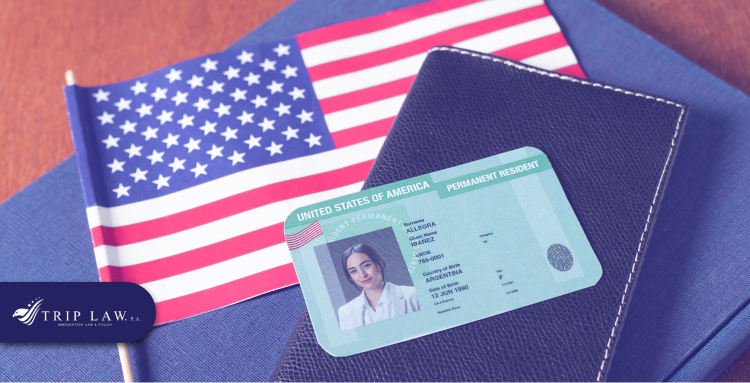
Let's say you've crossed oceans and continents, leaving behind everything you know and love in search of a safe haven, a place to call home. You've arrived in the land of opportunities, the United States, seeking refuge under the wings of asylum. But the wait for a decision is stretching into years, and the uncertainty is gnawing at your soul. You yearn for stability, for a place to plant roots and build a future.
Now, there's something called a EB-3 visa, a hope for those seeking permanent residency in the United States. But the path to an EB-3 green card while your asylum case is pending is not without its challenges. It requires careful planning, strategic maneuvering, and a dash of unwavering determination. Now that you are here, I am gonna share with you the knowledge and tips to navigate this complex system and come out with a green card, turning your temporary stay into a forever home.
What is the difference between asylum and EB-3 green cards?
Both asylum and EB3 green cards allow a nonimmigrant foreign individual to live and work in the USA. But there are several significant differences between these two immigration processes that many people have no idea about. Now, take a look at the differences between asylum and EB-3 green cards.
How can someone get an EB-3 green card?

The process of securing an EB-3 green card requires satisfying particular criteria. You can get an EB-3 green card by following certain steps.
Applying for jobs that match their qualifications and experience.
Managing sponsorship from a US Employer
Arranging a labor certification and filling out some forms. You’ll get to know more about the petition forms in Pending asylum to employment-based green card.
Gathering all the documents, including academic records, work experience, birth certificates, and other papers that are mentioned on the US immigration website.
Preparing for interview
Waiting for the decision of the immigration office.
Receiving a welcome mail when the EB-3 green card is approved.
If you asked for asylum, can you still ask for an EB-3 green card?
Despite being an asylum seeker, if you have the required eligibility criteria for EB-3, you can go for it. But before that, it's essential to understand certain key points to analyze the concept of these two individual visa categories thoroughly.
Asylum and EB-3 both are separate forms of the immigration process. EB-3 or Employment Based Green Card provides lawful permanent residency. Asylum applications provide a secured living and employment opportunity. Plus, the processing of asylum takes less time than EB-3. If asylum is pending, you can apply for EB-3. But if it is rejected, you can not apply for EB-3.
If you need immediate employment, you can apply for asylum. Then you have to apply for an EAD, or Employment Authorization Document, to get a job. It may take only 2-3 months on average.
If you are a non-immigrant and facing a lot of difficulties surviving in the US, you can apply for asylum. Because if your asylum is approved quickly, you can get all the govt facilities fast. But if you directly apply for EB-3 it may take a lot of time to process. Sometimes it may take 6 years or more.
But if your asylum has been pending for a long time, you can apply for an EB-3 green card. So, it's mainly dependent on your situation and economic ability.
What do you need to know about switching from asylum to an EB-3 green card?

If you want to switch from asylum to EB-3 green card, you have to know the eligibility criteria and application process for EB-3.
Eligibility Criteria:
Skilled workers: A minimum graduation degree with two years of work experience is necessary to apply for the skilled worker category. Graphic designers, journalists, and designers who are skilled in any work with relevant qualifications can apply for this.
Professionals: To apply for the professional worker category, you have to complete a bachelor's or master's degree with two years of work experience. Teachers, architects, doctors, engineers, lawyers, and other highly professional individuals can apply for it.
Unskilled or other workers: If you don't have more than two years of work experience, you can apply for the unskilled or other workers category. Just remember: You must have less than 2 years of training experience to apply in this category. Cleaners, caretakers, babysitters, and some other individuals who are involved in social care activities can apply.
Application Process:
At first, you have to check the eligibility criteria for different subcategories of EB-3 green card. See which subcategory matches your qualifications.
Apply for jobs at different organizations in the United States.
Employers will take your interviews to know more about yourself and your experience.
If the employer thinks you are the most suitable candidate for their organization, they will give you a job offer.
You have to accept the job offer.
Then, the hiring manager will apply for labor certification from the US Department of Labor, mentioning that they are hiring a full-time foreign worker for their organization to work permanently. So, they have to fill out a form ETA-9089 to receive a labor certification
Now both the employer and you have to fill out Form I-140 to get final approval for this job.
At this point, you have to fill out an online form DS-261 mentioning your contact information. The State Department can contact you with this information during the processing period of your EB-3 green card.
Make sure to conduct your medical examination at an authorized hospital. Additionally, you have to complete your vaccinations. Then collect a record of your vaccination and physical fitness.
Now, you have to pay your application fee, and your lawyer will submit your application with all the required documents.
Wait for the interview date.
You will get the decision of your green card approval within the next 2 months of the interview.
Are there any problems or things to think about when doing this?

Yes, you may face some problems during the processing of EB-3 green cards.It is highly recommended to have a detailed understanding of those problems.
Processing time: EB-3 green card approval is a time-consuming process. If you need an immediate job or security in the US you have to think before applying for it.
Difficulties in managing sponsorship: Sometimes it is difficult to find an employer who can sponsor you for the job. Because if any organization does not have any labor shortage, they won't hire any employees.
Financial cost: There are several forms to fill up in the case of an EB-3 green card application. Each form requires a certain amount of fee for submission. As a result, an applicant has to spend a lot of money on the application.
Long-term goal: Since the EB-3 green card processing takes a lot of time, you may lose your motivation in the middle of the processing period.
Effect on family: It becomes hard to survive with the family as a non-immigrant because you are spending a lot of money to get an EB-3 green card.
Job prospects: Every year the US government issues a few green cards for the EB-3 category. That's why they seek the best candidates compared with others. It creates a huge competition among green card aspirants for this limited number of green cards. This policy reduces the chances of getting employment opportunities.
What happens after you get an EB-3 green card?
After you get an EB-3 green card you will get a lot of benefits from the US government.
An EB-3 green card holder gets permanent residency in the United States with a full-time employment opportunity.
They have the flexibility to work without any Employment Authorization Document.
Job switching is possible after a few years without managing any sponsorship.
Opportunity to bring out family members.
Ensures free educational support for children.
Opportunity to apply for US citizenship after five years.
Is it important to talk to a lawyer when doing this?

Yes. A lawyer can guide you properly about shifting from pending asylum to an EB-3 green card. He can help you address the challenges that you may face during this situation.
Since the application process for the EB-3 green card is complicated enough compared with other categories. A lawyer can make the process easier for you. He will gather all the required documents and submit them accordingly. As a result, your troubles will be greatly reduced. So, it is highly appreciated to consult with a lawyer to increase the chances of winning an EB-3 green card. If you want to know the importance of consulting with a lawyer regarding other visa categories you can read: Why should you hire a lawyer for a k1 visa?
To Sum Up,
The EB-3 green card category is more popular than other categories for asylum seekers. However, a non-immigrant visa holder can apply for asylum or an EB-3 green card according to his situation.
I hope our little discussion here will help you to understand the whole concept of transitioning from pending asylum to an EB-3 approved green card. Plus, the difficulties that you have to overcome in this situation to obtain a green card are also discussed here.
Additionally, we discussed the benefits and challenges of this transition. You can leave a comment to share your thoughts about this content. Don't forget to share this blog post with anyone seeking guidance on the matter of pending asylum and EB-3 green card.

Asylum is the protection or safety that a state grants to any individual who left his own country due to any political or social issues. People who look for asylum are considered as refugees. Since they suffer from insecurity in their own country, they come to seek safety in some other country as an asylum.
When asylum is granted, those people get certain rights and benefits from the government. Today we are going to talk about what happens after asylum is granted and the benefits a person may receive from the country due to the asylum status.
What Happens When You Get Asylum
After getting Asylum you will be eligible for obtaining some legal authorizations and services from the country. Let's have a clear picture of what actually happens when you get asylum:
Working After Asylum: Getting a Job Legally
When your asylum application gets approved, you will get legal permission to work in the US within a year. After winning asylum, you will get a form I-94 which ensures you are legally getting entry into the US.
Along with that, you will get the EAD or Employment Authorization Document from the US government. You don't need to apply for this work permit because your asylum application is already granted. This EAD application is only applicable to asylum seekers who are in the period of pending asylum. If you want to know more about this, see Pending Asylum to employment-based green card.
Don't forget that different states of the US take different time limits for work permit processing. But it will not cross 12 months. If you do not get your work permit within this time, contact the asylum office immediately.
Money and Help: Social Security Benefits
When your asylum status is granted, you can apply for a social security card. It will help you in any critical situation in your life. The US government will provide you necessary financial assistance as per your qualifications. These benefits are applicable to retired, disabled, or other individuals who are struggling for a healthy and happy life. It is very important to keep your social security number safe. Because it will help you get a job, receive government facilities and for other purposes. Moreover, the US government can track your social security number for calculating the benefits you may get and to know the amount you have earned throughout your entire life. One more thing to be noted...
Do you know how the government gets the money to ensure your social security? All the legal employees of the US provide a certain percentage of their earnings for social security tax. This money is provided to the retired, disabled, and surviving individuals as financial assistance. So, as you are going to get the benefit of social security from the government, you are also responsible for paying taxes on social security. So, after your asylum approval, you will be able to receive social security benefits and you need to pay for tax as well.
Travel: Going Outside the Country

You can apply for a refugee travel document by filling out a form I-13. You can travel safely to other countries after receiving this document. Also, you can come back to the United States easily. It would not be possible to re-enter without this document.
Just remember: you have to apply for this travel document before leaving the US. This document will be valid for 1 year. So, you have to renew this travel document before it expires. After applying for this travel document, you can securely travel to your own country without any fear of political or social issues.
Being Together: Bringing Your Family
To bring your spouse and children to the US you have to fill out a form I-730 within two years of your asylum approval. This application will help you to obtain permission for bringing your family members. Keep in mind: You can bring your children who are unmarried and not more than 21 years old. Otherwise, you will not get permission to bring your children to the US.
After passing a year with asylum status you can apply for a green card, which ensures your permanent residency in the US. While you will receive the green card you can sponsor other members of your family for coming to the US. If you have any confusion regarding asylum application and getting a green card, you can read: Can you withdraw asylum application after a green card?
Becoming a Citizen
When asylum is granted, you will have the opportunity to gain citizenship in the country by following some steps. Let's discuss how can you get citizenship in different countries after Asylum:
Becoming a Citizen: What it Means
Getting Citizenship means you have acquired a new national identity of that country and get legal permission to receive all rights and responsibilities that other local Americans get.
As a citizen you will get the right to vote, protection in other countries, opportunity for public education, federal employment, and access to government facilities. Moreover, a US citizen can travel with a US passport which ensures convenience of transportation in a wide range of countries in the world without any restrictions. They don't need to get a visa to travel.
Examples of Getting Citizenship After Asylum:

The rules and regulations for achieving citizenship after asylum acceptance vary from country to country. Let's discuss the procedures for getting citizenship in different countries after asylum:
How It Works in Different Countries
United States: You should meet the eligibility criteria for citizenship application in the US. After five years of getting a lawful permanent residency or green card, you can apply for citizenship.
Canada: According to the immigration and refugee law of Canada, after completing three years of refugee resettlement or asylum approval, you can apply for citizenship. You should be physically present in Canada for five years including the last two years before asylum approval.
United Kingdom: You can apply for British citizenship after six years of your refugee or asylum status. After five years of asylum approval, you have to apply for Indefinite Leave to Remain (ILR). You can apply for citizenship one year after ILR is granted.
Australia: When you receive the asylum approval you must apply for permanent residency in Australia. After completing four years as a permanent resident in Australia, you can apply for Australian citizenship by fulfilling all the required criteria.
New Zealand: After getting refugee status you can directly apply for citizenship in New Zealand. But you have to wait for five years. You have to stay in New Zealand most of the time for five years. The immigration office will count your physical presence from the day of your citizenship application. At Least 8 months (240 days) in every year and a total of 450 months (1350 days) throughout the next five years you should ensure your physical presence in New Zealand.
More Help and Support
Apart from the benefits we have discussed earlier, you can get some additional advantages after your asylum is granted. Majority of individuals have no idea about these positive outcomes. Let's examine the more help and support you are going to achieve after receiving asylum status:
Other Good Things You Might Get:

Health insurance: The US government will keep a certain percentage of money from your earnings as a support of healthcare benefits and you will get the facility when you need it.
Banking facilities: You can get financial and banking services anytime.
Educational opportunities: You can receive free educational support for your children.
Financial aid: You can apply for financial assistance in your educational institutions.
Language training: As a foreigner, you will get English language learning support.
Career counseling: Career advisors of the US provide professional support and show the pathways of earning to the asylum holders. Moreover, they guide the asylees (holds asylum) if they need any additional training to increase their employment skills.
Job placement: You will get the opportunity of job placement from your educational institutions or other organizations. It will be helpful to reduce unemployment by increasing work opportunities. Plus they provide assistance in job search, resume building, skill development training, networking, and interview preparation support also.
Why Talking to a Lawyer is Important
Immigration lawyers can help you with all your immigration related problems. They guide an asylum seeker to understand how to apply for the green card. The lawyers can make you understand the issue simply from the language of law. Additionally, they will guide you which category of green card would be right for you. They will make the required documents for you and fight for you in court if you face any kind of inconvenience to receive the asylum approval. Besides that, a lawyer can help you to be well-prepared for the asylum interview. Triplaw is one of the very few that understands your situation and takes necessary steps.
In Summary,
Asylum helps you in many ways to ensure a secure life. This article has explained the necessary steps after asylum is approved and the rights and benefits an asylum holder receives. Additionally, you will get a brief idea from here, about the procedures for obtaining citizenship from this stage of asylum. If you have any opinion regarding this post you can comment. And feel free to share this article with those who have a lot of questions about asylum. Hope they will benefit from the article.

You’ve built a life in the US, but now you’re facing the threat of being forced to leave. You’re not alone. Every year, thousands of people are deported from the US for various reasons, such as overstaying their visas, committing crimes, or being undocumented. But deportation is not inevitable. You have rights and options to challenge the government’s decision and stay in the country you call home.
That's why, I’ll show you how to fight deportation from the US, explain the legal process, the possible defenses, and the best ways to prepare your case.
What Happens When Facing Deportation ?
Deportation is the process of removing a noncitizen from the U.S. for violating immigration law. The U.S. may detain and deport noncitizens who:
Participate in criminal acts.
Are a threat to public safety.
Violate their visa.
The deportation process can be complex and stressful, but it is important to understand what steps are involved and what rights you have.
Here is a brief overview of what happens when facing deportation:
Receiving a Notice to Appear (NTA)
The first step in the deportation process is receiving a Notice to Appear (NTA) from the Department of Homeland Security (DHS). The NTA is a document that informs you of the charges against you, the date and time of your hearing, and the consequences of failing to appear.
The NTA also tells you which immigration court will handle your case. The NTA is then served to you and filed with the immigration court.
Consultation with an Immigration Attorney
If you receive an NTA, you should consult with an immigration attorney as soon as possible. An immigration attorney can help you understand your options, prepare your defense, and represent you in court. You have the right to have an attorney, but the government will not provide one for you. You have to find and pay for your own attorney. You can also seek help from non-profit organizations that offer free or low-cost legal services to immigrants
Preparing for the Deportation Hearing

Before your deportation hearing, you and your attorney should gather evidence and witnesses to support your case. You should also review the immigration laws and regulations that apply to your situation. Your attorney will play a key role in preparing for the hearing, including:
Reviewing the NTA and identifying any legal issues or errors.
Gathering evidence to support your case, such as documents, witness statements, and expert opinions.
Preparing you for questioning by the immigration judge and government attorney.
Practicing your testimony and developing a strong narrative.
Attending the Deportation Hearing
Your deportation hearing is a formal proceeding where an immigration judge will decide whether you should be deported or allowed to stay in the U.S. You have the right to present your case, examine the evidence against you, cross-examine the government’s witnesses, and testify on your own behalf. The government will also have an attorney who will argue for your deportation. The immigration judge will listen to both sides and make a decision based on the law and the facts.
After that, the judge may issue a decision on the same day or at a later date.
If the Judge Says No (possibility of appealing to the Board of Immigration Appeals (BIA)
If the immigration judge orders your deportation, you have the right to appeal the decision to the Board of Immigration Appeals (BIA). The BIA is an administrative body that reviews immigration court decisions. You have to file a notice of appeal within 30 days of the judge’s decision. Additionally, you have to submit a brief explaining why you think the judge was wrong. The BIA will review your case and issue a written decision. They may affirm, reverse, or remand the judge’s decision. If the BIA denies your appeal, you may be able to appeal further to a federal court, but this is a complex and costly process that requires a lawyer.
How to Stay in the US When Facing Deportation

If you are facing deportation, you may have some options to stay in the U.S. legally. However, these options are not available to everyone and may depend on your specific situation. You should consult with an immigration attorney to determine the best course of action for your case. Here are some of the possible ways to stay in the U.S. when facing deportation:
Asylum
If you fear persecution in your home country for certain reasons, you may apply for asylum within one year of your arrival in the U.S. If approved, you will be granted asylum status and be eligible to apply for a green card after one year.
Cancellation of Removal
If you have been living in the U.S. for a long time and have good moral character, you may apply for cancellation of removal. Especially then, when your deportation causes extreme hardship to your U.S. citizen or permanent resident family members. To apply for cancellation of removal, you must file a Form EOIR-42A (for LPRs) or a Form EOIR-42B (for non-LPRs) with the immigration court. You must also pay a filing fee and submit evidence and witnesses to support your case.
Waiver of Inadmissibility
If you are inadmissible for certain reasons, such as fraud, unlawful presence, or criminal convictions, you may apply for a waiver of inadmissibility.
For that, you have to show that you deserve a pardon for your inadmissibility. Also, your deportation would cause extreme hardship to your U.S. citizen or permanent resident spouse, parent, or child.
To apply for a waiver of inadmissibility, you must file a Form I-601, Application for Waiver of Grounds of Inadmissibility, with the U.S. Citizenship and Immigration Services (USCIS). You must also pay a filing fee and submit evidence and affidavits to prove your eligibility and hardship.
Other Possible Defenses

Besides the options mentioned above, there may be other possible defenses that you can use to fight your deportation. Some of these defenses include:
1. Adjustment of status:
One way to avoid deportation and get a green card is to apply for adjustment of status from within the U.S. if you qualify for certain categories, such as family or employment. However, this option may not be available to you if you are inadmissible or entered the U.S. without inspection.
2. Withholding of removal:
Another way to get protection from deportation is to prove that you face danger in your home country for certain reasons, such as your race or religion. This is called withholding of removal. However, this does not give you any legal status or a way to become a citizen.
3. CAT protection:
You can also get protection from deportation by proving that you are likely to be tortured in your home country by or with the government’s consent. This is known as CAT protection. However, this does not give you any legal status or a way to become a citizen.
4. Prosecutorial discretion:
If you have no other defense, you can request the DHS to drop or end your case. This is called prosecutorial discretion. The DHS will consider various factors, such as your ties to the U.S., your criminal record, your humanitarian situation, and the national security interests, when making the decision.
Why You Need a Lawyer

Facing deportation is a complex and high-level legal matter that requires the expertise of an experienced immigration attorney. With so much at stake, it's crucial to have someone by your side who understands the nuances of immigration law and can effectively represent your interests.
One of the best choices for a lawyer is Trip Law, a Florida-based law firm that specializes in immigration law. We have over 15 years of experience in immigration law, and a reputation for excellence, integrity, and quality. We can help you with various immigration issues including above.
If you are facing deportation, do not hesitate to contact Trip Law today. We will provide you with the best legal representation and guidance that you deserve. You can call Trip Law at (863)-599-6735 or visit our website for more information.
Conclusion
Fighting deportation is like standing your ground in a high-stakes game. With the right legal guidance, evidence, and knowledge of your rights, you're in a better position to tilt the odds in your favor. Remember, every case is unique, and seeking professional advice is your best bet. So, gear up, stay informed, and give it your all - because in this game, your future in the US is on the line.

You've faced deportation, but that doesn't mean it's the end. In 2019, over 267,000 people were deported in the U.S. Deportation happens for reasons like visa violations or criminal activities. It can mess with your immigration status, making coming back a bit tricky. But don't worry, there are ways to bounce back. By understanding your deportation reason, appealing for re-entry, and getting the right legal guidance, you’ll get back your American Dream in no time.
Let's dig in and see how you can come back to the US after being deported.
What is Deportation and Why Does it Happen?
Deportation in the U.S., or removal as we commonly call it, is the official way of kicking someone out of the country for various reasons.
According to the U.S. Citizenship and Immigration Services (USCIS), deportation can happen if a person breaks immigration laws, commits crimes, overstays a visa, or poses a threat to national security.
Remember, it's not a spur-of-the-moment thing; there's a strict legal process with hearings and chances for appeals. The main aim of deportation is to keep the immigration system in check and make sure the nation stays safe and secure.
Even though it might seem tough, it's all about sticking to immigration rules and safeguarding the rights and interests of American citizens.
What are the Consequences of Deportation on Immigration Status?
When someone's up against deportation in the U.S., it's a big deal for their immigration status.
According to the American Immigration Council, getting deported can mean a ban from coming back, sometimes for many years or even for good, depending on the situation. This basically means they might not be allowed to return to the U.S. legally for a long time.
What's more, a deportation order can seriously put a damper on trying to get things like asylum or a change in status. It's super important to realize that the effects of deportation can stick around for a long time when it comes to legally living in the United States.

Differences Between Voluntary Departure and Forced Deportation
Alright, let's talk about the difference between voluntary departure and forced deportation. When it comes to leaving a country, you've got two scenarios.
Voluntary Departure:
This is when you decide to leave the US on your own. You do this within a certain time period set by the immigration authorities. Picking voluntary departure can be easier on your immigration record compared to getting kicked out forcefully.
It might not automatically make it harder to come back in the future. Depending on how things went down, if you left on your own, you might have a better shot at applying for visas or coming back legally.
Forced Deportation:
Now, forced deportation is when the immigration authorities step in and say, "Time to go." It's all official and legal. There's a whole process with hearings and appeals, although how it plays out can vary depending on the jurisdictions.
If you get forcibly deported, it could make it much trickier to come back later. It might even give you a mark on your immigration record, and that's not great.
Depending on why you got deported, it might even lead to a criminal record, which can cause more issues.
What are the Options for Re-Entry and Rehabilitation?

When someone gets deported, it isn't the end of the road. There are options out there for re-entry and rehabilitation.
You can try applying for a Waiver of Inadmissibility. This is like officially asking to let you escape the past deportation and let you back in. But it's not a walk in the park. You've got to show some strong proof that having your return won't be a problem for the country. This might mean showing you've got solid family ties, and job prospects, or even that you've been a positive force in the community.
Another route is to appeal the deportation order. This is like saying, "Hold on, let's take another look at this decision." It means presenting new evidence or pointing out mistakes made in the first go-around. It's a pretty intense process that needs a deep understanding of immigration laws and a super careful approach to building your case.
If you're gunning for legal re-entry, getting a visa is key. The type of visa you need depends on your specific situation. For example, if you've got close family who are U.S. citizens or permanent residents, you might want to look into family-based visas.
Likewise, if you've got a job offer from a U.S. employer, employment-based visas are on the table. Just make sure all your documents are in order and go through the application process with a fine-tooth comb.
But it's not just about paperwork. Showing you're working on turning things around and becoming a productive member of society is a big deal. Getting involved in community service or educational programs, and keeping a clean legal record can really boost your case for re-entry.
Remember, making your way back after deportation is a complex and tough journey. You've got to know your situation when it comes to immigration laws and put in a solid, well-documented effort to prove you deserve a second shot.
How can I appeal for Deportation Orders and Waivers?
If you're in a spot where you need to fight a deportation order and apply for waivers, we've got your back, He’s what you need to do:
First, time's essence. The U.S. Citizenship and Immigration Services (USCIS) says you've got a limited window to file an appeal once that deportation order hits. So, move quickly to kick things into gear.

Your starting point is filling out Form EOIR-26, also known as the Notice of Appeal from a Decision of an Immigration Judge. It's the official paper that gets the appeals process rolling.
Now comes the part where you build your case. Gather up all the important documents and evidence that can back up your appeal. Think affidavits, records, or anything else that supports your side. A strong case can really make a difference.
Keep a close eye on the rules and deadlines laid out by immigration authorities. Make sure you get copies of the appeal to everyone involved and handle any fees that are needed. Missing a step here can cause unnecessary hold-ups.
While it's not a must, having an immigration attorney or an accredited representative on your team can be a game-changer. They know the ropes and can give you some seriously valuable advice.
Are there any chances of Rehabilitation and Change after deportation?
Yes, there's a chance to turn things around and make a fresh start after getting deported from the U.S.
According to the American Immigration Council, folks who've been deported can take steps toward getting back on track. That might mean dealing with the root causes that got them deported in the first place, like legal issues or immigration status stuff.
Getting into programs that help with personal growth, education, and job skills can be a big deal too. Plus, showing that you're committed to following U.S. laws and rules can go a long way in proving you've changed for the better.
Navigating the Re-Entry Process after Deportation from the US.

Getting back into the U.S. after deportation is a bit of a tricky journey, but with the right help, it's doable. Let us break it down for you briefly:
First things first, you have to check if you're even eligible to apply for re-entry. The reason why you got deported and how long you're barred from coming back will come into play.
If there's a specific time you're not allowed to come back, you'll have to hang tight and wait it out. The length of this wait can vary based on what happened.
Getting an immigration attorney on your side is a super smart move at this point. They'll look at your situation, tell you the best way to go and help you through the whole process.
Next, you have to fill out Form I-212, Application for Permission to Reapply for Admission. It's crucial to get it all right and give them all the documents they ask for, like proof that you've turned things around and a detailed explanation of why you should be allowed back.
If you're planning to move back to the U.S., you'll also need to file Form DS-260, Immigrant Visa Electronic Application. You can do this on the U.S. Department of State's Consular Electronic Application Center (CEAC) website. This step is key if you're aiming to immigrate back.
If they ask for it, you'll have to go for an interview at the U.S. embassy or consulate in your home country. Be ready to talk about your case, hand over any needed documents, and answer questions about your eligibility.
Once you've sent in your application and done the interview, it's time to wait for the authorities to make a call. The wait times can vary, so be patient.
Depending on your situation, there might be more things you need to do. Just make sure you follow all the instructions immigration officials give you during this time.
Why Should I Seek Legal Help After Deportation?

Getting some legal backup in a situation like this is like having an experienced guide through a tricky path. The U.S. Department of Justice points out that immigration laws are pretty complex and they can change. So, having a pro who really knows this stuff can be a game-changer.
Trip Law is always ready to guide you through the ups and downs of immigration issues like returning to the U.S. after deportation. We have skilled immigration attorneys who can help you figure out all the twists and turns of appeals, waivers, and the reentry process.
We're experts at looking at your unique case, spotting any potential problems, and coming up with a solid plan just for you. Also, we're up-to-date on the newest policies and can give advice based on what's happening right now in the legal world.
And let me tell you, this can make a huge difference in boosting your chances of a positive outcome.
So, make sure you hit up Trip Law because getting some legal advice can really amp up your efforts to bounce back from deportation and aim for a brighter future in the U.S.
Conclusion
So there you have it, getting back to the U.S. after being deported might be a bumpy ride, but it's possible with the right steps. Remember, it's all about knowing the rules, having the right support, and being patient through the process. With the right approach, you've got a shot at making a successful return and building a brighter future in the U.S.

Did you know that asylum seekers in the US contribute billions of dollars to the economy each year? It's true! In fact, a recent study found that asylum seekers in the US generated $25 billion just in tax and $5.1 billion in business in 2019.
That's a lot of money! But why don't we hear more about the economic benefits of asylum seekers? One reason is that the conversation about asylum seekers is often dominated by negative stereotypes. People often think of asylum seekers as a burden on society, but the truth is that they are a valuable asset to the US economy. In this article, you'll take a look at some of the hidden economic benefits of asylum seekers in the US. Also, explore why it's important to support asylum seekers and create policies that help them integrate into our society.
Starting Off

Let’s start from who these asylum seekers are, what’s their right and why it’s crucial to help them grow with other native US citizens.
What Are Asylum Seekers? Learning About Their Rights
An asylum seeker is a person who has escaped from their own country and is looking for safety in another country. They may have left their country because of being oppressed or harmed for their religion, citizenship, race, social identity, or political views.” Asylum seekers have certain rights under international law. In particular, the right to seek asylum, the right to a fair and efficient asylum procedure, and the right to non-refoulement (meaning that they cannot be returned to their home country if they are in danger of persecution).
Why Helping Asylum Seekers Is Important
Helping asylum seekers is important for a number of reasons. First, it is the right thing to do. Asylum seekers are fleeing persecution and violence in their home countries. They deserve a safe place to live and rebuild their lives. Second, helping asylum seekers is good for the economy. Asylum seekers are entrepreneurs, small business owners, and workers who fill essential jobs in our economy. They start businesses, create jobs, and pay taxes. Third, helping asylum seekers is important for our national security. Asylum seekers often have unique skills and knowledge that can help us to better understand and respond to threats to our national security. Fourth, helping asylum seekers is also a benefit for the host country and the global community. They are often resilient, resourceful, and talented people who can contribute to the overall development of their new country. They bring diversity, creativity, and innovation to society and the workforce.
Helping the Economy

Asylum seekers are not only seeking safety and dignity, but also opportunities to contribute to their new country.
Starting Businesses: How Asylum Seekers Create Jobs
Asylum seekers often have entrepreneurial skills, such as creativity, resilience, and adaptability, that enable them to overcome challenges and seize opportunities. Asylum seekers contribute $23.4 billion to the US economy and create 120,000 new jobs. Asylum seekers are more likely to start businesses than native-born Americans. In 2019, there were nearly 188,000 refugee entrepreneurs in the country, accounting for 13% of the refugee population. This is significantly higher than the entrepreneurship rates of non-refugee immigrants (11.7%) and the U.S.-born population (9%). Asylum seekers start businesses in a variety of industries, including restaurants, retail, and construction. Their businesses contribute to the local economy by creating jobs, paying taxes, and generating revenue.
Where They Work: Healthcare, Farming, and Building
For sectors like healthcare, farming, and building, asylum seekers often have skills, qualifications, and experience that are in high demand, especially in areas with labor shortages.
They also have the motivation and willingness to work hard and learn new skills. For example, asylum seekers in the United States have been on the front lines of the COVID-19 pandemic, working as doctors, nurses, pharmacists, and other health professionals. Asylum seekers also contribute to the food supply chain, working as farmers, farmworkers, and food processors. Moreover, they help to build and maintain the infrastructure, working as engineers, architects, carpenters, and electricians.
How Much Money They Add: Asylum Seekers and Taxes
Asylum seekers and refugees pay taxes like any other resident. They pay income, sales, and property taxes, as well as fees and tariffs. By paying taxes, they help fund the public services and goods that everyone benefits from. Refugees and their family members contributed more than $343 billion in revenue to federal, state, and local coffers over the past decade. This is $63 billion more than they received in benefits from various programs.
So, do asylum seekers and refugees are a fiscal burden? NO, they don’t! Rather they are net contributors to the U.S. economy. Helping them is not only a humanitarian duty, but also an economic opportunity.
Asylum Seeker Are Not Threat To Public Safety: Dropping Crime Rates
According to a 2015 study, asylum seekers commit fewer crimes than those born in the United States. The study found that asylum seekers were 40% less likely to be arrested than native-born Americans. This study is important because it challenges the common stereotype that asylum seekers are a threat to public safety, which they are not. The evidence shows that asylum seekers are more likely to be victims of crime than perpetrators.
Being a Part of the Community

Do you know how asylum seekers and refugees enrich the community by tasting diversity, inspiring people, and helping out? Let’s explore how-
Tasting Diversity: Food, Music, Art, and Traditions
Asylum seekers and refugees enrich their communities by bringing their food, music, art, and traditions to the table.
They introduce new flavors, sounds, colors, and customs that reflect their diverse backgrounds and experiences. And they learn from and appreciate the local culture and cuisine. By sharing their cultures, asylum seekers and refugees create opportunities for intercultural dialogue, exchange, and learning.
They help to build stronger, more cohesive communities where everyone feels welcome and respected. According to a study by the World Health Organization, equal access to cultural and recreational events, as well as mental health care and psychosocial support, can facilitate the social integration of migrants and refugees.
People to Look Up To: Stories of Contributions
The US is home to millions of refugees who have fled their countries due to war, persecution, or violence. Meet the Refugees Who Are Making a Difference in the US-
Dr. Heval Mohamed Kelli, a Syrian refugee, is now a cardiologist and professor at Emory University School of Medicine. He is also founder of the Clarkston Community Health Center.
Luma Mufleh, an Iraqi refugee, founded Fugees Family, a non-profit that supports refugee children. She also started the first school in the US dedicated to refugee education.
Khaled Hosseini, an Afghan-American author, is best known for his novels The Kite Runner and A Thousand Splendid Suns. He is also a goodwill ambassador for the UN Refugee Agency.
Ilhan Omar, a Somali-American politician, is the first Somali-American elected to the US Congress.
Helping Out: Volunteering, Joining In
Asylum seekers and refugees enrich their communities by participating in community life and volunteering.
They join local clubs, sports teams, and professional networks. They volunteer for humanitarian and environmental causes, and they support religious groups.
By participating in the community, asylum seekers and refugees build social connections, learn new skills, and gain confidence. They also contribute to the social capital, civic engagement, and democratic participation of their new home. According to a study by the UN Refugee Agency, the integration of refugees is a complex process that requires cooperation from all parties involved, including a preparedness on the part of refugees to adapt to the host society.
Facing Tough Times

Asylum seekers and refugees face many challenges and barriers in their new country. They have to deal with issues such as housing, employment, language, health, and discrimination.
Finding a Place to Stay: The Challenge of Affordable Housing
Affordable housing is a major challenge for asylum seekers. They often have limited resources and options, and have to rely on temporary shelters, host families, or friends. They may also face discrimination or exploitation by landlords or neighbors.
Finding Jobs: The Struggle to Get Employed
Asylum seekers also face challenges finding employment. They have skills, qualifications, and experience that are in high demand in their home countries, but not recognized or valued in their new country. Additionally, many asylum seekers may also face legal, linguistic, or cultural barriers to enter the labor market.
Talking in a New Language: The Difficulty of Communication
Language barriers can make it difficult for asylum seekers to communicate with others and participate in their new communities. They may have difficulty accessing essential services, such as education and healthcare, due to language barriers, which makes them feel isolated and excluded from social activities.
Staying Healthy: How Asylum Seekers Get Medical Help
Accessing healthcare can be challenging for asylum seekers. They may have physical or mental health issues that result from their traumatic experiences, such as violence, torture, or displacement. Not only that, many of them do not have health insurance and are unable to afford medical care.
Feeling Left Out: Dealing with Isolation and Unfair Treatment
After all of these issues it’s obvious for asylum seekers to feel isolated and excluded from new communities. Even they face hostility or prejudice from their host society. They may face discrimination and unfair treatment due to their race, religion, or nationality.
How You Can Help

Let's not let asylum seekers and refugees suffer in silence. They had faced enough challenges and barriers in their previous home country, but not anymore in their new HOME. Now, it’s time for us to help and give support to rebuild their lives and futures in the US.
Giving Money: Supporting Groups that Help Asylum Seekers
Donate to organizations that support asylum seekers, such as the United Nations High Commissioner for Refugees (UNHCR), the International Rescue Committee (IRC), or the Refugee Council USA. These organizations provide essential services to asylum seekers, such as food, shelter, medical care, and legal assistance.
Giving Time: Volunteering to Help Asylum Seekers
Volunteer your time to help asylum seekers in your community. You could volunteer at a refugee resettlement agency, teach English to asylum seekers, or help them find jobs. It is a great way to make a difference in the lives of asylum seekers and help them feel welcome in their new communities.
Speaking Up: Asking for Rules that Support Asylum Seekers
Ask your elected officials to support policies that help asylum seekers. You can also speak out against discrimination and unfair treatment of asylum seekers. By speaking up, you can help to create a more welcoming and inclusive community for all.
FAQs
Do asylum seekers get free housing in the U.S?
Yes they do, but with limited government support and few resources. They may have to rely on the kindness of local non-profits organizations for food shelters. Even if they have family or friends in the US, they may not have the means to travel to them.
Can refugees get permanent citizenship after the asylum process?
Yes, refugees can get permanent citizenship after the asylum process. After being granted asylum, refugees can apply for a green card, which is a permanent resident card. After five years of being a green card holder, refugees can apply for U.S. citizenship.
Do asylum seekers get free NHS?
Yes, asylum seekers get free NHS care. They are entitled to all NHS services at no cost, including primary care (seeing a doctor, nurse, or other clinician in a GP surgery), hospital care, and prescription medications. They can get all these while their case is being heard, as well as to refugees who have been granted asylum.
Ending Thoughts
Asylum seekers are an important part of our communities. We should welcome them with open arms and support them. In this initiation, TripLaw is not staying behind. We can help them immigration process, like which immigration visas are right for them, gathering documentation, interview preparation, and adjusting to life in the U.S. after they immigrate.
If you are an asylum seeker or know someone who is, please contact Triplaw for a free consultation. We are here to help you navigate the immigration process and build a new life in the United States.
Where to Learn More: Links to Know More and Take Action
United Nations High Commissioner for Refugees (UNHCR) - “The global leader in refugee protection, provides aid and assistance to refugees, asylum seekers, internally displaced people, and stateless people.”
United States Citizenship and Immigration Services (USCIS) - “A government agency that oversees immigration benefits and services in the United States, provides information and resources on asylum and other types of immigration visas.”
National Immigration Law Center (NILC) - “A non-profit organization that advocates for the rights of immigrants, provides legal assistance to immigrants and advocates for policies that support immigrants and refugees.”

Human life goes through many changes and difficulties. After crossing so many obstacles in their life, finally they can reach the right destination. Those who face any kind of insecurity or fear in their own country can migrate to the US and live here as an "asylum" under US law.
We are going to provide you with the best guidelines about how you can shift from a stage of pending asylum to an employment-based green card category.
What is an employment-based green card?
An employment-based green card, also known as an immigrant visa for employment, is a special permission slip that lets people from other countries live and work in the United States for a long time. It's given to people who have skills, education, or experience that American employers really want. It's a way for them to stay in the U.S. and become permanent residents.
What is pending asylum?
Pending asylum means someone has asked to stay in the United States because they're scared to go back to their own country. They've asked the government for permission to stay, but the government hasn't said yes or no yet. While they're waiting, they can stay in the U.S. legally and can ask for permission to work here.
Can you apply for an employment-based green card while your asylum application is pending?
You can not apply for a green card in this category in your pending asylum situation unless you fulfill some criteria mentioning the valid and acceptable reasons for your green card requirement.
You must have a valid application of asylum pending with the U.S. Citizenship and Immigration Services (USCIS). You can apply for an employment authorization document (EAD) based on your pending asylum application after 150 days, but you will not be eligible to receive an EAD until your asylum application has been pending for a total of 180 days.
Second, you must have a job offer from a U.S. employer who is willing to sponsor you for a green card. The job offer must be for a full-time position in a job category that is eligible for employment-based immigration.
Third, you must meet all of the other eligibility requirements for an employment-based green card. This includes passing a medical exam and a background check.
What are the benefits of applying for an employment-based green card while your asylum application is pending?

According to US immigration law, you are encouraged to apply for an employment-based green card when your asylum is granted. Additionally, you must stay continuously one year in the US and you should not move to another country outside the US in this time period.
After ensuring one year of physical presence in the US you can submit the required documents for employment-based green cards. But in case of asylum pending situations, if you need an employment-based green card, you will get the following benefits:
When people ask for asylum, it can be risky to travel to other countries. But if you apply for an employment-based green card, you can travel more easily without any limits and come back to the United States whenever you want.
You can get a full work permit and do any job according to your preference.
Who Qualifies?
Not everyone who's waiting for asylum can apply for an employment-based green card. So, who can apply? First, let's talk about the different types of work-based green cards.
What are the different types of work-based green cards?
There are distinct types of employment-based green cards. They are divided into a total of five categories from one to five in order of occupational preference. Let's discuss them in detail:
EB-1(Green Card based on extraordinary ability): In this category, any job offer from a US employer or employment certification is not required. If you have expertise in any subject or you receive any prestigious award, you can apply in this category with the evidence of your achievements.
EB-2 (Green Card based on advanced qualification):
First, you need a sponsor from a US organization. Plus, that organization's boss has to apply for something called "Permanent Employment Certification (PERM)" to prove they want to hire someone from another country to work in the US permanently.
But, if you're really exceptional at what you do, you can ask for something called a "National Interest Waiver (NIW)" instead of going through PERM.
Just remember: To apply in this category, you'll need a higher degree and the right work experience.
EB-3 (Green card applicable for skilled individuals, any specialists, and other working personnel): When American employers want to hire people from other countries, they need something called "labor certification." For professionals, like doctors or engineers, they need a bachelor's degree or something similar and at least two years of experience. They also need a job offer from a US employer.
For "other workers," who might do different kinds of jobs, they don't need as much experience. They just need a US employer to hire them, even if they're not considered highly skilled.
EB-4 (Green card for special workers): This category is applicable to foreign nationals who are in a religious occupation, healthcare professionals, or working in any international organizations such as the World Bank or Voice of America.
EB-5 (Green card for investors):
The EB-5 green card asks for an investment that creates jobs for at least ten Americans. After two years, it can get you permanent residency in the US. It takes a while to process, but it comes with lots of advantages in a short time once it's approved.
Any extra requirements for asylum seekers?

Asylum seekers can apply for any type of employment based green card that matches their qualifications. Studies have shown, the majority of them apply for the Eb-3 category because it is suitable for both experienced and fresher candidates as well. If your application for Eb-3 is not granted, you have to fill out form I-290 B and appeal to the federal court.
Besides, they have a keen interest in the Eb-5 category too. It requires proof of a huge amount of capital investment for qualifying in this category. Also, you have to fill out form I-526 showing the amount of your investment in resources.
Steps to Apply
You must apply for the employment-based green card following some steps. In every stage of application, you need to fill out some forms in an orderly manner. Let's discuss these steps of the application process mentioning the detailed information about those forms:
How to fill out Form I-140, the petition for a foreign worker
When you want a job sponsor and other papers, go to the US immigration department's website and fill out form I-140. Make sure to put in all the right info about yourself and the company hiring you, like their work ID number. Don't forget to sign it before sending it in, or they might say no.
If they say yes, then fill out form G-1145 to get a confirmation. But be careful, if you leave anything out in the first three parts, they might say no right away.
How to complete Form I-485, applying for permanent residency
You should fill out the form I-485 to apply for lawful permanent residency. You must fill up 12 distinct sections of this form. In the 13th section, you should attach your signature, which is applicable after completing the interview. You need to provide a filing fee to fill out this form. In this form, you have to mention your personal information, immigration and employment history, and some additional information, and finally, you should attach your documents including certifications and signature.
Filling out Form I-765 for work authorization
If you want to work legally in the US, fill out Form I-765. This form shows you're allowed to work here. You'll need to pay a fee to the USCIS for this.
They'll check if you're eligible for a work permit or an employment-based green card. Make sure to fill out all six parts of the form carefully. If you don't have this work authorization, you can't work for any US employer.
You can also use Form I-765 to renew or change your Employment Authorization Document (EAD).
Applying for a travel document with Form I-131

When you're applying for a green card, you have to fill out form I-131 to get a travel document. If you don't, you might not be allowed back into the US after going to another country.
Without this travel document, you can't ask the US government for permission to travel there.
If you use your green card to come back within a year, that's okay, you don't need an extra permit. But if you'll be away for more than a year, you have to get something called a re-entry permit. To get this permit, you need to fill out form I-131 and get your travel document.
The Interview Process
After filing the documents for employment-based green cards you need to prepare for the interview. It is the final step of your application process which happens after seven to fifteen months of filing. Let's have a good understanding of the interview process:
What to expect during your green card interview
During the interview, the team will check if your documents are real and match what you say. So, get ready and be confident when they ask you questions. Stay positive and connect your answers to your documents. They might ask about your education, work experience, the company hiring you, your salary, and where you live in the US.
They might also ask if you've ever been in trouble with the law in your home country or if you've broken any US immigration rules since you came here. Since you're switching from seeking asylum to getting an employment-based green card, they'll want to know if you've had any issues with the law. So, these kinds of questions will likely come up during your interview.
Essential documents to bring along
All your school or college certificates
Two passport-sized color photos
Your birth certificate
Documents showing your marriage
Records proving you've paid taxes
A letter offering you a job
Any other papers listed on the USCIS website
Getting Approved

When your green card is approved you will get the card of permanent residency or green card. You will get a welcoming mail with your new permanent residency card.
What happens once your employment-based green card is approved?
When the green card is approved you can receive all the government facilities and other social facilities with relaxing career opportunities. Apart from that, you can apply for a driving license and social security card, which is not restricted.
When approaching your employer you must show your work authorization along with other documents as proof of your identity. Now a question is surely coming to your mind after getting your employment-based green card whether it is necessary to withdraw your asylum application or not, right? Well ... .You can read this article to remove your confusion: Can you withdraw your asylum application after a green card?
The perks of having a green card
The opportunity of permanent residency.
Working freely without any restrictions
Starting business
Purchasing a house.
Citizenship opportunity after 5 years.
Traveling abroad without any risk
Healthcare facilities
Sponsor other members of the family to get a green card
Social security and all kinds of legal rights
Applying for financial aid in educational institutions.
Government facilities
Closing the Case
It is possible to apply for an employment-based green card in the situation of pending asylum if you can show evidence of the valid reasons for this transition. This article has discussed the common challenges people face in this stage and the effective solutions to overcome these issues.
If you have any opinion regarding this article you can comment. Feel free to share this post with your known individuals who are worried about the steps of shifting from pending asylum to employment-based green cards.
If you want to know more, you can visit the official sites of US law: Federal Laws and Regulations, U.S. Citizenship and Immigration Services, Travel.State.Gov.

We all want to be close to our family, and with the adjustment of status you can give your parents the chance to live by your side in the US and enjoy the American dream. But all these immigration laws and regulations surrounding the process of adjustment of status might get you confused. This article can help you understand the procedures better, starting from the basics to all the important details, we have covered it all. So, let’s take a look at how you can apply for adjustment of status for parents while on a visitor visa.
The Adjustment of Status
Let’s take a look at what does it actually mean by the Adjustment of status and if it’s possible to apply for this status through a visitor visa.
What is Adjustment of Status?
If a person is already in the US as a non citizen, visiting, studying or working, they can apply for the Adjustment of Status to get a green card without needing to go back to their home country.
Is it possible to apply for this adjustment on a visitor visa?
Yes, you can apply for the adjustment of status on a visitor visa. But to apply for this adjustment they have to meet certain eligibility requirements.
What are the eligibility requirements for family-based adjustment of status?
To apply for a family-based adjustment of status, you have to meet these following requirements:
Must be present in the US
Should be eligible for any immigrant visa category
Have a family member holding a lawful permanent resident status or US citizenship
Must not have any sort of criminal records or inadmissibility
Types of visitor visa eligible for adjustment of status
To apply for the adjustment of status from on a visitor visa, you must have entered the United States legally through these types of visas:
B1 visa, this visa is for temporary visit for business.
B2 visa, this visa is for leisure or medical purposes.
What are the required forms and documentations?

So, here we will discuss the forms and documents you will need to apply for the adjustment of status for your parents. Let’s take a look.
Form I-485
To apply for the Adjustment of Status for your parents while they are already residing in the United States through B1 or B2 visa, you have to fill up the Form I-485 and submit it to the USCIS with all the supporting documents attached.
What supporting documents are necessary?
These are the supporting documents you will need to apply the adjustment of status for your parents:
Proof for parent-child relationship, like birth certificate, adoption certificate, or any other documents that clearly defines your relationship.
Parent’s eligibility for the immigrant visa status, this might include the approved Form I-130 or proof that they are eligible for any other immigrant visa types.
Proof of admissibility, like police clearance reports, medical reports and proof of financial stability.
Are there any financial requirements?
Yes, there are some financial requirements when applying for the adjustment of status for your parents. This requirement makes sure that your parents will be able to financially support themselves after receiving the lawful permanent resident status. The financial requirement will depend on the sponsor’s income and household scale. If you are the sponsor, your income should at least meet 125% of the federal property guidelines for households. You can also use assets or a joint sponsor to meet the income requirement for the adjustments of status for your parents.
The Affidavit of Support
The Affidavit of Support is the Form I-864, you have to submit this form to show the US government that you are going to legally sponsor your parents financially. It means you will be responsible for providing your food, shelter, medical bills, and other basic living needs.
Evidence of admissibility

The evidence of admissibility shows that your parents are eligible to live in the US permanently. This includes:
Police reports from all the countries where they have lived for 6 months or since 16 years old.
Legitimate medical reports
Biometrics and medical examination procedures
The biometrics process is mandatory in the adjustment of status process for security and identification verification purposes, they will collect your parents’ fingerprints and photographs. To get the biometrics done, you have to book an appointment at the USCIS Application Support Center. Your parents have to bring these things to the appointment:
Valid passport
Form I-797C (appointment notice)
And lastly, the biometrics fee, which is currently $85.
What to expect in the interview?
The interview for adjustment of status is nothing to be stressed about, but your parents should be ready for it and understand what to expect. This interview session will be conducted by an USCIS officer, with a time span of about 20-30 minutes.
Your parents will be asked questions about the adjustment of status form and the supporting documents. And they might also be questioned about some personal and family background. And the officer will also ask why they are seeking the legal permanent residency status.
It’s for the best if your parents review all the necessary information and documents before attending the interview.
Adjustment of Status: The Path to Green Card
So, now we know which forms, documents and procedures will be included in the process of adjustment of status for your parents. Let’s take a look at the overview of the full process step-by-step.
Steps involved in filing for adjustment of status
These are the steps to follow for adjustment of status:
Determine eligibility by scrutinizing all the details and making sure your parents meet all the requirements.
Gather all the supporting documents and evidence. Make sure all documents are up-to-date and correct. Plus, the documents have to be in English, if not, get them translated.
Then you have to fill the form Form I-485 for your parents, online or by mail. Double check all the information you have provided on the form to avoid any sort of inconvenience to the process.
Once the form has been submitted, the USCIS will call for a biometrics appointment for your parents.
After the biometrics, you have to attend the interview scheduled by the USCIS. Make sure your parents are prepared for it.
Then your case will be reviewed by the USCIS to give you their decision. If your application gets approved, you will be granted the green card.
How Long Does the Process Take?
The application process for the adjustment of status can take approximately from 8 to 14 months. But it might vary depending upon the workload of USCIS, the complexity of your case, and many other reasons. This is why ensure that the information and documents you have provided for your parents are all accurate, this might help you avoid any sort of delay.
Trip Law: Consult with an immigration attorney

When you are applying for adjustment of status for your parents, the immigration law and processes might seem complex. And that is why you need Trip Law by your side, we are equipped with immigration experts that know all the ins and outs of the immigration processes. With an expert by your side, the journey will become easier and faster.
How can Trip law make your immigration journey easier?
Trip law can guide you through the complex and ever-changing laws and regulation of the adjustment of status, as we are always up-to-date with the immigration law. Plus, when you are filing out the forms and gathering supporting documents, we can help you organize, collect and avoid mistakes. In terms of interviews, Trip law can help your parents prepare, also represent them. And if you face any sort of complication with your case, Trip Law will always be by your side to show you the right path.
FAQs
Is it possible to file for adjustment of status while on a tourist visa?
Yes, you can apply for adjustment of status while on a tourist visa. But you must meet these certain requirements:
Be legally present in the United States.
Should be eligible for the green card.
Need to have an immigrant visa available, unless you are married to a US citizen or lawful permanent resident.
How long can my parents stay in the US on a visitor visa?
Your parents can stay in the US for up to 6 months on their visitor visa. If they want to extend the stay, they have to apply for an extension or change the visa type.
Can I apply for adjustment of status after my visa expires?
Yes, you can apply for adjustment of status after your visa has expired. But you must be legally present in the US, have maintained your lawful status, and be eligible for a green card through an immigrant visa.
Who is not eligible for the adjustment of status?
If you have entered the US illegally, overstayed a visa, got involved in criminal offenses, or are inadmissible to the US, then you won’t be eligible for the adjustment of status.
Conclusion
Now, we hope you understand all the fundamental procedures for adjustment of status for parents on visitor visas. With this adjustment you can bring your family to the US and live the American dream together. While the end of the road is very exciting, the process can get a little confusing and lengthy. So, it is better if you contact Trip Law prior diving into the process, and get an in-depth understanding of all the requirements and procedures.
And if you have any further questions or confusion, feel free to leave a comment. Trip law also offers free case evaluation for any sort of immigration issue, you can fill out the form given on our website or call us at our contact number. We are also happy to meet you and sort out the issue together.

If you are an international student, you might be thinking if there is a way you can live in the US after you have completed your studies. We have good news for you, you can apply for a green card after you have completed your studies in the US.
To apply for a green card as an international student, you have to choose one of the pathways available for you. And to help you decide which one is the best for you, in this article we will explain the green card pathways for international students. So, let’s dive in.
What is a Green Card?
Green card is also known as lawful permanent residency, this status lets you work and live in the United States. The benefits of green cards will allow you to vote and sponsor your family to live in the US. However, upon meeting some requirements you can apply for US citizenship status.
What Are the Ways For International Students To Apply For a Green Card?
Well, the student visa doesn’t directly lead you to acquiring a green card, but there are some ways international students can apply for a green card. Here are the following:
If you get an employment sponsorship from a legitimate US employer.
If you have a spouse or family member, who holds the status of lawful permanent resident, or US citizenship.
You can apply for a green card through the diversity visa lottery program.
Investing a substantial amount of money in legitimate American institutions is also a way for international students to acquire green cards.
Option 1: Green Card Through Employment

Getting a green card through employment is the most common way among international students. For this opportunity, a legitimate US employer has to sponsor you for employment in a specialized field. You must have at least a bachelor's degree in that specialist field you have been sponsored by the employer. It must be a full-time job offer with a competitive salary. While you are working for the employer, they can sponsor you for a green card.
Which employment-based Green Card categories are available for international students?
As an international student, these are the employment based visas leading to green card you can apply for:
Employment First Preference (EB1), for priority workers like outstanding professors or exceptionally skilled artists, athletes, or sciences.
Employment Second Preference (EB2), this type of visa is for the ones holding professional degrees.
Employment Third Preference (EB3), this visa is for the ones who are experienced or trained in a professional field or have a degree from a US institution or any other equivalent educational institution.
Option 2: Green Card Through Family Connections
Now we know that employment sponsorship is an option to get a green card for international students. So, can a family member sponsor an international student for a green card, let us find out.
Can family members sponsor international students for a Green Card?
Yes, a family member can sponsor an international student for a green card. If you have a spouse, children, or any other family members living in the US with lawful permanent residency status or US citizenship, they can sponsor you for a green card.
What are the requirements for family-sponsored Green Cards?
There are two ways for family members to sponsor a green card, one is for immediate family members and other is for family preference.
To meet the eligibility for the immediate family member sponsorship for a green card, you have to meet this requirements:
Spouse
Children under the age 21/ unmarried
Parents of the sponsor at least 21 years old
To meet the eligibility for the family preference sponsorship for a green card, you have to meet these requirements:
Unmarried adult children, 21 years or older (of US citizen)
Siblings (of US citizen)
Married children (of US citizen)
Spouses and unmarried children (of permanent resident)
Parents, at least 21 years old (of permanent resident)
Option 3: Diversity Visa Lottery Program

The diversity visa lottery program is a yearly lottery program that awards up to 50,000 people with green cards regardless of their age, education or professional status.
How does the lottery program work for international students?
Any international student can apply for the diversity lottery program to get a green card, just like any other eligible individual. To apply for this status you must submit the electronic entry form within the registration period.
However, students might face some difficulties in this process, as it might take a long time to get their permanent resident status to get approved. They will have to maintain their student visa status till then.
Option 4: EB1 Green Card
The EB1 visa is one of the most preferred visas when it comes to getting a green card through employment.
Is There a Green Card Option for international students with Extraordinary Abilities?
If an international student has been nationally or internationally recognized specialized in a specific field of expertise (art, science, business, athletics) they are eligible to apply for the green card through EB1 visa.
What qualifications are necessary for an EB1 Green Card?
These are the qualification requirements for an EB1 green card, the international students must meet at least 3 of these criteria:
You have to be awarded with an nationally or internationally recognized status of excellence in a field of expertise.
Be a member of an association for that field requiring extraordinary achievements of the members.
Have published professional or educational materials about their work or field.
Have experience in supervision or guiding the work of others in that field.
Have exhibited their work in public exhibitions.
Performed leading roles in an organization of their expertise field.
Leadership roles in major organizations, and proof of impact of the role.
Have good judgment and economical success in that field.
Option 5: EB-5 Investor Visa program

The EB5 visa is an investor visa program that allows foreign individuals to get lawful permanent residency in the US by investing a substantial amount of capital into the US economy.
International students can apply for the EB5 visa just like any other foreign individuals. They can get into the investor program by meeting these criteria:
Invest at least $900,000 into a legitimate US commercial organization.
Make at least 10 full-time job opportunities for American workers.
Maintain the previous criteria (any) for at least 2 years.
What are the opportunities for international student entrepreneurs?
International students, as an entrepreneur, have countless opportunities in the United States. The US is hungry for new business ideas and innovations. So, the government offers countless support programs and resources for international student entrepreneurs.
They can get access to:
Fundings from the government
Support programs
Wide sector of the market
Global networking and connections
Take advantage of the resources available for international students
To become an entrepreneur from an international student, they can consider these following ways:
Start a business
Join startup
Become a consultant
Teach entrepreneurship
Step-by-Step: How to apply for a Green Card?
So, now we know the ways an international student can apply for a green card. Let’s get into the procedure:
First and foremost, you have to determine your eligibility. There are countless requirements for international students based on the way they choose to apply for a green card. So the way you are applying for a green card check the eligibility requirements for that specific path, and make sure you tick the checklist before going into the application process.
Gather all the important documents that are required under the pathway you have chosen for acquiring a green card as an international student. The common documents may include transcripts, diplomas, work experience letters, and proof of your financial resources.
File a petition for the application, this will depend on the parkway you have chosen for your green card.
Once your petition or application has been approved or processed the USCIS will call you for an interview. This way you can elaborate more about your case and your goals for living the American dream.
If everything goes well, and your interview is successful, you will receive the green card after the processing is complete.
This process can get a bit lengthy and complicated, so it is better you consult with an attorney prior to applying for the green card as an international student.
TripLaw: Your Trusted Partner for US Immigration

Triplaw is your trusted partner when it comes to US immigration cases. We can make sure that your immigration process goes smoothly and comes out with a positive result.
How can Triplaw guide you through the journey?
As an international student applying for a green card, it might turn into a complicated puzzle so we are here to guide you through. Triplaw can find out the best pathway for you, determine your eligibility, scrutinize the documents and then help you understand the process and its requirements in an easier way. And if you face any sort of legal complications in your case, we will be here to sort it out with you.
FAQs
Can you get a green card if you study in the US?
Yes, you can get a green card if you study in the US. There are several pathways available for the international students to apply for a green card.
What is the best pathway for international students to get a green card?
The best pathway for international students to get a green card, depends on their individual situations. But that employment sponsorship pathway is the most common one chosen by international students.
Can a F1 visa holder apply for a green card?
Yes, a F1 visa holder can apply for a green card through several pathways available for international students. But there are some complications if someone is applying for a green card through the F1 visa, it is better to consult with an attorney prior to the application process.
How many years can it take to get a green card for international students?
The time needed for an international student to get a green card might vary depending on the pathway they have chosen.
Conclusion
And there you have it, all the fundamental information you need to understand the green card pathways for international students. Although you cannot apply for a green card directly through a student visa as an international student, these are the pathways you can follow that will surely get you a green card by the end and it is best if you have a immigration attorney by your side throughout the process.
And if you have any further questions or confusion, feel free to leave a comment. Triplaw also offers free case evaluation for any sort of immigration issue, you can fill out the form given on our website or call us at our contact number. We are also happy to meet you and sort out the issue together.

Expedited naturalization for military spouses is a special program that allows eligible spouses of U.S. service members to become U.S. citizens faster and easier. It is a way of honoring and supporting the families of those who serve and defend the country. Unlike the regular naturalization process, expedited naturalization for military spouses does not require them to meet certain residency, physical presence, or continuous residence requirements. They can apply for citizenship from anywhere in the world, as long as they are married to a U.S. service member.
Who's In and Who's Out? Eligibility Unveiled
Now, let’s take a look into who can or can't score the expedition naturalization for military spouses. Here is the lowdown of every nitty-gritty detail you need to understand the process.
Age Is Just a Number: 18 or Older, Please
You have to be at least 18 years old to apply for expedited naturalization as a military spouse. This is the minimum age for naturalization in general, according to the USCIS.
Green Card Holders Unite: The LPR Status Requirement
You have to be a legal permanent resident (LPR) of the U.S., which means you have to have a green card. This is the first step to becoming a U.S. citizen, whether you are a military spouse or not.
Were You Here? - The Physical Presence Criteria
According to USCIS, you have to show that you have been living in the U.S. for at least 18 months out of the last 3 years before filing your application.
However, if your spouse is stationed abroad, you can still count that time towards your physical presence requirement, as long as you are living with them.
Where You Call Home: Residency Clarified
You have to show that you are residing with your U.S. service member spouse, who is either on active duty or has been honorably discharged.
If you are separated due to military orders, you can still meet this requirement, as long as it is not because of marital problems.
Military Ties That Bind: The Spouse Connection

To be eligible for expedited naturalization, you have to remain married to your U.S. service member spouse throughout the entire process. If your marriage ends for any reason, such as divorce, annulment, or death, you may lose your eligibility for expedited naturalization. However, if your spouse dies while on active duty, you can still apply for expedited naturalization within 2 years of their death, as a way of honoring their service.
Brushing Up on the Basics: English and U.S. Know How
After that, all you have to do is demonstrate a basic knowledge of English and U.S. history and government. You will have to take a test on these subjects, unless you qualify for an exemption or a waiver based on your age, education, or disability. USCIS provides study materials and resources to help you prepare for the test.
Navigating the Naturalization Application
To apply for expedited naturalization as a military spouse, follow these steps:
Filling Out the Key Form: N-400 Application

The N-400 Application is the form you need to fill out to apply for naturalization. It asks for your personal information, such as your name, address, and date of birth. It also asks for your background information, such as your education, employment, and travel history. You have to answer all the questions truthfully and accurately.
The USCIS provides detailed instructions for each section of the form. You should read them carefully and check your information before submitting the form.
Document Detective: Collecting Your Paper Trail
You have to submit some documents along with your N-400 form to prove your eligibility for expedited naturalization as a military spouse. These documents include:
Proof of relationship - marriage certificate, previous marriage/ divorce certificate (if any)
Proof of your residency, Green Card
Proof of US Citizenship of your military spouse
Proof of military service
Tax returns and financial documents
Passport size photos
Biographical information - name, date of birth, social security number, etc.
Any additional documents like a joint bank account, photos together, or insurance policies
The USCIS website offers a comprehensive checklist to ensure you have gathered all the necessary documents before submitting your application.
Pay to Play: Understanding the Filing Fee
You have to pay a filing fee of $725 when you submit your N-400 application. This fee includes $640 for the application and $85 for the biometrics.
You can pay the fee online or by mail, using a credit card, debit card, or money order. You should check the current fee amount on the official USCIS website as it may change over time.
Your Close-Up: The Biometrics Appointment

The biometrics appointment is where you provide your fingerprints and photos to the USCIS. They use this information to conduct background checks and verify your identity.
The USCIS will send you a notice with the date, time, and location of your biometrics appointment. You should follow the instructions on the notice and bring the required documents with you.
Face to Face with Your Future: The Naturalization Interview and Oath Ceremony
The naturalization interview and oath ceremony are the final steps of the expedited naturalization process. During the interview, a USCIS officer will review your application and ask you some questions about your background and your N-400 form.
You will also take the English and civics test, unless you qualify for an exemption or a waiver. So, prepare for the interview and the test by studying the materials and resources provided by the USCIS. You should also bring the original documents that you submitted with your application.
After that, you'll be invited to attend the oath ceremony to become a U.S. citizen officially. You will recite the oath of allegiance, which is a pledge of loyalty to the U.S. and its Constitution.
Then you will receive your certificate of naturalization - the proof of your U.S. citizenship. You should also return your green card to the USCIS, as you no longer need it.
Cutting Some Slack: Waivers Explained

The eligibility criteria for expedited naturalization are generally straightforward. But certain circumstances can make meeting these requirements challenging, particularly for military families.
Waivers provide a mechanism to address these unique situations and offer flexibility in the application process.
When Miles Don't Matter: Skipping the Physical Presence Requirement
If your service member spouse is stationed overseas or on a remote assignment, you may be able to waive the physical presence requirement for expedited naturalization. This means that you do not have to show that you have been living in the U.S. for at least 18 months out of the last 3 years before filing your application.
However, you have to prove that you are residing with your spouse abroad and that their assignment is authorized by the U.S. government. You have to submit your spouse’s orders and other documents that show your joint residence.
Home Is Where the Heart Is: Residency Waivers for Overseas Spouses
Similarly, a residency waiver is available for overseas spouses who may face challenges in maintaining residency due to their spouse's military service. This waiver allows military spouses to fulfill the residency requirement despite living abroad with their spouse.
To qualify for this waiver, the military spouse must demonstrate that their spouse's overseas assignment is the primary reason for their extended stay outside the United States. Military orders and assignment documents will be crucial in supporting this waiver request.
Language and Civics, Weighed and Waived
If you have a medical condition that prevents you from meeting the English or civics requirements for expedited naturalization, you may be eligible for a waiver. This means that you do not have to take the test on English and U.S. history and government.
However, you have to prove that your medical condition is permanent and affects your ability to learn English or civics. You have to submit a medical certification from a licensed doctor who has examined you.
The doctor has to fill out Form N-648, Medical Certification for Disability Exceptions, and explain how your condition affects your learning.
The Perks of Patriotism: Citizenship Benefits

Obtaining U.S. citizenship grants individuals a plethora of rights, privileges, and opportunities that enhance their lives and broaden their horizons. Let's delve into the transformative impact of becoming a U.S. citizen.
Casting Your Vote: Your Right as a Citizen
U.S. citizens have the right to vote in federal, state, and local elections, which allows them to elect their government representatives and express their opinions on various policies and issues.
It’s a crucial way for U.S. citizens to participate in the democratic process and influence the direction of the country. Non-citizens are generally prohibited from voting in any U.S. elections.
The Passport Power: Traveling with the U.S. Passport
You can travel with a U.S. passport, which grants visa-free or visa-on-arrival access to 184 countries and territories, according to the Henley Passport Index. This means traveling many destinations without the hassle of applying for visas in advance.
As a U.S. citizen, you also have consular protection from the U.S. government when traveling abroad, which can offer assistance in case of any emergencies.
Keeping It in the Family: Sponsorship Opportunities
U.S. citizens can sponsor their parents, children, and siblings to become lawful permanent residents (LPRs) or green card holders. It allows them to live and work in the U.S. indefinitely.
LPRs can enjoy many benefits, such as access to education, health care, and social security, as well as the possibility to apply for U.S. citizenship after meeting certain requirements.
Need for Speed: Why Expedited Naturalization Counts
Expedited naturalization - a faster and easier way to become a U.S. citizen. Because it waives some of the usual requirements, such as the physical presence, continuous residence, and English language and civics tests.
This streamlined process expedites the path to citizenship, acknowledging the contributions made by military families. It also ensures that they can reap the benefits of citizenship without undue delay. Expedited naturalization serves as a testament to the nation's commitment to supporting those who serve.
Now that you know why expedited naturalization is a game-changer, it's time to seize the opportunity.
Don't Wait, Initiate: Why You Should Apply ASAP
Military spouses who want to become U.S. citizens should apply for expedited naturalization as soon as possible. The sooner you start the process, the sooner you can enjoy the benefits of being a U.S. citizen without potential delays or complications from life events.
Finding Your Way: USCIS Website and Immigration Pros
The U.S. Citizenship and Immigration Services (USCIS) website serves as a comprehensive resource for information and guidance on expedited naturalization.
It provides detailed instructions, downloadable forms, and frequently asked questions (FAQs) to assist applicants in navigating the process. Additionally, immigration professionals, such as attorneys and accredited representatives, offer valuable expertise and personalized advice. Their knowledge of immigration laws, regulations, and procedures can streamline the application process and increase the likelihood of a successful outcome.
Your Savior is Here: Triplaw
For those seeking exceptional legal representation and personalized support, Triplaw stands as a trusted partner in the journey to U.S. citizenship. With 10 years combined experience, we served thousands of happy clients. We’re dedicated to providing personalized guidance every step of the way.
So, choosing Triplaw's expertise can ensure that military spouses are well-equipped to achieve their citizenship goals.
Conclusion
So, there you have it - expedited naturalization for military spouses, a true game-changer in the path to U.S. citizenship. With streamlined processes, special considerations for military life, and resources like the USCIS website and trusted professionals like Triplaw, the journey becomes not only possible but smoother than ever.
Remember, this opportunity is designed to recognize the sacrifices and contributions of military families, providing them with a fast pass to the privileges of U.S. citizenship. So, don't wait - initiate the process today, and start enjoying the benefits of being an official member of the U.S. family. Your path to citizenship is just a few steps away.

T visas are a great chance for human trafficking victims to rebuild and start over a new chapter of their lives legally in the United States. And it’s not just the victims who get the chance to start over, certain family members are also open to join them on this journey.
If you or your family member has been a victim of severe cases of human trafficking, it must have been traumatizing, to provide aid the United States has opened up a gate for a new start, with ensured safety and access to all the benefits.
So, if you are trying to get a derivative T status for your qualifying family members, you have come to the right place. In this article, we will discuss the T visa, how it benefits the victim and their family, and how you can apply for it. Dive right in!
Introducing T visa
Let’s look deeper at the T visa and find out who is eligible for this opportunity.
What is a T Visa and What is its Purpose?
The T visa is a temporary non immigrant program for noncitizens who have been a victim of severe human trafficking experience. They have communicated with law enforcement to help them detect, investigate, and prosecute human trafficking.
Its purpose is to protect those who have experienced human trafficking and provide them with a safe place to live and work in the United States. This visa program also aims to encourage the victims to cooperate with law enforcement regarding their experience.
Who are the Qualifying family members?

If you’re a T visa holder, you are allowed to sponsor your family to the United States. But they have to meet some criteria to qualify for this opportunity.
Considered Immediate Family for a T Visa
Here is a list of the family members who are considered immediate family members of the T visa holder:
Spouse
Parents
Children
Siblings
Spouses and Children of T Visa Principal Applicants
As a T visa holder, if your spouse and children match some circumstances, they can apply for derivative T nonimmigrant status.
This status will allow them to study, work, and live in the United States even when their T visa status is pending or has been approved.
So, what are the eligibility criteria for the derivative T nonimmigrant status for your spouse and children?
Your spouse and children must be under the age of 21 years old.
Your children must have an unmarried status.
What are the required documents?
The required documents you’ll need for your qualifying family members are:
Form I-914, Supplement A, Application for Family Member of T-1 Recipient

Proof of relationship with you (T visa holder)
A valid passport for traveling to the USA
Proof that you have been a victim of human trafficking (for derivative T nonimmigrant status)
Proof of the applicant’s cooperation with law enforcement (for derivative T nonimmigrant status)
Depending on circumstance, documents required for eligible members of T visa holders vary. Please contact an immigration attorney if you need any assistance. And verify the list of required documents directly from USCIS.
Other Family Members of T Visa Principal Applicants
As a T visa holder, you can also sponsor other family members, along with spouses, and children. However, they have to check in some requirements and submit evidence that they are presently in danger of retaliation. The other family members include the children of the qualifying members.
What are the eligibility requirements for parents?
To meet the eligibility criteria for the derivative T nonimmigrant status, your parents must meet these requirements:
Can be either biological or adoptive parents.
They must be residing outside the United States when you are filling out the Form I-914 for them, or be present in the U.S. lawfully.
You (the T visa holder) must provide evidence that they are currently in danger due to fleeing a human trafficking situation or because you are complying with law enforcement agencies.
Keep in mind, this derivative T nonimmigrant status for the victim’s parents is a new form of provision of the law. So there might be a lot of uncertainties or casualties. It’s for the best that you contact an immigration attorney to guide you through this process.
What are the eligibility criteria for siblings and other extended family members?

For siblings as T Visa Holder
As the sibling of the T visa holder, they must meet these criteria for the derivative T nonimmigrant status:
An adoptive or biological sibling of the T visa holder
Unmarried and under 21 years old
Presently in danger of retaliation due to you (T visa holder) escaping the human trafficking situation or because you comply with law enforcement.
For other family member (relatives) as T Visa Holder
As the other family members of the T visa holder, they must meet these criteria for the derivative T nonimmigrant status:
The children of the immediate family members
Can be either an adult or minor
Evidence must be provided stating that they are presently in danger due to you (T visa holder) escaping the human trafficking situation or because you comply with law enforcement.
How Can Family Members or Relatives Benefit From the T Visa?
If you’re a T visa holder, your family members and relatives can benefit in certain ways from your status after they are approved for derivative T nonimmigrant status.
They get the chance to live and work in the U.S. legally.
Other services like healthcare, education, and housing are also available for them.
Then they get the chance to apply for permanent residency in the United States.
What is the T Visa Application Process For Qualifying Family Members?
Now, let’s take a look at how you can apply for the T visa application for qualifying family members.
Application Process: Step-by-Step
Here are the steps to follow to navigate through the T visa application process for qualifying family members:
You have to file Form I-914, Application for T Nonimmigrant Status.
Then you have to file Form I-914, Supplement A for specific qualifying family members.
If you, the victim, and your family members are outside the United States, you have to do this process at a U.S. embassy or consulate.
After the application has been submitted, USCIS will review it and decide if you and your family members will be approved for this status.
If your application gets approved, you and your qualifying family members will be able to legally reside in the United States and work or study there. You will also be granted additional benefits like healthcare, housing, etc.
Potential concerns in the application process
The potential concerns you might face on the T visa application process for qualifying family members are:
This application process might get time-consuming and complicated, with the forms and number of supporting documents required.
It might be tough to prove that your qualifying family members are eligible for the derivative T nonimmigrant status.
If the principal T visa applicant has been denied, so will the qualifying family members.
It is tough to find an attorney who has experience with T visa procedures.
To avoid such difficulties in your application process, you can
Start the application process early, and gather all the documents beforehand.
Be honest about your human trafficking experience, and how its circumstances are dangerous to you and your family.
It’s best if you consult with an attorney who has experience with the T visa procedure, they will know the ins and outs and guide you smoothly throughout the process.
Why is Relationship Authenticity Necessary in the Application Process?

The T visa’s sole purpose is to protect the ones who have experienced severe cases of human trafficking and to maintain that intended purpose you must prove the authenticity of your relationship with the qualifying family members.
The United States wants to make sure that only the ones who are related to the T visa applicant get the derivative T status.
If such scrutinizing wasn’t done in the process, anyone might try to misinterpret their relationship with the T visa applicant and get fraudulent access to the United States or try to gain the benefits granted to the T visa applicants.
Evidence required for relationship verification
There are several ways you can prove the authenticity of your relationship with the qualifying family members, here are the following:
Any official records like birth certificates, adoption records, marriage certificates, passports, etc.
Additionally, you can show them joint bank accounts, joint tax returns, and other financial records to prove a relationship.
Photos, videos, and letters are also considered as proof.
Lastly, you can get affidavits from your family or friends who can attest that your relationship with the qualifying member is authentic.
Special Considerations and Exceptions
There are a few special considerations and exceptions granted for the qualifying members of the T visa holder, let’s see what they are:
If the children are over 21 years of age but still unmarried they might get approved for the derivative T status.
For this, they have to prove that they were under 21 years of age or dependent on the victim at the time of the human trafficking.
If the T visa holder dies, their family members will still be able to live in the U.S. under the derivative T status.
As we know, if the T visa has been denied to the victim, their family members will also be denied. But they are still eligible for other types of immigration relief, like asylum or refugee.
If the qualifying family members are at risk of becoming a public charge, they will not be denied their derivative T status.
Qualifying family members will not be denied their derivative T status if they were present unlawfully on the grounds of the United States.
Trip Law: How an Immigration Attorney Can Help

Trip Law can help you evaluate the eligibility of the derivative T status, and also figure out and collect the documents required to go through the application process. They’ll come in handy when preparing and submitting the T visa application for qualifying family members.
We are equipped with immigration experts who have experience in T visa, also qualifying family member procedures. So, get in touch with us, because we don’t only want to help you get the visa but help your family. We are a family-based firm and we love what we do. Trip Law wishes you the best throughout your journey as you pursue the T visa.
Conclusion
With the T visa, you and your qualifying family members can live and work in the United States while you recover from the traumatizing experiences of severe human trafficking. This visa can be extended and you also get the chance to apply for permanent residency in the U.S. after meeting certain criteria.
If you have any further questions or confusion, feel free to leave a comment. We also offer free case evaluation for any sort of immigration issue, you can fill out the form given on our website or call us at our contact number. We are also happy to meet you and sort out the issue together.
FAQs
What is the processing time from T visa to green card?
T nonimmigrants are eligible for permanent residency (green card) after 3 years of continuous presence in the United States after their derivative T status was approved.
What is the T visa approval rate?
In the fiscal year of 2022, the USCIS has approved the highest number of T visa applications, counting 3020.
How long does it take for a T visa to be approved?
The amount of time USCIS needs to process the form from the time they received it is around 17.5 to 36.5 months.
What happens if my T visa is denied?
Once your T visa has been denied, you will be put into the removal or deportation process by the USCIS.
Can you travel outside the U.S. with a T visa?
Anyone holding a T nonimmigrant status can travel outside the U.S. until they are applying for lawful permanent residency.
What must trafficking victims do in order to qualify for the T visa?
As a human trafficking victim, you must provide evidence that you have complied with law enforcement’s requests, or that you are an exception or exemption to qualify for a T visa.
How much is the T visa fee?
The application form and supplements for a T visa (Form I-914) is free of cost.

Sometimes life doesn't go as planned, and we have to take unexpected turns. Suppose you are going on a trip. Everything is arranged perfectly and all are excited to enjoy the trip. But suddenly you come into a barrier. It feels like taking the wrong direction. In the case of immigration, you can call this barrier “Continuous Residence Requirement for Naturalization”. It's similar to obtaining citizenship in a new country. You just need to prove that you are moving towards your goal and living in the same place to qualify for citizenship.
What are the primary requirements for citizenship application in the US?
When any foreign individual wants to get US citizenship, they must fulfill two specific requirements, which are continuous residence and physical presence.
What are the continuous residence requirements for naturalization?
If you are a foreign immigrant looking for the opportunity to get US citizenship, you must apply for naturalization after a specific period of getting your green card.
If you enter here with any immigrant visas like family immigration program or job based immigration program, you can apply for naturalization after completing five years of physical presence in the US. The processing time of your green card application might be different based on the immigrant visas you came with.
Similarly, if you enter here taking a petition from your spouse, you can apply for naturalization after three years of getting the green card.
Based on your visa criteria, you have to be physically present here at least half of the five-year or three-year permanent residency period.
You must live in your preferred state or USCIS area for at least three months before applying for naturalization.
In the case of the continuous residency concept, you just need to ensure a specific period of physical presence without any prolonged absence.
So, what condition can you fulfill if you need an emergency foreign trip during the continuous residency period?
Well…in such situations, you can have a trip which is for less than six months. If you extend the trip duration, you may experience some unexpected complications.

Are continuous residence and physical presence the same thing?
No, both are different things and many people do not have a proper understanding about these two residency requirements. It's important to know the basic differences between these two confusing terms if you want to fulfill your citizenship dream.
physical presence means the act of being physically present here for a certain period without any long-term break. Maintaining a certain period of physical presence is important to ensure continuous residency. It shows how committed someone is to staying in this country. For spouses of US citizens, this rule is quite different from other citizenship applicants.
Maintaining thirty months of physical presence for five years of continuous residency.
Similarly, those who are eligible for three years of continuous residence should maintain eighteen months of physical presence in the US.
On the other hand, continuous residence indicates staying here for a specific period without any break, which would be long enough to complete the naturalization eligibility criteria.
Both continuous residence and physical presence are related to each other. Before applying for naturalization, you have to satisfy the requirements of both.
What may happen if a lawful permanent resident stays out of the US for a long time?
If you stay out of the US for a long time, it will trigger questions about your residency status. At the same time, it will affect your naturalization eligibility.
How do short trips abroad affect the continuous residence requirement?
During your continuous residency period, you are not allowed to take a long break. If you need to travel abroad, you should come back within six months each time. If you are away from the US for more than six months, the government might think you left your US home. As a consequence, they will deny your citizenship.

How do you prove that you still have a strong connection to the United States?
If you are absent in the US from 6 months to a year, you have to prove certain things like–
You have family members staying in the US.
You already have a job in the US and didn't look for any other job while you were away.
You have admitted your children to a US school.
You still have a house in the US.
What happens if someone is absent from the US for one year or more?
If you are absent from the US for more than a year without any reentry permit, you are not allowed to enter here again. However, if you have a re-entry permit, you can return to the US maintaining some specific criteria. In that case, the application process for naturalization will be different for you. Based on your immigration status, you can apply for naturalization with the following two rules:
Four years and one day rule: If you had to wait five years to apply for naturalization, now you have to wait four years and a day after coming back to the US.
Two years and one day rule: If you receive a green card through marrying a US citizen or green card holder, you have to wait two years and one day after coming back.
Who are the exceptions to this continuous residency concept?
Foreign people who are planning to have permanent accommodation in the US with legal rights must understand the requirements of continuous residence. However, this residency requirement is somewhat simple for some people, working to serve the American nation. They get citizenship faster than other foreign people.
People involved in military service and their family members
Employees work for a US company that helps to exchange goods and services with other countries
Those who are employed by the US government to work abroad.
Besides that, there are some special rules for people who have work obligations, serious medical problems, or any family issues. So, they need to prove their problems by showing proper documents.

Is it possible to overcome the presumption of breaking continuous residency?
Before leaving the US, if you keep access to coming back by following certain strategies, you can overcome the presumption of breaking continuous residency. So, what other options are available to you to bypass these complications?
Asking for a re-entry permit: If you are planning to travel for a year or more, you can fill out form I-131 before leaving the US. Then, you can come back here after completing the trip without any restrictions.
If you are doing such a job that requires you to stay away from the US for a year or more, you can apply to preserve your residence for naturalization. So, you need to fill out form N-470 and submit it to USCIS along with the re-entry permit application.
Addressing sudden issues: Now imagine you left the US for a specific period. But due to something unexpected like an emergency health issue or any other unforeseen circumstances, you can not come back. So, how can you deal with such situations? There is also a simple solution to this problem.
You can contact the nearby US embassy for a returning resident visa. They will give you a form DS-117 to fill up and will take your interview. You might get this visa if you are eligible based on your current condition. You must apply for this visa at least three months before you want to come back here.
Concluding thoughts,
Those who want to get US citizenship, it's really important to be present here physically and live continuously. If you have any family emergencies, health issues, or have employment needs, it might be harder for you to live here without taking a long break.
Considering the travel urgency of people seeking US citizenship, we have discussed the requirements of continuous residency in our short conversation. Those who have already taken a long-term break and are looking for expert guidance to overcome the presumption can read our discussion to take a better step. So, don't forget to share our idea with anyone seeking information to resolve such problems and leave a comment if you have any queries regarding the immigration policy.

E2 Visa is a non immigrant visa for the foreign individuals who want to start a new business or buy an existing business in the United States.
This visa is available for the nationals of the countries in an e2 treaty with the U.S. You must invest a substantial amount of money in the businesses and be actively involved in it. With the E2 visa you can live in the U.S. and also bring your family to work and live there. But to apply for the E2 visa, you must prove that you have invested a substantial amount in the business. And in this article we will discuss how you can give proof of investment for an E2 visa. Let’s dive in.
Do You Need Proof of Funds For E2 Visa?
Yes, you will need proof of funds for an E2 visa. Now let’s take a look at why it is important to provide proof and how much investment is required to get the E2 visa.
Why is it important to prove investment on an E2 visa?
By providing the proof of funds for E2 visa, you show that you have enough financial capacity to invest in a US business. Plus, you can support your business and your family while you are living in the United States.
How much do you need to invest for an E2 visa in the USA?
Well, the USCIS has not stated exactly how much is needed for proof of investment, but it is said that the investment should be substantial. There is no minimum investment amount for the E2 visa, the amount you have invested on the business should look like it is enough to keep the business operating or establish a new one. In general, USCIS considers the investors to invest at least $100,000 for their business, but the amount as $50,000 has also been approved by them.

What Are the Investment Requirements for an E2 Visa?
There are four things to consider as a requirement for investing 07 for an E2 visa. Here are the following:
The amount you have invested should be enough to operate a running business or start a new one.
The investment should be made on an authentic business of the United States.
The amount invested on the business should be at risk as a USCIS will not approve your investment if it is guaranteed a profit.
The investor should be engaged on a day-to-day basis operations of the business.
Types of investments that are eligible
All types of investments that are lawful and legitimate in the US are valid for E2 visa. However, it is best to keep in mind that there is no certainty that your specific type of investment will be approved by the USCIS. There will be more focus on your business plan and how well you are experienced for operating it.
What documents are needed for proof?
So now we know why we need to prove the investment for the E2 visa. Let’s take a look at what documentation you should provide to show that your investment is valid.

How to document the source of funds?
You can use these types of documents to show the proof of funds:
Bank statements
Investment account statements
Loan agreements
Gift letters
Following E2 investment evidence, what's next?
After you have submitted the E2 investment evidence, you have to wait for the US consulate or embassy’s decision. The time can vary depending on the number of applications that are being processed currently. If your application has been approved, you will be called for an interview where you can demonstrate your investment and your business plans.
Additional tips for what to do after you gather the investment proof.
Here are some tips you can follow after you gather the investment proof:
Organize all the documents by labeling or making a table of contents, it will be easier for the immigration officer to review them.
Make sure that all your documents are in English, if not translate them.
Make copies of the original documents and submit the copies to the USCIS with your application.
Before submitting them, review all the documents and see if all the information provided there is accurate.
Lastly, it would be a good choice if you consult with an attorney prior to submitting the application this way, you will understand the process better and if you have any problem in your application or documents, they will help you clear it out.
What Are the Reasons for E2 Visa Denial?
These are the possible reasons why your E2 visa might get denied:
If your investment is not substantial, the USCIS will deny your application. Investing a low amount might get your E2 visa denied.
As an investor, if you fail to incorporate yourself on a day-to-day basis operations of your business.
Your investment must be made on an authentic institution of the United States. Otherwise, the E2 visa will be denied.
If you fail to show them where your investment funds came from.
After your application has been approved, you have to attend an interview. If you failed to do so, or perform poorly, you might end up with a denied E2 visa.
What to do if an E2 Visa is rejected?
If your E2 visa gets denied, these are the following things you should consider:
The USCIS will provide you with a written reason why your visa has been denied, look into the issue and get it sorted.
Within the 30 days of denial, you are allowed to appeal to the Administrative Appeals Office.
If you don’t want to appeal, or your appeal is denied, you can opt for reapplying for the E2 visa.

Why an Immigration Attorney Assistance Necessary?
The E2 visa process, like investment proof, document, application process, or overall things can get complicated. And this is why you need an attorney to be by your side and guide you through.
How Triplaw helps applicants navigate complex documentation and legal requirements?
Triplaw is experienced with all aspects of the E2 visa process, including the proof of investment for E2 visa. Our immigration law firm consists of expert legal advisors, who can help you guide through the complex processes of the E2 visa.
These are the ways Triplaw can navigate you through the complex, documentation and legal requirements:
We can look through your financial documents and ensure that you meet the requirements for E2 visa investment.
Then we can help you gather the financial documents required to prove the investment and the source of funding.
Having an attorney at your side is a great way to practice your E2 visa interview beforehand, this will make sure that you don’t perform poorly when you are called for an interview with the immigration officers.
If you need to appeal for the E2 visa, Triplaw will be here to represent you.
And if you face any sort of legal complications in your case, we will be here to sort it out with you.
FAQs
Can an E2 Visa be converted to a green card?
As a non-immigrant visa, the E2 visa does not directly lead to a green card. The E2 visa is a non-immigrant visa that isn’t meant to lead you to permanent residency.
Does E2 Visa Require an Interview?
Yes, you will have to attend an interview with the immigration officers after your application has been approved. This interview will allow you to assess your eligibility, and your intention for building and operating a business in the United States.
Can I use borrowed money to invest in an E2 visa business?
Yes, you can use borrowed money to invest in an E2 visa business. But there are some restrictions if you are using loaned money for investment. Only personal and unsecured loans that are validated as personal assets can be acknowledged as an investment.
Is E2 Visa extension possible?
As long as you keep meeting the eligibility requirements, you can extend your E2 visa. To apply for the E2 visa extension the holder has to submit a petition to the USCIS.
Can you get an E2 Visa in the USA without having a status ?
Yes, you can get an E2 visa in the USA without having a status. But you have to make sure you are a citizen of a country that has an E2 treaty with the US.
Conclusion
So, there you have it, all the fundamentals to guide you throughout the process of gathering proof of investment for an E2 visa. This process can get complex and time consuming. It is best if you make sure that you understand all the E2 visa procedures in-depth and consult with an attorney before going into the application process.
And if you have any further questions or confusion, feel free to leave a comment. Triplaw also offers free case evaluation for any sort of immigration issue, you can fill out the form given on our website or call us at our contact number. We are also happy to meet you and sort out the issue together.

You are a U.S. citizen, but you have a wanderlust that makes you want to explore the world beyond the American shores. You are tempted to cut the ties that bind you to the land of the free and the home of the brave. But is it worth it? What are the benefits and drawbacks of giving up your U.S. citizenship? How will it affect your life, your rights, and your obligations? These are the questions you need to ask yourself before you make such a drastic decision.
Renouncing U.S. citizenship is not a simple or easy process. It has legal, financial, and emotional implications that you need to consider carefully. To help you make an informed choice, we have compiled a list of the pros and cons of renouncing U.S. citizenship. Read on to find out more.
What does it mean to renounce citizenship?
Renouncing citizenship is a legal process where you voluntarily give up your U.S. citizenship and the rights and obligations that come with it. You are essentially renouncing your allegiance to the U.S. government and becoming a foreign national.
People may choose to renounce their citizenship for various reasons, such as tax issues, legal complexities, or personal preferences. However, renouncing citizenship is not a decision to be taken lightly. It has serious consequences and implications for your future.
For instance, you are not only giving up your U.S. citizenship, but also its rights and duties. You lose the benefits and protection of being a U.S. citizen, such as voting, holding office, or getting consular help. You may also face travel or tax issues.
Overall, once it's done, you're no longer bound by the laws and responsibilities of your former homeland. It's like officially moving on to a new chapter in life.
How do you renounce U.S. Citizenship?
Renouncing U.S. citizenship is a legal process that requires you to follow certain steps and procedures.
First, you have to be physically present in a foreign country, and you have to prove that you are not renouncing your citizenship for tax avoidance purposes.
Then, you have to contact the U.S. embassy or consulate in that country and request an appointment to renounce your citizenship.
You have to sign a Statement of Understanding, fill out Form DS-4079, and take an oath of renunciation in front of a U.S. diplomatic officer.
You are essentially terminating your relationship with the U.S. government. When the process is complete, you will receive a Certificate of Loss of Nationality.
However, renouncing your citizenship is not a quick or easy process. It may take several months or even years to finalize.
You also have to pay a renunciation fee of $2,350 to the U.S. government. Therefore, you should think carefully and consult a legal expert before you decide to renounce your citizenship.
What are the Pros of Renouncing the U.S. Citizenship?
Renouncing U.S. citizenship may have some benefits for certain people, depending on their personal, financial and other situation. Here are some of the potential benefits of renouncing U.S. citizenship.
Financial Liberation
Renouncing U.S. citizenship can save you money on taxes. The U.S. has a worldwide taxation system, so no matter where you reside you’ll have to pay income tax, even on non-U.S. income.
By disclaiming your citizenship, you can avoid this tax and keep more of your income. You also don’t have to pay taxes on your U.S. assets, like property or investments. This can be a big benefit if you earn a lot abroad.
However, financial freedom comes with responsibilities. You may have trouble accessing or managing your U.S. financial accounts and investments.
Some U.S. banks or brokers may not serve you or may ask for more requirements. You may also have to pay an exit tax or a renunciation fee to the U.S. government, depending on your income and assets.
You should talk to a tax expert before you renounce your citizenship.

Personal Autonomy and Privacy
After getting relief from tax-astrophy, you can gain more personal freedom and privacy. By giving up your U.S. citizenship, you can get free from the U.S. regulations and tax laws that may limit your choices and actions.
You can make financial decisions based on your own interests and goals, rather than tax consequences.
You can also protect your personal and financial information from the U.S. government agencies. You will no longer have to report your foreign bank accounts and assets to the U.S. authorities, such as the FBAR and FATCA.
You will also reduce the risk of being audited or investigated by the U.S. government, as a non-citizen.

Exploration Beyond Borders
The decision to renounce U.S. citizenship might come with some compelling benefits linked to worldwide exploration. First and foremost, it liberates you from the constraints of being tied to a single nation, allowing you to embrace a universal perspective.
And without allegiance to any specific country, travelers can navigate international borders with greater ease, avoiding several bureaucratic complications faced by U.S. citizens.
These benefits can lead you to have more immersive and extended stays in different countries, getting a deeper experience of cultures. Think of it as the golden ticket to your wanderlust soul.
So, if you've got a wanderlust that won't quit and dreams of living abroad, renouncing citizenship might just be your ticket to a borderless world of adventure and opportunity.
Reduced Legal Constraints
Now it comes down to unlocking the handcuffs of legal constraints and achieving greater autonomy in personal and professional lives. Renouncing citizenship is a surefire way to tone down your legal exposure to U.S. matters.
One of the basic benefits is cutting off the U.S. tax laws and reporting. Reduced legal constraints after renouncing can provide individuals with more autonomy.
It helps to structure their lives, finances, and business pursuits according to their preferences, free of the typically complex and strict legal constraints associated with U.S. citizenship.
And when it comes to reporting, renouncing means you can finally bid adieu to the never-ending paperwork and reporting requirements to U.S. legal authorities that had to be updated from time to time.

Securing Wealth and Assets
Securing your wealth and assets after renouncing U.S. citizenship is like putting them in a vault.
First off, it's all about asset confidentiality – you will have flexibility in structuring your wealth and assets in a way that shields them from legal liabilities and creditors. Your financial security gets an upgrade.
Plus, when it comes to estate planning, you've got more freedom to make choices without the heavy hand of U.S. regulations.
Renouncing can be applied to decrease or eliminate estate taxes in the United States, allowing individuals to leave most of their fortune to their successors or beneficiaries.
Expanding Personal Horizons
It also opens a door to a world of opportunities. You've got a ticket to global professional avenues without the headache of complex rules and regulations bounding you to a single nationality. It's like a green light for a career that knows no borders.
Renouncing U.S. citizenship often motivates people to explore exclusive opportunities for personal and professional development outside of their prior homeland's limits.
They can grow more inclined to form cross-cultural relationships, maybe through international business ventures, collaborations with people from various backgrounds, or involvement in international projects and causes.
So, consider professional advice to ensure you're on the right path to personal growth and success.
Cultural Immersion and Identity
Embracing cultural immersion and redefining your identity becomes a journey worth taking after renouncing U.S. citizenship.
Access to a deeper cultural involvement and understanding, it's like becoming a local in a foreign land, soaking up traditions and experiences.
As you can completely grasp the lifestyles, languages, and practices of your selected countries of residency, cultural immersion becomes more than a choice; it grows into a way of life.
People like these tend to be seen as true participants instead of as visitors, allowing for deeper and more lasting interactions with the local populations.
But, of course, it's a profound transformation that requires reflection and adaptation. So, if you're ready to dive into new cultures and explore a broader sense of self, renouncing citizenship might be your ticket to a richer, more worldly life.
What are the Cons of Renouncing the U.S. Citizenship?
Now renouncing the US citizenship can’t be all sunshine and rainbows. Let’s take a look at the downside you’ll face after renouncing.

Loss of U.S. Benefits
Renouncing U.S. citizenship will cut you off from various U.S. benefits and entitlements. It might mean waving farewell to Social Security benefits and Medicare coverage. Closing the door on some of the essential safety nets.
Plus, when it comes to government assistance, you might find yourself out of the loop for certain aid programs available exclusively to U.S. citizens. You have to make some alternate arrangements to keep up the healthcare coverage and retirement plans.
Tax Implications
When you renounce, it's not just a simple "see you later." There can be some serious tax implications.
They might want a piece of the pie as your exit tax, especially if you have substantial assets or if your average annual net income tax for the past five years is above a certain threshold. It's like a parting gift you didn't want.
The exit tax can get complex, and, in order to minimize the incidence of the exit tax, cautious tax preparation must be undertaken prior to renouncing your citizenship. This could require rearranging your assets or enlisting the assistance of a tax consultant.
Additionally, you might need to set up a tax residence in a different nation. Different nations' tax rules and regulations for residents differ. Make sure that you are aware of the tax ramifications in your new country of residency.
Impact on Family Connections
Renouncing your citizenship can also have ripple effects on family connections that are worth considering. It might strain communication with family members back in the U.S., making it more challenging to visit them - adding distance to already existing miles.
And when it comes to custody disputes, things can get even more complicated. you might find yourself in intricate legal battles if custody issues involve U.S. citizens.
So, while there are many aspects to weigh when deciding on renouncing citizenship, the impact on family ties is a significant factor to take into account.
Travel and Reentry Restrictions
If you renounce your citizenship, you’ll be considered a non-U.S. citizen and can be bound by visa restrictions while seeking to enter the United States. This can add complexity and perhaps restrict the frequency and length of visits.
Furthermore, after renouncing citizenship you might face increased scrutiny during the visa application process, and entrance into the United States is no longer guaranteed as it is for U.S. citizens.

Potential Business Opportunities
Renouncing U.S. citizenship can open doors to potential international business opportunities, but it also comes with a few setbacks. It might limit your involvement in certain U.S. business activities that are typically reserved for citizens.
Additionally, you might lose eligibility for investing in U.S. government contracts and taking part in related ventures.
However, don't let these restrictions discourage you. Renouncing citizenship can still pave the way for exciting business prospects, so it's all about weighing the pros and cons to find the right path for your entrepreneurial endeavors.
Uncertainties Amid Socio-Political Changes
Renouncing citizenship can bring uncertainties amidst socio-political changes that are important to consider.
When you renounce, you're saying goodbye to your voting rights and the ability to have a say in U.S. political decisions; stepping out of the conversation.
The global environment can evolve quickly, affecting your rights and benefits as a non-U.S. resident. Changes in immigration regulations, trade agreements, and diplomatic connections can all have an impact on the ease of travel, employment prospects, and legal rights in a new nation.
Also, the political situation in both your new residence and the United States might raise concerns about diplomatic difficulties, taxation agreements, and international legislation.
So, staying informed about potential socio-political shifts is crucial to navigating these uncertainties effectively.

Challenges of Dual Citizenship
Managing dual citizenship can be a bit of a tightrope walk when renouncing U.S. citizenship. While several nations permit dual citizenship, the United States government typically opposes it.
If you have dual citizenship, you may face complications with tax reporting, financial rules, and legal duties.
To prevent potential difficulties, you must carefully manage your dual citizenship status, especially if your new nation of citizenship imposes obligations that clash with U.S. rules.
And, of course, there's the whole identity thing to ponder. You might find yourself wrestling with questions about where you truly belong after making the choice to renounce U.S. citizenship, like a puzzle with missing pieces.
Estate and Inheritance Implications
And when it comes to estate and inheritance after saying goodbye to U.S. citizenship, there are some key points to consider.
Renouncing citizenship might mean your estate faces higher U.S. estate taxes when you pass away. A surprise bill that you didn't see coming.
Plus, you might run into some complications related to U.S. inheritance laws, potentially shaking up how your assets are divided up among your heirs.
So, while renouncing citizenship can offer various benefits, be sure to factor in these estate and inheritance implications to make informed decisions for your financial future and your loved ones.
Conclusion
So, when considering this big decision, remember that it's a deeply individual choice, and weighing these factors is crucial to making the right call for your unique circumstances and aspirations. And if you need any expert help regarding renouncing U.S. citizenship, Trip Law's got your back. We'll make sure your submission is on point, so no mess-ups or hold-ups.
Got more questions or thoughts? Drop them in the comments – we're all ears. And if you need more legal assistance down the road, don't hesitate to hit up. We're here to make your journey smoother than a fresh highway.

Have you ever dreamed of going on an adventure to different countries ,learning about new cultures or living and working in another part of the world?You might have heard about things like a “tourist visa” or a “work visa” while trying to make these dreams a reality.
But what do these terms really mean, and how are they different? How can you figure out the process of getting one? Don't worry! I will explain visas in a simple way, giving you all the information you need to start your journey abroad,whether you are exploring or looking for work.
Tourist Visas: Short Stays Explained
Let’s see what a tourist visa is, how long you can stay in foreign country holding this visa, and other do’s and don'ts of short-term stays.
What's a Tourist Visa?
A tourist visa is a type of visa that allows you to enter and stay in a foreign country for a short period of time, for the purpose of tourism, leisure, or visiting friends and relatives.
It typically does not allow the holder to engage in paid employment or establish residency in the country. That is why a tourist visa is also known as a visitor visa, a travel visa, or a short-stay visa.
How Long Can You Stay?
The length of your tourist visa stay varies by country and visa type. You may get a single-entry or a multiple-entry visa, which determines how many times you can enter and exit the country.
Your visa has a validity period, which is the time frame you can use your visa. Also, it has a duration of stay, which is the number of days you can stay in the country each time you enter.
The duration of stay may be fixed or flexible. For example, some countries may give you a 6-month visa with a 90-day fixed stay, while others may give you a 6-month visa with a 90-day flexible stay.

What You Can Do on a Tourist Visa
A tourist visa allows you to engage in activities that are typically associated with tourism, such as:
Sightseeing, exploring, and experiencing the culture and attractions of the country.
Visiting friends and relatives who live in the country.
Attending short-term courses or seminars that are not part of a degree or diploma program.
Participating in recreational or amateur sports, arts, or cultural events.
Seeking medical treatment or consultation that does not involve paid employment.
Transiting through the country to another destination.
Limits on Work and Living
On a tourist visa, you are generally not allowed to engage in any paid or unpaid work. Not even any business, or professional activities that involve providing goods or services to the public or a private entity.
Additionally, you can not study or enroll in a full-time or part-time degree or diploma program at an educational institution, as well as can not apply for permanent residency or citizenship in the country.
Staying in the country beyond the authorized duration of your stay or the validity of your visa is not allowed. Also changing the purpose or category of your visa without prior approval from the immigration authorities is off limits for a tourist visa holder.
However, if you are planning to stay in a country for a longer period of time or to work, you will need to apply for a different type of visa - a work visa or a residency visa.

Work Visas: Longer Commitments Unpacked
A work visa is a type of visa that allows you to enter and stay in a foreign country for a longer period of time, for the purpose of working, earning, or investing. And it is definitely longer than the tourist visa time period. Unlike tourist visas, work visas may offer a pathway to permanent residency, which can be a great deal for you.
How Long Do They Last?
The duration of a work visa varies depending on the country and the type of work being performed. Some countries may grant you a temporary work visa, which is valid for a specific period of time. It usually lasts up to a year, and may be renewable or extendable.
Other countries may grant you a permanent work visa, which is valid indefinitely and may lead to permanent residency or citizenship.
The validity of your work visa is usually linked to the validity of your employment contract, which means you have to leave the country or apply for a new visa if your contract ends or changes.
Things You Can Do with a Work Visa
On a work visa, you can generally do the following activities:
Doing any work, business, or professional activities that your employer and your visa category allow you to do, whether you get paid or not.
Taking part in a part-time or short-term course or program that does not conflict with your work duties.
Traveling or visiting within the country or to other countries that do not require a visa or that give you a visa when you arrive.
Bringing your spouse, partner, or dependent children with you, if your visa category lets you and you meet the requirements.
Applying for permanent residency or citizenship, if you qualify and meet the requirements.

The Importance of Employer Support
In most cases, you will need to have an employer sponsor your work visa application. This means that your employer must be willing to hire you and provide you with a job offer.
For that, your employer may also need to get some approvals from the immigration authorities for you, depending on the country where you will be working.
Your employer may also pay some fees, taxes, or social security for you, as well as check your qualifications, skills, and experience. To make sure you follow the labor laws and regulations of the country.
Therefore, you need a trustworthy and reputable employer who can support you from the application to the end of your work visa.
Applying for Visas: Your Step-by-Step Guide
Obtaining a visa is an essential step for international travel, granting individuals permission to enter a foreign country for a specific purpose. While the process may seem daunting, understanding the steps involved can make it more manageable.
Here's a comprehensive guide to applying for visas-

Applying for a Visa: Step-by-Step
Determine Visa Eligibility:
Begin by identifying the type of visa you require based on your purpose of travel. Common visa categories include tourist visas, work visas, student visas, and transit visas.
Check Eligibility Requirements:
Check the visa requirements and eligibility criteria for your destination country and visa type. You can find this information on the official website of the embassy or consulate, or on a reliable online source such as [VisaHQ] or [iVisa].
Fill Out Visa Application:
You can fill out visa application forms online or offline. For that, you may need to create an account or register on the website of the embassy or consulate. Or you can use a third-party service provider such as [VFS Global] or [TLScontact].
Gather Required Documents:
Collect all necessary documents, including passport, visa application form, proof of financial means, and any other supporting documents specific to your visa category.
Pay The Visa Application Fee:
The fee may vary depending on the country, visa type, and nationality. You may also need to pay a service fee if you use a third-party service provider. You may need to print and attach the receipt or confirmation of your payment to your application.
Submit Visa Application:
Complete and submit the visa application form along with the required documents and application fees. You may also need to submit your biometric data, such as your fingerprints and photo, at the center. The application process may be done online, in person, or through a designated agency.
Receive Visa Decision:
Upon completing the application process, you will receive a decision on your visa application. You may be able to track your application status online or by phone, email, or SMS. If approved, you will be issued a visa. Also, you may need to collect your passport and visa in person or by mail.

Documents You'll Need
The specific documents required for a visa application vary depending on the visa category and the country you are visiting. However, some common documents include:
Valid passport
Completed and signed visa application form
Two recent passport-sized photos
Proof of financial means
Travel itinerary
Health insurance
Accommodation arrangements
Letter of invitation (if applicable)
Proof of employment or education (if applicable)
Fees and Interviews
Visa application fees vary depending on the visa category and the country you are visiting. Fees are typically paid at the time of application and are non-refundable.
Visa interviews are required for some visa categories, such as work visas and student visas. During the interview, a consular officer will assess your eligibility and intentions. Be prepared to answer questions about your travel plans and provide supporting documentation.
When to Apply and Why
It is advisable to apply for a visa well in advance of your intended travel date. Processing times can vary depending on the visa category, the country you are visiting, and the current workload at the visa office.
It can take up to 2 to 6 weeks, in some cases it can even take 5 to 6 months. Applying early allows ample time for processing and ensures you receive your visa in time for your trip.
Here are some additional reasons to apply for a visa early:
Avoid potential delays or complications that could arise from last-minute applications.
Increase your chances of approval by thoroughly preparing your application and providing all required documentation.
Demonstrate your commitment to your travel plans and intentions to the consular officer during your interview.
Overstaying a Visa: The Risks Involved
Overstaying a visa means staying longer than the time you are allowed in a foreign country. This breaks the immigration law and can cause many problems for you and your future travels. That’s why you should avoid overstaying your visa and know the risks involved.
The Problem with Overstaying
Overstaying a visa can cause many problems for you and your future travels. Some of the problems are:
Increased Scrutiny for Future Visas:
Overstaying makes the immigration officials doubt your honesty and respect for the rules. This can make them check your visa applications more carefully, and even reject your future visa applications.
Inability to Re-Enter the Country:
If you overstay your visa, you may not be allowed to go back to the country where you got it. This can affect your travel plans and your chances to do business, study, or see family there.
Fines and Penalties:
Depending on the country and how long you overstay, you may have to pay a lot of money or face other punishments. These can be very serious and may include going to jail in some cases.
Potential Deportation:
If you overstay your visa, you may be forced to leave the country by the immigration officials. This can make you lose your money, time, and belongings. It can also make it harder for you to enter the country or other countries again for a long time.
Criminal charges and imprisonment
In some countries, overstaying a visa is a crime and can lead to arrest, imprisonment, and a criminal record. This can damage your reputation and record, and limit your opportunities and rights in the future.

Why You Should Leave Before It Expires
You need to know how long your visa is valid for, so you can keep your legal status and avoid the dangers we mentioned above. Leaving before your visa expires makes your departure easier and prevents any problems.
Extending Your Stay Legally
If circumstances arise that necessitate an extension, it is crucial to explore legal ways to extend the visa rather than overstaying. The majority of countries have procedures in place for extending visas; these procedures frequently call for good cause and supporting evidence.
Conclusion
Tourist visas and work visas are different visas for different purposes and durations. A tourist visa is for short visits for tourism or leisure, while a work visa is for longer stays for work or investment. Therefore, you need to apply for the right visa and leave or extend it legally. For professional help, contact TRIP law immigration service for your visa needs.

As an asylum seeker, you have already embarked on a difficult journey, driven by the need to flee your homeland in pursuit of safety and a brighter future. On the other hand, the EB-2 visa holds the promise of stability and long-term prospects, opening doors to employment, education, and the full spectrum of American life.
However, transitioning from pending asylum to an EB-2 visa is a complex process. It requires a deep understanding of both immigration pathways, meticulous attention to documentation, and the ability to navigate a challenging legal landscape. This guide will provide you with the insights and strategies necessary to successfully bridge this gap and achieve your immigration goals.
What is an EB-2 Visa?
An EB-2 visa is a type of visa that allows non-U.S. citizens to work and live in the United States permanently. It is also known as the employment-based second preference visa.
EB-2 is based on employment and requires an employer to sponsor the applicant. However, the most important fact is an EB-2 visa holder is considered a lawful permanent resident of the United States. He/she can even apply for U.S. citizenship after five years of residence.
Who Can Get an EB-2 Visa?
The EB-2 visa is for people who have exceptional skills or education that can benefit the U.S. economy, culture, or national interest. So, let's see which three types of people can get an EB-2 visa.

Explaining the Three Types of People Who Can Get an EB-2 Visa:
EB-2 visas are available in three categories:
EB-2A
EB-2B
EB-2C
People with Fancy Degrees(EB-2A)
The EB-2A visa is for foreign nationals who hold an advanced degree (master's degree or higher) or a bachelor's degree with at least five years of relevant work experience.
To qualify for an EB-2A visa under the advanced degree category, you must have a master's degree or higher from a U.S. institution of higher learning or a foreign equivalent.
If you have a bachelor's degree, you must have at least five years of relevant work experience in your field.
People Who Are Really Good at Something(EB-2B)
The EB-2B visa is for foreign nationals who possess exceptional ability in the sciences, arts, or business. This means that you must have a degree of expertise significantly above that ordinarily encountered in your field.
To demonstrate your exceptional ability, you must meet at least three of the following criteria:
Official academic record showing you have obtained a degree from a university or school related to your exceptional ability
Proof of payment for services related to your ability
A license (or certification) you have obtained to practice your profession
Membership in a relevant professional association
Letters showing 10 years of full-time work experience in your field
People Who Are Extraordinary in Different Areas(EB-2C)
The EB-2C visa is for foreign nationals who have been granted a National Interest Waiver (NIW). This means that you must be able to demonstrate that your work in the United States would be in the national interest.
To qualify for an NIW, you must meet the following criteria:
You must have an advanced degree or exceptional ability in the sciences, arts, or business.
Your work must have substantial merit and national importance.
Your work must benefit the U.S. economy, educational or cultural interests, or welfare.
You cannot be readily replaced by a U.S. worker.
In addition to meeting the above criteria, you must also have a job offer in the United States from a U.S. employer that is willing to sponsor you for an EB-2C visa.

Applying for an EB-2 Visa While Waiting for Asylum
Applying for an EB-2 visa while waiting for asylum can be a complex process, but it is possible with careful planning and preparation. Here is a general overview of the steps involved:
How to Fill Out Form I-485 for a Green Card
Form I-485, Application to Register Permanent Residence or Adjust Status, is the main form you will need to file to apply for an EB-2 visa while waiting for asylum. You can file Form I-485 online or by paper.
To fill out Form I-485, you will need to gather the following information and documents:
Your personal information, including your name, date of birth, and passport number.
Immigration history, including your I-94 arrival record and any other immigration forms you have filed.
Employment information, including your job offer and your employer's information.
Financial information, including your tax returns and bank statements.
Supporting documents, such as your birth certificate, marriage certificate, and educational transcripts.
Once you have gathered all of the required information and documents, you can begin filling out Form I-485.
The form is quite lengthy, so it is important to take your time and answer all of the questions carefully. You may also want to consult with an immigration attorney to help you fill out the form.

Papers You Need to Add when Applying for Form I-485 While Still Waiting for Asylum
In addition to the standard Form I-485 documents, you will also need to include the following evidence papers when applying for an EB-2 visa while waiting for asylum:
Proof of pending asylum: This could include your asylum application receipt notice or a letter from your immigration attorney.
Proof of employment authorization: If you have been granted employment authorization while your asylum application is pending, you will need to provide proof of this.
Evidence of your exceptional ability or advanced degree: If you are applying for an EB-2A or EB-2B visa, you will need to provide evidence of your exceptional ability or advanced degree.
This could include copies of your diplomas, transcripts, awards, or letters from experts in your field.
Evidence of your NIW: If you are applying for an EB-2C visa, you will need to provide evidence of your NIW.
This could include letters from experts in your field, evidence of your work's impact on the U.S. economy or culture, or evidence of your difficulty being replaced by a U.S. worker.
Letter from U.S. Employer: A letter from your U.S. employer stating that the job offer is still valid and that they intend to employ you on a permanent basis once you obtain your green card.
This will show that you have a bona fide employment relationship and that you are not using the EB-2 visa as a way to bypass the asylum process.
Letter from You Explaining Your Dual Application: A letter from you explaining why you are applying for an EB-2 visa while still waiting for asylum.
You should state the reasons why you are eligible for both categories and why you prefer to adjust your status through the EB-2 visa rather than wait for the outcome of your asylum case.
You should also address any potential issues or concerns that USCIS may have about your dual application, such as fraud, misrepresentation, or abandonment of your asylum claim.
You should be honest and respectful in your letter and provide any evidence that supports your statements.
Once you have gathered all of the required documents, you can file Form I-485 with USCIS. The filing fee for Form I-485 is currently $1,140.

What Are Risks and Benefits of Getting an EB-2 Visa
Getting an EB-2 visa can have both risks and benefits for immigrants who are waiting for asylum.
Benefits of Getting an EB-2 Visa
There are many benefits to obtaining an EB-2 visa, including:
Permanent residency in the United States: Once you have been granted an EB-2 visa, you will become a lawful permanent resident of the United States. You will have the right to live and work anywhere in the country.
Job opportunities: After getting EB-2 visas, there is no doubt that you will have access to a wider range of job opportunities than those available to non-immigrants.
Education opportunities: As a permanent resident, you will also have the same access to education as U.S. citizens. You can attend public schools and universities at in-state tuition rates.
Travel opportunities: You will be able to travel freely outside of the United States without having to worry about obtaining a visa.
Family reunification: You will be able to petition for your spouse and unmarried children under the age of 21 to immigrate to the United States.
Risks of Getting an EB-2 Visa
There are also a few risks associated with getting an EB-2 visa, including:
The process can be long and complicated: The process of applying for an EB-2 visa can be long and complicated. It can take several years to complete the process, and it is important to have an experienced immigration attorney to help you.
There is little chance of disapproval: USCIS has the discretion to approve or deny applications, and they may consider factors such as your criminal record and your ties to the United States.
You may have to give up your home country: If you are granted an EB-2 visa, you will have to give up your current immigration status and your home country.
It can be a big decision. So, make sure that you are prepared for the changes that will come with living in the United States.
Overall, the benefits of getting an EB-2 visa outweigh the risks for many foreign nationals. However, it is important to be aware of the risks involved before you start the application process.
Enclosure
To apply for an EB-2 visa while waiting for asylum, you need to add some enclosures to your Form I-485. These enclosures show that you qualify for both categories and explain why you prefer the EB-2 visa. You can contact Trip Law, a trusted immigration law firm, for help with your application. Trip Law can help you get your green card and secure your future in the U.S.
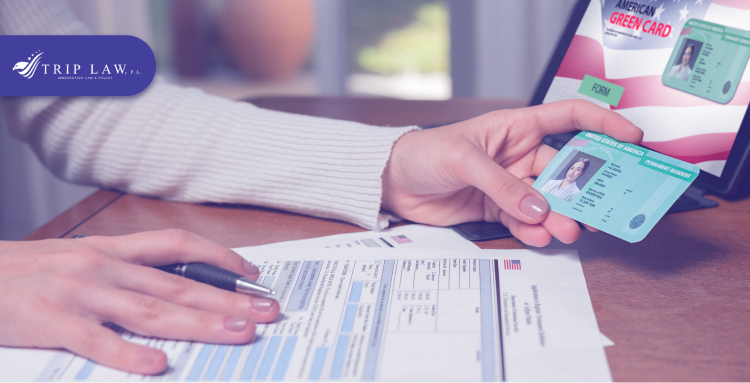
Filing for a marriage-based green card is a significant step in your journey to build a life together in the United States. It is a legal process that allows you and your spouse to live and work in the U.S. permanently.
Just as a house needs a strong foundation, so does your American dream. The green card application process is designed to assess your eligibility and ensure that your marriage is legitimate. It may seem daunting at first, with its paperwork, forms, and interviews, but I'm here to guide you through every step of the way.
Together, we'll make sure that your application is complete and accurate, increasing your chances of a smooth and successful process. So, if you're ready to embark on this exciting chapter of your life, let's get started.
Who Can Apply
A marriage based green card is a type of family-based immigration. It allows spouses of U.S. citizens and lawful permanent residents (LPRs) to obtain permanent residency in the U.S. However, not everyone can apply for a marriage-based green card. There are certain requirements and conditions that must be met.
Are You Eligible? - A Quick Check
Before you start dreaming of your future together in the U.S., you need to make sure that you qualify for a marriage-based green card. Here are the main requirements that you need to meet, according to the USCIS:
You must be married to a U.S. citizen or a LPR, and have a valid marriage certificate to prove it.
Your marriage must be real and not fake, meaning that you married for love and not for immigration benefits.
You must be physically present in the U.S. when you file your application, and not somewhere else.
You must be admissible to the U.S., meaning that you can’t have any issues that could prevent you from getting a green card, such as criminal history, health problems, or immigration violations.
If you meet these requirements, congratulations! You are one step closer to getting your marriage-based green card.
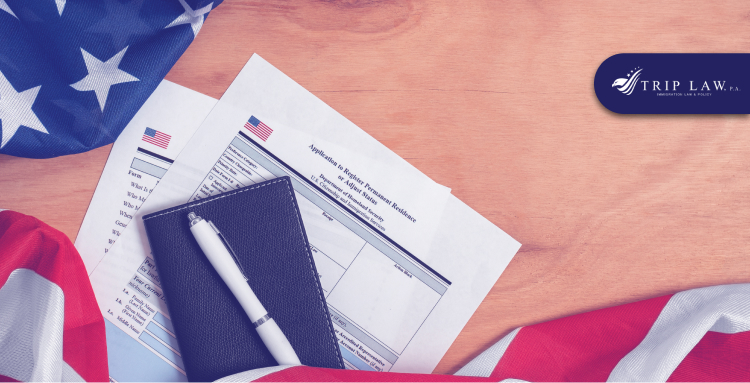
U.S. Citizen or Green Card Holder: Who Can Sponsor You?
The next step to apply for a marriage-based green card is to figure out your sponsorship category. It depends on whether your spouse is a U.S. citizen or a LPR. This will affect how long it will take for you to get your green card, and how many visas are available for you.
When it comes to who can sponsor, then both categories are eligible for sponsoring. Both U.S citizens and LPR can sponsor green card visas.
But there is a slight difference, if your spouse is a U.S. citizen, you are considered as the immediate relative category. You can file your application right away
On the contrary, if your spouse is a LPR, you may have to wait a little longer. Because it is considered a family preference category.
But don’t worry, both categories will eventually lead you to the same goal: your marriage-based green card.
Starting the Journey: Filing the Petition for Marriage-Based Green
The first step in the process of obtaining a green card through marriage is to file a petition with the U.S. government. The petition is a form, which is I-130, Petition for Alien Relatives.
Filling Out the I-130 Form: Your First Step
The following are the main steps and tips for filling out Form I-130:
Obtain the most recent version of Form I-130 from the official USCIS website.
Complete the form with accurate and truthful information. Double-check names, dates, and other critical information.
Attach copies of all required supporting documents, such as identification, proof of relationship, and any relevant divorce or death certificates.
Pay the filing fee for Form I-130, which was $535 as of November 2023. However, fees may change anytime, so check the USCIS website for the most up-to-date information.
Mail the completed form, along with supporting documents and the filing fee, to the appropriate USCIS address. Keep copies of everything for your records.
Wait for the receipt notice from USCIS, which confirms that they have received your Form I-130.
Check the current estimated processing times on the USCIS website. Processing times may vary depending on the workload and location of the USCIS office handling your case.
Respond promptly to any requests for additional information or documents from USCIS, to avoid delays in processing.
Wait for the approval notice from USCIS, which indicates that your Form I-130 has been approved. If approved, the case will be forwarded to the National Visa Center (NVC) for further processing.
However, keep in mind that accuracy and completeness are crucial when filling out Form I-130. If you are unsure about any information, seek legal advice or consult the USCIS website for guidance.
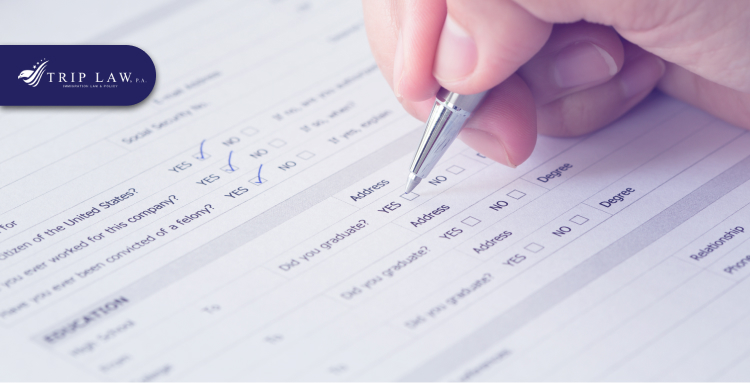
Connecting the Dots: What's the Purpose of Form I-130?
The purpose of Form I-130, is to establish the validity and eligibility of the marital relationship between the U.S. citizen or LPR sponsor and the foreign spouse.
The form also determines the sponsorship category and visa availability for the foreign spouse. This may affect the processing time and priority of the application.
Furthermore, it serves as the basis for the subsequent steps and documents required for the green card application.
The Waiting Game: Visa Availability and Times
After filing Form I-130, the applicants need to wait for the approval and visa availability. Time can vary depending on several factors, such as the sponsorship category, the country of origin, and the workload of the USCIS and the NVC.
U.S. Citizens vs. Green Card Holders: Who's Faster?
The first factor that affects the waiting time is the sponsorship category. This factor determines the priority and preference of the application, as well as the visa availability.
Sponsorship from a U.S. citizen has the highest priority and preference. There is no limit on the number of visas available for this category.
The visa availability is always current. Once the Form I-130 is approved, the foreign spouse can file the application for the green card without any extra wait time.
Sponsorship from a LPR has a lower priority and preference. There is a limit on the number of visas available for this category. The visa availability may be retrogressed.
After the Form I-130 is approved, the foreign spouse may have to wait for a visa number to become available. It may take several years depending on the country of origin.
Thus, while both categories lead to the same outcome, U.S. citizens usually have a faster and easier process than LPRs.
Visa Availability: How It Affects Your Wait
The U.S. government sets annual limits on family-based green cards, divided according to categories and countries. The Department of State's monthly Visa Bulletin outlines the current visa availability for each category and country.
This availability can be either current (no backlog) or retrogressed (backlog and waiting period). Visa availability depends on both the sponsorship category and the foreign spouse's country of origin.

Choose Your Path: Adjustment of Status or Consular Processing
The applicants need to choose between the Adjustment of Status or Consular Processing options. It depends on whether the foreign spouse is inside or outside the U.S.
In the U.S.? Choose Adjustment of Status
Foreign spouses already residing in the U.S. can apply for a green card through the Adjustment of Status process. This option eliminates the need to leave the country, offering convenience and reduced risk.
However, it may involve longer processing times, higher fees, and stricter eligibility criteria.
Outside the U.S.? Opt for Consular Processing
The Consular Processing option is available for foreign spouses who are outside the U.S. It allows them to apply for a green card at the U.S. consulate in their home country, which may be faster and easier.
To apply for the Consular Processing option, the foreign spouse needs to wait for a notice from the National Visa Center (NVC) after the Form I-130 is approved. The NVC will guide them through the required forms and fees. Here are some main requirements you may need-
Requirements:
Form I-864, Affidavit of Support
Consular Processing & Biometrics Fee
Additional Costs - you might have to bear additional costs if your spouse’s certificate(s) or document(s) are not in English, meaning requires translation.
Then, you'll attend an interview at the U.S. consulate in your home country. It's like the final step before you hop on the plane to your new life in the States.
The Paper Chase: Gathering Your Documents
After that applicants need to gather some key documents, regardless of whether they choose the Adjustment of Status or Consular Processing option. These documents will prove the identity, status, and relationship of the sponsor and the foreign spouse.
Documents You Must Have: A Checklist
Gather the following documents for your green card application:
Birth Certificates: Provide original or certified copies of your and your spouse's birth certificates.
Marriage Certificate: Provide an original or certified copy of your marriage certificate.
Divorce or Death Certificates (if applicable): If either of you has been previously married, provide original or certified copies of divorce or death certificates.
Government-issued IDs: Provide originals or certified copies of your and your spouse's government-issued IDs, such as passports or driver's licenses.
Passport-Style Photos: Submit two passport-style photos each, meeting USCIS size, color, and quality requirements.
Proof of Name Changes (if applicable): Provide legal documents supporting any name changes, such as court orders, marriage certificates, or naturalization certificates.
Make copies of all documents for your records and submit originals or certified copies to USCIS or NVC, depending on your application option. Ensure you have all required documents before filing.
What's in a Document? The Power of Proof
Each document that the applicants provide serves a specific purpose and importance for the green card application.
The USCIS and the NVC use these documents to verify the information and evidence that the applicants provide in their forms and interviews.
The documents also help the USCIS and the NVC to determine the eligibility and admissibility of the applicants for the green card.
Face the Music: The Interview Process
The final step for the green card application is the interview, which may be conducted at a local USCIS office or a U.S. consulate.

The Interview: What to Expect
Main purpose of the interview is to verify the identity, status, and relationship of the applicants. The officials want to make sure that the information and evidence that you provide in your forms and documents are valid and consistent.
Also the marriage is bona fide and not entered into for the purpose of obtaining immigration benefits
You will receive a notice of the date, time, and place of the interview from the USCIS or the NVC.
You have to prepare for the interview by reviewing your forms and documents, practicing their answers, and gathering any additional evidence of your bona fide marriage.
You need to attend the interview at the designated USCIS office or U.S. consulate. You bring your original documents, appointment letter, and any other required items.
You will be sworn in and asked to present your identification and documents. The officer reviews the documents and asks you some questions about your identity, status, and relationship.
You will answer the questions honestly and confidently. Also you will provide any additional evidence or clarification if requested by the officer.
You have to wait for the decision from the officer, which may be given at the end of the interview or later by mail. If approved, you will receive a stamp or a visa packet, which indicates that you have become a LPR.

Ace Your Interview: Tips for Success
In-depth Knowledge of Your Story and Documents: Review your forms and documents thoroughly, ensuring you can confidently explain any discrepancies or gaps in your narrative.
Professional and Appropriate Attire: Dress respectfully and professionally, adhering to local cultural norms and avoiding casual, flashy, or provocative clothing.
Punctuality and Courtesy: Arrive at least 15 minutes early, bringing your appointment letter and any required items. Follow instructions politely and respectfully.
Honesty and Consistency: Respond truthfully and accurately, avoiding lies or exaggerations. If uncertain or unable to recall, admit it without guessing or fabricating. Correct mistakes promptly and politely.
Composure and Confidence: Maintain a calm and confident demeanor, even under pressure. Speak clearly, maintain eye contact, and exhibit sincerity.
With these tips inside your pocket, you’ll walk through that interview one step closer to the green card.
Money Matters: The Affidavit of Support
This is a crucial document in the green card process. The sponsoring spouse needs to show they have enough income or assets to support both themselves and their spouse.
Show Me the Money: Form I-864 Explained
The Affidavit of Support is filed using Form I-864, which is completed and signed by the sponsor. The purpose of this form is to show that the sponsor can financially support the foreign spouse in the U.S.
Also, they are willing to reimburse the government for any public benefits that the foreign spouse may receive.
The process of filling out Form I-864 follows these steps:
Obtain the most recent version of Form I-864 from the official USCIS website.
Complete the form with accurate and truthful information. Double-check names, dates, and other critical information.
Attach copies of all required supporting documents, such as tax returns, pay stubs, bank statements, and any other proof of income or assets.
Sign the form and make a copy for your records.
Submit the form, along with supporting documents, to the USCIS or the NVC, depending on whether you choose the Adjustment of Status or Consular Processing option.

Financial Responsibilities and How to Prove Them
Establishing your financial ability to support your spouse is a crucial aspect of green card sponsorship. The USCIS seeks evidence of both present and future financial stability to ensure your spouse's well-being in the United States.
Documenting Your Financial Means: Provide solid proof of your steady income by submitting pay stubs, tax returns, and employment letters. These documents demonstrate your consistent ability to meet your financial obligations.
Leveraging Assets for Financial Strength: If you possess assets like property or savings, they can also contribute to your financial profile. Consider providing documentation of these assets to bolster your financial standing.
Seeking Joint Sponsorship When Income Falls Short: In cases where your income falls below the required threshold, you may need a joint sponsor to supplement your financial support. This individual willingly vouches for your spouse's financial well-being.
Ensuring a Solid Financial Foundation for Your Green Card Journey: The USCIS carefully evaluates your financial situation to ensure a stable foundation for your green card journey.
Providing comprehensive documentation of your income and assets demonstrates your commitment to supporting your spouse and contributes to a successful green card application.
Conditional Love: When You Get a Conditional Green Card:
The conditional green card is a type of temporary visa that applies to certain spouses of U.S. citizens or LPRs.
Conditions Apply: What's a Conditional Green Card?
The conditional green card is issued to spouses of U.S. citizens or LPRs who have been married for less than two years when they receive their green card.
The purpose of the conditional green card is to prevent fraud and abuse of the immigration system by ensuring that the marriage is genuine and ongoing.
Unconditional Love: Removing the Conditions
To remove the conditions and obtain a permanent green card, the spouses need to file a joint petition using Form I-751, Petition to Remove Conditions on Residence, along with supporting documents and fees.

Time's Ticking: Processing Times and Patience
The processing times for green card applications can vary depending on sponsorship category, the option, the location, and the workload of the USCIS and the NVC. It is a process that requires patience and perseverance, but it leads to a rewarding outcome.
Why Your Green Card Clock Doesn't Tick the Same
So, why can green card processing times be a bit like a rollercoaster ride? According to the U.S. Citizenship and Immigration Services (USCIS), it's all about supply and demand.
Some applications sail through quickly, while others hit a few bumps in the road, just like rush hour traffic - unpredictable. Factors like your specific visa category, where you're applying from, and even how busy the USCIS office is at the time can all play a role.
Track Your Progress: How to Check Processing Times
To check the processing times for green card applications, the applicants can visit the official USCIS website and look for the “Check Case Processing Times” page.
The page provides an estimated timeframe for each form type and field office. The applicants can select their form type and field office, and see the current processing times.
However, the applicants should remember that these are only estimates and actual times may vary.
Why You Need an Immigration Attorney
The immigration process can be challenging and confusing. An attorney knows the rules and regulations, can help you avoid common errors, and ensures that your paperwork is complete and up-to-date.
When to Call in the Pros: Situations Requiring an Attorney
The following are some situations that may require an attorney:
If the case is particularly complex or has any legal issues, such as waivers, inadmissibility, or removal proceedings. An attorney can help the applicants navigate these issues and find the best solutions.
If the applicants have any criminal records or violations, such as arrests, convictions, or deportations. An attorney can help the applicants disclose and explain these records or violations, and determine their impact on the application.
If the applicants have any red flags in their immigration history, such as overstays, fraud, or previous denials. An attorney can help the applicants address and overcome these red flags, and improve their chances of approval.
If the applicants have any special circumstances or needs, such as disabilities, emergencies, or humanitarian reasons. An attorney can help the applicants request and obtain any special accommodations or relief.
The Expert Touch: How Triplaw Can Make It Easier
When it comes to immigration, having an expert like Trip Law on your side can be a great advantage. Our experienced team has extensive knowledge and skills in the immigration field, making even the most difficult cases seem manageable.
With a focus on providing personalized guidance, Trip Law can offer you expert and professional legal services for your green card application.
Conclusion
If you have any questions or thoughts? Drop them in the comments – we're all ears. And if you need more legal assistance down the road, don't hesitate to get in touch with Trip Law. We're here to make your journey smoother than a fresh highway.
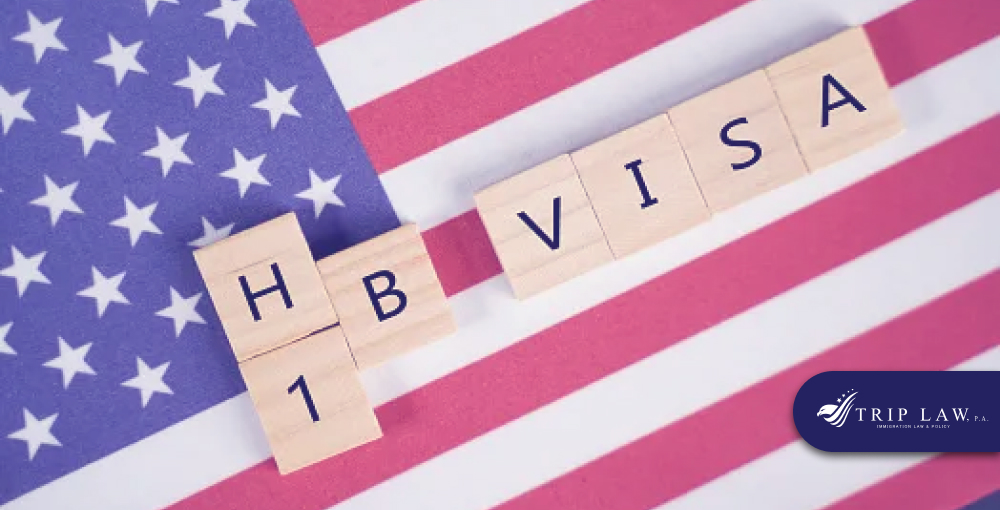
The H1B visa program is a crucial pathway for skilled foreign workers to contribute their expertise to U.S. businesses. However, navigating this process can be intricate. This blog aims to provide employers with a comprehensive roadmap to ensure a smooth and compliant sponsorship process. From understanding the visa requirements to maintaining compliance and handling extensions, we've got you covered.
So, let's dive in and equip employers with the knowledge and tools they need for successful H1B sponsorships.
What is an H1B Visa?
An H1B visa is like the VIP pass for skilled foreign workers aiming to work in the U.S. It's a non-immigrant visa, meaning it's not meant for folks planning to settle down permanently in the U.S.
Instead, it's a work visa for specialty occupations that require a higher education degree, like engineers, scientists, and IT professionals.
The U.S. Citizenship and Immigration Services (USCIS) is the big shot in charge of these visas. To get one, you need a job offer from a U.S. employer, and the position you're offered should typically ask for a specific set of skills and education level.
How to apply for an H1B visa?
Now, let’s take a look at how you can apply for the H1B visa. Here are the following:
The first and most crucial step is landing a job offer from a U.S. employer. This employer will sponsor the H1B visa. The job should fall under a "specialty occupation" which typically requires a higher education degree.
Once the job offer has been given, the employer needs to file a Labor Condition Application (LCA) with the U.S. Department of Labor. This document certifies that they'll pay the employee a fair wage and that hiring the employee won't negatively affect the working conditions of U.S. workers.
Next up, the employer has to submit Form I-129, Petition for a Nonimmigrant Worker, to U.S. Citizenship and Immigration Services (USCIS). This form basically asks for approval to hire the employee on an H1B visa.
Once USCIS gets the petition, they'll review it. If all's well, they'll approve it. Keep in mind that there's an annual cap on the number of H1B visas issued, so timing can be key. If the cap's hit, they might have to wait till the next fiscal year.
If the employee is outside the U.S., they'll go through consular processing at a U.S. embassy or consulate. If the employee is already in the U.S. in another nonimmigrant status, their status might change to H1B.
If the employee goes through consular processing, they'll get an H1B visa stamp on their passport. This allows the employee to enter the U.S. in H1B status.
With the visa sorted, the employee can now enter the U.S. and start working for the sponsoring employer. The employee should carefully hold onto all important documents, including their passport, visa, and I-797 Approval Notice.
Remember, it's important to comply with all H1B visa regulations. Notify USCIS if there are any changes in the employment or address, and always make sure your employees are working in the specialty occupation they were hired for.
What are the Requirements for sponsoring an H1B visa?
Now, breaking down the requirements for sponsoring an H1B visa step by step:
Your company needs to file a Labor Condition Application (LCA) with the U.S. Department of Labor. This is like the green light that shows you're committed to playing fair in terms of wages and working conditions.
Make sure to list the correct job title, duties, and salary.
You'll have to submit Form I-129, the petition for a nonimmigrant worker, to the U.S. Citizenship and Immigration Services (USCIS). This is where you're saying, "Hey, we've got a spot for this talented individual, and here's why."
Be ready to provide documents that prove both your company and your potential employee meet all the necessary requirements.
Once your petition gets approved, your employee can apply for the H1B visa at a U.S. consulate or embassy. They'll attend an interview, and if all goes well, they'll be ready to join your team.
Remember, H1B visas are all about filling roles where you can't find a qualified U.S. candidate. So, as long as you're checking these boxes, you're on the right path to sponsoring an H1B employee.
How the H1B Lottery System Works
Once you've filed the petition, you're in the game, but here's where things get a bit unpredictable.
The demand for H1B visas usually outweighs the available slots, so a lottery system comes into play. This means your employee's chance of getting selected depends a bit on luck.
The USCIS conducts two lotteries - one for regular cap applicants and another for those with advanced degrees. If your employee's name gets picked, great news! They move on to the next steps. If not, don't lose hope.
There are other visa options and strategies to explore. Keep in mind that staying informed about the latest updates and deadlines is key in this process.
So, keep your eyes peeled for any announcements from the USCIS and stay flexible in your approach. It's a bit like a rollercoaster, but with the right guidance, you can navigate it smoothly.
Tips for Getting an H1B Visa Successfully
The H1B visa petition can get pretty overwhelming, we get it. But no worries, we've got your back. Here are some expert strategies that can make your H1B journey sleek:
When you're filing for an H1B Visa, you gotta make sure you've got all the right cash for those USCIS filing fees. And keep an eye out for the current fees to avoid any complications.
Your forms and documents need to have the proper USCIS-approved standard signatures. Don't forget this step or it might lead to a big fat rejection.
Make sure every page and form is filled out and included in your application.
You'll need to show some proof that you're either exempt from the cap or you've got the golden ticket in the lottery selection. It's like a backstage pass, but for visas.
Don't forget to throw in a certified Labor Condition Application from the US Department of Labor. It's got all the deets about your job, how long it'll last, and where it's at.
Shoot a letter over to USCIS telling them all about the job - what makes it special, what the gig involves, and why the person you're sponsoring is a perfect fit. It's like a resume but for a job application.
You'll need to back up your employee's skills for the job. Degrees, certificates, licenses, or any relevant experience should do the trick.
If your employee's already in the US and wants to change or extend their status, you'll need proof they've been keeping up with their visa status.
Lastly, before you hit that submit button, go through your application with a fine-tooth comb. You don't want to miss anything.
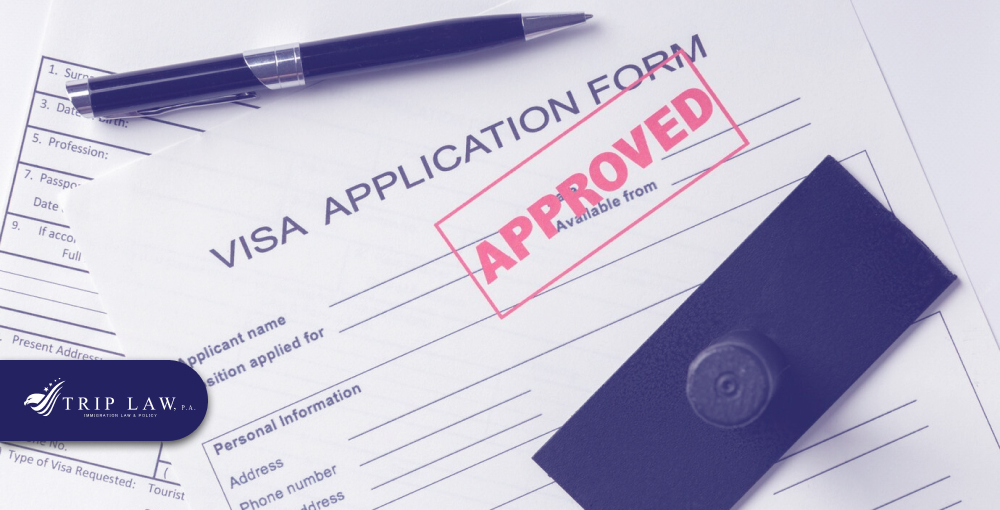
What Employers Must Do After H1B Visa Is Approved
Once your H1B visa is approved, you have to fulfill some important employer obligations. First, you need to ensure that you are paying your employee the promised wage as per the Labor Condition Application (LCA) filed during the petition process. This wage should meet or exceed the prevailing wage for the occupation in the area where you will be working.
Additionally, you'll need to keep accurate records of the H1B visa holder’s employment. This includes pay stubs, work schedules, and any changes in employment terms.
If there are any significant changes in the employment situation, like a change in job location or duties, you'll need to file an amended H1B petition. This ensures that everything stays above board and in compliance with immigration regulations.
Lastly, you will get potential visits from the Department of Labor (DOL) or USCIS for audits or site visits, to ensure that everything is on the up-and-up.
How to Extend Your H1B Visa and Follow the Rules
To keep the ball rolling after getting that H1B visa, maintaining compliance and handling extensions is key. First, make sure your H1B employee is sticking to their designated role and location. Any significant changes, like a new job or work site, need to be reported and approved.
Stay on top of the visa expiration date. If you want your employee to continue working, you'll need to file for an extension before that expiration date hits. USCIS recommends doing this around six months before the current visa expires.
Remember, the H1B visa isn't a one-size-fits-all deal. It's granted for a specific employer and role. If your employee wants to switch jobs, the new employer will have to file a new H1B petition.
Keep meticulous records. This includes pay stubs, work schedules, and any changes in employment terms. It's like keeping score in a game - you want to make sure everything adds up.
Lastly, if your employee's situation changes and they're looking to transition to permanent residency (a green card), you'll need to help them navigate that process.
Staying compliant and handling extensions might seem like a lot, but it's all part of keeping the H1B process smooth and successful. And remember, Trip Law is always there to support and guide you down the path.
Conclusion
Successfully sponsoring H1B employees is not just about paperwork and deadlines - it's about understanding the process and meeting the requirements. By following the steps, you can easily navigate the complexities of the H1B visa system with confidence. Remember, timely and accurate filing, maintaining clear records, and staying informed about any policy changes are the keys to a successful sponsorship.

You’re having the time of your life in the U.S., exploring new places, meeting new people, and learning new things. But then you realize that your visa has expired. Oops. What now?
Many people find themselves in this situation, and there are ways to fix it. The U.S. Citizenship and Immigration Services (USCIS) offers some options for people who overstay their visas, such as applying for a visa extension or adjusting their status. But these options have certain requirements and deadlines, so you need to act fast.
What are the Implications of an Expired Visa in the US?
If your visa has already expired, you're probably wondering what you would do next. Well, it's important to understand that an expired visa in the US is not something to be taken lightly. Ignoring or delaying action could have serious consequences.
When your visa expires, you're essentially considered an "overstay," which the US immigration system takes very seriously. This means you're no longer authorized to stay in the country, and you're considered an undocumented or illegal immigrant.
This can lead to some serious consequences, including:
Detention and deportation: The government closely monitors visa statuses, and overstaying can result in being detained and even deported.
Restrictions on employment and official activities: As an overstayer, you're not allowed to work legally or engage in certain official activities. This can make it difficult to find a job or rent a place to live.
Financial penalties: You may be required to pay fines for the duration of your overstay.
To avoid these potentially life-altering consequences, it's crucial to stay on top of your visa expiration dates. If you need an extension or renewal, don't wait until the last minute. Start the process well in advance to ensure your legal status remains valid.

Can I Apply for a Visa Extension After It Has Expired?
So, your visa has expired, and you're wondering if it's too late to do anything about it. Well, the answer is not entirely straightforward.
Technically, once your visa has expired, you're considered an overstayer, which can lead to some serious consequences. However, there are a few exceptions to this rule.
If you've overstayed due to circumstances beyond your control, such as a medical emergency or a natural disaster, you may be eligible for "Satisfactory Departure." This allows you a bit of extra time to get your affairs in order and depart the country legally.
However, if your overstay is due to other reasons, such as simply losing track of time or a change in plans, things get a bit more complicated. In these cases, you're technically required to leave the country as soon as your visa expires.
But, not all hope is lost. If you have a valid reason for needing more time, you can try filing a "Request for Extension of Stay" with the USCIS (U.S. Citizenship and Immigration Services).
Also read -> How long can you stay after 485 denied
However, this is not a guaranteed solution. The USCIS will carefully review your situation and make a decision based on the merits of your case.
What are the Steps to Take When My Visa Expires?
If you find yourself facing an expired visa in the US, it's crucial to act promptly and strategically to avoid any legal complications. Here's a step-by-step guide to navigate this situation:
Step 1: Determine Your Exact Visa Expiration Date
Accurately identifying the exact date your visa expired is essential for planning your next steps. This information will be crucial for any applications or actions you need to take.
Step 2: Assess Your Options
Depending on your specific situation, you may have different options available to you:
Visa Extension: If your visa type allows for extensions, explore this option before the expiration date. Initiate the extension process well in advance to ensure a smooth transition.
Adjustment of Status: Consider applying for an "Adjustment of Status" if you're eligible. This pathway allows you to change your immigration status within the US, such as transitioning from a student visa to a work visa.
Departure and Reapplication: If no other options are viable, consider returning to your home country and pursuing legal avenues to re-enter the US.
Step 3: Avoid Overstaying at All Costs
Overstaying your visa can have severe consequences, including being labeled as having an "unlawful presence" in the US. This can lead to hefty fines, deportation, and even a ban on re-entering the country.
Step 4: Gather Essential Documentation
Collect all relevant documents, including your passport, visa, I-94 arrival/departure record, and any other supporting paperwork. Keep organized copies for your reference.
Step 5: Submit Extension or Status Change Application (I-539)
If eligible for an extension or status change, file Form I-539, "Application to Extend/Change Nonimmigrant Status," with USCIS (U.S. Citizenship and Immigration Services) promptly.
Step 6: Maintain Records and Stay Informed
Maintain copies of all submitted documents and receipts. Stay updated on the progress of your application through USCIS's online portal or by contacting their customer service.
Step 7: Attend Interviews, Follow USCIS Instructions & Meet Deadlines
If USCIS schedules an interview, attend the appointment at the designated time and location. Be prepared to answer questions and provide additional documentation if requested.
Most importantly, follow USCIS's instructions carefully and meet all deadlines to avoid any delays or complications in your case.
Are there Any Options for Revising an Expired Visa?
Don't worry if your visa has expired while you're still in the United States. There are still choices available, but it is critical to act quickly to prevent legal difficulties.
Option 1: Visa Extension for Legitimate Stays
Let's say you're in the US for a valid reason, such as medical treatment, vacation, or business purposes, and your visa hasn't expired yet, then you may be eligible for an extension. Contact USCIS (U.S. Citizenship and Immigration Services) to explore this option.
Option 2: Departure Within 180 Days of Expired Visa
If you overstayed your visa but have been in the US for less than 180 days after the expiration date, you may be able to avoid penalties by departing the country as soon as possible.
Option 3: Visa Reapplication from Your Home Country
Suppose you've overstayed your visa and left the US, you'll need to reapply for a new visa at a U.S. consulate or embassy in your home country. This process will involve a fresh application, fees, and an interview.
Option 4: Visa Waiver Program (VWP) for Short Stays
If you're a citizen of a country participating in the Visa Waiver Program (VWP), you may be able to enter the US for short visits (typically 90 days or less) without a visa. Remember to depart before your authorized stay ends.
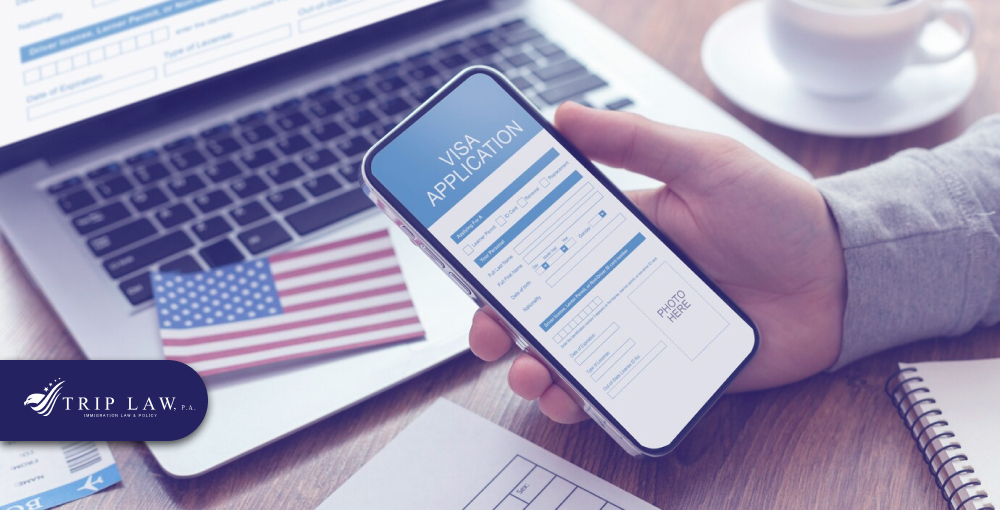
What are the Options for Adjustment of Status in the US?
For those seeking to change their immigration status in the US following visa expiration, several potential pathways that are worth exploring.
1. Marriage-Based Green Card:
One way to get a green card is through marriage to a US citizen. This option requires filling out Form I-130 (Petition for Alien Relative) and Form I-485 (Application to Register Permanent Residence or Adjust Status).
2. Family Sponsorship:
Then, if you have a close family member who is a US citizen or green card holder, they can sponsor you for a green card. This pathway typically requires establishing a close family relationship and demonstrating financial stability.
3. Employment-Based Green Card:
A third option is to get a job offer from a US employer who can sponsor you for an employment-based green card. This option entails the employer filing Form I-140 (Immigrant Petition for Alien Worker) for you.
4. Green Card After Asylum or Refugee Status:
If you've been granted asylum or refugee status in the US, you may be eligible for a green card after one year of holding that status. This pathway provides relief from persecution or violence in your home country.
5. Deferred Action for Childhood Arrivals (DACA):
This option is for those who came to the US as minors. For example, if you entered the US before turning 16 and met certain eligibility criteria, you may be eligible for DACA. DACA provides temporary protection from deportation and authorization to work legally.
6. Temporary Protected Status (TPS):
Let’s say your home country has been designated for Temporary Protected Status (TPS). This means you can be protected from deportation and authorized to work if you’re living in the US at the time of the designation.
7. U-Visa for Victims of Crimes:
Victims of qualifying crimes, such as human trafficking, sexual exploitation or abuse, kidnapping, etc., who have suffered mental or physical abuse in the US and have been helpful to law enforcement or government officials, can apply for the U-Visa. This visa provides a path to lawful permanent residency.
8. Green Card for Victims of Violence (VAWA):
If you're facing domestic violence from a US citizen or a permanent resident family member, you may be eligible for a green card under the Violence Against Women Act (VAWA). This law provides protection and legal options for immigrant victims of violence.

How to Choose the Right Immigration Attorney?
Finding the right immigration lawyer for your expired visa situation is crucial. That’s why we recommend you contact Trip Law. We’re licensed and members of the American Immigration Lawyers Association.
Trip Law has handled cases like yours before, and you can check the reviews and results of our previous clients. We’ll also make sure you feel comfortable and explain all the fees upfront.
But you need to be honest and clear with us, and keep us updated about your case. Remember, the right advice can make a big difference, so don’t hesitate to reach out to us before making any decisions about your expired visa.
Conclusion
An expired visa in the US is a serious issue that can have negative consequences for your immigration status and plans. However, follow the guidelines, and steps that are given above. It is always advisable to consult an immigration attorney before making any decisions or taking any actions regarding your visa status. Remember, following immigration rules is essential for maintaining your right to stay and pursue your goals in the US. Stay informed, stay legal, and stay on course for a bright future in the United States.

You have an H1B visa that allows you to work for a specific employer in the US. But what if you want to change your job or explore other career options? That’s where an Employment Authorization Document (EAD) comes in handy. An EAD is a work permit that gives you the flexibility to work for any employer in the US. You can get an EAD through marriage if your spouse is a US citizen or a green card holder.
But should you apply for an EAD after marriage if you already have an H1B visa? Keep reading to find that out.
What is an H1B Visa?
An H1B visa is a special type of visa in the U.S. that lets foreign individuals with specific skills work here for a bit. These skills are usually in tech, engineering, or other specialized areas. To get one, you need a job offer from a U.S. company and meet certain requirements. Your employer has to apply for you, showing that you're perfect for the job.
Once you're approved, you can work in the U.S. for up to six years. You can also try for a green card while you're on an H1B. Just remember, there are a limited number of these visas each year, so it can be a bit competitive.
What is an EAD?
An EAD, or Employment Authorization Document, is a work permit that lets you legally work in the U.S. regardless of your visa status. The U.S. Citizenship and Immigration Services (USCIS) issues this document to eligible applicants who want to pursue their career goals in the U.S.
This document is a huge advantage for many people, especially those who are on a dependent visa or waiting for their green card. With an EAD, you can access a wide range of job opportunities and choose your employer based on your preferences and skills.
Moreover, it's not tied to a specific company, so you can switch jobs without any complications. Keep in mind, though, that an EAD has an expiration date, so it's crucial to renew it if you want to keep working legally. An EAD is like your passport to the U.S. job market.
What are the differences between H1B visa and EAD?
The H1B visa and EAD are like the MVPs of work permits in the U.S. They're both crucial, but they've got their own gigs and situations. Here’s some points on what sets them apart:
H1B Visa vs. EAD purpose:
The H1B Visa is like a special work pass for folks with expert skills in a specific field. It lets them work in the U.S. for up to six years.
EAD is like a permission slip to work in the U.S. It's not tied to a specific job and can be for different time periods.
Eligibility:
You need a job offer from a U.S. company for a specialized role to get the H1B visa. They're the ones who apply for this visa on your behalf.
The EAD is not linked to a particular job. Certain groups like students, refugees, and spouses of visa holders can get one.
Duration:
An H1B Visa starts with three years but can go up to six. In special cases, it might even be longer.
The EAD duration varies. It could be a few months or a few years, depending on your situation.
Changing Jobs:
You're kind of tied to the company that sponsored you. If you want to switch, the new employer needs to file for a new H1B.
Generally, you've got more chances of switching jobs without reapplying for the EAD. But there are exceptions.
Bringing Family Along:
With an H1B visa, if you have a family (spouse and kids under 21), they can come too, but they can't work.
Some EAD holders’ spouses can work while they're in the U.S.
Renewing or Extending:
You can extend the H1B visa beyond the initial three years, up to a total of six or more, depending on your situation.
In most cases, you can renew the EAD as long as you still meet the criteria.

What are the benefits of applying for an EAD After Marriage?
Applying for an EAD after tying the knot comes with a bunch of perks. Firstly, it grants you the freedom to work for any employer in the U.S., giving you a wider pool of job options—no need to stick with just one company.
Secondly, if you're on a dependent visa, an EAD liberates you from being tied solely to your spouse's visa status. You become an independent player in the job market.
Plus, it's a safety net in case of any issues with your spouse's visa, ensuring you can still work legally. It's like having a backup plan for your career. And let's not forget, it's a crucial step if you're planning on applying for a green card down the line.
So, all in all, getting an EAD after marriage can be a game-changer for your career and immigration status.
Are there any advantages if I stick with the H1B Visa?
Sticking with the H1B visa has its own set of advantages. It's a specialized visa meant for individuals with skills in high-demand fields, which can sometimes lead to higher-paying job opportunities.
And if you're looking for a more long-term situation in the U.S., the H1B can be extended for up to six years, giving you some stability in your career. Plus, some employers may even sponsor you for a green card, paving the way for permanent residency. That's like securing your spot in the U.S. for the long haul.
However, there's a limit set on the number of H1B visas issued each year, so it can be a bit competitive. But if you've already got one, it's a solid option to consider.

How can I transition from H1B to EAD?
Now, if you’ve decided to switch from an H1B visa to an Employment Authorization Document (EAD). We've got your back! Let’s go through the steps you need to take to snag that EAD:
Before diving in, make sure you qualify for an EAD. This usually applies to ones with pending adjustment of status applications, asylum seekers, and spouses of certain visa holders. Double-check if you fit the bill.
Now, time to tackle Form I-765, the Application for EAD. You can get it on the official USCIS site. Take your time, follow the instructions, and fill it out accurately.
Get your paperwork in order. This includes a copy of your current H1B visa, passport-sized photos that meet USCIS standards, your I-94 arrival/departure record, a copy of your current job offer letter, and any other docs mentioned in the instructions.
Check the USCIS website for the latest filing fee for Form I-765. Then, send the payment along with your application.
Pack up your completed Form I-765, all those docs you gathered, and the filing fee. Send it to the right USCIS address. Don't forget to make a copy of everything for your records.
After you hit send, keep an eye on your application status using the USCIS online platform. It's important to stay in the loop in case there are any issues.
If USCIS wants your fingerprints or photo, they'll send you a notice with all the details. Just show up to the appointment as scheduled.
Once USCIS processes everything, they'll let you know if you're approved or not. If it's a thumbs up, they'll mail your shiny new EAD to you. Keep it safe!
Tell your current employer about the change in your immigration status and give them a copy of your EAD for their records.
Pop over to your local Social Security Administration office and make sure they've got your new EAD info on file.
Transitioning from an H1B visa to an EAD is totally doable with a bit of prep, correct paperwork, and following the USCIS rules. And remember, if you hit any bumps, it's always a good idea to chat with Trip Law for any sort of legal advice.
Conclusion
The H1B visa is great for specialized jobs, but an EAD lets you work for any employer in the U.S., giving you way more options. This could seriously boost your career. Also, having an EAD gives you an extra layer of security in case anything unexpected happens with your H1B status. The choice depends on your career goals and situation.
Got more questions or thoughts? Drop them in the comments – we're all ears. And if you need more legal assistance down the road, don't hesitate to hit up. We're here to make your journey smoother than a fresh highway.
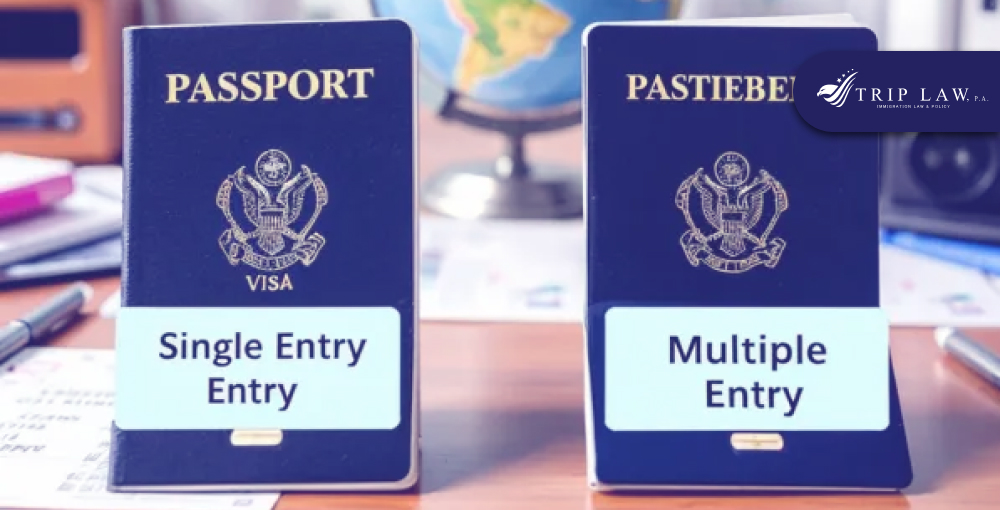
Planning an international trip? Exciting, isn't it? But before you pack your bags and hop on a plane, there's one important decision to make: should I apply for a single visa or multiple entry visa? Well, it all depends on your destination, purpose, and duration of your trip. Single entry visas permit a single entry into a specific country, where multiple entry visas offer the freedom to enter and exit a country multiple times within a specified period.
In this article, you will see the differences between single and multiple entry visas, the advantages and disadvantages of each, and the factors you need to consider before applying for either one.
So, let’s look into this matter further and help you get an answer to your question “Should I apply for a single or multiple entry visa?” and which one suits your travel plan.
Single Entry Visas: One Shot, One Entry
You already know now that a Single Entry Visa is like a one-time ticket to the US. As soon as you leave the US, your visa expires. No matter how long or short your stay was, you can’t come back with the same visa. So, what does this mean for your travel plans? Let’s take a deeper look for a better understanding.
What Are They? Understanding Single Entry Visas.
These visas are designed for travelers who have a specific, one-time purpose in mind for visiting the US. It could be a vacation, a business trip, or any other planned activity. Once you use this visa to enter the US, carry out your plans, and then exit, that's it – it's no longer valid for re-entry.
Some of the single entry visas in the US are:
C Visa
D Visa
T Visa
So, if you're all set for a one-time journey, have a clear and specific purpose, a Single Entry Visa is your go-to. Just remember, these visas have a limited validity period. So You need to plan your trip carefully and finish your business before your visa runs out.
Limits and Benefits: When It Works for You
A single entry visa is ideal for you if you have a one-time goal or reason for your trip. Whether it’s a conference, a vacation, or a business deal, this visa will let you achieve it.
The visa application process for single entry visas is pretty straightforward.
Then the short-term travel access of single entry visas is much more cost-effective than the long-term travel access given by the multiple entry visas.
Single entry visas are a one-shot deal. Once you're out of the US, you cannot come back until you re-apply for another visa.
These visas are granted for a short duration, so when you apply for them make sure it fits your required timing for the trip.
But if you're all about that one awesome experience, this visa's got your back. Just be sure to double-check the visa's validity period to ensure it aligns with your plans.
Multiple Entry Visas: The Freedom to Roam
A Multiple Entry Visa is like a golden ticket for travelers who like to keep their options open. Compared to the Single entry, the multiple entry visas let you enter and exit the US multiple times within a specified period. Now, let’s take a look into the details.
Exploring Options: What Are Multiple Entry Visas?
These visas are a game-changer for travelers with a more flexible itinerary. If you're someone who's planning to make multiple trips to the US within a specified timeframe, this visa is your ace in the hole.
It grants you the freedom to come and go as you please without the hassle of applying for a new visa every time. This is particularly handy for business travelers, globetrotters, or anyone looking to explore the American dream.
Here are the multiple entry visas available in the US:
B-1/B-2 Visa
F-1 Visa
J-1 Visa
H1B Visa
L-1 Visa
O Visa (O-1 and O-2)
P Visa (P-1, P-2, P-3)
Q Visa
K Visa (K-1 and K-2)
U Visa
Keep in mind, though, that Multiple Entry Visas usually come with a higher price tag and might have stricter eligibility requirements.
Why Choose Them? Making Frequent Trips Easier.
Well, if you're a frequent flier or a business person with a packed schedule of international meetings, these visas are a game-changer. They cut out the hassle of applying for a new visa every time you cross a border.
It's like having a golden ticket for multiple entries, giving you the freedom to come and go without the bureaucratic rigmarole. While they might come with a slightly higher fee, the convenience factor is worth every penny for those who jet set regularly.
Just be sure to double-check the specific laws and requirements for the US, as you’ll be in there for a while.

Factors to Consider
When deciding between Single and Multiple Entry Visas, these are the following factors you have to consider. They will make sure you get your desired experience on the trip.
Your Travel Plan: Short vs. Long Stay
Now, let's get into the nitty-gritty of your travel plans: short stay versus long stay.
If you're looking at a brief getaway, a Single Entry Visa is your ticket. It's perfect for vacations, short business trips, or attending events. It's simple, straightforward, and gets the job done.
If you're planning an extended stay and might need to travel to other countries or your homeland in that time span, then a Multiple Entry Visa is the way to go. This option provides the flexibility you need without the hassle of reapplying.
Just remember, always double-check the specific visa requirements and restrictions before you go all in.
How Often You Visit: Frequent or Occasional Traveler?
Now, let's consider how often you're on the move: are you a frequent flier or an occasional traveler? If you find yourself hopping on planes regularly for business or leisure, a Multiple Entry Visa is like your golden ticket. It's tailored for those who need the freedom to come and go without the visa process slowing them down.
But if you're more of an occasional traveler, someone who takes the occasional vacation or business trip, a Single Entry Visa is the hassle-free option you're looking for. It's streamlined for one-time journeys, keeping things simple and efficient. Remember to factor in your travel frequency when making your choice.
Budget Matters: Cost Implications
Then let's talk about the budget because it matters. When it comes to visas, there's a cost difference to consider.
Single Entry Visas generally come with a lower price tag, which is fantastic if you're planning a one-off trip. It keeps things light on the wallet.
Now, if you're eyeing multiple visits, a Multiple Entry Visa might be on the pricier side, but it's a solid investment if you'll be crossing borders frequently. Just weigh the costs against your travel plans.
And always check with official government sources or Trip Law for the most accurate and up-to-date visa fees. That way, you're making a budget-friendly decision that suits your adventure.
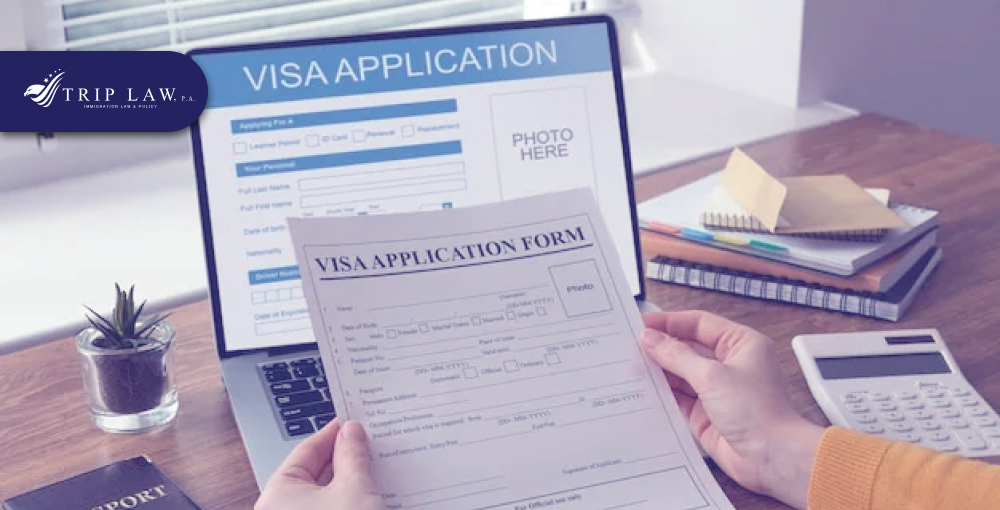
Navigating the Visa Application
Breaking down the visa application process, it's pretty straightforward. You start by filling out the application form. They'll ask for standard info like your personal details, travel plans, and purpose of visit. Once everything's in order, you'll submit it along with the required fee. Then, it's just a waiting game for them to process it.
Step by Step: How to Apply for Your Visa
Here’s a guide for you to get a thorough idea of the visa application for the US:
Decide what kind of visa you need. Are you going for a holiday, studying, or maybe working? Each one has its own requirements.
Go to the official U.S. Department of State website to get all the deets on how to apply. They've got loads of info on the specific visa you're after.
This is the fancy name for the U.S. Nonimmigrant Visa Application form. Just fill it out online. Be real honest and accurate. Once you're done, you'll get a confirmation with a special barcode.
Jump on over to the U.S. Department of State's Consular Electronic Application Center (CEAC) website. Pay the visa application fee there. Don't lose that receipt - you'll need it later.
Create an account on the U.S. visa appointment booking site. Follow the prompts to set up a date at the closest U.S. embassy or consulate. You'll need your DS-160 confirmation and fee payment receipt.
Show up at the embassy or consulate on your date and time. Bring all your docs, passport, and DS-160 form. You'll have a chat with the consulate about your travel plans and why you're going.
After the meeting, they'll let you know if you're good to go, if there's more info needed, or if there's extra paperwork. If you're in, they'll tell you when and how you'll get your visa.
If you're given the thumbs up, your visa gets stuck in your passport. Check all the info is right.
Now that you're all set, start getting excited about your trip to the U.S. Just remember to follow the rules of your visa and keep an eye on how long you're allowed to stay.
What to Prepare: Documents and Essentials
So, what do you need to prepare for your visa application? It's a bit like getting all your ducks in a row.
First thing first, you'll need your passport. Make sure it's got some blank pages and doesn't expire soon.
Then, passport-sized photos - usually two or three of them, depending on the country's requirements.
Next up, a filled-out DS-160 form, which you can grab from the official embassy website.
And don't forget about supporting documents like flight itineraries, hotel reservations, and proof of sufficient funds.
If you're heading for business, you might need an invitation letter from your sponsoring company.
These are the basic documents required for the application, but there might be additional requirements depending on the type of visa you have chosen.
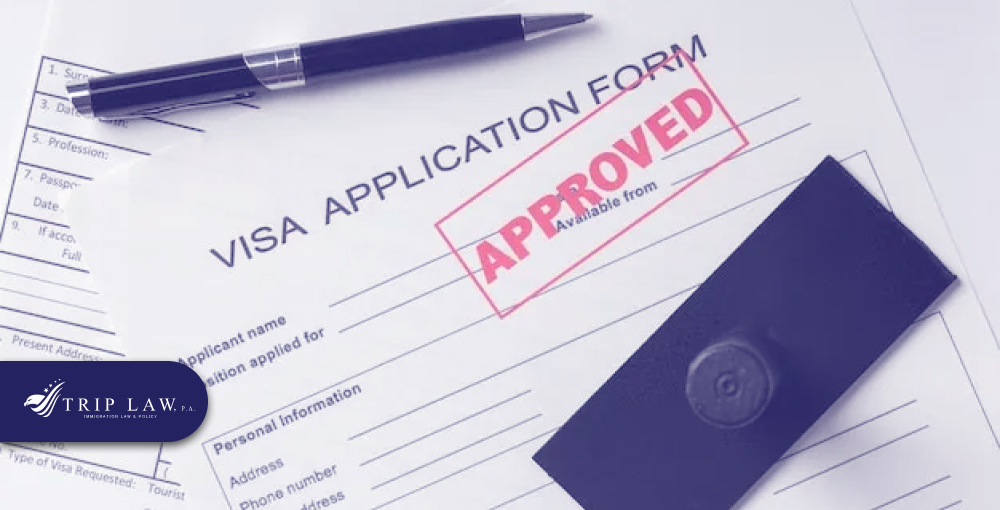
Visa Approval Tips
Here are some tips that will boost those visa approval odds and rock that visa application!
Getting It Right: Steps for a Successful Application
Visa application is no different than putting together a puzzle.
Make sure you start early. Give yourself enough time to gather all the necessary documents and fill out the application form accurately.
Double-check that your passport has enough blank pages and won't expire soon.
Now, onto the application form - go through it meticulously, and don't leave any blanks. Provide all the requested information, including travel plans and accommodation details. It's like painting a clear picture of your trip.
Collect all supporting documents, like flight itineraries, hotel reservations, and proof of sufficient funds. This adds weight to your application. If it's a business trip, include an invitation letter from your host company.
Review everything one more time to ensure it's all in order. Once you're confident, submit it along with the required fee. Now, it's a waiting game. Remember, patience is key. And if you're ever in doubt, don't hesitate to reach out to Trip Law for guidance.
Accuracy Matters: Providing the Right Information
When submitting the visa application double-check your personal details, passport number, and dates. Even a small typo can end up in big issues.
When detailing your travel plans, be precise about dates, destinations, and purpose. It's like giving a clear roadmap of your trip. If you're staying at a hotel, get the name and address right.
And when it comes to finances, be honest and provide accurate numbers. Remember, accuracy builds trust and confidence in your application.
So take that extra moment to review and ensure everything is on point. This way, you're setting yourself up for a smooth visa approval process.

Let's Connect
If you're navigating the visa process and need some expert advice, consider reaching out to us, Trip Law. We're like your immigration guardians, well-versed in the legal ins and outs. Our professionals specialize in immigrants with visa applications, ensuring you're on the right track. Think of us as the GPS for your immigration journey, providing guidance based on current laws and regulations. Remember, it's always wise to have a professional in your corner. Check out our services for a smoother voyage!
Leave a Comment Below
If you need more legal assistance down the road, don't hesitate to hit up. We're here to make your journey smoother than a fresh highway.
Reach Out: Contact Us for Further Assistance
And feel free to contact Trip Law if you face any difficulties regarding choosing a single or multiple entry visa, we’ll make sure you understand all the processes and assist you throughout the journey. Having Trip Law in your corner is a choice you won't regret. It's like having a trusty compass on your journey towards making the most of your travel adventures.

Dreaming of reuniting with your loved one from overseas? A K1 visa may be the perfect solution for you. But before you start filling out any paperwork, it's important to understand the process and the potential challenges you may face. That's where an experienced K1 visa lawyer comes in.
A lawyer can help you navigate the complex K1 visa process, from filing your petition to attending your interview. They can also represent you in the event of any complications, such as a denial or a request for additional evidence.
So, let’s get into the details and find out why you should hire a lawyer for a K1 visa.
What is a K1 Visa And Who is Eligible?
K1 visa or also known as "Fiance Visa," allows your fiance living outside the US, come and live in the country and marry you. However, not everyone is eligible for a K-1 visa.
The US government has established several guidelines to ensure that the relationship is genuine:
This visa category isn’t applicable for the finances of green card holders or lawful permanent residents, you must hold US citizenship.
You and your betrothed must have a genuine desire to marry each other, and you must do it within 90 days of their arrival.
You need to have an authentic bond and meet each other in real life at least two years before your petition for the K1 visa. However, there are exceptions for those who have cultural prohibitions on meeting their betrothed before marriage.
You should both be completely able to marry, which means that any previous marital ties should have been legally severed by divorce or death.
You must both be at least 18 years old.
You should have a continuous relationship through any form of communication, like phone calls or messages.
You must meet certain financial requirements to show that you can support your fiancé(e) financially. You may also find a co-sponsor who is willing to share the financial responsibility.
A criminal record for either of you may affect your eligibility for the K-1 visa.
You will need to submit an Affidavit of Support, which shows that you are legally and financially responsible for your fiancé(e).
If USCIS approves your petition, your fiance will need to appeal for a K1 visa at a US consulate in their home country.
You also cannot have a backlog of past K1 visa applications. So, when you start preparing the wedding bells, it's essential that you clear these eligibility boxes.
What are the Complexities of K1 Visa Requirements?
The first complication you may encounter is the mountain of paperwork. You'll need to gather documentation proving your US citizenship, your fiancé(e)'s legal marital status, and your in-person meeting.
This means birth certificates, divorce decrees, and a variety of other documents, all of which must be in English or translated correctly.
If you have children, they will also need their own K-2 visas. And then there's the money issue. You'll need to demonstrate your ability to support your fiancé(e) financially, which may involve submitting tax returns, pay stubs, or an affidavit of support.
Finally, you'll both need to undergo medical examinations and vaccinations. A comprehensive checkup by an approved panel physician is required to ensure that you're both healthy and ready to travel.
As you can see, there's a lot to juggle when applying for a K-1 visa. A lawyer can help smooth out the rough spots and make the process less overwhelming.
What are the Benefits of Hiring a Lawyer for Your K1 Visa Application?
So, why is hiring a lawyer for your K1 visa application a wise decision? These legal professionals are well-versed in the immigration process. So to speak, they have the playbook.
These legal professionals are well-versed in the ever-changing immigration rules and regulations. They will effortlessly guide you through the complexity of the K1 visa application procedure.
Every case is unique, and your lawyer is able to offer you tailored recommendations and guidance depending on your specific scenario.
They understand the procedure and pay attention to the finer points, which may assist you to avoid making tiny or costly mistakes.
If a difficulty emerges, a professional legal expert can assist you in developing a strong and thorough strategy for your case.
Hiring an attorney will streamline the process of acquiring and organizing documents, ensuring that nothing is overlooked.
The lawyer can serve as a liaison between you and USCIS, addressing all inquiries and directing the communication process.
Finally, having a professional handle such an essential aspect of your and your fiance's lives will provide you with peace of mind. They will always ensure that everything is up to date and that timeframes are met.
Overall, you can see that having a lawyer by your side means having someone who has your back, ensuring that all of your documentation is in order and that you're on track for your K1 visa. It's as if you had a professional quarterback leading your team to victory!
Can a Lawyer Help with K-1 Visa Challenges and Potential Problems?
Absolutely! Having a lawyer on your side can make all the difference when it comes to dealing with challenges and potential roadblocks in the K-1 visa process.
Immigration law can be complex and confusing, but lawyers are experts at navigating this complex landscape. They've dealt with all sorts of K-1 visa cases, from tricky background checks to resolving discrepancies in documents.
Even the US Citizenship and Immigration Services (USCIS) recommends considering legal assistance, especially if your case is complicated.
For example, if you or your fiancé(e) has a complex immigration history or there is a legal issue, a lawyer can help you navigate these challenges. They will work with you to develop a strong case and provide sound advice on how to address any potential roadblocks.
Here are just a few of the ways a lawyer can help with K-1 visa challenges and potential problems:
Help you gather and complete all of the required paperwork.
Review your application for errors or omissions.
Communicate with USCIS on your behalf.
Represent you at your interview, if necessary.
Help you resolve any discrepancies in your application.
Advise you on how to overcome any legal challenges, such as a criminal record.
If you're serious about getting your K-1 visa approved, consider hiring a lawyer to help you with the process. It could be the best investment you ever make.
Are Legal Fees Worth It?
Now, you may be wondering if paying for legal fees is worth it. Well, consider it an investment in a smoother, more hassle-free K-1 visa application process.
While there is a cost involved, think of it as paying for peace of mind. A lawyer's expertise can help you avoid potential pitfalls and ensure that everything is in order.
Plus, it will save you a lot of time and stress in the long run. With a lawyer's guidance, you're less likely to face delays or rejections.
Besides, spending a few dollars to be with your loved one without facing any hassle is more than worth it, don’t you think?
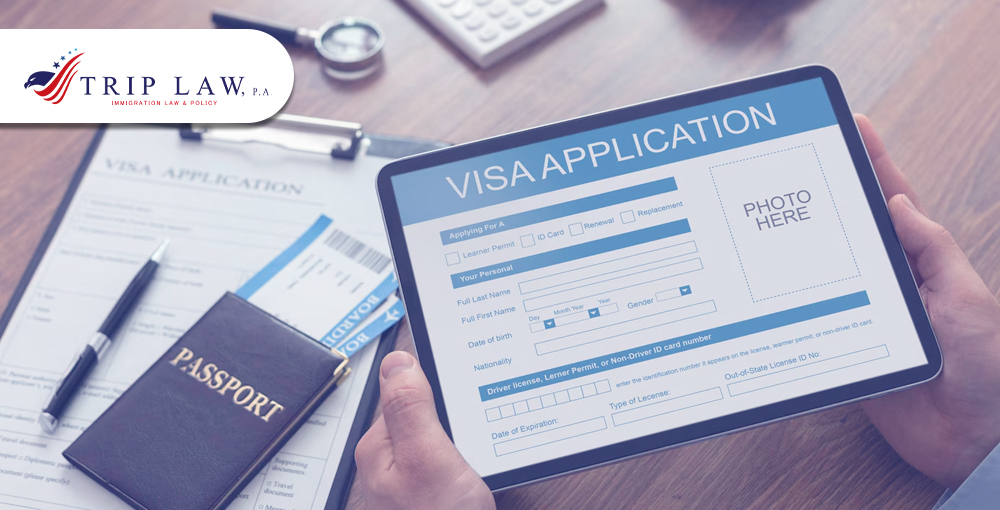
Navigating the Application Process of K1 Visa.
Navigating the K-1 visa application process with the help of a lawyer can make it a whole lot easier. As it can be a complicated and lengthy process, it is advisable to hire a lawyer who specializes in K1 visas. Here are the steps involved:
First, you need to find an immigration lawyer who has experience with K1 visas. In your initial consultation, the lawyer will assess your eligibility and explain how the process works.
Next, the lawyer will provide you with a list of required documents. These include proof of your relationship, financial documents, a passport, and a medical exam report.
Then, you have to Fill out Form I-129F, the Petition for Alien Fiancé, and submit it to USCIS with the lawyer’s assistance.
After that, wait for the approval of your petition and the issuance of the I-797 Notice of Action, which the lawyer will forward to you.
Your case will then be transferred to the National Visa Center (NVC) and then to the US embassy or consulate in your fiancé’s home country.
Have your fiancé apply for a K1 visa at the US embassy or consulate in their home country, and prepare for the interview with the lawyer’s advice.
You must marry within 90 days of their arrival in the US, and file Form I-485, the Application to Register Permanent Residence or Adjust Status, with the lawyer’s help.
You will receive a conditional green card for your spouse, and file Form I-751, the Petition to Remove Conditions on Residence, before it expires, with the lawyer’s help.
Hiring a lawyer for your K1 visa application can be a smart decision. A lawyer can help you avoid mistakes and delays, and increase your chances of success.
Selecting the Right Lawyer for Your K1 Visa Journey
If you're looking for the best lawyer to help you navigate the K1 visa process, look no further than Trip Law. Our consultants are immigration law experts with a proven track record of success in guiding couples through this challenging process.
Our expertise and attention to detail can make the difference between a solid application and one that meets all the legal requirements. Moreover, because of our personalized approach, you will have a dedicated lawyer who will support you and deal with any challenges that may arise.
With Trip Law, you are not just hiring a lawyer; you are hiring a partner who will help you bring your loved one to the United States.
If you are interested in our services, please contact us by (+1 863-599-6735), or mail us at info@trip-law.com , and book a consultation.
Conclusion
Hiring an experienced lawyer can make a big difference for your K1 visa application. They can guide you through the challenges of the process with their knowledge of immigration laws and procedures.
If you have any questions or comments, feel free to share them below. And if you need more legal help in the future, just contact us. We’re here to make your journey as smooth as possible.

If the car accident occurred as a result of human trafficking, domestic violence, or another qualifying criminal activity, and you were a victim of such a crime, you might be eligible for a U-visa if you're willing to assist law enforcement in their efforts. However, the specific circumstances can vary.
Now, let's get into the details. To be eligible for a U-Visa, some important criteria must be met. We're talking about cooperation with law enforcement, being a victim of a qualifying crime, and experiencing significant harm. Stay tuned as we unveil these criteria and illuminate the path to U-Visa protection.
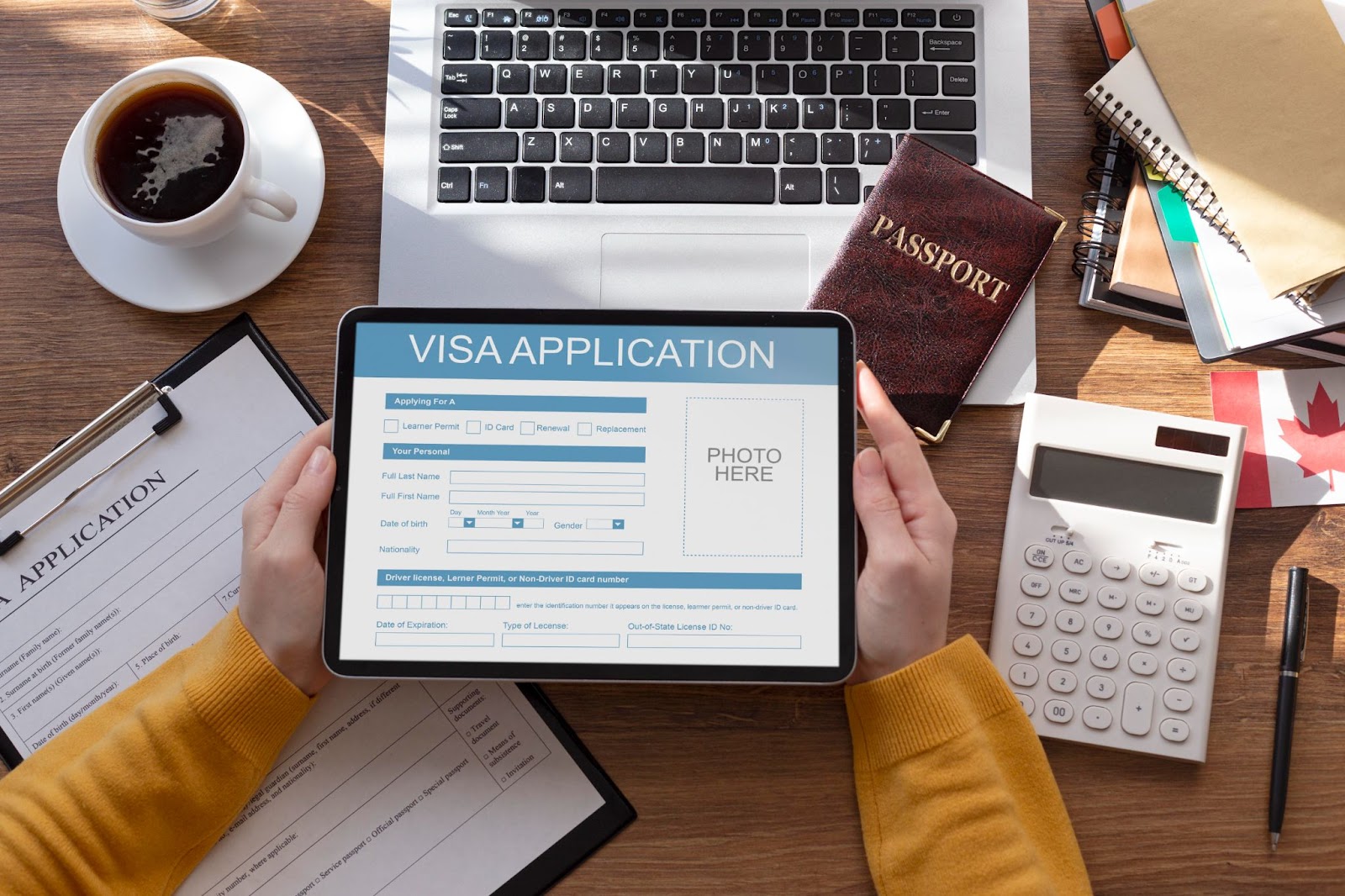
What is a U-Visa and How Does it Work?
a U-Visa, also known as the "crime victim visa." What's the deal? Well, it's like a shield for folks who've been through certain crimes and lent a hand to the cops. It's all about giving protection to the victims and helping out the law people at the same time.
But what crimes are we talking about? Brace yourself, because it's a list that holds some of the darkest corners of human experience: human trafficking, domestic violence, sexual assault, and more.
To grab one of these, the victims need some paperwork that specifies their cooperation with the cops. Once they shoot their shot with the USCIS application, and if it's a thumbs up, they get a ticket to temporary legal status in the U.S.
That means they can clock in for work and even take a shot at getting that green card for permanent residency.
Can a car accident make you eligible for a U-visa?
Let's get this straight - getting into a car accident doesn't automatically put you in the running for a U-Visa.
When you're tying a car accident to the crimes that qualify for a U-Visa, you need to make a clear connection between the two.

Think about it like this: if the car accident happened because someone was driving recklessly, drunk, or even took off after hitting you – those actions could be seen as qualifying crimes. These types of actions put you in the victim category, which is what the U-Visa is all about.
So, when you're talking about the car accident in your U-Visa application, make sure you explain how it's connected to these specific qualifying crimes. That's the key to making your case stronger – showing that you're a victim who meets all the U-Visa requirements.
Just remember, the link between the car accident and the qualifying crimes has to be crystal clear to really make your application shine.
What documents do you need to show you were affected by the car accident?
So, you're looking to score that U-Visa after a car wreck messed you up, huh? Well, here's the deal on the documents you need to back up your story.
Gather all those medical records that spell out how the accident left you injured. You know, documents like what the doctors diagnosed, how they treated you, and how you're getting back on your feet.
Don't forget to keep tabs on any bills that came your way – whether it's for patching yourself up or fixing your wheels.
If the whole mess made you miss work, grab a note from your boss stating your absence and how much income you lost.
For the mental side of things, if you've been talking it out with a therapist or counselor, get some notes from them too.
Overall, the more proof you've got, the better shot you've got at nailing that U-Visa.
How does law enforcement's involvement matter in getting a U-visa after a car accident?
When it comes to snagging that U-Visa after a car wreck, having the cops in the mix can be a game-changer.
If law enforcement gets involved and you're helping them out – like giving them the overview on what went down – it's like getting a golden ticket. You need them to vouch for you, saying you're doing your part to bring the bad guys to justice. It's like a teamwork thing.
So, if you're teaming up with the law people and showing them you're all in, your chances of getting that U-Visa get a serious boost.
What are the steps to apply for a U-visa if you've been in a car accident?
Alright, let's break it down – you're in a car wreck and thinking about grabbing that U-Visa. Here’s what you need to do:
Be sure the car accident links to qualifying crime stuff like human trafficking. If it does, you're in the game.
You have to help out the cops, spill the beans about what happened, and get a certification from them, kind of like a high-five for teamwork.

Gather up the proof – medical records if you got hurt, bills for medical costs or fixing your ride, and any work stuff if you had to take a break.
Fill out the U-Visa application like a champ, toss in that certification, and send it to the USCIS.
Cross your fingers and wait – there's a cap on these visas, so patience is key. If you get a thumbs up, you score temporary legal status, a shot at work, and maybe even a green card down the line.
Just remember, it's all about showing you're in on the teamwork and proving how that car accident is tied to the qualifying crime.
Tips for a Strong U-Visa Application After a Car Accident
So, you've had a car accident, and guess what? Getting a U-Visa is more than just dealing with those forms.
Witness statement
Getting a U-visa after a car accident is a big deal. And let me tell you, a witness statement can be your golden ticket. These statements are like the puzzle pieces that help immigration authorities put the whole story together. They show that you didn't just make up the accident to get a visa – proving it really happened. So, when you need to pursue that U-visa using your car accident, having solid witness statements can make all the difference.
Visual proof
And then having pics of your car after a car wreck can be a game-changer when you're aiming for that U-visa after an accident. These photos are like solid proof that your car really got smacked up, and it's not just some tall tale. They want to see the real deal, and these pics can speak louder than words. So, make sure you got some snaps after the crash – those snapshots could be the key to unlocking that U-visa and ensuring your immigration journey stays on the right road.
Law enforcement
Getting the cops involved after a car wreck is like adding some rocket fuel to your U-visa application. When law enforcement is on the scene, you get an official stamp of approval on your accident report. Plus, it proves you cooperated with the law, which is a big deal in immigration land.
Impact
Don't just talk about the accident itself; spill the beans about any ongoing medical stuff, therapy you're getting or the time you had to take a break from work. State clearly how the accident had an impact on you and your life.
These tips are like the secret sauce for a U-Visa application. Helping you in putting the pieces together for presenting the case clearly to the immigration authorities.
How can legal experts assist you in getting a U-visa after a car accident?

After a car wreck, when you’re aiming for a U-Visa, that's where Trip Law steps in. Think of us like your navigators through a maze.
Understand this, bagging a U-Visa after a car accident isn't as simple as check-the-box, we can help you understand the game. We can guide you on rounding up all the backup you need – like statements, photos as proof, medical records showing how the crash shook you up, and a police report to back up your side of the story.
There's more, Trip Law knows how to bridge the gap between the wreck and qualifying crimes for the U-Visa.
Taking up some legal support is the secret key for making that U-Visa yours after a car accident – no complication, no sweat.
U-Visas: Driving Toward a Brighter Future After Car Accidents
So there you have it – U-Visas paving the way for a better tomorrow after a car accident. It's like turning a tough situation into a stepping stone.
After a car wreck, this visa can be your path to a fresh start. With legal experts in your corner, you're not alone on this journey. They're like your co-pilots, steering you toward that brighter future.
Remember, the road might have been bumpy, but your destination can shine way brighter. The U-Visa making the drive toward a new chapter smoother than you thought.
So, if you're looking for some expert help to sort out that U-Visa after a car accident, Trip Law's got your back. We're like the masters of this game, who can help you navigate the twists and turns. We'll make sure your submission is on point, so no mess-ups or hold-ups.
Got more questions or thoughts? Drop them in the comments – we're all ears. And if you need more legal assistance down the road, don't hesitate to hit up. We're here to make your journey smoother than a fresh highway.
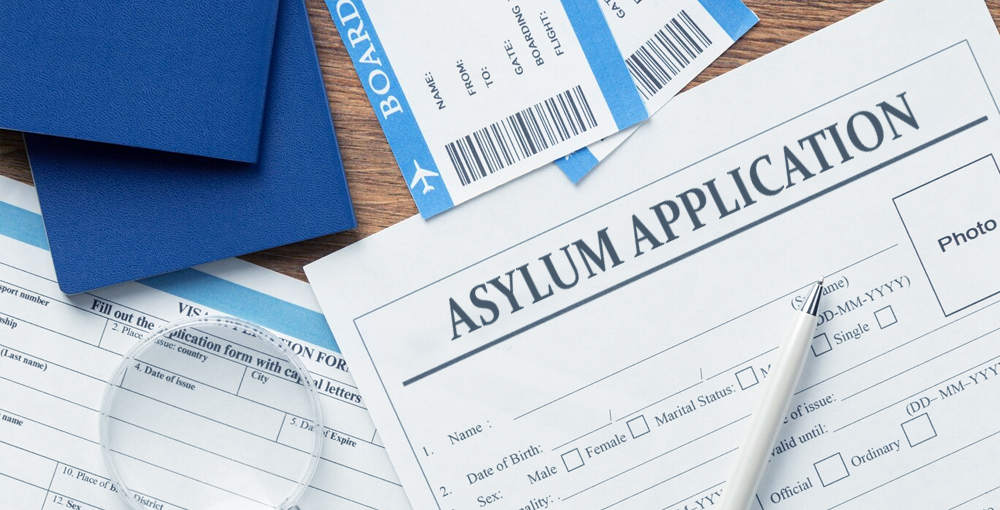
If you are thinking about dropping your asylum state after receiving a green card, you must first understand the procedure. When you receive a green card, your immigration status changes and your need for asylum reduces. While it is not impossible to withdraw an asylum claim, it can be a difficult process. Consider it a jigsaw puzzle that can make or unravel your immigration journey.
As we delve into this topic, we'll uncover the complexities and implications of such a scenario, helping you better understand the choices that can influence your path to permanent residency in the United States.
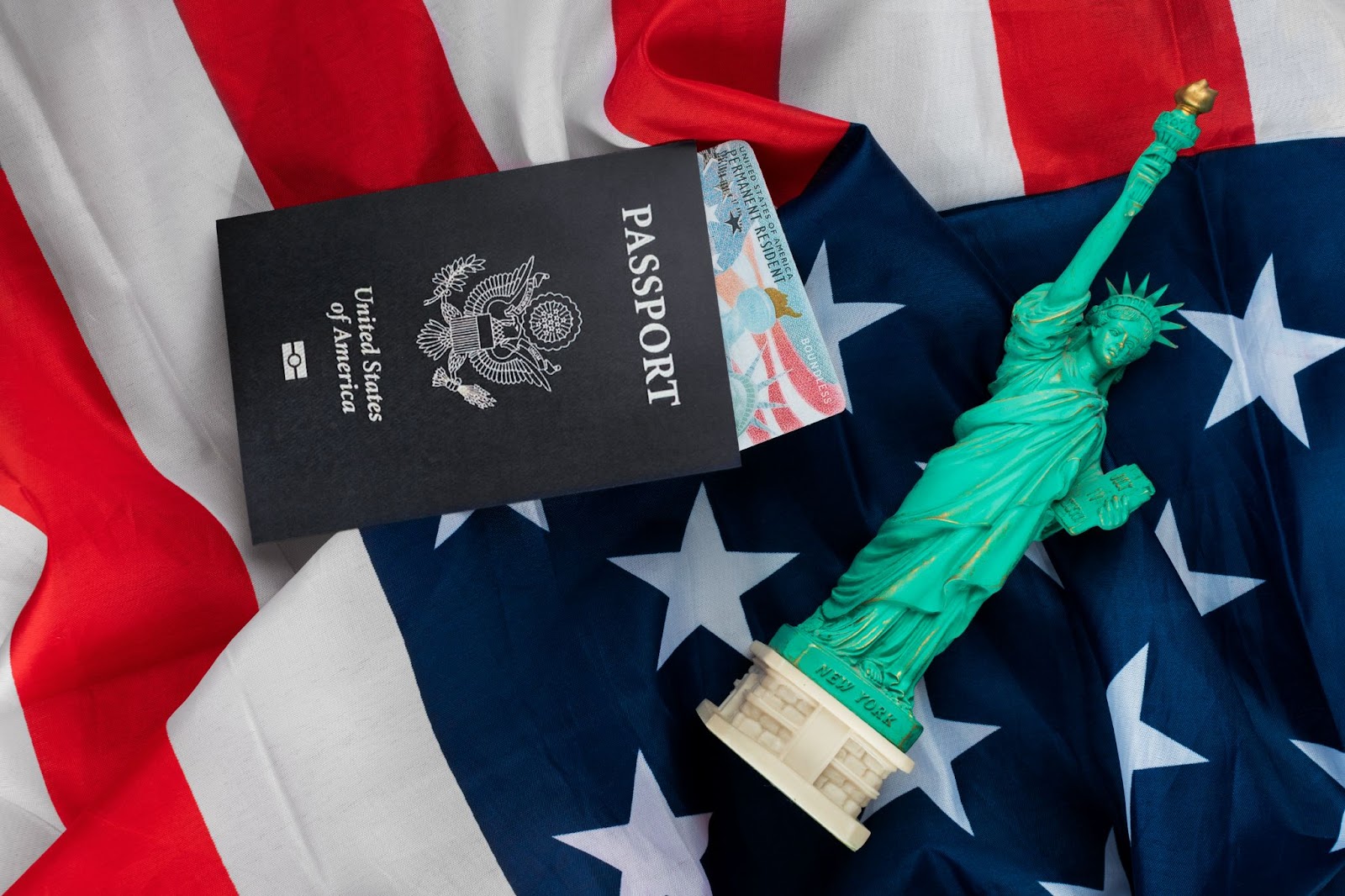
Understanding the Asylum Process:
Understanding how the whole asylum thing works means you gotta know the drill – the steps, what they want from you, and the curveballs that might come your way when you lay out your story.
It’s not just crashing on someone's couch; it's more like painting a picture that shows why you need support.
You're like a detective collecting proof and showing up for interviews, and each part moves you a bit closer to sorting things out.
How Does the Asylum Application Process Work?
When someone seeks asylum, it's like asking for a haven in a new country because they fear persecution in their homeland.
First off, you apply with the local immigration authorities. Then, they'll review your case to see if it fits the bill. It's like a puzzle – you gotta prove you're genuinely in danger due to your race, religion, nationality, political opinion, or social group.
If it checks out, you might get an interview where you spill the beans on your story. Don't worry, they're not looking for perfection – just truth. It's like talking to a friend but with some legal seriousness.
After that, a decision rolls in. If lady luck is on your side, congrats, you're granted asylum! If not, you might get a chance to appeal.
Why Is It Important for Potential Immigrants?
imagine you're in a boat, escaping the wild waters back home. Asylum is like that welcoming lighthouse on the distant shore. For potential immigrants facing danger or persecution, asylum isn't just important – it's a lifeline.
It's the chance to knock on a new country's door and say, "Hey, I need your help. I need safety." Think about it: If you're facing threats due to your beliefs, your identity, or who you are, having a shot at asylum can mean the world. It's like being handed a shield against the storms that pushed you out of your comfort zone.
Asylum offers not just physical protection, but a chance to rebuild, restart, and rediscover your life. So, to potential immigrants, asylum isn't just a word – it's hope, safety, and a fresh beginning all rolled into one.
What Are the Motivations Behind Seeking Asylum and How Does It Impact Immigration?
People seek asylum for a bunch of reasons – like escaping political turmoil, dodging persecution, or finding refuge from violence. It's like deciding to parachute out of a burning plane.
Countries have to juggle providing safety with maintaining their own rules. It's like a balance beam act. On one hand, asylum seekers bring diverse experiences and skills to a new place, spicing up the melting pot.
But, it can also strain resources and create debates. It's like inviting a bunch of guests to a party – exciting, but you gotta make sure you have enough snacks for everyone.
So, what motivations behind seeking asylum? Survival, plain and simple. Impact on immigration? It's like adding some drama and complexity to the whole process.
Transition to Green Card Status:
So, you've managed to get asylum in the U.S., which means you've proven that going back home is like stepping into a lion's den. Now, transitioning to a green card status is like leveling up – from being a temporary guest to becoming a more permanent resident.

How Can Someone Transition from Being an Asylum Seeker to a Green Card Holder?
Patience is key – you generally need to wait a year after being granted asylum. It's like marinating your aspirations.
Then comes the paperwork game – showing you're invested in your new home by working or studying. It's like showing off your skills to the immigration chef.
If all the ingredients come together nicely, voila, you could be holding that green card. It's like earning a membership to the American dream club.
So, in a nutshell, from being an asylum seeker to a green card holder, it's a bit of waiting, a dash of paperwork, and a sprinkle of luck – all leading you towards a more settled chapter of your journey.
What Are the Different Pathways to Acquiring a Green Card, and How Do They Differ?
You're curious about the whole green card game and the different ways to win it, right? Well, buckle up, because it's like choosing your adventure in a book.
There's not just one way to get that green card – it's like a buffet of options. Imagine it as a menu where you get to pick what suits you best.
First, there's family sponsorship – like having a relative who's already got that golden ticket vouch for you. It's like getting an invitation to the party through a familiar face.
Then, there are employment-based green cards – where your job skills could be your ticket in. It's like showing up to a job interview with a lifetime contract as the prize.
You've also got the diversity lottery – it's like playing the immigration lottery and hoping your number comes up.
And if you're an investor, there's the EB-5 visa route – like getting a green card by putting your money to work.
Each pathway has its own twists and turns, requirements, and wait times. It's like choosing which roller coaster to ride – they all get you to the same destination, but the journey's a bit different.
Reasons to Withdraw an Asylum Application:
Now let's talk about reasons why someone might decide to hit the brakes and withdraw their asylum application. It's like changing your mind about joining a new club.
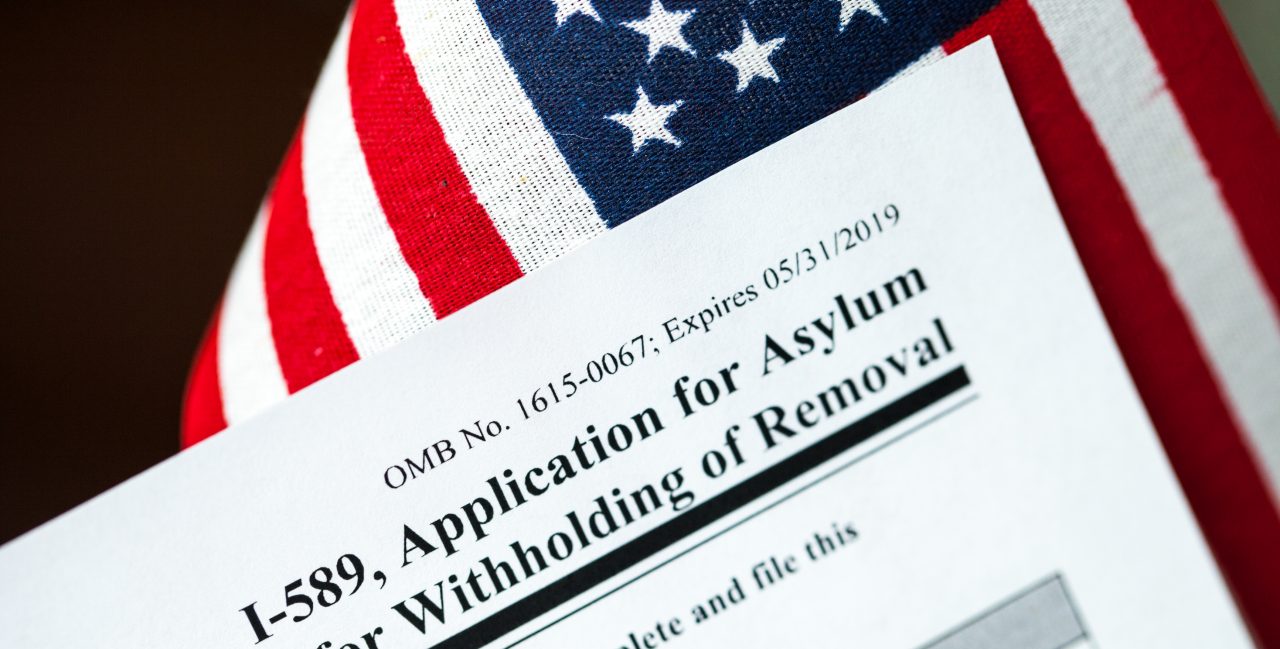
In a nutshell, withdrawing an asylum application isn't about giving up, but about choosing the route that fits best for where you're at in your journey.
Why Would Immigrants Choose to Withdraw Their Asylum Application After Obtaining a Green Card?
Let's dive into the topic of why immigrants might decide to change lanes after reaching a comfortable speed.
Picture this: sometimes, the reasons they sought asylum originally start to fade – it's like the storm clouds clearing up. When immigrants obtain a green card, they get more permanent resident status, which offers a sense of stability and opportunity.
So, it's like finding a cozy spot in a new neighborhood and deciding to stick around.
Plus, there might be changes in personal circumstances or new opportunities that make them rethink their path.
And let's not forget, that withdrawing an asylum is like choosing to explore a different trail in the same forest.
How Do Individuals Decide Between Legal Status, Family Ties, and Other Factors?
Alright, let's chat about how folks make some tough choices when it comes to picking between legal status, family connections, and other factors while considering withdrawing their asylum application. It's like weighing options at a crossroads.
Sometimes, as they navigate the journey to a green card or other legal status, they're also looking at family ties like threads connecting them to their past and future.
Legal status can offer stability, like settling down in a cozy home, while family ties can pull them toward their loved ones like magnets.
Plus, other factors like job opportunities, community, and personal dreams come into play.
Making this decision isn't about ditching one option for another, but rather finding a mix that creates a meaningful life. It's like crafting a puzzle where each piece has its place.
Benefits and Implications of Withdrawal:
Diving into the world of asylum withdrawal – the pros, the cons, and everything in between. Think of it as a big decision with both rewards and ripples.
The decision depends on individual circumstances, dreams, and priorities. So, the benefits and implications of asylum withdrawal are like a delicate dance between seizing opportunities and understanding the potential shifts in your path.
What Advantages Come with Withdrawing an Asylum Application for Those Who Hold Green Cards?
Withdrawing an asylum application for green card holders is like fine-tuning your journey for maximum comfort.
Imagine you've secured that green card – a golden ticket to stability and opportunities in your new home. Withdrawing your asylum application can have its advantages.
First of all, the reasons you sought asylum might have changed – and with a green card in hand, you've got more permanent resident status, which means you can work, study, and live more freely.

Additionally, you might have family ties or other factors that make other immigration options more appealing. It's like having multiple paths to explore in your journey.
By withdrawing the asylum application, you can fine-tune your status to align better with your present and future aspirations, finding a sweet spot on your road to success.
What Should Individuals Consider in Terms of Legal and Social Outcomes When Withdrawing?
So, imagine you're at this crossroads – you've got to consider both the legal and social outcomes of your choice. Legally, withdrawing could mean exploring different immigration paths that suit your situation better.
You might be aiming for a green card or another type of status that aligns with your current life goals. It's like picking the puzzle piece that completes the picture you want.
Now, let's talk about social implications. Your decision can affect not just your life, but your connections and community.
On the flip side, it could also open doors to new networks and opportunities.
Overall, when you're at this juncture, think about the legal and social puzzle pieces, because they both play a role in shaping the path you'll take next.
Steps to Withdraw an Asylum Application:
Alright, let's break down the process of waving goodbye to your asylum application – it's like deciding to take a different route on your journey. Withdrawing an asylum application isn't a complicated process, but it's important to follow the right steps and communicate clearly to ensure a smooth journey forward.
What Are the Step-by-Step Instructions for Withdrawing an Asylum Application After Green Card Approval?
The step-by-step process of withdrawing an asylum application after getting that green card approval, like adjusting your course when the winds change. Here's what you need to do:
Prepare a Written Statement: Sit down and write a clear statement indicating your decision to withdraw your asylum application. Just like writing a note to let someone know you won't be attending the event anymore.
Explain Your Decision: Briefly explain your reasons for wanting to withdraw the application. It could be that your circumstances have changed or you've found a better fit with your green card status.
Consult Your Attorney: If you've been working with an attorney, talk to them about your decision. They can help you ensure your statement is accurate and complete.
Submit the Statement: Mail your written statement to the appropriate USCIS office that's handling your case.
Await Confirmation: Once USCIS receives your statement, they'll review it and send you an acknowledgment or a notice of action.
Update Your Records: Keep copies of your withdrawal statement and any USCIS responses for your records.
Remember, each case might have its unique details, so it's a good idea to stay in touch with USCIS and follow any additional instructions they provide.
What Documentation and Forms Are Necessary to Navigate the Withdrawal Process?
Let's take a look at the documents and forms you'll need to navigate the process of withdrawing an asylum application – it's like gathering your essentials before a trip.
Form I-407, the "Record of Abandonment of Lawful Permanent Resident Status," is used to formally abandon your status as an asylee or lawful permanent resident.
Form I-602, if you are withdrawing your asylum application due to concerns about returning to your home country.
Cover Letter.
Supporting Documentation.
Proof of Identity.
Copy of Original Application, a copy of your original Form I-589, which you submitted when applying for asylum.
Communication with USCIS, and any correspondence from USCIS regarding your asylum application.
Appointment Notices, any upcoming appointments related to your asylum application.
Proof of Filing, Ensure you have proof of mailing or submission, such as receipts or tracking information.
Address Update, If you've moved since submitting your original application, make sure your current address is updated with USCIS.
Considerations for Different Immigrant Groups:
Each immigrant group has its own story, needs, and goals. For some, withdrawing might be about reuniting with family – like deciding to change your travel destination to be closer to your loved ones.
For others, it could be driven by career opportunities or personal dreams. Additionally, factors like language, cultural background, and community support play a role.
Safety and security can also be paramount – like making sure you're on a route that's well-lit and well-traveled.
So, considerations for different immigrant groups are like tailoring your journey to make it truly your own.
How Does the Process of Withdrawing Asylum Applications Differ for Refugees, Asylees, and Other Immigrant Categories?
The process of withdrawing asylum applications takes different turns for refugees, asylees, and other immigrant categories, like customizing your journey based on the route you've taken.
So, first up are refugees – those folks who've sought safety from outside the U.S. When refugees decide to withdraw an asylum application, it can impact their path to permanent residency or citizenship.
Now, asylees, on the other hand, have already been granted asylum within the U.S. If they want to withdraw their application. The impact might differ since they've already received a certain level of protection.
And then there are different immigrant categories like those with temporary visas or work permits. Withdrawing an asylum application for them might involve switching gears – like changing your route on a road trip to find a quicker way to your destination.
Ultimately, each group has its twists and turns in the process, but the common theme is that the decision should align with their specific goals and circumstances.
What Specific Requirements Should Different Immigrant Groups Be Aware of?
Refugees, asylees, and other immigrant categories each have their own set of requirements to be aware of.
For refugees, if they've already applied for asylum but later want to change paths, it could affect their eligibility for certain benefits and status adjustments.
Asylees, who've been granted asylum within the U.S., might have different implications. They might need to consider whether withdrawing their application could impact their current legal status and rights.
And for other immigrant categories, like those with temporary visas, there might be implications related to their current status and future options.
So, the key takeaway is to be aware of the unique requirements that apply to your immigrant group, ensuring your decision to withdraw an asylum application aligns with your individual goals and circumstances.
How Does the Withdrawal Process of Asylum Applications Vary Across Different Countries and Regions?
Just like every place has its unique vibe, the way you navigate the withdrawal process can differ too.
In some countries, it might be more streamlined and straightforward, like a well-marked highway. In others, it could involve more steps and documentation, like a scenic route with some twists and turns.

The availability of legal support, specific regulations, and even cultural factors can play a role.
Additionally, the reasons individuals choose to withdraw can also vary – based on what they want to explore in that particular region.
So, the withdrawal process of asylum applications isn't a one-size-fits-all deal – it's like embracing the diversity of travel experiences on your way to a new destination.
Conclusion:
In conclusion, the possibility of withdrawing an asylum application after obtaining a green card exists, but it's a decision that requires careful consideration.
While a green card offers more stability and opportunities, withdrawing an asylum application might impact your legal status, benefits, and even your connections within the immigration system.
Consulting with legal professionals, understanding the implications for your specific situation, and weighing the benefits against the potential drawbacks are essential steps.
So, if you need any professional assistance in the process/ decision of withdrawing your asylum after your green card, Trip Law can offer invaluable insights to figure out the complications, ensuring accurate submission and minimizing errors and delays.
For additional inquiries or feedback please leave them in the comments section. And feel free to reach out to us if you require any further legal assistance.

The J1 visa for medical residency in the USA involves a potential two-year home residency requirement after completing the program, while the H1B visa offers more flexibility with no such requirement. The J1 is limited to the duration of the residency, while the H1B allows for extended stay and different job opportunities. Additionally, the J1 is often sponsored by specific organizations, while the H1B requires employer sponsorship. Your choice should align with your plans and circumstances.

But, seriously, is it all just cut and dry? Nah, come on, let's peel back the curtain and dig into what's going on behind the scenes.
Understanding J1 and H1B Visas for Medical Residency:
Now, let's break it down to J1 and H1B visas. When it comes to medical residency, these two visas are like the secret passages to unlocking your dream medical career.
The J1 visa, backed by the U.S. government, usually requires you to head back home for a couple of years after your residency. It's like a "learn here, serve there" deal.
On the other hand, the H1B visa’s got a reputation for being more flexible, but it's like a golden ticket – you've got to lock down a job offer from a reputed employer to make it work.
So, whether you're up for a temporary adventure or eyeing a more permanent gig, these visas are your keys.
What is the significance of J1 and H1B visas for international medical graduates pursuing residency in the United States?
As an international medical graduate pursuing a residency in the United States, J1 and H1B visas can play a vital role in the process.
The J1 visa gives you the chance to learn and contribute to the US healthcare system but with a return ticket in the plan.
If you've got the H1B visa – it’s a VIP pass for a more extended stay. This one lets you put down some roots and offers you to dive into the specialized platform.
How do J1 and H1B visas influence the trajectory of your medical career?
J1 and H1B visas are both non-immigrant visas, and they can both influence the course of your medical career in the US, holding onto different results and requirements.
So, the J1 visa is often preferred by educational exchange programs, usually, its purpose is to give access to international medical graduates for achieving specialized medical training that they can practice in their home countries. You’ll have to go back for at least two years before you can apply for any other types of visas.
Now, H1B visas, they're the game-changers. Being an employment-based visa, this is usually used by highly trained professionals, or medical graduates who have received a job offer from a reputed US employer. It allows renewal and the path the getting permanent residency in the United States.
Overall, these visas are like the GPS for your medical journey – whether you're aiming for a quick detour or a full-on American adventure, they're the ones steering the wheel.
J1 Visa for Medical Residency: Benefits and Limitations:
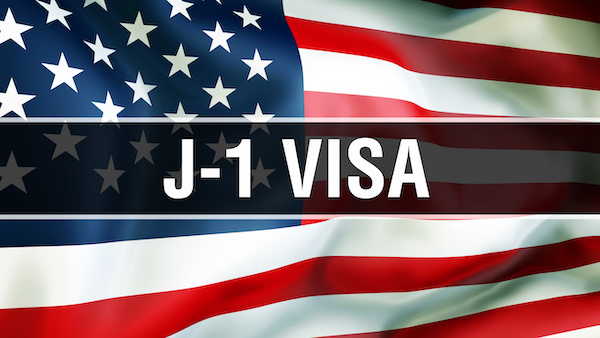
Alright, let’s take a look at the mix of pros and cons of the J1 visa.
On the plus side, J1 visas open up the door to the American medical world, letting you soak in the experience, learn the ropes, and connect with pros in the field. It's like your golden ticket to the land of opportunities, no doubt.
But here's the catch – you might need to head back to your home country for a couple of years after your residency, to share that newfound knowledge. It's kind of a "give and take" situation.
So, if you're all about soaking up skills and are okay with the temporary detour, the J1 visa could be your play.
What advantages does the J1 visa offer for medical residency, and how can it enhance your training experience?
The J1 visa is like a backstage pass to the big show – it lets you dive headfirst into the American medical scene and get hands-on like never before.
You're getting a chance to access some of the top-notch training - gaining insights, techniques, and skills that'll make your career practically glow with wisdom.
Here, you also get access to the offered compensation, scholarships, and tuition assistance to take off the burden of educational fees.
The J1 visa's like your entry ticket to cutting-edge tech and research to enhance your med skills and prepare for a successful career.
multicultural experience – you're soaking in diverse medical practices and building a well-rounded approach to achieving the global outlook.
Just keep in mind that the catch is the "return home" part afterward. But if you're down to learn, grow, and make the most of your residency ride, the J1 visa's got your back.
What limitations does the J1 visa impose, particularly the two-year home residency requirement?
Time to take a peek into the downside of the J1 visa game, specifically that two-year home residency requirement.
So, while the J1 visa is like a backstage pass to the American medical world, it's got some strings attached.
The two-year rule means that after your residency, you have to head back to your home country for a bit before you can try to fully spread your wings in the States.
Then we have the restrictions on employment, you might not have access to any opportunities outside the one you were sponsored.
Access to healthcare coverage is also limited or requires the applicant to go through additional procedures.
Despite the limitations of the J1 visa, it remains a valuable tool if you’re seeking medical residency and cultural exchange.
H1B Visa for Medical Residency: Exploring Work Opportunities:
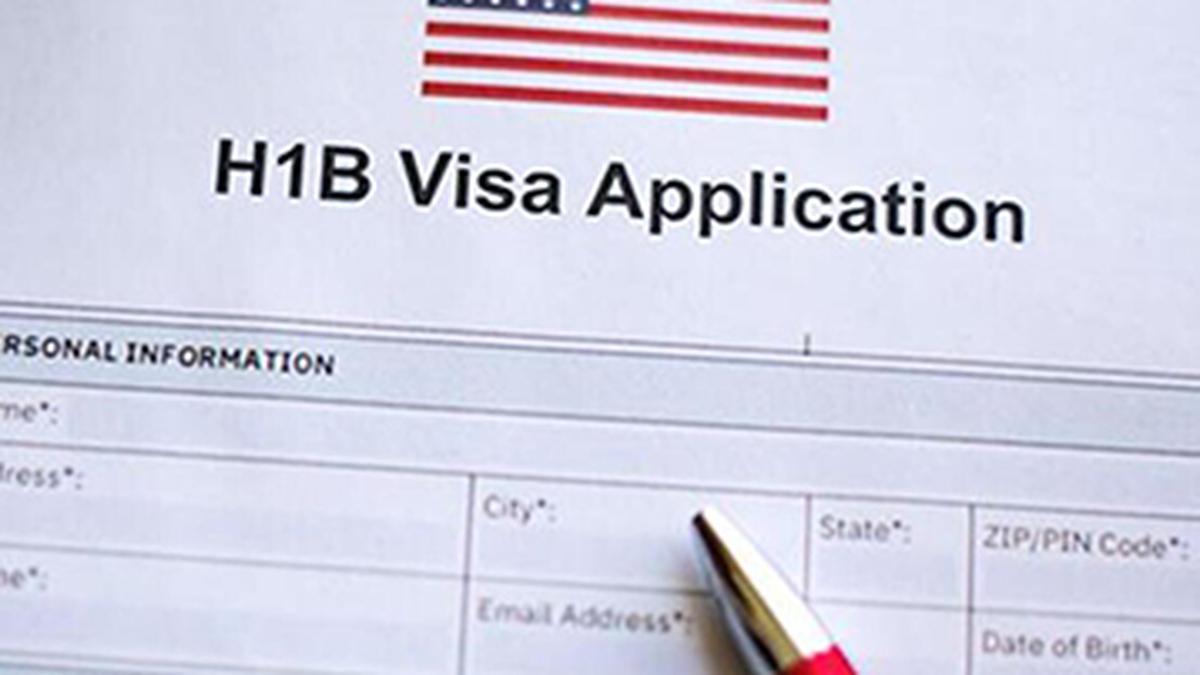
The H1B visa scene opens up a whole new world of work opportunities for you.
It's all about getting a legit job offer from a reputable employer and putting down roots in the American medical landscape.
You're not just learning anymore – you're becoming a vital player in the field, contributing your skills and expertise in a more permanent capacity.
And say goodbye to the two-year rule, because the H1B visa could have you planting your medical flag in the years to come.
How does the H1B visa open doors to diverse work opportunities for medical residents?
As we explore the H1B visa's dynamic role in medical residency, it's clear that this visa is like a master key to a treasure of diverse work opportunities.
H1B doesn't just open doors; it swings them wide open, inviting you to step into a world of specialized roles, advanced training, and impactful contributions to the American healthcare landscape.
The advantages are like gems waiting to be discovered – competitive salaries, exposure to cutting-edge technologies, and the chance to collaborate with a bunch of medical professionals from around the globe.
Of course, every adventure has its challenges, and the H1B journey is no different – navigating the application process, finding the right sponsorship, and understanding visa regulations.
Yet, packed with determination and the guidance of experts, you can navigate these challenges like a seasoned explorer charting uncharted territories.
What long-term prospects does the H1B visa offer for building a successful medical career?
Let's delve into the potential long-term benefits of the H1B visa when it comes to carving out a successful medical career.
This visa provides you the chance to establish a more extended presence in the US, and that's a game-changer for your professional journey.
And with the access to renewing the visa, along with the opportunity of applying for permanent residence, the H1B visa is a big plus.
So, whether you're driven to specialize, conduct groundbreaking research, or establish your own practice, the H1B offers the platform to nurture those ambitions.
Key Differences Between J1 and H1B Visas for Medical Residency:
Time to break it down and sort out the main differences between those J1 and H1B visas in the medical residency field. Both have their unique perks and quirks, so it's all about what suits your med career ambitions best.
What are the eligibility criteria, duration, and career implications of J1 and H1B visas for medical graduates?
Both J1 and H1B visas are commonly preferred for medical residency programs in the US, and they have some key differences. Let’s take a look at the comparisons:
Purpose:
The J1 visa is used for medical exchange programs, backed up by the Educational Commission for Foreign Medical Graduates (ECFMG), and requires the applicants to fly back to their homeland at least for 2 years before they can target other US immigration services.
On the contrary, an H1B visa is a non-immigrant work visa, that lets foreign employees, even medical residents work temporarily in the US.
Length of Stay:
With the J1 Visa, how long you can hang around really depends on how long your medical residency lasts. Those residency programs usually go on for like three to seven years.
Now, the H1B Visa starts off with a three-year ticket. But here's the twist – you can score extensions and keep it going for a max of six years. Oh, and as a med resident, there's a secret backdoor to get even more time beyond that six-year mark.
Employment Flexibility:
If you're on a J1 Visa, you gotta stick to the program that's backing your J1 program. It's like a work-buddy pact. But if you wish to hop over to a new spot or program, it can get tricky.
And for the H1B Visa, if you're holding one, you've got more freedom to switch bosses. You can totally take your H1B and move it to a new job without jumping through hoops for a permission slip or clocking those home residency years.
Waivers:
Now, here's the scoop, if you're on a J1 Visa, there's a chance you might be able to skip that whole two-year waiting game and jump into the action of applying for other U.S. visas or even getting a permanent residency. How? Well, it's like a magic spell – if you've got a super tough situation back home, or you're facing some heavy challenges, or even if the States give you a nod, you could wave goodbye to that home country requirement.
Then we have the H-1B Visa applicants. They don't have to deal with that two-year residency thing at all. No waivers, no worries. It's like they've got a free pass to skip that part of the game and focus on the real thing, like their job and life in the U.S.
But take note, as immigration rules can change every now and then, it’s for the best to stay updated on them. And, of course, consult with a professional before taking any steps.
How do the restrictions of the J1 visa compare to the opportunities presented by the H1B visa?
The J1 visa's got a "learn here, serve there" vibe. Sure, you're diving deep into your residency, but that two-year home residency requirement might feel like a speed bump.
On the other hand, H1B visas offer you a chance to stick around, building your career in the US. The catch? You need that legit job offer, and it's a bit more competitive to grab one. But once you do, you're looking at a potential longer-term stay with no "return home" rule.
It's a tug-of-war between short-term restrictions and long-term possibilities. The J1 visa's got you learning and networking, but the H1B visa's like the door to a potential permanent stay.
It's all about what suits your med career game plan best. So, time to balance those scales
Factors Influencing Visa Choice: Making an Informed Decision:
So, let's get real about the factors that play into picking the right visa – it's like choosing your med school specialization all over again.
Whether you're eyeing the J1 or the H1B, there's a lot to consider. This is why, take your time, weigh those options, and make a choice that's as sharp as your scalpel.
What factors should international medical graduates consider when choosing between J1 and H1B visas?
As an international med grad, you're at the crossroads of your career, so let's break it down.
Think about the duration – do you want a shorter immersive experience with the J1 or are you ready for a more permanent commitment with the H1B?
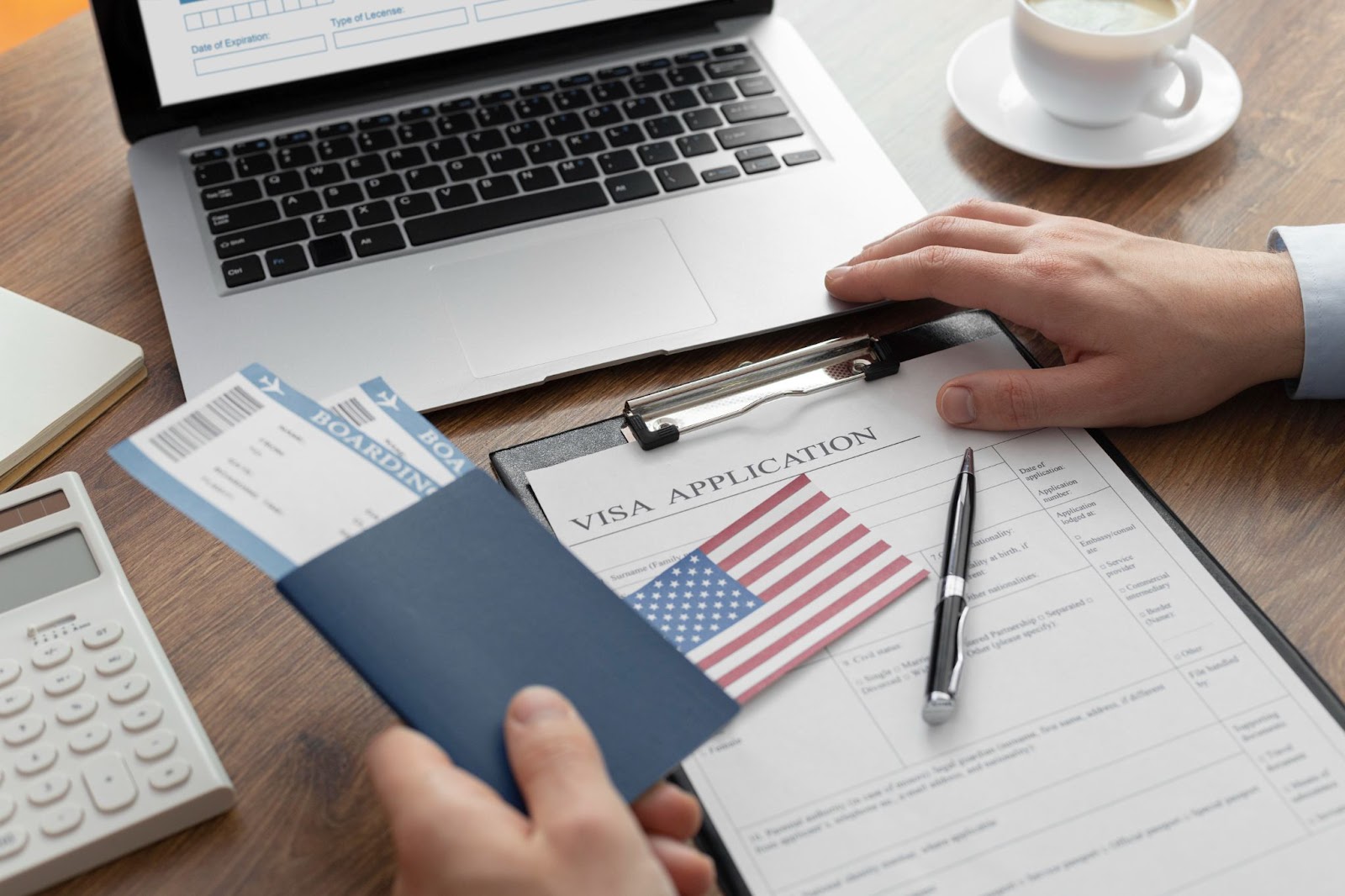
There's that "return home" rule with the J1 – consider how that might jive with your future plans.
Then the H1B's all about work, so make sure you're gunning for a job offer from a reputed employer.
Your career aspirations also play a big role – are you looking to specialize, build your own practice, or be part of a healthcare team?
Let's not forget about family, ties back home, and how much you're ready to embrace the American medical dream.
It's so confusing, no doubt, but putting these pieces together will help you grab the visa that aligns with your med career goals.
How does your personal background, goals, and family situation impact your visa decision?
Now zooming in on the stuff that's all about you – your personal background, your goals, and your family situation. Picking between the J1 and H1B visas isn't just about medicine – it's about your life too.
Your personal background, like where you're from and what you're used to, can influence how comfortable you are with the visa's terms.
Your goals, whether it's specializing, teaching, or just experiencing a new medical culture, play a huge role too.
Then there's the family factor – if you're rolling solo, maybe the H1B's got your name on it. But if you've got a family, especially back home, the J1's "return home" rule might have you thinking twice.
Because at the end of the day, your visa decision isn't just about your stethoscope skills – it's about shaping your medical career in a way that fits your life like a well-fitted glove.
Pathways to Permanent Residency (Green Card) for Medical Professionals:
Time to talk about a different kind of procedure – the one that leads to that coveted Green Card for medical professionals on J1 and H1B visas.
Now, pathways to the Green Card vary – you could go through employment-based routes.
And family ties, if you've got 'em, could also open doors through family-sponsored options.
So, whether you're all about a permanent residency with that Green Card or diving into a temporary adventure with the J1 or H1B, it's about making choices that align with where you see your medical career flourishing.
What are the potential routes to obtaining a Green Card for J1 and H1B visa holders pursuing medical careers?
Time to unravel the mystery of how J1 and H1B visa holders can grab that Green Card while pursuing their medical careers.
If you've been up on the J1 visa, there's a chance you can switch gears through the Conrad 30 Waiver Program. This path can lead you to a Green Card without going through the whole "return home" fuss.
Now, if you're all about the H1B visa, the EB2 or EB3 categories could be your ticket. The National Interest Waiver, in particular, could make the process smoother if you're a pro in your field.
And remember, family ties might open doors too, through family-sponsored Green Cards. It's like a choose-your-own-adventure story for your medical career, with pathways that lead to a permanent spot in the US healthcare landscape.
So, whether you're on a J1 or H1B journey, remember – that Green Card's a possibility waiting for you to grab it.
How can obtaining a Green Card shape the long-term prospects of international medical graduates?
The Green Card can be a game-changer for international medical graduates with their eyes set on the long haul.
With a Green Card, you're not just passing through – you're putting down roots. It's the passport to stability, letting you fully immerse yourself in the American medical landscape without the time constraints of visas.
It also opens up doors to a world of opportunities – from specializing to teaching, from research to setting up your own clinic.
Seeking Professional Advice: Navigating the Visa Landscape:
Let's chat about a smart move when it comes to tackling the visa puzzle – seeking professional advice to navigate this whole landscape. Think of it like having a GPS for your medical journey.
With all the visa options, rules, and twists, it's easy to feel like you're lost in the woods. Immigration lawyers who specialize in medical professionals' journeys can be your guide.
They can help you match your career goals with the right visa, and guide you through the application process.
Why is it important to seek guidance from immigration experts when navigating the complexities of J1 and H1B visas?
Seeking guidance from immigration experts when you're wading through the J1 and H1B visa maze is like having a compass in the wilderness.
These visas aren't just forms and papers; they're your entry ticket to shaping your medical career in the US.

Immigration professionals know the shortcuts, tricky spots, and can help you dodge potential roadblocks.
They match your goals with the right visa, make sure your paperwork is up-to-date, and keep your head on any changes in the immigration landscape.
Where can international medical graduates find reliable resources and agencies to assist with visa-related decisions?
Ready to find your visa allies? Look no further – there's a treasure trove of reliable resources and agencies out there to help international med grads tackle those visa decisions like a pro.
Start with official government websites like the U.S. Department of State or U.S. Citizenship and Immigration Services (USCIS) – they're the source of the real-deal info.
But if you're more of a "human touch" person, consider connecting with immigration law firms that specialize in medical professionals' journeys.
Another great option is educational institutions – many med schools have advisors who can steer you right.
And don't forget the online forums and communities where fellow med grads share their experiences and recommendations.
Making the Right Choice for Your Medical Residency Journey:

In the grand finale of your visa quest, it's all about making the right choice for your med residency journey – it's like picking the perfect tool for a surgical procedure.
And as an international med grad, you're not just choosing a visa; you're shaping the path of your medical career.
With options like the J1, H1B, and the coveted Green Card, it's a choose-your-own-adventure moment.
Remember, it's not just about the medical skills; it's about aligning your goals, your personal situation, and your long-term aspirations.
Seek guidance from experts, tap into official resources, and connect with fellow med grads for their insights.
It's like putting together a puzzle where each piece leads you closer to the career you've always dreamed of.
Moreover, if you need any professional assistance in the process of choosing between a J1 vs H1B Visa and pursuing them, Trip Law can offer invaluable insights to figure out the complications, ensuring accurate submission and minimizing errors and delays.
For additional inquiries or feedback please leave them in the comments section. And feel free to reach out to us if you require any further legal assistance.

Greetings to all H1B visa holders navigating their professional journey in the United States! In this article, we will look at one of the most significant issues: life insurance. While it may not be as exciting as other elements of your American adventure, the need of obtaining enough life insurance as an H1B Visa holder cannot be stressed enough.
Our complete guide on life insurance for H1B visa holders is here to provide you with useful information. Continue reading to obtain a better grasp of this crucial financial precaution that is tailored to your circumstances and goals.
Why is Life Insurance Essential for H1B Visa Holders?
Life insurance is essential for H1B visa holders; it acts as a safety net, ensuring that your loved ones are financially secure no matter what life throws at them.
Whether you're here for a short-term project or want to stay for the long haul, life insurance assures you that you're looking after your family's future.
Furthermore, let's face it: no one can anticipate the future, and having a quality life insurance plan ensures you're prepared for the unexpected.
What Unique Financial Challenges Do H1B Visa Holders Face?
While pursuing your career goals and embracing new experiences through the H1B visa, you might run into particular financial obstacles.
These difficulties frequently revolve around doubts over long-term career prospects, the expense of living in a new country, navigating tax rules, and obtaining enough health insurance coverage, all of which contribute to the particular financial landscape that H1B Visa holders must cover.
Not to mention, the transitory nature of the visa might add a degree of complication due to the multiple financial responsibilities. But don't fear; you can gradually overcome them with a greater understanding of these problems.
You'll be well-equipped to succeed financially while contributing meaningfully to the US labor and economy if you follow professional advice and take sensible financial initiatives.
How Does Life Insurance Safeguard H1B Visa Holders' Families and Assets?
Life insurance is more than just a piece of paper; it acts as a financial superhero for H1B visa holders and their families, offering financial security and peace of mind in the event of unforeseen circumstances. It ensures that your loved ones are financially secure - from mortgage payments and everyday costs to your children's school fund.
Furthermore, unexpected expenses such as unpaid debts or funeral fees are covered by life insurance, so your family is not left with a financial burden.
And life insurance also protects H1B Visa holders' assets and investments, guaranteeing that their hard-earned financial resources continue to benefit their families even when they are not present.
What Types of Life Insurance Suit H1B Visa Holders?
Now, let’s dive into the specifics. H1B visa holders have a variety of life insurance alternatives that are suited to their specific needs. There are two main forms of life insurance: term life insurance and permanent life insurance.
Term life insurance provides coverage for a set period, making it a cost-effective alternative that complements the H1B visa's transient character.
Permanent Life Insurance, on the other hand, provides life-long coverage and contains a savings component that increases over time, which may be very beneficial for long-term planning and possible cash value accumulation.
Strategically assessing your goals, financial status, and length of stay in the United States can help you decide which insurance is ideal for you.

Term Life vs. Whole Life: Which Insurance Options Are Ideal for H1B Visa Holders?
Picking the right life insurance type can be a big deal when securing the financial future for you and your family as an H1B visa holder.
With the complications of immigration statuses and the aim for flexible coverage, the decision between Term Life and Whole Life insurance becomes critical.
Term Life Insurance:
Term Life Insurance is a tailored solution for the H1B Visa journey's transitory nature. It offers coverage for a set period, often ranging from 10 to 30 years.
This insurance option is especially tempting to people seeking financial security during critical years.
For example, if you're nearing the end of your mortgage payment period or if you have dependent children, Term Life Insurance may be a good choice.
The rates are often lower than Whole Life's, making it an appealing option for those seeking complete coverage without committing to a lifelong plan.
Whole Life Insurance:
Whole Life Insurance, on the other hand, provides a more complete and long-term solution.
Being a permanent life insurance plan, it insures you for the rest of your life as long as the payments are made.
Whole Life is known for its built-in savings component, termed cash value accumulation.
This cash worth rises over time and maybe a significant asset, providing chances for loans or withdrawals that can be especially beneficial for long-term planning.
Choosing the Right Fit:
Individual purpose and situation influence the decision between Term Life and Whole Life for H1B Visa holders.
If you're looking for a low-cost option that provides significant coverage during critical years, Term Life may be the way to go. But if you want everlasting protection as well as potential financial advantages, Whole Life will be a better option.
Consider your family's financial needs, the length of your stay in the United States, and your long-term financial goals while making this selection. Consultation with a professional financial advisor can give you some essential insights to help make the best decision.
What Factors Influence Life Insurance Premiums for H1B Visa Holders?
Several important points affect the cost of your life insurance coverage. To begin, age and health conditions are one of the most important factors. The desired quantity of coverage is another important issue; larger coverage frequently equates to higher rates.
Furthermore, the policy's term length has an impact, with longer periods you’ll have to pay higher premiums. Smoking and involving in high-risk activities can also affect premium prices.
How Does Age Impact Life Insurance Premiums for H1B Visa Holders?
Age plays a big role in determining life insurance premiums. Basically, if you're younger, you can get on with lower rates because you're considered less likely to have health complications. As people become older, the chances of developing health problems rise, spiking the premium.
So, knowing the age role in this whole premium calculation process helps you H1B holders pick the right life insurance plan that aligns with your goals.
What Role Does Health Play in Determining Life Insurance Costs?
Insurance companies evaluate your health to figure out how risky you are. Staying in good health is not only important for the personal well-being of H1B visa holders, it actually directly affects how much your life insurance costs too.
When they’re sorting out the details, they go through your medical history, current health status, and probable pre-existing conditions. If you’re in good health typically you’ll receive reduced premium rates, indicating a lesser risk of future health difficulties.
How Can H1B Visa Holders Navigate the Life Insurance Application Process?
Obtaining life insurance needs a smart strategy favoring the special situation of H1B visa holders. To begin, consult with insurance specialists who understand both life insurance and immigration issues.
Furthermore, when you're filling out the insurance application, be honest about your health and lifestyle. No holding back, the more accurate you are, the smoother things go.
And working with a professional financial adviser ensures that you'll be all set to make solid choices, like getting enough life insurance coverage to keep your family's finances in check.

What Steps Should H1B Visa Holders Follow When Applying for Life Insurance?
H1B visa holders who are thinking about getting life insurance should begin by consulting with insurance specialists who know their way around both life insurance complications and visa issues. They'll be like your guides, helping you figure out what kind of policy works best while you're on your visa journey.
Once you've got some potential insurance providers, get into the details. Wrap your head around things like what the policy actually covers, any extra add-ons you can get, and any limits they might have. This step's like making sure you're getting the perfect fit for your needs and giving your family that extra safety net.
And, don't hold back when you're spilling the beans about your health and lifestyle while filling out that application. Turns out, this info plays a big role in deciding how much you pay for the premium and what exactly the insurance will cover. So, keep it real and honest to help speed things up.
Tackling the world of life insurance can be a bit tricky, especially for H1B visa holders. But, you don't have to go it alone. Get some smart advice from a financial specialist who's a pro in both the life insurance and visa sector. Trust me, having that expert on your side can make a world of difference.
What Documentation is Required During the Application Process?
As an H1B visa holder, it is critical to gather correct and thorough documents to ensure a smooth and successful application. Common key documents include:
Employment verification
Proof of visa status
Valid identification
Medical history documentation, including any pre-existing conditions.
Consulting with insurance specialists that cover visa-related issues can provide deep insight into the accurate papers required to speed up the application process.
Addressing Common Concerns of H1B Visa Holders Regarding Life Insurance:
Life insurance decisions often raise rational concerns among H1B visa holders, starting from the characteristics of your financial and visa-related circumstances. Such as:
Temporary Nature of Visa: While H1B visas are temporary, life insurance can still be highly relevant. Going for term life insurance can provide coverage during your visa tenure, and protect your family's financial well-being.
Coverage Alignment: Tailoring your life insurance policy to match your visa duration ensures you are decently covered throughout your stay, keeping a balance between coverage and visa validity.
Cost-Efficiency: Term life insurance is a cost-effective alternative that allows you to receive enough coverage at a sensible rate. Consider it an investment in your family's financial security in the future.
Who Can Be Designated as Beneficiaries for H1B Visa Holders' Life Insurance?
As an H1B visa holder, you have the option of designating beneficiaries for your life insurance plans to protect loved ones' financial well-being in the case of death. Immediate family members such as spouses, children, and parents can be beneficiaries.
The ones who have substantial financial interests with you, such as business partners, can also be named as beneficiaries.
It's important to remember that naming beneficiaries needs careful thought and should favor your specific family and financial situation.
What Happens to the Policy if an H1B Visa Holder Returns to Their Home Country?
The consequences of life insurance for H1B visa holders returning to their native country should be carefully considered. In such cases, the current life insurance policy's status is mainly defined by the terms and conditions provided in the policy agreement.
Returning to your native nation does not necessarily invalidate the policy; however, changes may be required. Options may include keeping the coverage, converting it to a new form of policy, or perhaps giving up the policy, depending on the insurance provider and policy type.
It is important to work with insurance experts who understand the complicated dealings of visa status, insurance rules, and cross-border essences.
Which Insurance Companies Cater Specifically to H1B Visa Holders' Needs?
Several respectable insurance firms understand the special demands and situations of H1B visa holders, and they provide customized solutions to solve their financial security worries.
- What Are the Top Life Insurance Providers for H1B Visa Holders in the USA?
These respected providers offer a selection of plans designed to assure full coverage and financial well-being during your time in the United States while looking for insurance solutions that cater to the special needs of H1B visa holders.
How Do These Providers Customize Coverage for H1B Visa Holders?
Those insurance providers dive into what the H1B visa holders are after. They have built up all sorts of customized options right into their insurance plans, tailor-made for the H1B visa holders.
This customization includes stuff like visa terms, and coverage for pre-existing conditions, ensuring full medical services, and also lets you pick out your choice of healthcare provider.

How Should H1B Visa Holders Compare Quotes and Coverage?
The process of comparing insurance quotes and coverage options for H1B visa holders needs a bit of strategic addressing.
First, start by taking a good look at your unique healthcare and financial needs, bearing in mind the factors such as coverage duration, medical services, and potential pre-existing conditions.
Next up, request quotes from well-known insurance providers to carefully look through each, and what they’re offering in terms of coverage.
And scrutinize the details like the deductibles, co-payments, and coverage limits to gain a deeper understanding of the plan’s sustainability.
What Factors Should H1B Visa Holders Consider When Comparing Life Insurance Quotes?
The H1B Visa holders who are diving into the world of life insurance quotes, there are a few key things to keep in mind.
Coverage amount - Make sure it’s enough to take care of your family’s needs throughout the journey.
Policy term - It should match up with your visa duration and the timeframe you want to be covered.
Premium cost - Of course, the budget should be kept in mind, so take a good look at the premium costs and how often you’ll have to pay.
Don’t forget to go through the details, what’s included and what’s not. Also, if you want something reliable, snoop around a bit to find out the insurance company’s reputation, financial stability, and how smooth their claim process is.
Lastly, consult with an insurance professional who knows the visa links too, they’ll help you make sense of it all and find a life insurance quote that comfortably fits your unique requirements.
How Can H1B Visa Holders Determine the Optimal Coverage Amount?
Figuring out the right coverage amount for H1B visa holders can be a quite daunting task, but it’s totally manageable with a little thoughtful examination.
Take a peek at your situation first, considering your age, health status, and your family or potential dependents. Then ponder on the cost of doctor visits, prescribed medicines, and potential emergencies.
Plus, evaluate the coverage your employer has offered. And don’t hold back on having a chat with your H1B colleagues, they might be able to offer you some wisdom.
Lastly, stay updated on any changes made to immigration policies or healthcare regulations that might affect your coverage.
9. What Real Life Success Stories Highlight the Importance of Life Insurance for H1B Visa Holders?
- Can You Share Examples of H1B Visa Holders Benefiting from Life Insurance?
- How Did Life Insurance Make a Difference in These Individuals' Lives?
What Strategies Maximize Life Insurance Benefits for H1B Visa Holders?
By following certain strategies and playing out smart moves, H1B visa holders can get a bang for the buck. And we will help you understand them in detail, so you don’t feel lost in the process.
Are There Tips for H1B Visa Holders to Enhance Their Life Insurance Coverage?
Here are some cool tips for H1B Visa holders. So, for getting the most out of the life insurance if you're an H1B Visa holder, first off, it's all about customization – tailoring that policy to fit your unique situation.
Think about your visa timeline, your family's needs, and any financial goals you've got on your radar.
Plus, play smart with your age – getting coverage while you're still young can save you some serious cash.
Next, health comes into the game. Staying in good shape won't just make you feel good, it can actually get you lower premium rates.
And last but not least, the Term Life vs. Whole Life confusion, consider the pros and cons of each.
And there you have it – a bunch of comprehended strategies to help the H1B visa holders maximize those life insurance perks and secure that financial peace of mind.
How Can H1B Visa Holders Adapt Their Policies Over Time to Ensure Continued Protection?
H1B Visa holders can keep their life insurance on point as things roll on with time, just by being precautions and staying updated. Flexibility is key, so as your life changes its phases, make sure your policy follows suit.
First up, follow up regularly on your coverage. If you tie the knot, welcome a new family member, or score that promotion, your insurance might need a little change. And don't forget the visa journey – as your status evolves, your policy might need to keep up.
Plus, let's talk about those premiums. Over time, it's good to give them a second look now and then. And revisit your beneficiaries because you want to make sure your loved ones are still the ones getting the benefits if something happens.
Conclusion
To summarize, diving into the world of life insurance as an H1B Visa holder in the USA is like embarking on a journey to safeguard your family's financial well-being.
Navigating the complexities of visas, health factors, and policy options might seem like a puzzle, but gathered with the right knowledge, it's a puzzle you can master.
So, we hope this blog post has helped you to secure not just a visa, but a solid financial foundation for your journey in the USA.
And for the professional assistance, you need on getting health insurance for an H1B visa, Trip Law can offer invaluable insights to figure out the complications, ensuring accurate submission and minimizing errors and delays.
If you have additional inquiries or feedback please leave them in the comments section. And feel free to reach out to us if you require any further legal assistance.
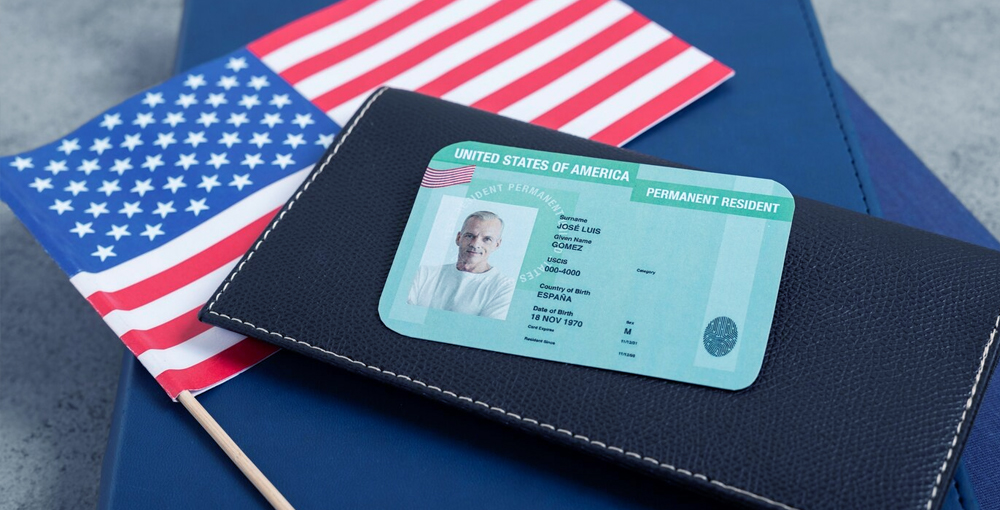
Introduction:
If you’re having thoughts of obtaining a green card right after you have renounced your US citizenship, it might seem like a twist. Well, the decision to renounce is a crucial one, but it doesn’t take away your chances of green card possibilities, but surely it brings up some complexities. Here, the eligibility criteria, personal situations, and legal landscape play a big part in deciding whether you can proceed with the process.
So, the best thing you can do is seek some guidance from an immigration expert, to get a better understanding of the legalities, and explore the chances of securing a green card after renouncing.
Renouncing US Citizenship:
Renouncing US citizenship is a consequential decision that has a ripple effect on various aspects of life. You have to go through a formal declaration process, followed by several legal steps, interviews, and paperwork.
People usually go through this complicated process of renouncing due to personal, financial, or maybe ideological reasons, like acquiring a new nationality or easing up the tax burdens.
Although keep in mind that it’s not a casual choice, but rather a serious one that requires careful thinking and professional guidance.
Why Would Someone Consider Renouncing Their US Citizenship?
The decision of renouncing citizenship might look like a plot twist, but there are reasons behind such a pivotal step.
As said before, renouncing citizenship can have motives like simplifying the tax responsibilities or embracing a new nationality, finding a better value and circumstances that fit their values.
People also go for it to avoid the responsibilities of dual citizenship, escape certain legal obligations, and sometimes for a fresh start. But renouncing is a serious step, like starting a new chapter in your life.
Whatever the reason is, deciding to renounce citizenship requires careful consideration, an understanding of the legal implications, and a good knowledge of the alternative paths.
What Legal Steps Are Involved in Renouncing US Citizenship?
Renouncing US citizenship includes several legal steps that transform your status in the whole world. It’s like letting go of a rope that holds onto a part of your identity.
This journey starts with a clear intention of renouncing, which is followed by an in-person interview at the US embassy or consulate. After your intent has been confirmed, you’ll have to sign a Statement of Understanding, acknowledging the consequences. Then you have to complete Form DS-4079. The grand finale is the renouncing oath taken in front of a consular officer, like a climax in your story.
Once all is said and done, you’ll receive a Certificate of Loss of Nationality (CLN), sealing the deal.
Green Card Eligibility After Renunciation:
When it comes to the topic of green card eligibility after renunciation, there comes a mixture of complexities and possibilities. Even if renouncing US citizenship doesn’t slam shut the door to getting a green card, it does bring in some nuances.
Some important factors like individual circumstances, current immigration law, and the reason for renunciation play a role in determining your eligibility.
While the road might seem a bit bumpy, the journey toward green card eligibility is a unique experience waiting to unfold.
Is It Possible to Get a Green Card After Renouncing US Citizenship?
The idea of acquiring a green card after renouncing US citizenship could seem difficult, but it isn't set in stone.
Consider it a new chapter with both obstacles and possible benefits. The way, on the other hand, is complicated.
Individual circumstances, eligibility standards, and immigration rules all factor into the equation. It's like entering unexplored terrain with a mixture of excitement and trepidation.
So, while the road may have some unexpected twists and turns, the pursuit of a green card after renouncing US citizenship is an enticing story.
What Are the Criteria for Obtaining a Green Card Post-Renunciation?
The post-renunciation quest for a green card is like putting together a puzzle with unique parameters.
Your eligibility is determined by things such as your immigration category, whether it is family-sponsored, employment-based, or other. Your priority date, background checks, and compliance with legal processes are all critical.
Furthermore, displaying financial stability, proving relationships, and keeping moral integrity all contribute to the savory blend.
As each requirement becomes fulfilled, your chances of obtaining a green card after renunciation begin to take form. It's a path that demands perseverance, dedication, and a dash of legal knowledge to get a gratifying result.
Applying for a Green Card Post Renunciation:
Applying for a green card after renunciation is like starting a new chapter in your immigration story, where previous actions pave the way for future possibilities.
Expert advice and a thorough grasp of the legal landscape are like the important notes that guarantee a fascinating story of immigration success.
As you begin this new chapter, keep in mind that applying for a green card after renunciation is a unique plot just waiting to be written with effort and accuracy.
How Do You Apply for a Green Card After Renouncing US Citizenship?
The process of applying for a green card after renouncing US citizenship has several procedures that must be followed carefully, much like a road plan for your upcoming voyage.
To establish the tone, choose an eligible category, whether family-sponsored or employment-based.

Filling out Form I-485, along with an array of supporting documentation, gives weight to your account of events.
Lastly, background checks, medical exams, and interviews provide depth, similar to adding layers to your story.
What Documentation and Procedures Are Required for a Green Card Application?
Each piece of paperwork and process adds flavor to the mix when attempting to obtain a green card.
Each stage, from Form I-485 to the supporting cast of background checks, medical tests, and interviews, adds to the story. Consider them the foundation of your story.
Following immigration regulations and timeframes is similar to keeping the plot on track. It's a procedure that needs attention to detail, precision, and patience.
Finally, the completion of all papers and procedures produces a gratifying result, clearing the way for your green card journey to begin.
Factors Influencing Green Card Approval:
When it comes to the green card approval process, each factor adds depth to your green card application, ultimately influencing the approval decision and paving the way for your journey toward permanent residency in the United States.
What Factors Determine the Approval of a Green Card After Renouncing US Citizenship?
Solving the covert process of green card acceptance after renunciation requires an array of circumstances that influence your immigration future.

Your immigration category and the paperwork that you present, together with your background check, medical test, and interviews, serve as supporting actors in the procedure.
Finally, a combination of these elements provides a script for your post-renunciation green card acceptance.
How Do Family Ties, Employment, and Special Skills Impact the Approval Process?
Family ties might help you earn your green card by giving you an impression of connection and support.
Meanwhile, job opportunities demonstrate your ability to contribute to the nation's progress.
Special abilities distinguish you and contribute to the nation's diversified cultural scene.
These components interact with one another, influencing the approval process. Expert advice can assist you negotiate this narrative, ensuring your path to a green card is both meaningful and promising.
Comparative Analysis:
Let’s take a look into how things can go in different ways if you choose the Green card path or any alternatives after renouncing your US citizenship.
How Does the Process of Getting a Green Card After Renunciation Compare to Other Immigration Routes?
Comparing the various options for obtaining a green card after renouncing US citizenship is akin to comparing various meals at the immigration café.
Each path is like a new dish, with its unique combination of ingredients and flavor.
However, they all share the same plate of qualifying requirements and paperwork, but renouncing has its twists, a result of your previous citizenship.
To choose your favorite flavor, you must first grasp the alternatives and their unique features, and seeking assistance from an expert in this field ensures that you relish every mouthful of your green card pursuit.
What Are the Pros and Cons of Choosing the Green Card Path?
Choosing the green card path is similar to evaluating the benefits and drawbacks of various trip locations.
On the bright side, a green card allows you to live and work in the United States permanently - think of it as your all-access pass to the American dream. You get to enjoy the benefits of permanent residency, such as access to social services and the opportunity to carve out your piece of the American pie.
On the other hand, there is paperwork and processing time. Fees and legal complexities might be involved, akin to comprehending local traditions and rules in a foreign location.
And, just as you'd need to keep your travel documents up to date when overseas, a green card comes with obligations such as renewals and compliance with US regulations.
So, whether you're ready to begin on this adventure or are still comparing travel leaflets, understanding the benefits and drawbacks of the green card path will help you make a smart choice that corresponds with your American dream.
Potential Challenges and Considerations:
Seeking a green card after renouncing US citizenship is a bit like navigating a challenging obstacle course with a unique twist. While renouncing opens new doors, it also adds hurdles to your path. Imagine it as embarking on an adventure where you might encounter rough terrains.
What Challenges Might Arise When Seeking a Green Card After Renouncing US Citizenship?
The impact on your immigration history will be your first challenge after renouncing US citizenship. Furthermore, renunciation may result in tax ramifications and significant issues, similar to changing to a new currency in a foreign place.
Navigating these difficulties necessitates skilled advice, similar to having a seasoned guide take you through unknown territory.
As conquering barriers in an adventure adds depth to the story, properly resolving these problems can make your post-renunciation pursuit of a green card a worthwhile chapter in your immigration journey.
How Can Green Card Aspirants Overcome These Challenges?
Overcoming the obstacles that arise when pursuing a green card is similar to completing a difficult level in a video game; it needs a combination of strategy, tenacity, and a few power-ups. Consider these difficulties to be roadblocks on the way to your goal.
To begin with, obtaining professional advice is similar to receiving insider information from a seasoned player. Second, comprehending the laws and regulations is critical, as is learning the controls. It's similar to knowing when to leap and when to duck.
Consider other options if renouncing citizenship affects your eligibility. And, just as cooperation can help you win a game, working with immigration specialists and professionals can provide you with the assistance you require.
Legal and Financial Implications:
Renouncing your citizenship might have implications for your taxes, assets, and even inheritance.
Renunciation can lead to legal problems regarding your previous connections and obligations, similar to going through customs in a new nation.
Understanding the legal and financial consequences, as well as seeking expert counsel, will help you confidently through the green card application process following renunciation.
What Legal and Tax Implications Should Green Card Seekers Be Aware of After Renouncing US Citizenship?

Renouncing citizenship can result in financial consequences such as expatriation tax, exit tax, estate tax, and difficulties in tax reporting.
Travel limitations, loss of residence, and ineligibility for certain services or benefits are all possibilities.
It is critical to be educated about these changes, just as it is critical to understand local customs when traveling. When it comes to legal issues, getting experienced guidance makes things a lot smoother.
How Does Dual Citizenship Impact Financial Considerations for Green Card Applicants?
When it comes to green card applicants, dual citizenship may add a layer of complication to the financial picture. Think about maintaining two bank accounts in separate currencies.

Dual citizenship implies you are a part of two economic systems, which might affect your taxes, investments, and even estate planning. While it provides opportunities, it also necessitates cautious financial management, much like venturing into new seas.
Seeking financial counsel is similar to talking with skilled navigators who can lead you through your one-of-a-kind financial adventure.
Conclusion:
In the realm of immigration, applying for a green card after renouncing US citizenship is an unforgettable experience. It's a journey that includes the ups and downs of legal intricacies, the cautious navigation of financial ramifications, and the hope of fresh opportunities.
If you need any professional assistance in the process of pursuing a Green Card after renouncing US citizenship, Trip Law can offer invaluable insights to figure out the complications, ensuring accurate submission and minimizing errors and delays.
For additional inquiries or feedback please leave them in the comments section. And feel free to reach out to us if you require any further legal assistance.
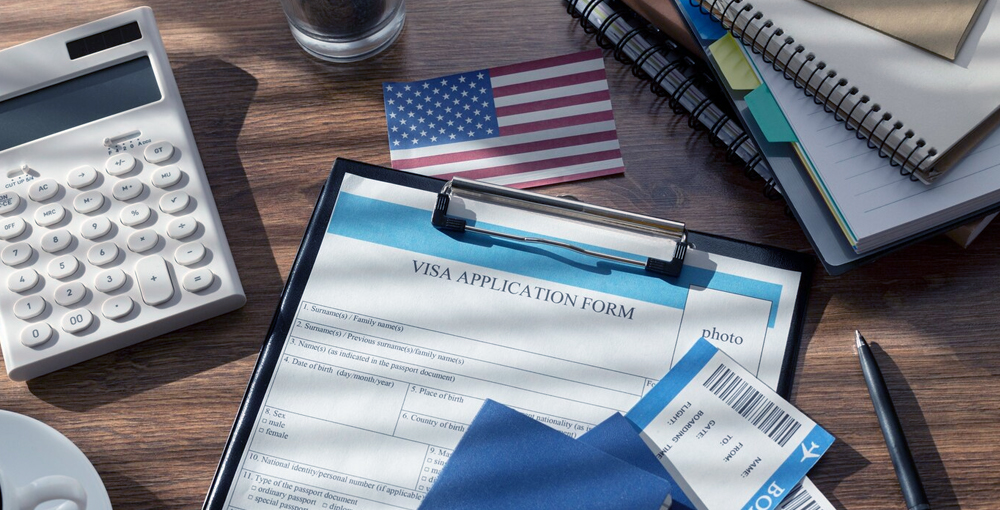
Introduction
If you’re a foreign investor or entrepreneur, looking for business opportunities in the United States, an E2 Visa can grant you that. But when individuals proceed towards the E2 Visa application process, a common question that arises in them is whether a work permit is necessary to get the E2 Visa. Here, we will provide a brief explanation of the E2 Visa requirements and clear up any misconceptions faced on this topic. So, continue reading to find out if a work permit is indeed necessary to pursue the E2 Visa.
What is the E2 Visa?
The non-immigrant E2 visa, also known as the Treaty Investor visa, permits foreign individuals to make investments in the U.S. economy. By pursuing this visa you can engage in business activities, including investing in a business or starting your own, and stay in the country for a more extended period. But first, you have to meet the E2 Visa eligibility criteria to go through the application process swiftly.
Who is eligible for the E2 Visa, and what are the key requirements?
To be eligible for the E2 visa, applicants must match specific requirements and confirm their will to invest a significant measure of capital into an authentic enterprise in the United States. Some critical aspects of the E2 Visa eligibility criteria are:
The applicant must be a citizen of a country with which the United States has a valid treaty of trade and navigation. Because the list of eligible nations is subject to change, it is critical to confirm the current treaty status with the United States Department of State.
The applicant must have previously invested or be in the process of investing a considerable amount of capital in a registered US firm. Even though there is no set minimum investment level, it should be big enough to assure the business's success.
A confirmation from the applicant is a must, that they will actively manage and direct the business in the United States. The applicant will not be qualified for the E2 Visa if he or she does not have a substantial part in the day-to-day operation of the firm or is a passive investor.
The business in which the applicant has invested must be a legitimate and operational firm. It should be a business or “for-profit” venture that can generate enough capital to sustain the applicant and their families.
The enterprise must not be a marginal one only providing minimal income to support the investor and their family. It must have the ability to ensure job opportunities for U.S. workers or consequentially contribute to the local economy.
The key aspects of E2 visa requirements are:
Once the applicant has passed all the E2 visa eligibility criteria, they must submit a comprehensive application to the U.S. Embassy or Consulate in their home country. The requirements for the E2 visa application process include:
The Online Nonimmigrant Visa Application, Form DS-160, must be completed and submitted by the applicant.
The applicant must submit Form DS-156E, the Treaty Trader Investor Application, detailing the business initiative, identifying the nature of the investment being made, and the source of capital.
Bank statements, financial statements, and investment contracts are instances of the documentation required to support the applicant's claim of considerable investment.
A complete business plan describing the business objectives, market evaluation, and financial predictions is required to illustrate the enterprise's feasibility and potential.
The applicant must demonstrate their skills and experience, as well as their capacity to lead and manage their assigned firm.
As part of the application procedure, a personal interview at the US Embassy or Consulate is usually necessary. The applicant must be ready to respond to questions about their investment and business plan.
How does the E2 Visa program facilitate entrepreneurs and investors?
The E2 visa benefits for entrepreneurs by simplifying the process to establish new enterprises and develop current ones in the United States.
Encourages employment development by active management of the enterprise, which results in employment opportunities for US workers.
The exchange of knowledge and cooperation among domestic and international entrepreneurs drives innovation and technical improvement.
Foreign capital infusion promotes economic development and diversity.
The initiative promotes collaboration by establishing international trade and investment connections.
Additional immigrant visa categories may be used by eligible investors to secure permanent residency.
Understanding Work Permits

Work permits, also known as Employment Authorization Documents (EAD), are essential for foreign citizens seeking to lawfully work in the United States. These licenses, issued by the United States Citizenship and Immigration Services (USCIS), provide temporary authority to work in the United States.
What is the purpose of work permits, and how do they relate to E2 Visas?
The main purpose of work permits is to govern and control the employment of foreign nationals in order to ensure that they contribute significantly to the US economy while abiding by current immigration regulations. Work permits ensures various important advantages, including:
Work permits allow people to work in the United States without breaching immigration laws.
Permit holders can offer their expertise and knowledge to the employment market in the United States, promoting economic development and diversity.
Work permits offer the holders financial security and freedom, allowing them to sustain themselves and their families.
Enhancing their careers and getting significant experience in various industries is a plus for work permit holders.
The E2 visa program complements work permits by focusing primarily to international entrepreneurs and investors. While work permits cover a larger range of job opportunities.
Work permits and E2 Visas are both important methods for allowing foreign individuals to contribute their talents, resources, and entrepreneurial spirit to the United States. While work permits allow for lawful employment in a variety of industries, the E2 Visa program provides a more specific pathway for entrepreneurs and investors to build and operate firms. Work permits and the E2 Visa program work together to enable foreign people to achieve their professional objectives in the U.S. by supporting economic development and innovation.
What are the main differences between work permits and E2 Visas?
To avoid misunderstanding, it is critical to distinguish between an E2 visa and a work permit. The E2 visa is not a work permit; it allows you to enter and stay in the United States for the sole purpose of running your investment business. As a result, if E2 visa holders want to work beyond the limits of their investment operations, they must get a separate work permit.
The nature and purpose of the E2 visa and work permit will be our primary concern. A work permit, also known as an Employment Authorization Document (EAD), allows foreign nationals to work legally in the United States for a particular period of time. Whereas the E2 visa, also known as the Treaty Investor Visa, is reserved for foreign entrepreneurs and investors from nations who have a treaty of trade and navigation with the United States. It is distinguished by its emphasis on boosting capital investments and active management of business enterprises in the United States.
The E2 visa eligibility criteria differ from the work permit requirements. The individual's underlying immigration status is critical in order to be qualified for a work permit. The E2 visa, on the other hand, is based on nationality and investment.
Furthermore, work permits are often provided for a set amount of time, which is frequently linked to the validity of the individual's underlying immigration status. Renewal may be available provided the individual remains eligible and satisfies the required criteria. And E2 visas are usually granted for a set length of time, generally up to five years, and may be renewed as long as the invested business meets the E2 visa conditions.
Work Permit Requirements for E2 Visa Holders
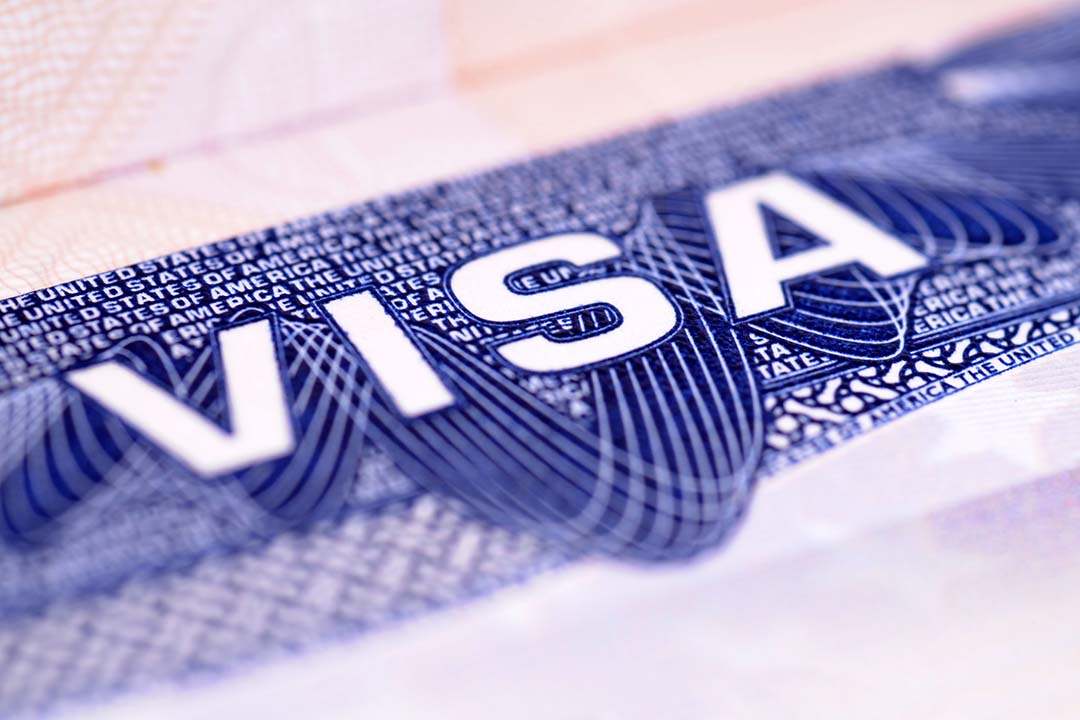
Acquiring an EAD opens up a world of possibilities for E2 visa holders. They can seek employment in any sector, with any employer, and in any role, without the need for a separate employment-based visa like the H-1B visa. Here, we will provide a comprehensive description of the Work permit process for E2 Visa holders, elucidating the eligibility criteria, requirements, and considerations.
E2 visa holders can easily apply for a work permit to work outside of their E2 firm. The possession of a valid E2 Visa is a must. However, holders must retain their E2 Visa status and follow the terms and conditions of their visa, which include the continued operation of the business and E2 Visa compliance with relevant laws and regulations.
How can E2 Visa holders apply for a work permit in different countries?
E2 visa holders must extensively understand and comprehend the host country's individual legislation and criteria. Each nation has its own immigration regulations that control work permits, and a thorough grasp is required to guarantee a successful application.
E2 Visa holders must determine if their E2 Visa status permits them to apply for a work permit in the nation of their choice.
Prepare a thorough collection of application documents that meet the standards of the host nation. In other words, E2 Visa status, valid identity, evidence of investment and active business management, financial papers, and any other documentation required by local immigration authorities.
Submit the work permit application to the host country's proper immigration authorities. This might include filling out application forms, paying fees, and supplying biometric information.
Obtaining a work visa in another country expands E2 Visa holders' job choices, allowing them to diversify their income sources and explore new business initiatives.
E2 Visa holders must ensure that acquiring a work visa and seeking employment in another country does not jeopardize their principal business enterprise or break any legal constraints imposed by their E2 Visa.
Using legal counsel who is knowledgeable about the host country's immigration regulations can substantially simplify the work permit application procedure. Professional guidance guarantees that local rules are followed and that the outcome is successful.
Which countries demand work permits for E2 Visa holders?
E2 visa holders who seek to pursue job options outside of their principal businesses sometimes confront various work permit restrictions in different countries. Compliance with these requirements is critical for E2 Visa holders seeking employment outside of their core business activities. Let's have a look at a thorough list of nations that require work licenses for E2 visa holders:
Canada: E2 visa holders who wish to work in Canada must normally get a work permit. Canadian immigration officials examine the anticipated employment and may seek proof of a job offer as well as a labor market impact study.
Australia: E2 visa holders are frequently required to apply for a work permit, known as a Temporary Skill Shortage (TSS) visa. This permit permits employment in particular occupations and must be sponsored by an authorized Australian company.
United Kingdom: E2 Visa holders who wish to work in the UK must get a work permit under the Points-Based System. The nature of the work and individual circumstances will determine the precise visa category and criteria.
New Zealand: E2 Visa holders who wish to work in New Zealand may be required to apply for a work visa, such as the Essential Skills Work Visa. This procedure entails presenting a legitimate offer of work as well as suitable credentials or experience.
Germany: E2 visa holders wishing to work in Germany must follow local restrictions and get the required work authorization. This frequently necessitates the sponsorship of an employer as well as the fulfillment of particular conditions.
France: E2 visa holders who want to work in France may need to apply for a work permit dependent on the job. The procedure includes employer sponsorship and job offer certification.
Japan: E2 Visa holders who want to work in Japan may need to apply for a work permit known as a Designated Activities Visa. This involves a job offer from a Japanese business as well as compliance with immigration laws.
Understanding the various work permit criteria in various countries is critical for E2 Visa holders looking to broaden their professional horizons. Navigating these requirements necessitates significant research, meticulous paperwork, and adherence to each country's immigration laws.
Exceptions and Exemptions
E2 Visa work permit exceptions and exemptions give foreign entrepreneurs and investors important flexibility by allowing them to participate in certain employment activities connected to their investments. Holders may maximize their business ventures, contribute to the US economy, and establish meaningful careers by recognizing and using these exceptions and work permit exemptions for E2 Visa holders.
While holders are entitled to various E2 Visa work permit exceptions and exemptions, it is critical that they exercise prudence and comply with the restrictions of their visa. Activities beyond the scope of E2 Visa benefits may nevertheless need additional work authorization.
Obtaining legal advice A knowledgeable immigration attorney can help you through the complexity of work permit exceptions and exemptions for E2 Visa holders. Professional assistance ensures that holders completely grasp their rights, duties, and career options while remaining compliant with E2 Visa work permit regulations.
Are there any exceptions or situations where E2 Visa holders don't need a work permit?
E2 Visa holders are often permitted to work for the company in which they have invested without the work permit requirement for a separate E2 Visa work authorization. Their E2 Visa allows them to participate actively in the day-to-day operations, decision-making, and management of the firm.
Spouses and unmarried children under the age of 21 with E2 Dependent Visas (E2D) may work in the United States. They can apply for E2 Visa work authorization, either upon arrival or throughout their stay.
In addition, E2 Visa holders may participate in employment outside of their core investment operations without getting a separate work visa in exceptional instances when rapid action is required to avert major financial loss.
What are the potential exemptions from work permit requirements?
Let's look at some work permit exemptions for E2 Visa holders:
There is no need for treaty investors to get separate E2 Visa work authorization. E2 Visa holders are not needed to acquire an Employment Authorization Document (EAD) to participate in employment activities linked to their invested firm as treaty investors.
Furthermore, E2 Visa holders who are engaged in trade or commerce between the United States and a treaty country may participate in related activities without the requirement for a separate work visa. Furthermore, participation in trade fairs, exhibits, or similar events showcasing items or services relevant to the E2 investment may not need the acquisition of a second work visa.
A professional advisor or consultant to companies or persons in the United States may not always require a separate work visa.
Importance of Compliance
Compliance with work permit restrictions is not just a legal requirement; it is also an essential component of responsible entrepreneurship and investment as an E2 Visa holder. Understanding and complying to work permit laws is critical for E2 Visa holders in order to secure legal employment, keep their visa status, and contribute positively to the US economy.
Why is it crucial to comply with work permit regulations as an E2 Visa holder?
Along with the rights offered comes the obligation to strictly follow E2 visa work permit restrictions. Let us examine the importance of adhering to work permit restrictions as an E2 visa holder, emphasizing the legal, professional, and economic repercussions of such adherence.
E2 Visa and work permit legality: Following work permit rules are critical to keeping legal standing in the United States. Unauthorized employment or job activities beyond the limits of the E2 Visa privileges may result in visa breaches, significant fines, and possibly deportation.
Fulfilling Visa Requirements: The E2 Visa was created to promote foreign investment and active management of firms. E2 visa holders who follow E2 Visa work permit regulations fulfill the underlying requirements of their visa, contributing to the program's goals and demonstrating their commitment to the US economy.
Safeguarding Business Enterprise: E2 Visa holders who concentrate on their approved business operations support the stability and success of their investment firms. Compliance with work permit laws enables entrepreneurs to devote their talents and efforts to the growth of their firms, which benefits both them and the local community.
Positive Economic Impact: E2 Visa holders contribute to economic growth and job creation in the United States by conforming to work permit restrictions.
Building a Solid Reputation: Complying with work permit laws promotes E2 Visa holders as responsible and law-abiding participants in the U.S. corporate sector. This reputation may make meetings with E2 Visa work permit regulations, business partners, and possible investors go more smoothly.
Future prospects: E2 Visa holders who emphasize compliance with work permit restrictions may be able to pursue future prospects such as permanent residency or additional investment initiatives. A solid track record of adherence increases credibility and eligibility for long-term goals.
What are the possible consequences of not obtaining a required work permit?
Navigating the complexities of work permit requirements is an important component of international employment for foreign nationals, especially those with specialist visas like the E2 Visa. Failure to get a needed work permit can have major ramifications for one's legal standing, professional reputation, and long-term aspirations.
Engaging in employment activities without the necessary work authorization violates immigration rules. This can result in legal consequences such as fines, visa cancellation, and perhaps deportation. Furthermore, failure to get a mandatory work permit may compromise the validity of the underlying visa, such as the E2 Visa. Noncompliance may be viewed by immigration officials as a violation of the visa's terms and conditions, potentially resulting in the loss of visa privileges and deportation.
Failure to follow work permit laws might harm a person's professional reputation. Furthermore, working without the required work permission limits job prospects within the extent of the E2 Visa investment.
Neglecting work permit criteria for E2 Visa holders might have a negative influence on the success of the invested firm. Unauthorized employment or deviation from the original purpose of the visa may cause operational interruptions, hurting profitability and sustainability. Furthermore, a history of noncompliance with work permits might hamper future immigration initiatives such as applying for other visa categories, obtaining permanent residency, or investigating new investment prospects.
Noncompliance with work permit restrictions may subject people and corporations to legal responsibilities, such as government agency legal proceedings, penalties, and potential civil lawsuits. And such transgressions can have a substantial impact on personal and professional plans, resulting in unforeseen challenges for individuals and their families.
How to Apply for a Work Permit with E2 Visa

To begin, E2 visa holders applying for a work permit must submit Form I-765, Application for Employment Authorization. This form can be sent to the United States Citizenship and Immigration Services (USCIS). Along with the form, candidates must provide supporting papers verifying their eligibility, such as a copy of their E2 visa, proof of considerable investment, and further E2 Visa work permit documentation demonstrating active management of the business.
What are the step-by-step procedures for obtaining a work permit alongside an E2 Visa?
Here’s a step-by-step guide outlining the procedures for obtaining a work permit alongside an E2 Visa:
Step 1: Determine Your Eligibility
Before beginning the work permit application procedure, be sure you satisfy the qualifying requirements. This involves having a valid E2 Visa, actively managing the investment firm, and adhering to E2 Visa criteria.
Step 2: Investigate and Choose a Work Permit Category
Determine the proper work permit category for your proposed employment activity. You may apply for several work permit categories, such as an Employment Authorization Document (EAD) or other appropriate permissions, depending on your credentials, job offer, and other considerations.
Step 3: Gather Documentation
Gather the papers needed to support your work permit application. A completed application form (such as Form I-765), verification of your valid E2 Visa, evidence of active involvement and management in your firm, financial paperwork, and any other items needed by US Citizenship and Immigration Services (USCIS) is normally required.
Step 4: Fill out the Application Form
Fill out the relevant application form with care, ensuring correctness and completeness. Before submitting the form, double-check that all information is up to date and correct.
Step 5: Pay Application Fees
Pay the application costs as specified by USCIS. Fee amounts may differ based on the kind of work permit and current USCIS standards.
Step 6: Send your application to USCIS.
Submit to USCIS your completed application form, accompanying papers, and payment. Follow USCIS directions for submission methods, addresses, and any extra criteria.
Step 7: Attend a Biometric Appointment
Attend a biometric appointment if necessary to give fingerprints, photos, and other biometric information. If this step is necessary for your work permit application, USCIS will tell you.
Step 8: Await Processing
Wait for USCIS processing after filing your application and attending any needed appointments. Because processing timeframes vary depending on workload and other factors, patience is required throughout this stage.
Step 9: Obtain Approval for a Work Permit
You will be issued an Employment Authorization Document (EAD) or similar equivalent work permit after your work permit application is accepted.
Step 10: Begin Authorized Employment
With your approved work permit in hand, you can now engage in allowed job activities. Check that your job is in accordance with the requirements and limitations mentioned in your work permit.
Where can E2 Visa holders find official government resources for work permit applications?
When embarking on the journey of obtaining a work permit, it’s important to access official government E2 Visa work permit resources to facilitate the work permit process for E2 Visa holders. Here we have highlighted the key official government resources where E2 visa holders can find valuable guidance and assistance for their work permit applications.
U.S. Citizenship and Immigration Services (USCIS) (www.uscis.gov)
Department of State (DOS) Consular Offices (www.state.gov)
Local U.S. Embassy or Consulate Websites
Legal Assistance: E2 Visa holders seeking personalized guidance can consider consulting legal professionals specializing in immigration law, such as Trip Law. We are experienced in E2 Visa matters and can offer tailored advice, review application materials, and provide insights to ensure accurate and compliant submissions.
Common Challenges and Solutions
Obtaining a work permit is an important step for international entrepreneurs and investors interested in exploring varied job prospects in the United States. While this procedure allows E2 Visa holders to widen their professional horizons, it also presents certain problems. So, let's look at some of the most common E2 Visa work permit challenges and how to overcome them.
What are the common challenges faced during the work permit application process?
Complex E2 Visa work permit documentation requirements: Work permit applications may demand a thorough collection of papers to verify eligibility and fulfill regulatory norms. For E2 visa holders, navigating the paperwork might be difficult.
Navigating Visa Categories: Determining the proper work permit category based on specific occupational activities can be difficult, especially when many visa possibilities are available.
Biometric Appointments: Some work permit applications involve biometric appointments, which can be difficult to arrange, particularly for people who live far away from USCIS offices.
Delays in processing: Work permit processing timeframes vary, and delays may occur due to causes outside of an applicant's control, affecting employment plans.
Compliance with E2 Visa Terms: E2 Visa holders must ensure that their work permit activities are consistent with the terms of their visa and do not jeopardize their primary investment goals.
What are some practical solutions to overcome these challenges?
Now, here are the E2 Visa work permit solutions to the challenges mentioned above:
Solution for Complex E2 Visa work permit documentation requirements: E2 visa holders should carefully research the official rules supplied by US Citizenship and Immigration Services (USCIS) and follow document checklists. Seeking legal assistance or speaking with skilled specialists can help guarantee that your submission is correct and thorough.
Solution for Navigating Visa Categories: Conduct an extensive study to choose the most appropriate work permit type that matches their career goals. Legal counsel can give clarity and assist in selecting the appropriate visa classification.
Solution for Biometric Appointments: Plan ahead for biometric appointments, booking them on time and considering travel plans if necessary. Using the online tools and information given by USCIS can help with appointment scheduling.
Solution for Delays in processing: Plan ahead of time for probable delays. Staying up to current on processing timelines via USCIS updates and getting legal counsel if delays become excessive might help control expectations.
Solution for Compliance with E2 Visa Terms: Carefully evaluate job possibilities to ensure they stay consistent with the goal of their E2 Visa. Legal counsel can help you strike a balance between work permit activities and investment requirements.
Conclusion
While the E2 visa offers an exceptional avenue for foreign investors and entrepreneurs to pursue business ventures in the United States, it does not inherently grant permission to work outside of the investment enterprise. By securing a Work Permit for E2 visa, holders can unlock a wealth of possibilities and maximize their potential for success in both business and career.
Seeking professional advice is essential for a successful E2 Visa work permit journey, given the intricate application process. A legal specialist like the Trip Law can offer invaluable insights to navigate complexities, ensuring accurate submissions and minimizing errors or delays. So, if you have additional inquiries or feedback please leave them in the comments section. And feel free to contact us if you require any further legal assistance.

Thinking about going for the H1B visa even before tossing that graduation cap? You're onto something! While it's a bit of a struggle, the good news is, yes, you can apply for an H1B visa before you officially graduate.
If you're ready to kickstart your career journey while you’re on the way to graduation, go for it – that H1B visa could be in your sights sooner than you think.
Why Consider Applying for H1B Before Graduation?
Applying for that H1B visa before graduation might just be the fast pass to getting your career in gear. But here’s the catch: you'll need to be in your final stages of studies and about to conclude your degree.
Plus, you'll need to prove that you're all set to graduate and get that diploma real soon. Your potential employer will have to support you in this process, and they can help you build a layout for getting that H1B visa right after you cross the academic gate.
How Can Applying Early Propel Your Career Advancement as an International Student?
As an international student, the idea of grabbing early opportunities for your career can be the golden ticket. Trying for internships, jobs, or pursuing an H1B visa before your graduation give a boost in your career life.
This way you're showing potential employers that you're not just academically sharp, but you've got that go-and-get-it attitude too. And trust us, employers are very impressed with such an attitude.
So, whether you're targeting the fastest lane to career success or just want to stand out in the job market crowd, applying early as an international student can totally give your career that extra vitality.
Is a Smooth Transition from Student to Professional Possible by Applying for H1B Before Graduation?
The transition from student life to the professional world can be as daunting as exciting it is. Well, the common question you might face is whether applying for an H1B visa before graduation makes the path smoother or not.
The H1B visa lets foreign workers engage in specialized employment in the United States and is often targeted by international students. Honestly, the idea of securing a spot in career life sounds tempting, but you should weigh out the pros and cons first.

Trying out for the H1B visa while your graduation cap is still warm can offer advantages like a head start in the job hunt and likely a sponsorship from the employer. However, it’s best to keep in mind the factors like program completion requirements, the availability of job opportunities, and of course, the complications of the application process.
Balancing up between grabbing early opportunities and ensuring a successful transition needs careful analysis, also needs a good knowledge of the legal and professional aspects.
Are You Eligible to Apply for an H1B Visa Before Graduation?
Curiosity about your eligibility to apply for an H1B visa is completely understandable. Now, while the idea of jumping into the job market straight out of the academic gate might seem tempting, there are a few factors you need to consider.
First off, to be eligible for an H1B visa it’s not just about being a fresh graduate, but having a job lined up that matches your educational background. Additionally, your program must be completed by the time your H1B petition is submitted.
And you should also keep in mind that the H1B application process can be a bit intricate. So, while the idea of diving headfirst into the professional realm right out of school sounds enticing, take a moment to ensure your eligibility and understand the nuances.
What Academic Milestones (GPA, Credit Hours, Coursework) Must You Achieve?
Let’s break down the requirements of academic achievements and their connection to the elusive H1B visa. While there's no magic GPA number or a specific credit hour count etched in stone, your academic performance certainly plays a role in the H1B journey.
Generally, you'll want to maintain a solid GPA, showcasing your dedication and aptitude in your field. The courses you take also matter; they should align with your intended H1B job, reflecting your expertise.
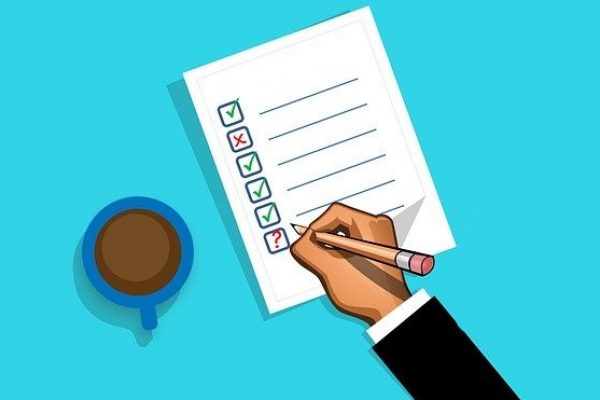
Now, about those credit hours – it's not about racking up numbers but ensuring your coursework is comprehensive and substantial.
Remember, when your prospective employer files for your H1B, they'll need to prove that you possess the necessary skills and knowledge for the job, and your academic milestones are like breadcrumbs leading to that.
So, while there's no H1B golden ticket hidden in your transcripts, acing your academics certainly lays a strong foundation for your professional voyage.
How Do Internships and Practical Training Enhance Your H1B Eligibility?
The internships and practical training are literally your H1B eligibility boosters. Let's break it down. Hands-on experiences like internships and practical training give you a chance to dive headfirst into the real deal.
Plus, they let you build a network of industry connections, which is a big plus in the professional realm.
When it comes to H1B, having these experiences in your folder shows potential employers that you're not just a fresh graduate but someone who's already tasted the practical challenges of the field. It's like you're handing them a sneak peek of what you can bring to the table.
So, think of internships and practical training as the secret sauce that adds that extra twist to your H1B eligibility.
How to Navigate the H1B Application Process Before Graduation?
Let’s map out the plan for navigating the H1B application process like a pro. First things first, timing is everything. Make sure your program is set to complete before your potential H1B employer sends in that application.
Next, land that job offer. Yes, you'll need a U.S. employer who's really impressed with your skills and ready to sponsor you. Then you have to get ready for the paperwork. You and your employer will be wading through forms, petitions, and documents.

And make sure your field of study aligns with the H1B job – it's like making sure your outfit matches the occasion.
Lastly, patience is your virtue. The process can be a bit like waiting with a mix of excitement and anticipation. So, there you have it – a crash course for the H1B application process.
Where and How Do You Begin the Search for H1B Sponsorship?
When you’re on the H1B sponsorship hunt, the first thing to look at is the job market. Scope out companies in your field that often hire international talent. Job search platforms, company websites, and good old networking can also lead you to potential sponsors.
Another way to get a hold of sponsorship is to attend career fairs, and industry events - connect with professionals in your field. And don't be shy to slide into those LinkedIn DMs – you'd be surprised how a simple virtual "hello" can lead to a sponsor.
Then here’s the golden ticket – research. Dive deep into companies you're interested in, and know their needs, challenges, and how your skills align. It's like tailoring your resume to steal the spotlight.
Lastly, when you spot your potential sponsor, approach them with a winning tone, and sell yourself as the superhero they never thought they needed.
What Strategies Ensure an Outstanding Resume and Successful Interview?
Ready to steer up a resume that reeks of "hire me" and ace that interview like a pro? Let's get into some winning strategies. Build up a power-packed resume of your skills - tailor it to the job, highlighting relevant skills, experiences, and accomplishments.
Now, take a good prep for your interview. Research the company, know their values, products, and recent news. Practice your answers to common interview questions, but also be ready for curveballs.
Show enthusiasm, ask smart questions, and weave in your experiences to show how you're the perfect fit.
What Steps are Involved in Filing the H1B Petition Before Graduation?
Filing that H1B application before you get your hands on the diploma might sound like a risky move, but fear not – we've got your back with a step-by-step breakdown. Here are the following:
Make sure you nail that job offer from a U.S. employer who's willing to be your H1B sponsor.
Then, your employer prepares the required forms, including the I-129 Petition for Nonimmigrant Worker.
Keep a check on supporting documents like your educational credentials, job description, and more.
Then the petition gets submitted to the U.S. Citizenship and Immigration Services (USCIS). They'll review, process, and hopefully approve your petition.
If all goes well, you’ll receive a Notice of Approval.
Now, you can apply for your H1B visa at a U.S. consulate in your home country. And wait for the approval.
Once approved, get ready to embark on your professional adventure.
What Challenges Might Arise When Applying for H1B Before Graduation?
After clearing out everything in the process, let’s take a look at the challenges. Initially, timing can be a tricky turn, as your program needs to be on the brink of completion. Moreover, getting a job offer from a U.S. employer eager to sponsor you – is not exactly a walk in the park.
Then comes the paperwork time – a series of forms, documents, and petitions that might make your head spin.
And let's not forget the uncertainty factor – H1B visa slots are limited, and the competition can be fierce. So, brace yourself for the waiting game.
Overall, the H1B visa before graduation might sound like a shortcut to professional life, but tackling these challenges head-on with a mix of strategy and perseverance is the actual game.
What Legal Hurdles Could International Students Face in the Pre-Graduation Phase?
Going through the pre-graduation phase as an international student eyeing the H1B visa can be like navigating a complex maze. Like ant legal issues can pop up, adding a touch of intrigue to the process.
Maintaining your student status is crucial. Falling out of status, even unintentionally, could lead to a slew of issues, like potential visa denials or re-entry problems. And if your program completion date doesn't align with your H1B petition, it's like trying to catch a train that's already left the station.
Then there's the tricky balance of coursework and employment – you want to make sure you're not overstepping any boundaries set by your student visa rules.
And let's not forget about the Optional Practical Training (OPT) period – while it's a valuable chance to gain experience, there are specific regulations to follow, or you could risk jeopardizing your future H1B prospects.
So, the journey might have its twists and turns, but understanding and navigating these legal nuances can ensure a smoother transition from student to professional on your H1B quest.
How Do You Adapt to Job Market Dynamics and Economic Variables?
Lastly, comes riding the waves of the ever-changing job market – a skill every aspiring professional should master. Here, flexibility is your anchor. The job market can shift like the wind, and being open to adjusting your sails – whether it's learning new skills or exploring different industries – keeps you agile.
Then comes the part of networking, it's like building a fleet of supportive allies who can give wise advice about upcoming opportunities or even pull you out of rough waters.

Staying updated on industry trends and economic indicators are also necessary, it helps you anticipate changes and plan your course accordingly.
And remember, adapting to job market dynamics and economic variables is about staying proactive, strategic, and ready to seize new horizons.
Conclusion:
In the grand quest for an applying for H1B visa before graduation, the path is both promising and nuanced. While the idea of an early head start in the professional sector is scary, it's crucial to tread carefully.
Eligibility hinges on factors like program completion, job offers, and legal requirements. The journey entails a blend of timing, networking, paperwork finesse, and an unwavering spirit.
So, while the possibility is real, it demands a calculated approach - one that requires both preparation and a willingness to adapt to the twists and turns that the H1B voyage may bring.
And for any professional assistance, you need to apply for the H1B visa before graduation, Trip Law can offer invaluable insights to figure out the complications, ensuring accurate submission and minimizing errors and delays.
If you have additional inquiries or feedback please leave them in the comments section. And feel free to reach out to us if you require any further legal assistance.
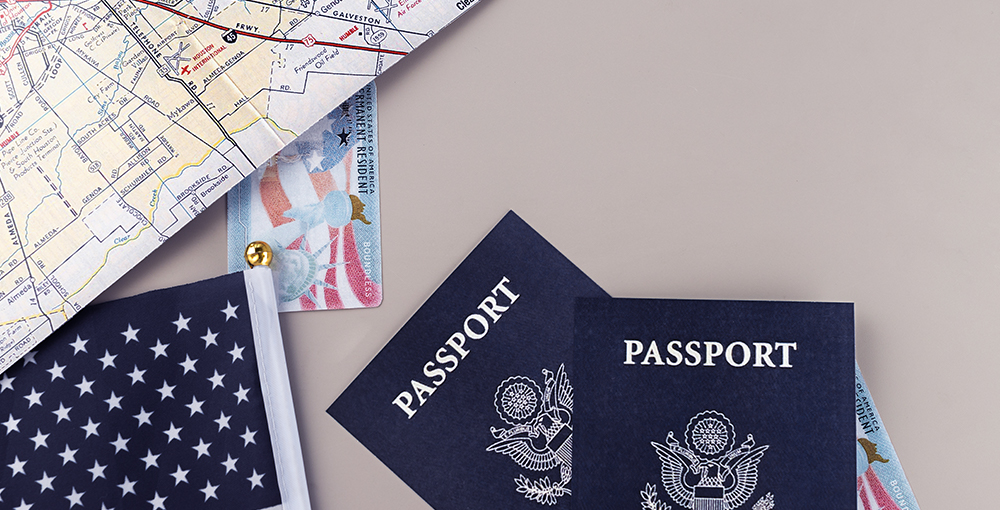
We assume you are a great student, full of passion and goals, who is studying in the United States on an F1 visa. However, as time passes, you discover that your true interest lies outside of the classroom, in the world of business. You have a fantastic business concept, however, there is one catch: your visa status.
Don't let your F1 visa stop you from pursuing your business goals. It's time to switch to an E2 visa and make your dream a reality.
In this blog post, we will walk you through the entire process of changing your F1 visa to an E2 visa. We'll go over the specific requirements for this visa, the application process, and tips and advice to help you succeed. If you are a student looking for a career change, an entrepreneur trying to start a business or invest in the US, or if you are inquisitive about something else, this blog post is undoubtedly for you.
Keep reading to find out everything you need to know about changing your status from F1 to E2 visa.
Recognizing the F1 and E2 visas
We realize that you've come to study, and that you, like the vast majority of international students in the United States, want to take advantage of every opportunity that this lovely country has to offer. However, as many others have experienced while studying abroad, the F1 visa comes with a slew of inconvenient restrictions. As a result, you may feel restricted in your capacity to work off campus, launch a business, or pursue other professional options. The E2 visa has come as a messiah in the lives of thousands of students by removing the confines of F1 visa regulations.
For international students and entrepreneurs, the E2 visa is a real game-changer. You can create your own business or invest in an existing one with an E2 visa, giving you the liberty and flexibility to pursue your ideas. You can run and manage your business, hire staff, and even relocate your family to the United States. The E2 visa is your ticket to a better future and greater prospects.
However, switching from an F1 to an E2 visa is a complicated process that may necessitate a large investment. Nevertheless, if you are very committed to starting or investing in a business in the United States, this visa is well worth it. The E2 visa opens up a world of opportunities for you, and with the proper preparation and direction, you may significantly improve your chances of success.
Changing requirements from F1 to E2 visa
Changing your status from an F1 to an E2 visa can be a fantastic opportunity as well as a great adventure, but you must understand the procedures and be well prepared. As we mentioned earlier, the E2 visa process can be complicated, so having a clear knowledge of the requirements and what is expected of you is undoubtedly essential. Here are some crucial procedures to follow in order to change your F1 visa to an E2 visa.
Investment and the quantity: Making an appropriate investment is the first step in becoming eligible to apply for an E2 visa. This investment could be used to start a new business or grow an existing one. However, there is one condition: the amount of investment in a new business should be sufficient to ensure that your business process operates smoothly, and even better if it is commercially demanding.
Ownership of a business: Suppose you have launched a new business; if you are the sole owner, that is preferable, but if it is a partnership, you must own at least 50% of it. If, on the other hand, you are investing in an existing business rather than starting one, you must have a controlling interest.
Evidence of funds: Of course, you must have sufficient cash to start and sustain your business, therefore, you have to verify your ability to cover all costs, from initial investment to continuous operating expenses.
Business strategy: To qualify for an E2 visa, you must have a clear and effective business plan. This plan will include information about your company, the products and services it provides, and a marketing strategy.
Treaty country: At this point, the scenario becomes a bit more complicated, E2 visas are only issued to citizens of countries with which the United States has commercial and navigational agreements. It is therefore important to confirm whether such an agreement was made with your country.
So you now have a good grasp of all the steps you must take and obligations you must fulfill before switching your F1 visa to an E2 visa. We hope you understand that this is not a simple task, and you must always be prepared to seek professional help at any time.
Changing process from F1 to E2 visa
Let us now proceed to the site of detailed answers to your long-awaited questions, where your every whim will be catered to. Once you've completed all of the earlier steps, such as a business plan, sufficient finances, and a contractual country certificate, you may apply for an E2 visa in a cheerful spirit.
But where do you even begin? That is the most important issue, besides being the most critical stage. Don't worry, we'll walk you through the visa application process in such a way that it will be a relaxing and enticing journey rather than a stressful one. So, keep your cool and read on to learn how to change your status from F1 to an E2 visa:
Consult an immigration lawyer: The first step in securing an E2 visa is to select an immigration attorney. Because an immigration lawyer can help you understand what you need to change your visa, provide adequate guidance during the application process, and prepare the necessary documents. In other words, if you have an experienced immigration attorney, you have already won half the battle.
Prepare a detailed business plan: It is essential to prepare a detailed business plan. Why? Because if you show this when applying for an E2 visa, the authorities will accept you as a considerable applicant. So, understand that a good business plan will serve as a roadmap on this journey.
Gather required documents: Now it's time to settle the issue of collecting important documents. keep your proof of citizenship, proof of investment funds i.e. correspondence or transaction records and detailed business plan documents in order so that they can be submitted on time without any hindrance.
Submit the E2 visa application: Once you've gathered all of your paperwork, you may now submit your E2 visa application. Fill out all of the forms carefully and make sure that each of the relevant papers are submitted.
Wait for the decision: The hours spent waiting for something are always painful, but it has also been shown that the reward of this suffering is exceedingly sweet. So, be patient and positive as you await the outcome of your submitted E2 visa application. Also, keep in mind that processing timelines can vary, so it's critical to stay informed and up to date on the status of your application.
Get your E2 visa: Finally, the long-awaited occasion has arrived, and you have received your ticket to pursue your dream. Congratulations, as an E2 visa holder, you are now allowed to conduct business or invest in the United States.
Naturally, the E2 visa application process can be intimidating, but we've also promised that we'll make the process as simple as possible. So, take a deep breath, put on your entrepreneur hat, and prepare for an exciting trip towards an E2 visa using the instructions we've provided. Remember that if you have a clear plan, an unyielding spirit, and good guidance, you will succeed!
Many people comprehend better by seeing than by reading; we did not disappoint them either; Please come here to witness a true story of whether you can change status from F1 to E2 visa.
Finale
We hope this blog post has provided you with valuable insights and tools to better understand the process. Whether you are a student, a business owner, or an entrepreneur, we hope this information has provided you with support and inspiration.
Spread your wings and fly on the way to fulfilling your dreams, the endless sky awaits you.

Being denied Form I-485 can be a hard blow for anyone. Those who aspire to permanent residency in the United States, in particular, may feel defeated and uncertain about their future. The road to becoming a permanent resident as a foreigner has never been easy, as it can be filled with various legal twists and turns, but a 485 denial can leave you feeling as if all of your efforts have been in vain and that your journey has come to an end. But hold on a second, it's not over yet!
If your Form I-485 or permanent residence application is denied, you should leave the United States as soon as possible, unless you qualify for another legal status. But, as we said before, this is not the end of the story .
We often overlook a very subtle truth: there is always a bright side to every hardship and dark situation; the I-485 denial is no exception. The key is to understand why you want to stay in the United States and to look into your options. With the right information and thorough guidance, you can forge a new path toward your dream of becoming a permanent resident.
In this blog post, we will direct you in the right way for accurate information and comprehensive guidance, walk you through the maze of legal paradoxes, and help you discover new paths to success in becoming a permanent resident. So buckle up and let’s get going.
Factors that Affect Your Stay After 485 Denial
Once the 485 form is rejected, it is impossible to say how long you can stay in the US. However, after the form is dismissed, many aspects will influence how long you will be able to sustain your future dreams. Here, we are going to discuss in detail the factors that will help you grasp the whole scenario:
Visa Category: The period of time you have after your Form 485 is denied is based on the type of visa you have. To be more specific, if you hold a temporary visa, you must leave the United States immediately. However, if your visa is valid as a non-immigrant, you may have time to apply and explore other available options to resolve this situation while still living in the United States.
Status of Appeal: Your stay in the United States may be extended if you decide to appeal the 485 denial or file a motion to reopen. Because the status of your appeal or motion will have a large impact on your ability to stay. In most cases, an appeal or motion can result in a stay of removal, allowing you to remain in the country while your case is being settled.
Unlawful Presence: If you continue to live in the United States after your visa has expired, you may be considered unlawfully present in the country, which can have serious consequences for your immigration status. The more time you stay in the US after a 485 denial, the longer you will be considered to be living illegally, potentially making future returns more difficult.
It is very important for you to understand all the factors mentioned above. Because gathering accurate information is the most important weapon in a legal battle. Knowing how long you can stay in the United States in the event of a 485 denial will affect your stay. You can determine the best solution to this problem and consider alternative options based on this information.
Options for Staying in the US After 485 Denial
As we previously stated, there is always a silver lining to every cloud, so even if your 485 application is denied, you still have a number of options that will not derail your dream of becoming a permanent resident. Following a form rejection, confirm your visa type and try to follow our recommended routes. Here is a detailed breakdown of all the options available to you.
Request for a Stay Extension: If your non-immigrant visa is still valid, all is not lost. In such cases, you can apply to extend your stay in the United States and look into other possibilities. An appeal or motion to reopen is one of the most effective of these approaches.
File an appeal: If you believe that the decision on the denied 485 application was unfair, you have the right to file an appeal with the Board of Immigration Appeals (BIA). The BIA will thoroughly review your application and arrive at a conclusion in this regard. However, the concern is that this decision could go either way, supporting your form of denial or ruling in your favor.
Motion to Reopen: You may be able to file a motion to reconsider your petition with US Citizenship and Immigration Services (USCIS) if you have evidence or information that could influence the decision on your denied 485 petition. The authority will re-examine your new evidence and may re-determine your case.
Change of Status: Do not give up if your visa is temporary or non-immigrant and all attempts have failed. If you are eligible for another type of visa, you can change your status to one that allows you to stay in the United States. For example, if you are married to a US citizen, you may be eligible for a K-3 Spouse Visa.
It is your obligation to fully comprehend the criteria and incentives of these options. Then, carefully consider which of these alternatives is best for you given the circumstances. In this case, approaching an immigration lawyer would be the wisest decision because they can easily provide you with valuable guidance and assistance on viable options.
In the current economic climate, having the opportunity to consult with a lawyer for free or at a low cost would be the icing on the cake, so if you are in financial distress, “How to Contact an Immigration Lawyer for Free” is a must-read.
Consequences of Overstaying Following a 485 Denial
If your Form 485 is denied, you will undoubtedly need to spend more time in the United States attempting to resolve this issue, although you have already realized that it will not be easy. As a result, it is vital to be aware of the potential consequences of overstaying. Overstaying can have serious and long-term consequences for your immigration status, including legal complications. To keep yourself safe, it is critical to understand the risks and take the necessary precautions to avoid overstaying. We have gone over them in depth here:
Bars to Admissibility: Depending on how much time you overstay after the 485 denial, you could face a penalty that could bar you from permanent residence for three to ten years. This bar may prevent you from returning to the US for an extended period of time. As a result, your plans may be thrown off and you may experience significant inconvenience.
Deportation: After the form is denied, you may face removal proceedings for overstaying in the United States, which could result in your deportation from the country. The consequences can be heartbreaking and difficult, such as separation from loved ones, loss of employment, and finally having to struggle with resettlement in another country.
Criminal Consequences: Overstaying in the United States after denial is illegal and thus a crime. As a result, you could face additional penalties such as imprisonment and fines, which will be stated in your personal book as a criminal record. This can have long-term implications for your employment and immigration prospects.
As we previously stated, consulting an immigration lawyer is the best way to protect yourself from this maze of legal complications. We have chosen an immigration lawyer with expertise in all matters of immigration, particularly 485 denials, “Hardam Tripathi," who will provide you with an oasis in this denial desert and stand by you like a friend in your time of need.
Conclusion
You can increase your chances of settling in the US by taking precautions to avoid overstaying after a 485 denial and carefully considering your options. In such cases, you should think about hiring an experienced immigration lawyer. An attorney can guide you through the complicated immigration system and provide valuable advice and support throughout the process. With the right assistance and guidance, you can proceed with confidence and achieve your long-held dream of obtaining permanent residence in the United States.
We hope we were able to provide you with all of the resources you required to address any concerns about how long you can stay after a 485 denial. Comment on how far you've come in your quest to solve this problem, and share our post with anyone else who is experiencing the same issue.

While immigration is a complicated and intimidating process, rest assured that you are not alone on this journey. Immigration laws and regulations may appear to you to be a maze, so it is safe to say that a guide is required to navigate this puzzle. A guide who is knowledgeable, experienced, and insightful about immigration law.
The biggest impediment we face in hiring a lawyer is a limited budget, which feels like being stuck in a desert where you can't find an oasis anywhere around. But suppose that despite being trapped in the desert, the oasis was found without any inconvenience at all, wouldn't that be wonderful ? There are a plethora of organizations that will find you an oasis in the immigration desert, i.e., a skilled attorney, for free or a nominal fee.
We will take you on a journey to find a skilled and experienced lawyer for free or at a low cost in this blog post. We'll be your go-to resource, directing you to pro bono opportunities provided by legal aid organizations, nonprofits, government-funded legal centers, and private law firms. You will not have much trouble with the immigration process if you have the right guide by your side.
Free resources for locating an immigration lawyer
Finding the right legal representation is one of the most important steps in the immigration process. Hiring a skilled immigration attorney becomes one of the barriers for many individuals and families simply due to cost. The good news is that there are numerous resources available to assist you in tracking down an immigration attorney for free or at a reasonable price.
Non-profit organizations: Many legal aid and non-profit organizations offer legal assistance to individuals or families who cannot afford to hire a private attorney. These firms are frequently accompanied by immigration attorneys who assist people with immigration issues. For example, applying for a green card, seeking refuge, or fighting deportation, among other things. The most convenient way to locate such an organization in your area or within your reach is to conduct an online search and contact the local bar association.
Pro bono programs: Many private law firms provide legal pro bono services, which means they occasionally provide legal services to people who cannot afford to hire their own lawyers. These programs are usually run by individual lawyers or groups of lawyers who are dedicated to fighting for justice in any situation. Contact your local bar association or individual law firms to find a pro bono program near you
Government-funded legal clinics: These law clinics are mostly run by law schools or non-profit organizations and are funded by the government. These clinics are always staffed by practicing immigration attorneys and provide all related services to those for whom budget is a major constraint. Finding this type of organization requires extensive online research as well as the assistance of local bar associations.
Although these resources are extremely valuable, they do have some limitations, such as high demand, limited availability, and a lack of specific skills. However, they are a really great place to start, not just for navigating the immigration process but also for the legal steps you need to take to hire a proficient legal counsel.
How to get ready for your consultation with an immigration lawyer
People are social beings; therefore, if you want to live in society and get along with everyone, can any important decision be made on the spur of the moment without consulting those closest to you? Absolutely not. Consider your lawyer to be a close friend; consulting with an immigration lawyer is a crucial step in your journey. As a result, it is vital to properly prepare before starting consultation with your attorney. Here are some helpful hints to consider before scheduling a consultation:
Gather relevant documents: Before beginning the consultation, gather any relevant documents such as a passport, visa, or other valuable files. These documents will provide your lawyer with a clear understanding of your case, allowing them to provide you with relevant advice.
Make a list of questions: Make a list of questions you need to ask your lawyer before starting the consultation. As a result, both of you will waste much less time and you will get the information you need much faster. If you don't know what questions to start with, we'll give you a headstart, ask them what options are available to resolve your immigration case, the likelihood of success, how long it will take to settle, and so on.
Be prepared to discuss your case: inform your attorney about your specific immigration case and any concerns you may have surrounding it. The upside should be that your lawyer will then be fully aware of your situation and they'll be able to provide you with important legal advice.
Be honest: Remember to be honest with your legal counsel because getting through this mess will require a bond of trust. A trusting partnership, like any other correlation, can only be built on honesty.
Following these tips will put you one step ahead of consulting an attorney on your immigration issues. Your lawyer will be able to provide you with important information in a short amount of time, and you will not be easily confused by the complexities of the immigration process. It is the obligation of a wise man to make all necessary preparations before engaging in the fight to protect his rights.
Tips for selecting the right immigration lawyer for your case
The first requirement for winning any war is a skilled commander who will conduct the battle, develop the art of war, and ultimately attain the desired victory. This is precisely the role that an experienced and skilled lawyer plays in your immigration case; they provide you with the strength to fight the legal battle and lead you from the front to triumph, and therefore the importance of hiring a skilled and knowledgeable lawyer is unimaginable. So, as always, we are ready to provide you with the necessary information on how to hire such a lawyer; simply continue reading with patience:
A knowledgeable counsel for your specific case: Many different areas of the immigration industry necessitate specific types of experience and skills. It is critical that you first determine the nature of your immigration problem and then select an attorney with experience fighting cases in that field. Although almost all immigration attorneys are familiar with just about all sectors, we'll do this just to be safe.
Communication style and availability: It is critical to select an attorney with whom you feel at ease consulting and conversing. During the consultation, pay close attention to whether your lawyer is responsive to your needs, their communication style, and their availability.
Check for any complaints or disciplinary actions: Before hiring a lawyer to represent you in court, check whether any previous cases or disciplinary actions were taken against your lawyer. You can find this information by visiting your local bar association or by searching online; hopefully, you will not be disappointed.
Ask around for referrals: It is only natural that we rely on the word of a trusted person, so ask a close friend or family member if they know an attorney who is very experienced and effective in immigration cases. A personal referral or recommendation from a professional can help you find a good lawyer
Fee structure:Make sure whether the immigration attorney you are thinking about hiring will fight your case for free or at a low cost. If you have a limited budget, keep in mind that many lawyers charge an hourly rate, while others charge a retainer or a flat fee. So don't make a decision to hire one without knowing how your preferred lawyer is charging.
You will feel more confident in hiring an immigration lawyer if you follow the steps stated above. An advocate's role in guiding you through the immigration maze and fighting for your rights is invaluable. So don't rush but take enough time to consider all the pros and cons with a cool head. Just as a skilled lawyer will bring you to the threshold of success, if you make a mistake in hiring a lawyer, it can cause a huge loss for you.
Conclusion
Finally, we've provided you with a map, a checklist of important documents, and questions to ask in advance of your consultation with a lawyer. We've given you tips on how to choose the right immigration lawyer for your case, just like a treasure map, so you can be sure they're experienced, knowledgeable, and have your best interests at heart.
So, here we are, at the end of our exciting journey, learning about the resources available to help you with your immigration process. Remember that you were never alone in this fight. Therefore, don't lose hope, because there will always be an immigration lawyer whom you may contact for free and someone like us on your side.
There are many people who are not very patient when reading but enjoy watching videos. Keeping them in mind, we have included a video link on how you can contact a migration lawyer for free.

What Does Citizenship Mean?
To become a citizen of a country by birth or naturalization is called citizenship. ‘Citizen’ is the person and ‘citizenship’ is the position. Being a citizen of the US also means being a legal member of the nation. People get citizenship by birth or naturalization. People also get citizenship by family reference, economically and mostly by marriage. By this legal status a person can avail the rights, duties, protections and benefits. US Nationals can go for naturalization by living in the country for 3 months.
Rights & Benefits of Becoming a U.S. Citizen
United States law permits multiple citizenship. By becoming a citizen you can avail rights and benefits. The US has welcomed new citizens all over the world. There is no race and religion discrimination. As well as there are some responsibilities also for citizens. If anyone wants they can go through the process of naturalization. Having permanent residence is a big benefit for US citizens.
Citizenship advantage-
Apply for government agencies
Vote
Apply for federal jobs
Freedom of pursuing liberty, life and the quest of happiness
Use of American passport
Citizens' civil rights include-
the freedom to express oneself and practice any religion they choose.
Serve on a jury
Take your family to the US
Security and safety
possess government benefits
Run for elective office
Naturalization Requirements and Procedure
Eligible person for US citizenship-
A person who has maintained a permanent address in America
Serving or still serving in the US military
Eligible for spouse living
Age must be at least 18 years old to be eligible for a surviving spouse.
Candidates must have spent at least five years in the nation
Good moral character
Applying Process of naturalization-
Step 1: Prepare your Naturalization along with N-400.
Step 2: Submit application and pay fees
Step 3: If applicable go for biometric appointment
Step 4: Sit for interview
Step 5: Know the decision of USCIS
Step 6: Have the notice from USCIS and take Oath.
When and How can an immigration lawyer help?
Immigration attorneys play a crucial role in immigration cases. These attorneys will assist you in analyzing their rights and options. Beside guiding through each step of the immigration procedure. Also assisting in the interpretation of immigration law. Such as obtaining a visa, applying for citizenship, and understanding legal rights and responsibilities.
An attorney or lawyer can help you in ordaining eligibility for US citizenship. Moreover, a lawyer will also assist the applicant in applying for US citizenship. An attorney or lawyer will help the applicant collect all the necessary information. The naturalization process also requires case-related papers in order to prove citizenship eligibility.
The method of obtaining citizenship is lengthy. Therefore hiring an immigration attorney will make the procedure easier and faster. Additionally, the attorney will ensure that the applicant is prepared. Also protected for the final step.
Make easy process
The citizenship process is considered as long and difficult. By hiring an attorney you can make it simple. As migration attorneys are skilled and know the process better than you. They know the ins and outs of immigration law. A lawyer can advise and spare you from pain and heartache.
There are many people out there to take advantage of you and your money. As a starter it is better not to apply for citizenship without a lawyer. Look for a well experienced immigration lawyer.
Interview Considering Citizenship
An attorney can help in attending a citizenship interview. There are three parts of the interview-speaking, reading and writing.
In speaking section 10 to 20 questions, you have to answer 6 to 12 questions accordingly. For reading portion three sentences you will be given. You have to read at least one sentence correctly. For the reading portion, there will be three sentences. You have to write at least one sentence correctly.
A lawyer might offer aid with interview preparation. The advocate you choose may make an argument on your behalf. Also provide clarification in certain specific areas. At the very least, your immigration officer can testify on your side. Your naturalization interview will be conducted by a knowledgeable legal expert.
Your attorney can ensure that your rights are protected during your citizenship interview. An immigration lawyer may object to any incorrect inquiries asked by the officer.
During the citizenship process, Your attorney can make sure of your rights. That is respected by immigration officers.
You will receive all types of naturalization interview documentation from your immigration lawyer. Besides all types of citizen interviews like- spouse, domestic violence can be served by an attorney.
Frequent Updates and Mistakes
There are significant updates to the immigration law. Also there are changes in applying immigration procedures also. Like new filing instructions, new forms, new fees etc. The government's own incapacity to adapt. As obsolete instructions are provided immigration service and staff give insufficient or misleading legal advice. For confusing questions and legal conclusions can suffer the candidates. Considering all of the issues, a lawyer can support in these cases.
To Figure Immigration Options
Assume you are a skilled worker or a company looking to hire one. There may be different sorts of visas or green cards available to a worker. But it is difficult to determine which is best or fastest. Employers and employees can select visa types. They can easily select their suitable visa. Situations involving family-based visas or other sorts of visas may provide comparable challenges.
Complicated or risky cases
Critical cases like marital issues, failing to pay child support, prior arrests, failing to pay taxes and other complicated factors involved in the naturalization. For these kinds of issues the applicant might suffer. Your chances of obtaining naturalization will be significantly harmed. if the US citizenship and Immigration service discovers that you misled on purpose. No matter how alluring it may seem to you to conceal your criminal charges or other unfavorable histories. Your immigration attorney can help you in these complicated cases.
For some applicable they are unaware about their warrants or other complicated cases. During the N-400 Application, they came to know the issues. An immigration attorney can serve to properly file the application for naturalization.
Potentially Destructive Consequences
An Applicant included the wrong fee or mailed to the wrong address. As the reason for the person falling out of status. Wasting hundreds of dollars by unnecessary form although they are not eligible. For errors or incomplete documentation resulting in long delays. All of these problems one solution is to appoint a lawyer.
Higher success rate
The success rate of hiring a immigration lawyer is high. The winning rate is leeds without a layer. So, why take risks! Avoid extra hassle and hire a lawyer.
Question Should be Asked before Hiring a lawyer
When did you start working in immigration law?
Do you restrict your legal practice to immigration matters? If not, what proportion of your clients are immigrants?
What year did you join the American Immigration Lawyers Association?
Will I be able to contact the immigration attorney directly or simply his or her staff?
Would you please elaborate on my current immigration status and the steps you will be doing on my behalf?
Do you have a documented price agreement I can review?
Will you return my messages as soon as possible?
Need an Attorney
There are many applicants who are denied citizenship before the test. A citizenship process may look too easy though it's not. To enlighten the process a person needs to advance a comprehensive strategy for success. So it is important to ask yourself whether you need a lawyer or not or else how can he help?
Trip law is a US immigration law firm that serves in the central Florida region. Trip law firm focused and specialized in family-based immigration along with business immigration. Tripathi worked as a management consultant. He worked in risk management and strategic risk intelligence consulting for the public sector.
Trip law interested to consult about clients' immigration needs. Get a free consultation or, CALL: +1 863-599-6735.
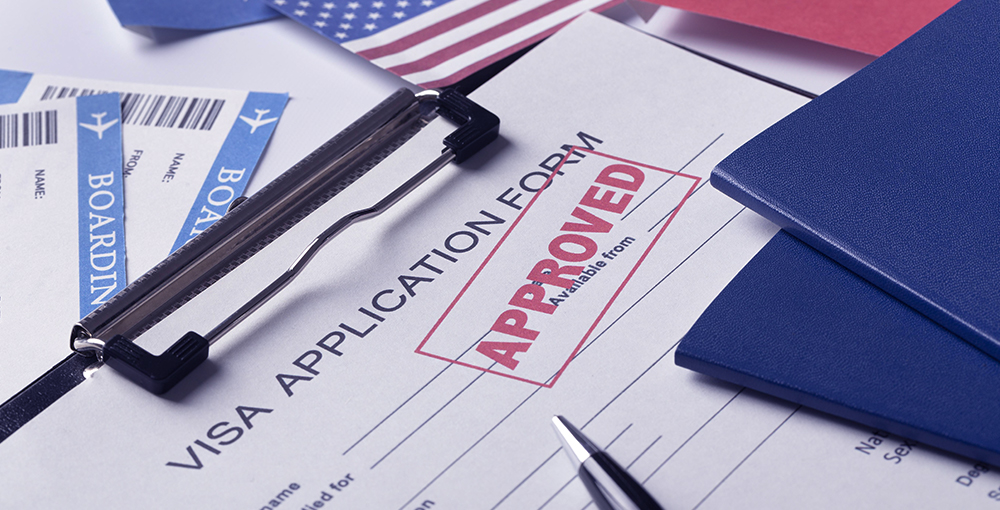
The United States is well known as a nation of opportunity. People immigrate here from all over the world to live out the American Dream, enjoy freedom, and be able to provide for their children's futures. Although the process of becoming a citizen of the United States is lengthy, many immigrants think the rewards are worthwhile. Many immigrants hold the goal of becoming naturalized citizens of the United States in high regard. There are some benefits of being a citizen of the U.S. is the ability to work and live in the country with your family. However, this also carries a number of duties, including the need to pay taxes and participate in the democratic process. As this is one of the most important procedures in immigration process, everyone should be cautious.
Citizenship procedure may vary depending on how you got your Green Card or others procedure. To find out more about your choices for becoming a citizen of the United States, one has got in contact with qualified immigration lawyers. There are several ways to obtain US citizenship. These include citizenship by birth, citizenship by family, citizenship via military service, citizenship by marriage, and citizenship by investment. To become a U.S. citizen, you need a permanent resident card, which you will need to apply through the application process. The process of becoming a U.S. citizen entails a number of steps, as well as forms and applications, as well as processing time.
Requirements To Become U.S. Citizen
The minimum age requirement for applicants is 18.
Knowledge of U.S. history and governance principles.
Have some evidence of lawfully perdurable residents.
Residing in the state for at least five years.
Have resided in the state for three years and married a citizen of the United States.
Physical proof of 2.5 years of presence in the country.
Documentation proving 30 months of residency in the same UICIS area or state.
To apply, applicants must have lived in the state for at least 3 months.
Be an ethical person and competent in English.
Abide by the U.S. Constitutional law.
No criminal record before U.S. law.
Register qualified and willing to perform in the U.S. armed forces.
Difference Ways to Get U.S. Citizenship
Being born as a US citizen is the fastest way to become a U.S. citizen. If parents are legal permanent U.S. citizens, then it’s easy and quickest to get citizenship if he/she was born in the U.S.
Green card Holders if the applicant gets their green card for 3-5 years, can easily apply for U.S. citizenship if he/she has no exceptional circumstances. And besides, the applicant must have lived in the U.S. for 30 months out of 3 to 5 years.
Naturalization through this naturalization procedure, the majority of immigrants become American citizens. Applicant must complete the legal requirements of eligibility as this is the legal process of becoming a citizen. And those requirements ensure the immigration service completes the naturalization process.
Married/Spouse to a U.S. Citizen marriage to a U.S. citizen makes the spouse eligible for lawful permanent residence. But for citizenship spouses must reside physically in the U.S. for at least 3 years and applicants or petitioners must have their marriage certificate.
Having parents who are citizens of the U.S. if one of the child's parents is or was a citizen of the United States at the time of the child's birth, as well as if the child was born outside of the country, the child will automatically become a citizen. If the parents of the child are deceased, then the child's grandparents or legal guardian may file for citizenship if they are lawful citizens of the United States.
Unmarried children (under/over 21)/Married children get citizenship
Citizenship through family preference a U.S. citizen can apply for his/her parent's citizenship if the petitioner is at least 21 years or older and a lawful permanent resident of the great United States. And besides, before sponsoring a family member, petitioners have to prove that he/she is able to support his/her family financially.
Parents can obtain citizenship
A sibling can obtain citizenship
Citizenship through military service if the applicant served U.S. armed forces or military services honorably for at least 1 year, then he/she might be eligible for applying for citizenship U.S. Applicants must fulfill the requirement for becoming a citizen such as be a moral person, haven't been convicted of serious crime that against the law.
During peacetime of military services/armed forces, one’s serves at least 1 year or less than 1 year.
Applicant can get U.S. citizenship after six months if one’s get detached honorably from at least one year of service.
Relict/widower of U.S. citizens if the applicant is married to a U.S. citizen who deceased before the applicant gets a green card, then he/she can get the residence as well as citizenship. A relict or widower of a United State citizen can apply at any time for a green card and can get citizenship through naturalization. If a deceased citizen serves in the U.S. military or armed forces, applicants do not need to hold a green card for a certain period of time or years as well as being physically in the United States.
Who served in the military/ armed forces and passed away.
Win a Green Card in the Diversity Lottery this DV (Diversity) lottery also known as the green card lottery can help the applicant to get a chance to win a green card through the lottery and also get an opportunity to apply for permanent residency in the U.S. This lottery is basically held from October through November every year. Applicants must apply for the lottery before that time and the process of application is gratis. But this lottery has to be administered and the applicant must ensure that the application fulfills the lottery’s minimum criteria.
Citizenship Via Business/Investment Program through this program investors and their spouses and unmarried children can get the chance to apply for permanent residence if they meet the eligibility requirements which will lead to getting citizenship. If the applicant(investor) invests in a commercial enterprise in the U.S. and makes 5-10 full-time jobs for U.S. workers they can apply through the naturalized procedure.
Citizenship through a job offer or employment in a U.S. company applicant can get a green card through a job offer in the United States and the job has to be permanent and full-time, not temporary or seasonal, or intermittent need. A U.S. employer must file an immigrant petition for an applicant after getting an approved labor certificate from the U.S. Department of Law (DOL).
(If you are not meeting any of these requirements consult with a legal professional immigrant lawyer. You can also consult with our Law firm
How to apply for Citizenship in the U.S.
A foreign national or citizen who fulfills the qualifications for naturalization may be given U.S. citizenship through the process of naturalization. There are a few steps in the naturalization process.
Before applying for naturalization for United States citizenship, the applicant must verify the eligibility that is required
For the naturalization process applicants must submit the form n-400, application for naturalization by filling up completely.
After preparing form n-400 submit the form and clear all the payments for fees. (If you are using a credit card for payment, use formg-1450, Authorization for Credit Card and Transaction)
After USCIS provides an appointment notification with the time, date, and place, schedule a biometrics appointment.
After completing all the preliminary processes, you will be notified of an interview scheduled by USCIS.
After completing the interview, you will get a decision for USCIS if your form is granted or continued, or denied.
Then if the application and all the processes are approved by USCIS, you might receive a notice to take the oath of allegiance.
At the naturalization ceremony you must complete the questionnaire on form n-445, Notice of Naturalization Oath Ceremony, and the USCIS officer will review that. After completing that process, you get a naturalization certificate.
And lastly you will have to understand all the rights, benefits, and responsibilities to be a U.S. citizen and you must exercise and respect them.
After completing the naturalization process, the applicant will be able to access the right and benefits of being a U.S. citizen. He/she can hold his/her U.S. passport card as well as have the right to vote. Furthermore, they don’t need to renew their green cards and can easily immigrate to their relatives and family. The Applicant will get all the protection by U.S. law and will get the right and chance to reside in the U.S. permanently.
Recommendation for Trip-Law
Trip law is a U.S. immigration and nationality firm in Florida that also serves the Tampa area as well as the central Florida region. Trip law firm focused and specialized in family-based immigration besides business immigration which is basically in the investor and employment business investing.
Trip law loves to talk about clients' immigration needs and do a complimentary phone call evaluation to address your immigration needs and also provides what legal procedure clients need to immigrate.
Get Free Consultation or, Contact us at +1 863-599-6735.
Disclaimer: Not a licensed attorney in the state of Florida. Licensed attorney in the District of Columbia and the state of Wisconsin only. Practices Immigration Law in all 50 states, territories, and Embassies/Consulates abroad via Federal Jurisdiction.

